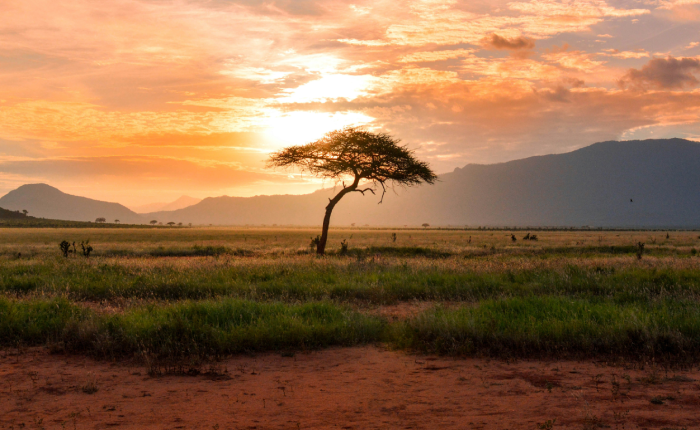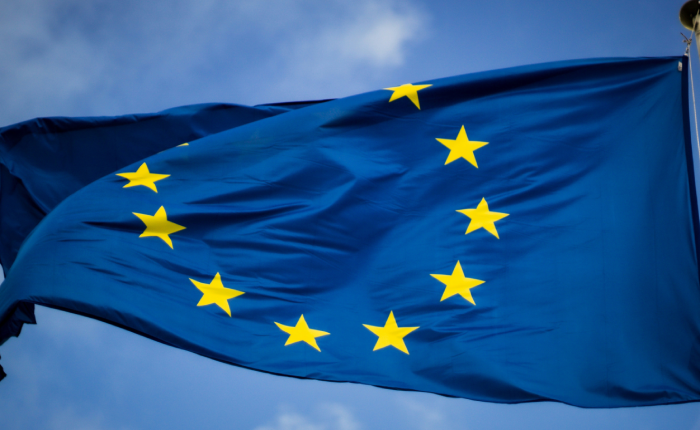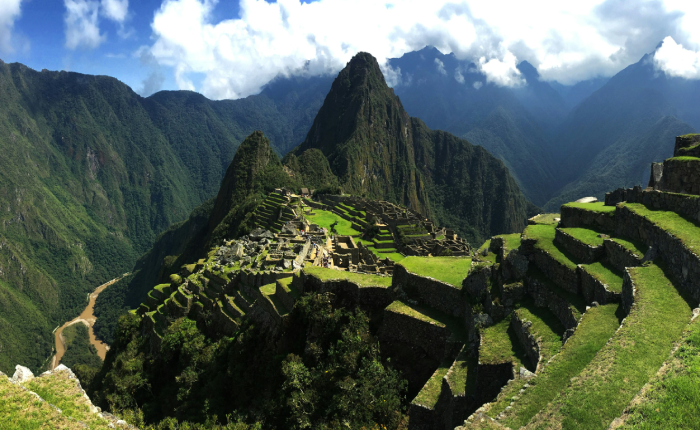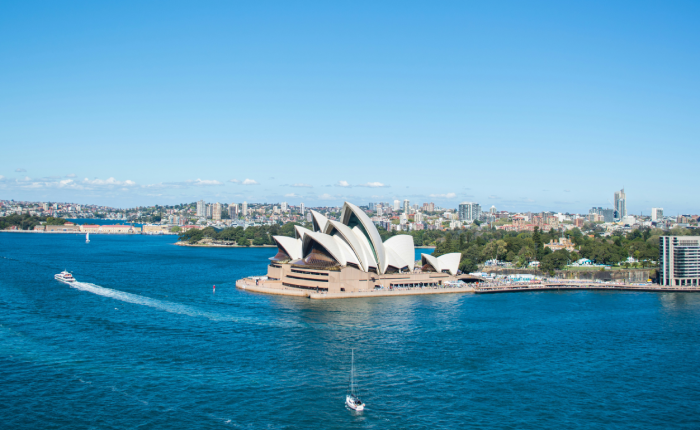Meanings, symbols, and stories behind national flags
A clear, classroom-friendly reference for the colors, icons, and history of world flags. Simple, accurate, and fast.
Browse by continent
Quickly filter to find a country's flag meaning.
All countries
Complete collection of flag meanings, symbolism, and history.
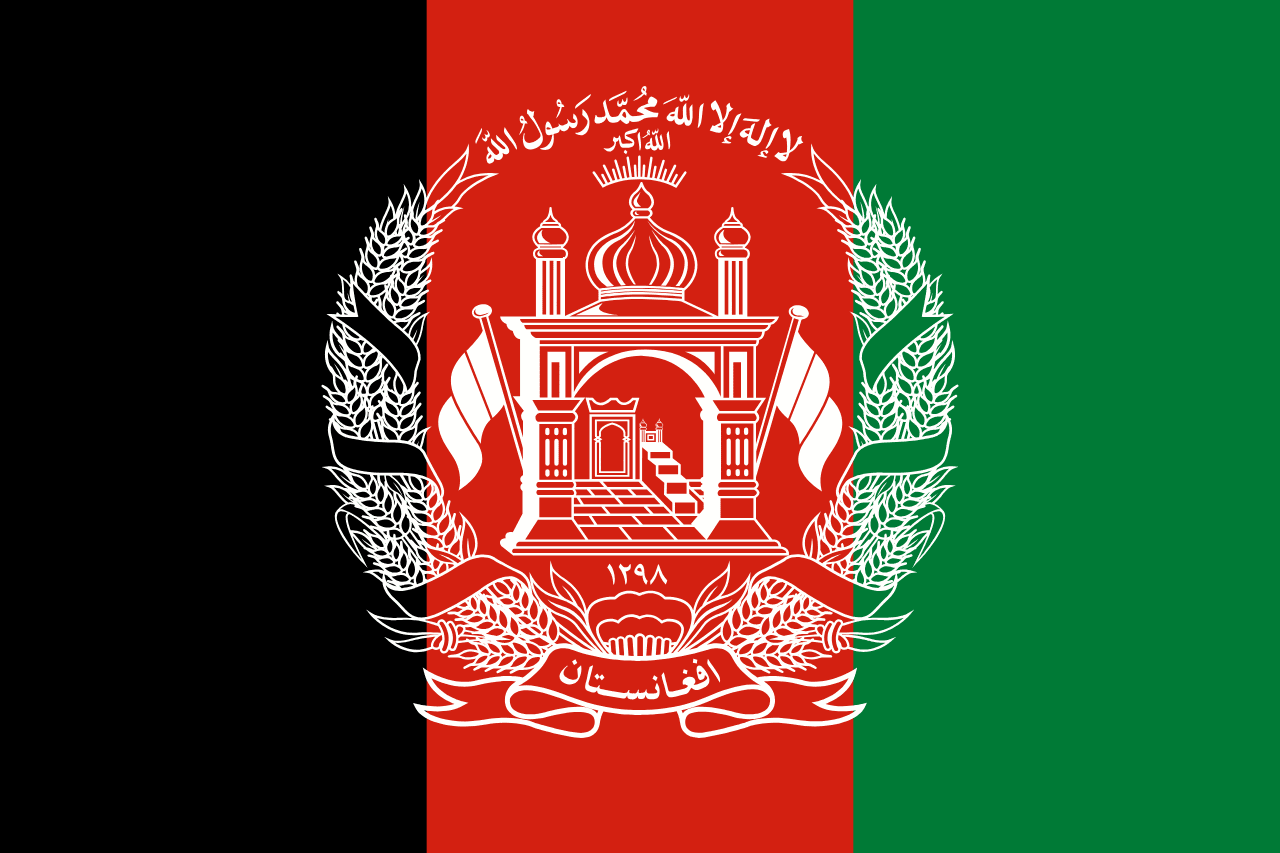
Afghanistan
Few nations have worn their history so visibly upon their flags as Afghanistan. In just over a century, the country has cycled through more banners than any other modern state, each design mirroring the upheavals of power, ideology, and identity that have defined its story. The current flag, a stark white field bearing the Shahada in bold black script, was restored by the Taliban in 2021. To outsiders, its simplicity may appear severe, even austere. Yet within its minimal form lie deep layers of meaning: an assertion of faith, a claim to authority, and a conscious rejection of the ornate tricolors and emblems that preceded it. To understand this flag is to glimpse not only Afghanistan’s turbulent politics, but also the powerful role of religion, symbolism, and history in shaping its national identity.
- Adoption
- Adopted: 2021
- Continent
- Continent: Asia
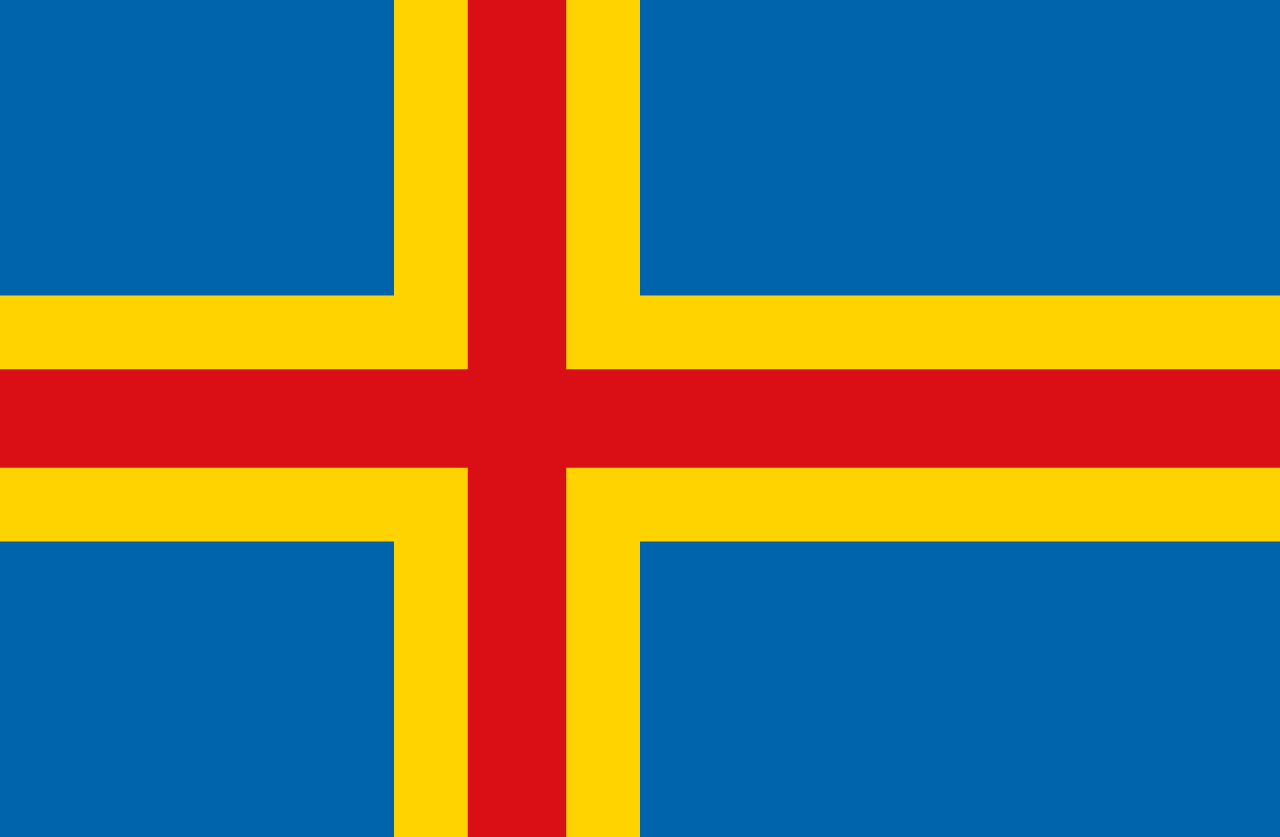
Åland Islands
Tucked between Sweden and Finland, the Åland Islands possess a flag that tells the story of a small community balancing geography, culture, and politics. Adopted in 1954, the banner features a golden-bordered red cross set against a blue field, a striking fusion of Nordic tradition and local identity. Its design nods both to Finland, the sovereign state to which Åland belongs, and to Sweden, with which the islands share language and heritage. More than a decorative emblem, the flag is a quiet declaration of autonomy. It's a reminder that this archipelago, though small in population, carries a distinct voice within the Nordic world. To trace its colors and cross is to uncover a history of compromise, self-government, and the enduring importance of symbols in defining a people’s place.
- Adoption
- Adopted: 1954
- Continent
- Continent: Europe
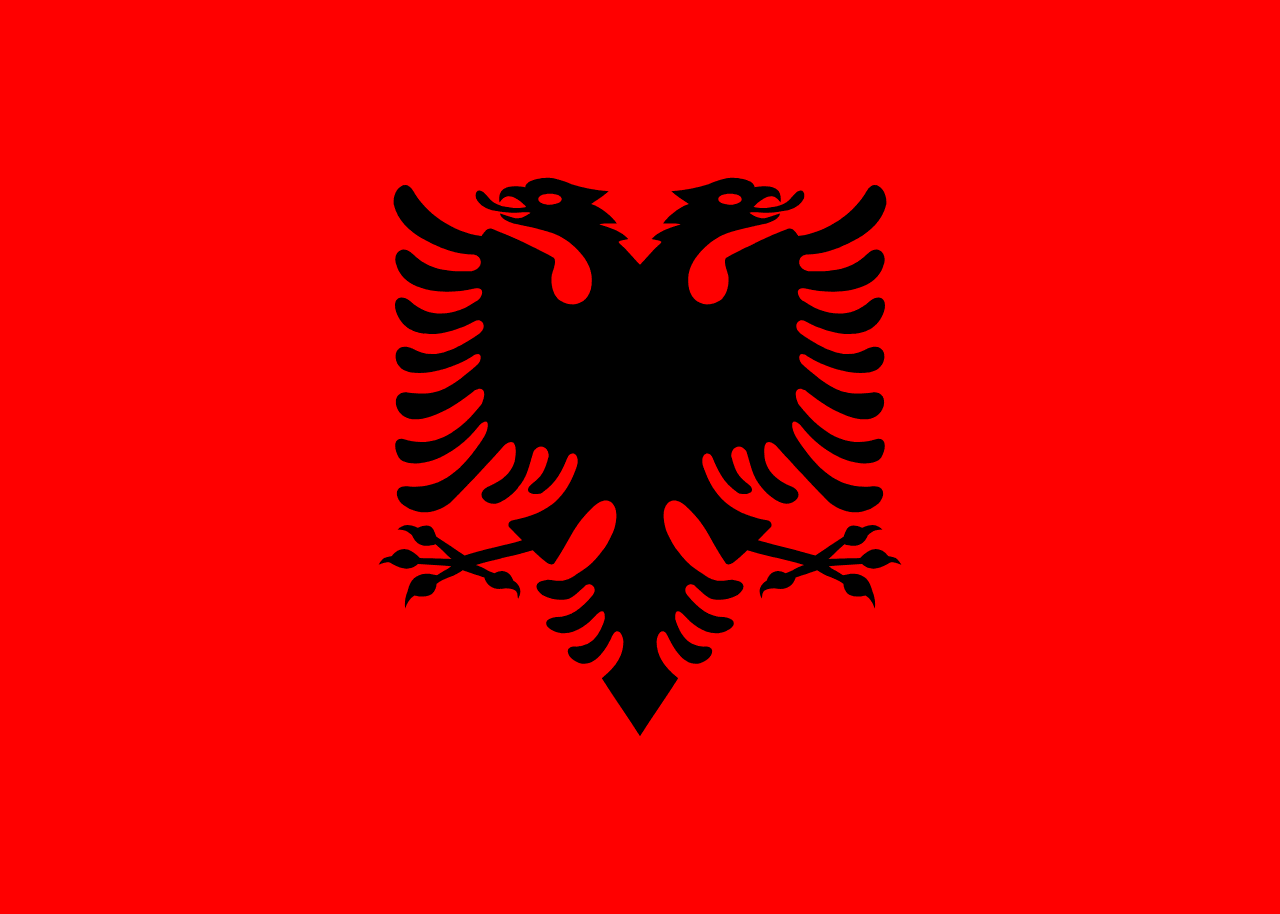
Albania
A red field with a black two-headed eagle, one of Europe's oldest heraldic symbols representing Albanian independence, strength, and the legacy of medieval hero Skanderbeg.
- Adoption
- Adopted: 1992
- Continent
- Continent: Europe
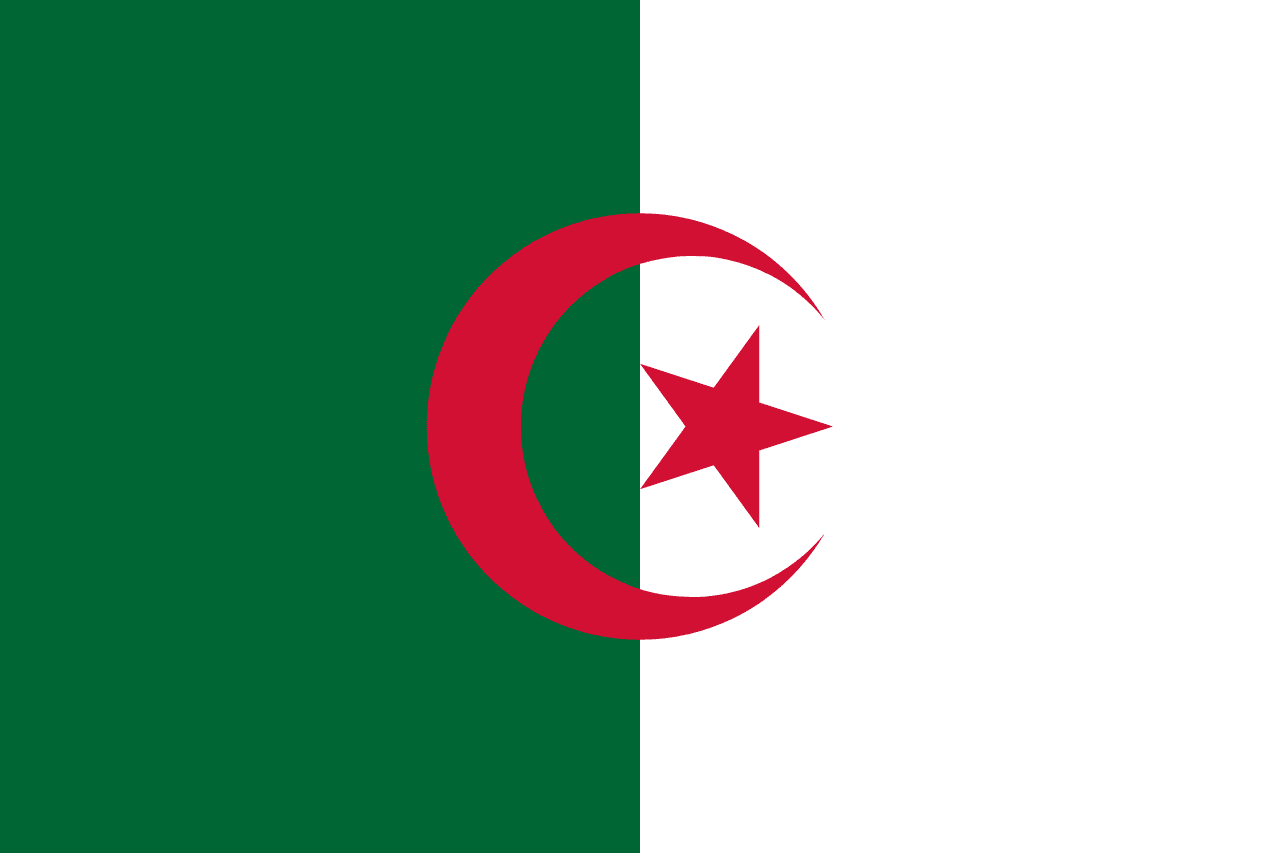
Algeria
Two equal vertical stripes of green and white with a red crescent and five-pointed star centered on the dividing line, representing Islam, peace, and the blood of martyrs who died for independence.
- Adoption
- Adopted: 1962
- Continent
- Continent: Africa
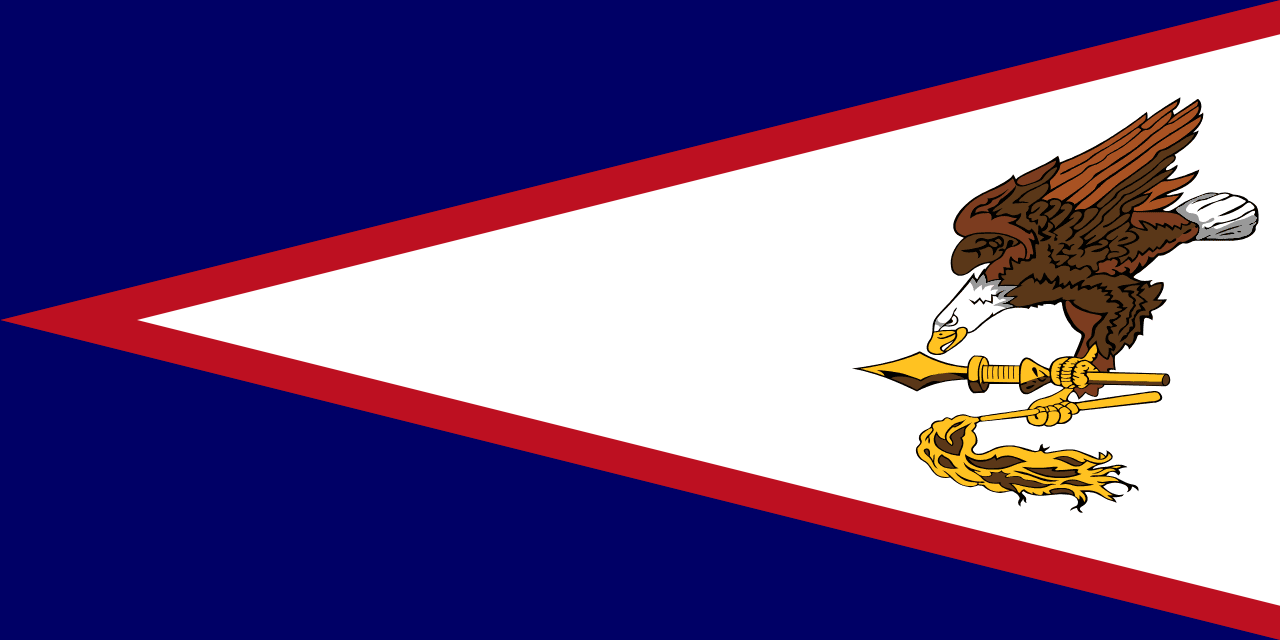
American Samoa
Red, white, and blue field featuring a bald eagle holding traditional Samoan symbols, representing the blend of American and Polynesian cultures.
- Adoption
- Adopted: 1960
- Continent
- Continent: Oceania
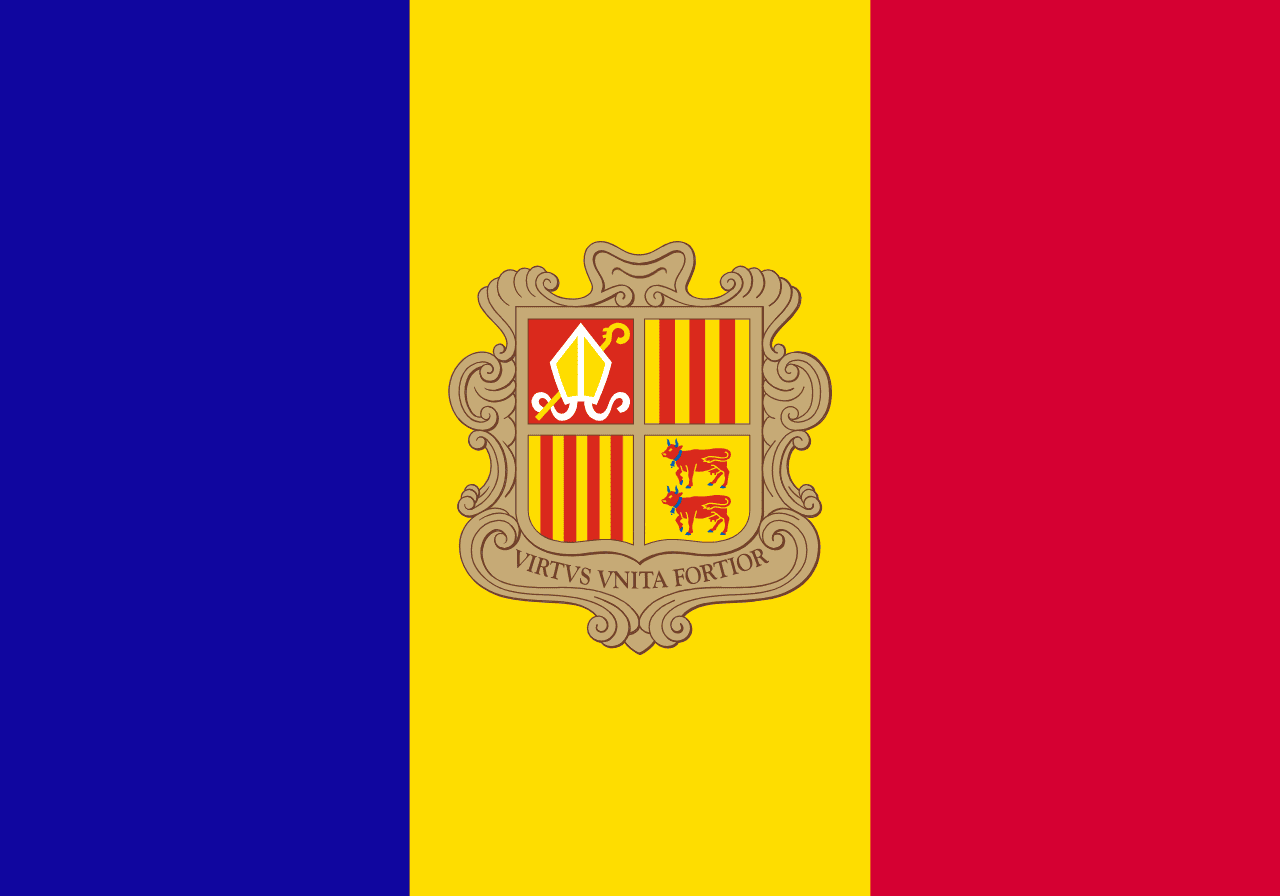
Andorra
Three vertical stripes of blue, yellow, and red with the coat of arms centered on the yellow stripe, representing France and Spain (the co-princes), the principality itself, and the unique dual sovereignty arrangement that has governed this small Pyrenean state for over 700 years.
- Adoption
- Adopted: 1866
- Continent
- Continent: Europe

Angola
Two horizontal stripes of red and black with a yellow emblem in the center featuring a machete, star, and half gear wheel, representing the blood shed for independence, the African heritage, and the tools of liberation - agricultural work, socialism, and industrial progress.
- Adoption
- Adopted: 1975
- Continent
- Continent: Africa

Argentina
Three horizontal stripes of light blue, white, and light blue with a golden sun (Sol de Mayo) in the center, created by Manuel Belgrano during the independence wars and representing the clear skies after the storm of Spanish rule, the snow-capped Andes mountains, and the May Revolution that began Argentina's path to freedom.
- Adoption
- Adopted: 1812
- Continent
- Continent: South America
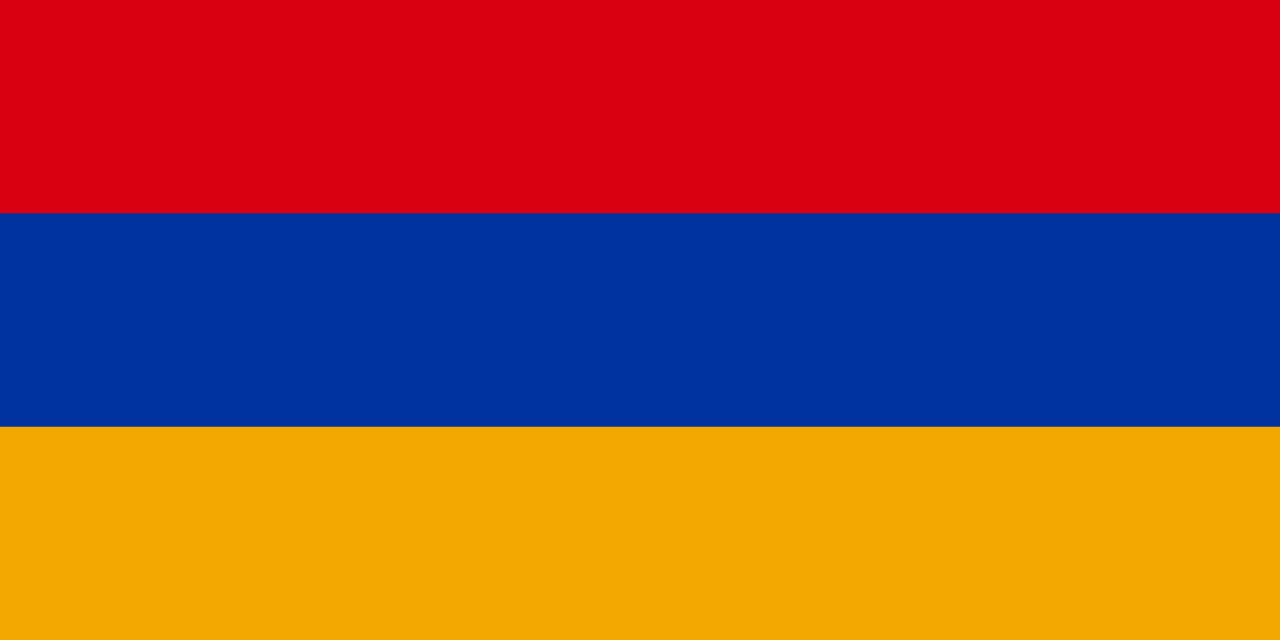
Armenia
Three horizontal stripes of red, blue, and orange (apricot), representing the blood shed for independence, the Armenian sky and hope for peace, and the fertile land and hardworking nature of the Armenian people, based on the flag of the First Republic of Armenia (1918-1920).
- Adoption
- Adopted: 1991
- Continent
- Continent: Asia

Australia
A blue ensign featuring the Union Jack in the canton and the Southern Cross constellation on the fly, with a large Commonwealth Star beneath the Union Jack, representing Australia's British heritage, its location in the Southern Hemisphere, and the federation of six colonies into one nation.
- Adoption
- Adopted: 1901
- Continent
- Continent: Oceania

Austria
Three horizontal stripes of red, white, and red, representing one of the world's oldest national flag designs, allegedly inspired by Duke Leopold V's blood-stained white surcoat after the Battle of Acre in 1191, and symbolizing the courage, honesty, and strength of the Austrian people.
- Adoption
- Adopted: 1945
- Continent
- Continent: Europe
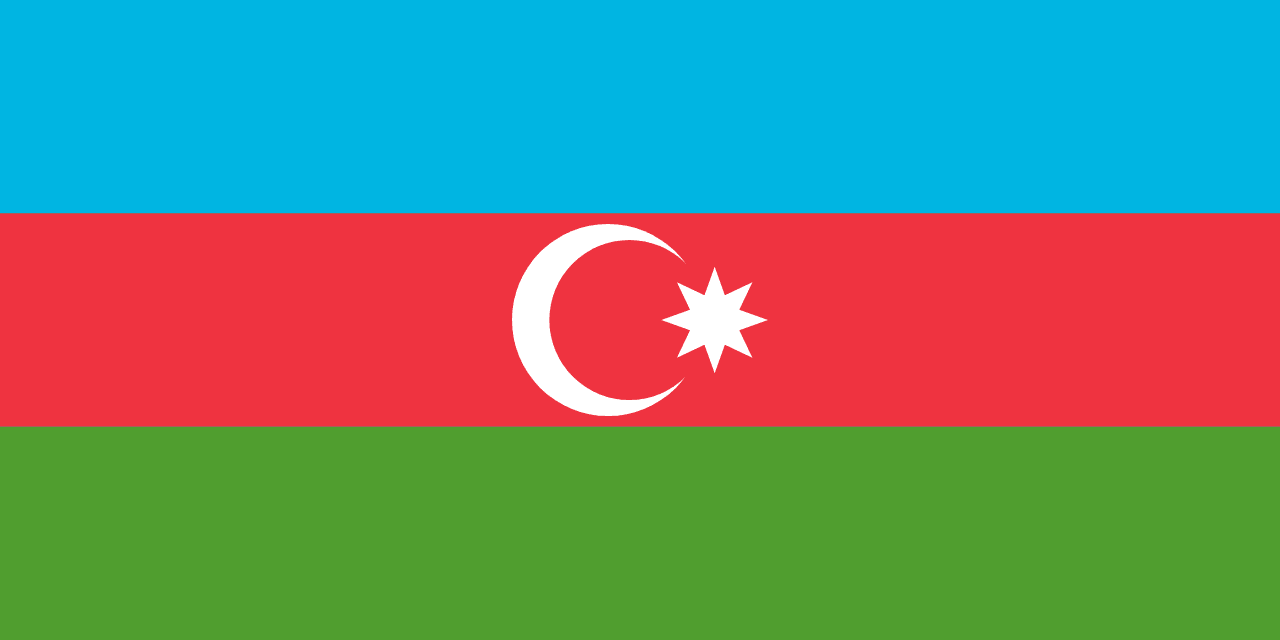
Azerbaijan
Three horizontal stripes of blue, red, and green with a white crescent and eight-pointed star in the center, representing Turkic heritage, modernity and progress, Islamic tradition, and the eight branches of the Turkic peoples, designed during the brief independence period of 1918-1920.
- Adoption
- Adopted: 1991
- Continent
- Continent: Asia
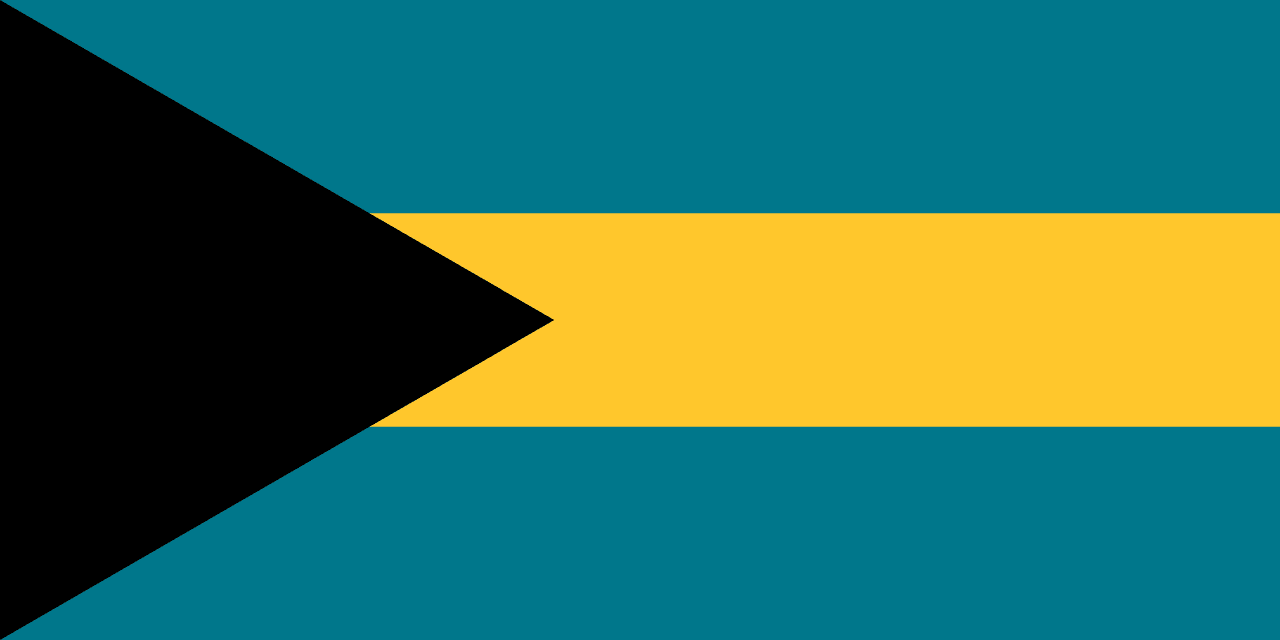
Bahamas
Three horizontal stripes of aquamarine, gold, and aquamarine with a black equilateral triangle at the hoist, representing the waters surrounding the islands, the golden beaches and sunshine, and the strength and determination of the Bahamian people united in their love for their homeland.
- Adoption
- Adopted: 1973
- Continent
- Continent: North America
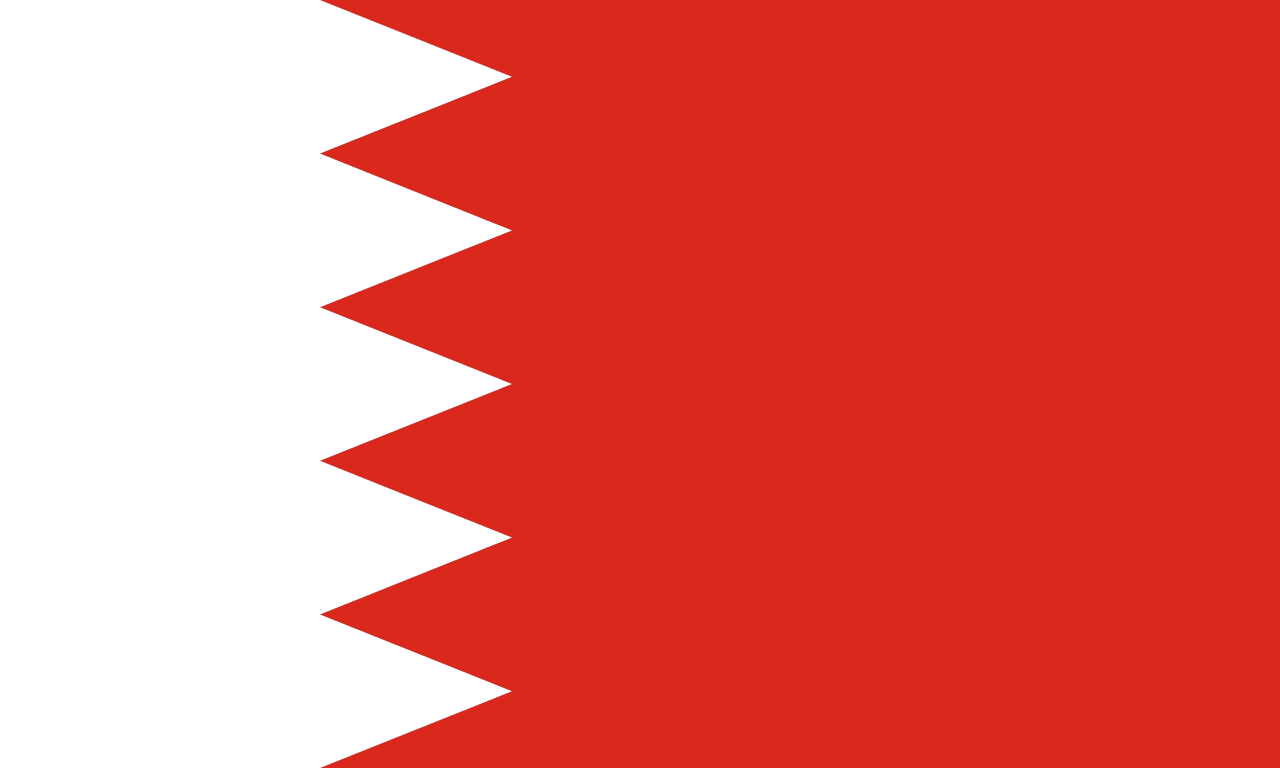
Bahrain
A white band on the hoist side separated from a red field by a serrated line with five triangular points, representing peace and the five pillars of Islam, while the red represents the Kharijite sect of Islam that historically dominated the region.
- Adoption
- Adopted: 2002
- Continent
- Continent: Asia
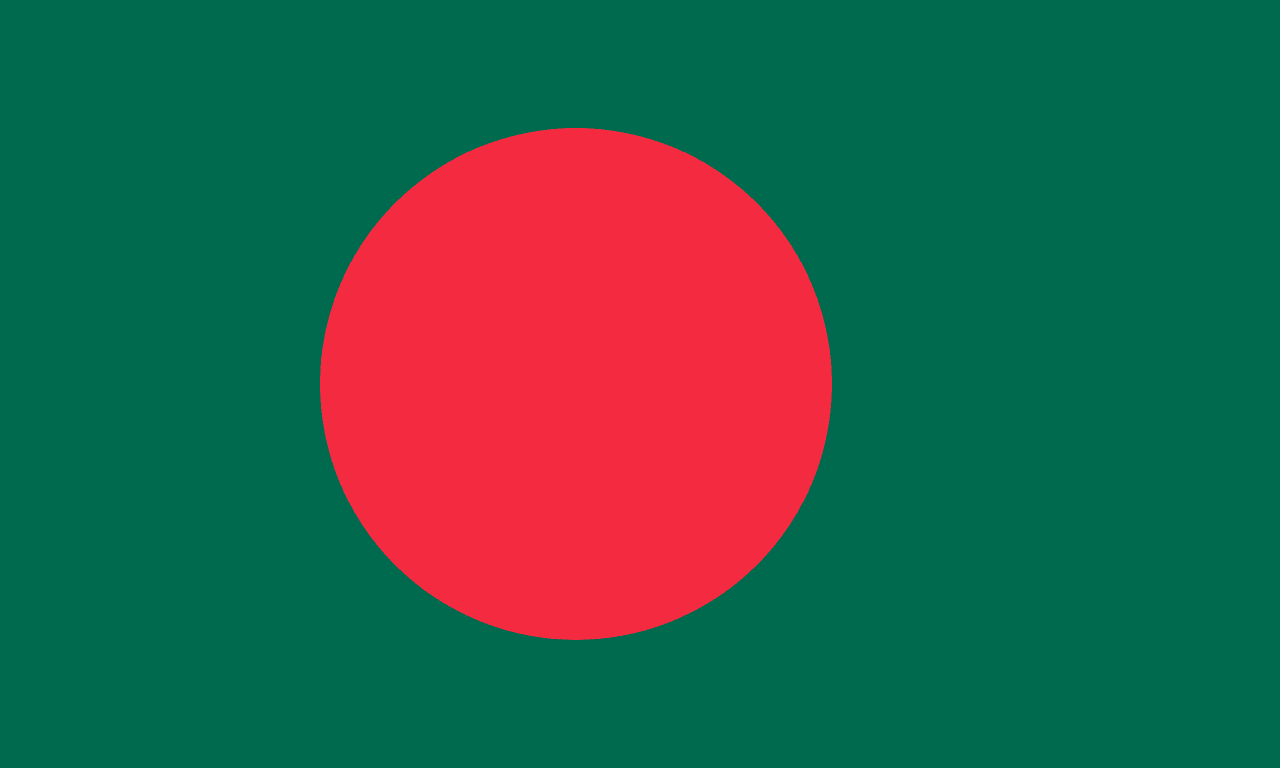
Bangladesh
A dark green field with a red circle positioned slightly toward the hoist side, representing the lush Bengali landscape and the sun rising over Bengal, as well as the blood shed during the Liberation War of 1971 and the new dawn of independence.
- Adoption
- Adopted: 1972
- Continent
- Continent: Asia
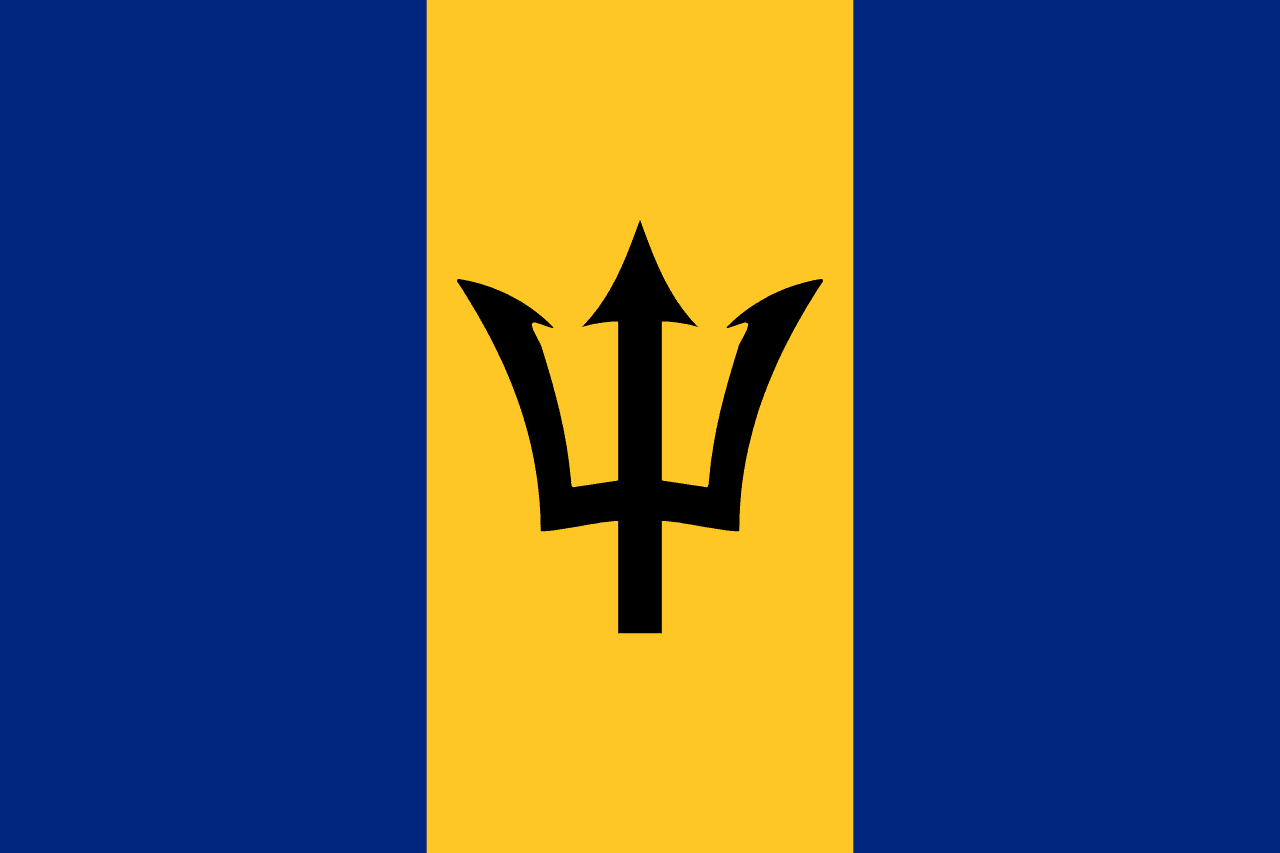
Barbados
Three vertical stripes of ultramarine blue, gold, and ultramarine blue with a black trident head (broken from its staff) in the center golden stripe, representing the sea surrounding the island, the golden sands of its beaches, and the break from colonial dependence on Neptune's trident symbol.
- Adoption
- Adopted: 1966
- Continent
- Continent: North America
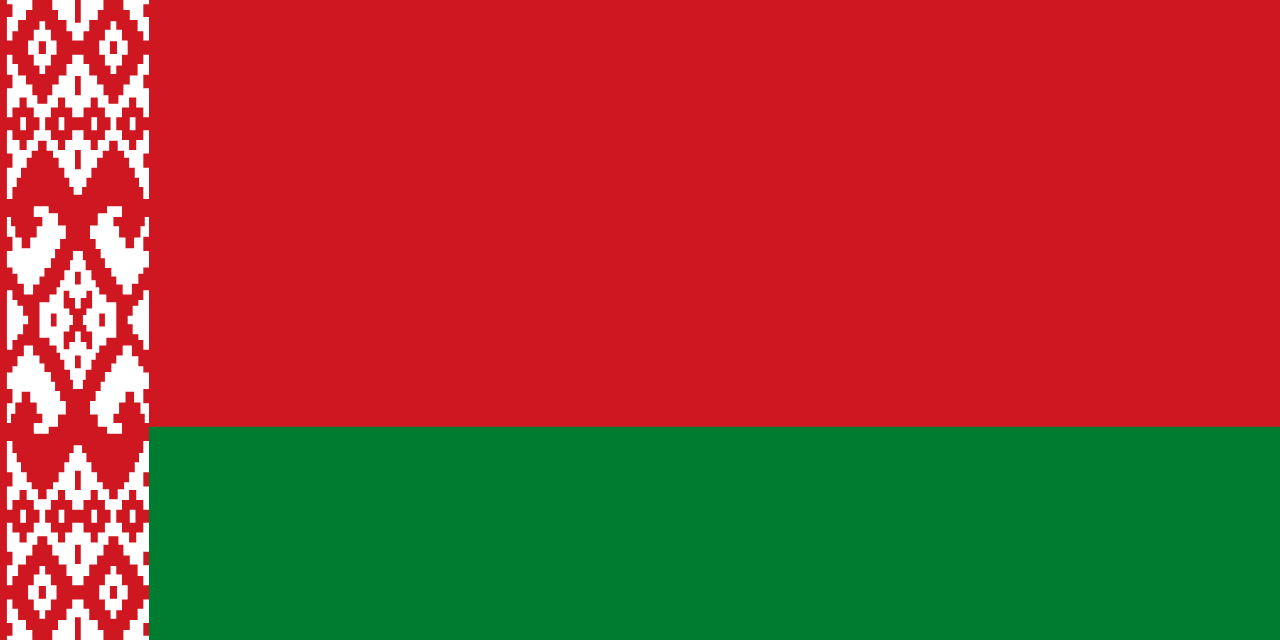
Belarus
A red horizontal stripe over a green stripe with a traditional red and white ornamental pattern on the hoist side, representing the historical heritage of Belarus, its forests and agriculture, and the decorative folk art traditions that define Belarusian cultural identity.
- Adoption
- Adopted: 1995
- Continent
- Continent: Europe

Belgium
Three vertical stripes of black, yellow, and red derived from the coat of arms of the Duchy of Brabant, adopted during Belgium's independence revolution and representing the nation's determination, generosity, and sacrifice.
- Adoption
- Adopted: 1831
- Continent
- Continent: Europe
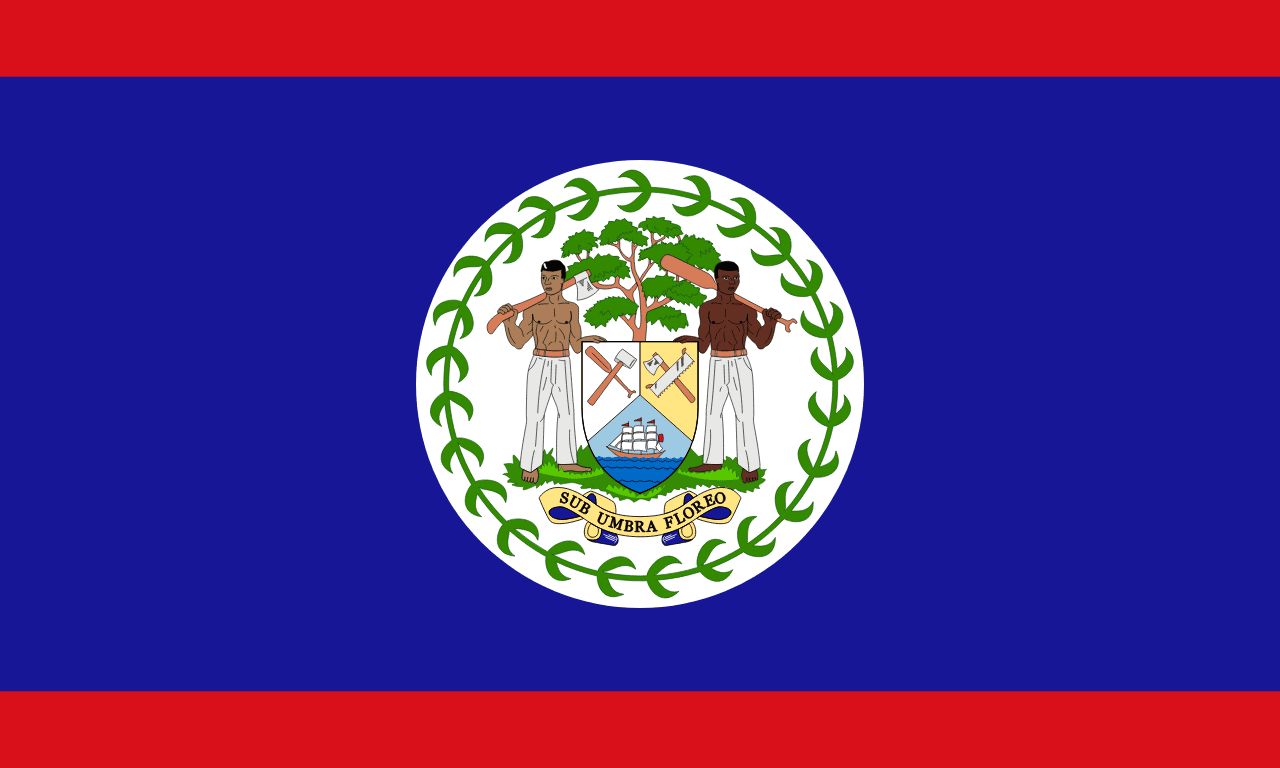
Belize
A blue field with red stripes along the top and bottom edges and the national coat of arms in a white circle at the center, representing the ruling People's United Party, the opposition United Democratic Party, and the peace that unites them, making it the only national flag to feature human figures.
- Adoption
- Adopted: 1981
- Continent
- Continent: North America
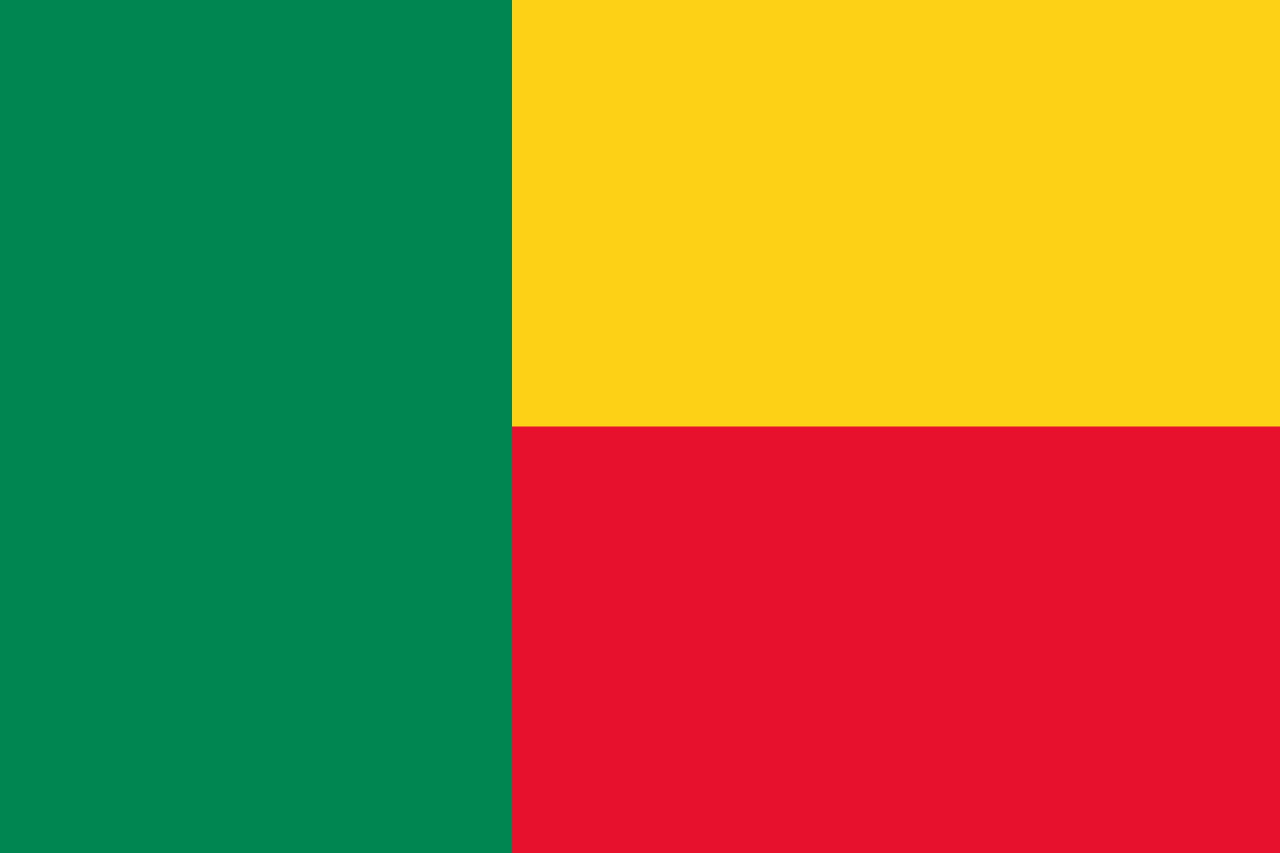
Benin
A vertical green stripe on the hoist side with horizontal yellow and red stripes on the fly side, representing the forests and hope of the nation, the savannah and mineral wealth, and the courage and blood of the ancestors, using the Pan-African colors that symbolize African unity and liberation.
- Adoption
- Adopted: 1990
- Continent
- Continent: Africa
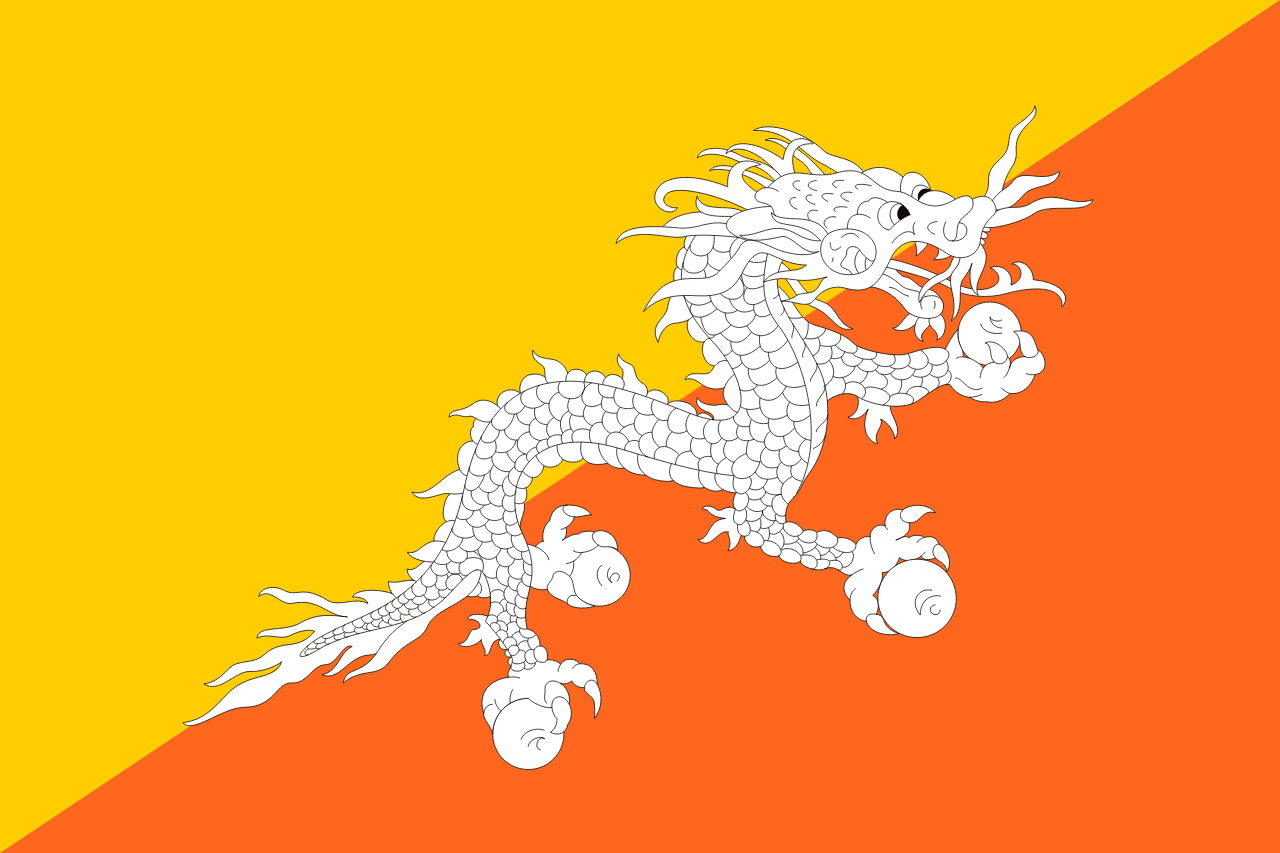
Bhutan
Divided diagonally with orange in the upper triangle and yellow in the lower triangle, featuring a white dragon (Druk) in the center holding jewels in its claws, representing the spiritual and temporal power of Bhutan and the Thunder Dragon that gives the country its name 'Land of the Thunder Dragon.'
- Adoption
- Adopted: 1969
- Continent
- Continent: Asia
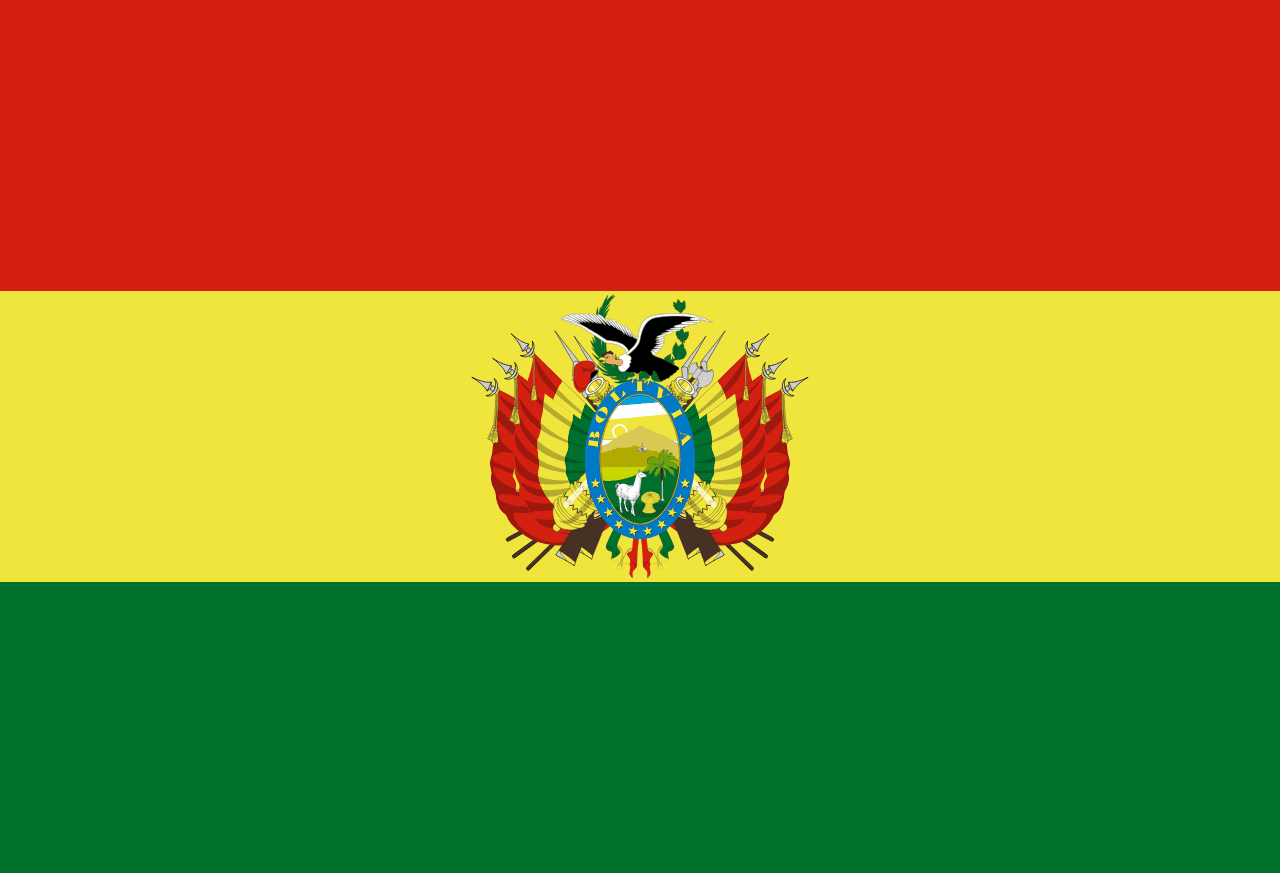
Bolivia
Three horizontal stripes of red, yellow, and blue, with the national coat of arms centered on the yellow stripe in the state flag, representing the valor of the army, the mineral wealth of the nation, and the sky and sea that Bolivia once possessed before losing its coastline to Chile.
- Adoption
- Adopted: 1851
- Continent
- Continent: South America
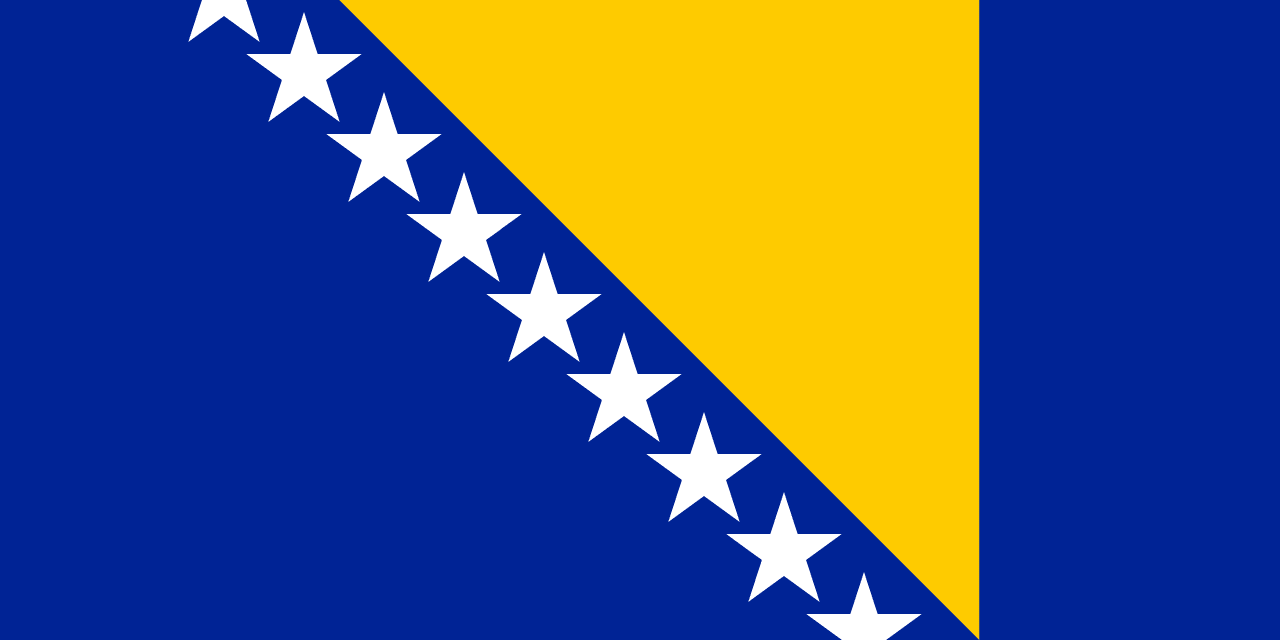
Bosnia and Herzegovina
A blue field with a yellow triangle along the hoist and a line of white stars along the triangle's hypotenuse, designed to be ethnically neutral and represent the country's European aspirations while avoiding symbols associated with any particular ethnic group.
- Adoption
- Adopted: 1998
- Continent
- Continent: Europe
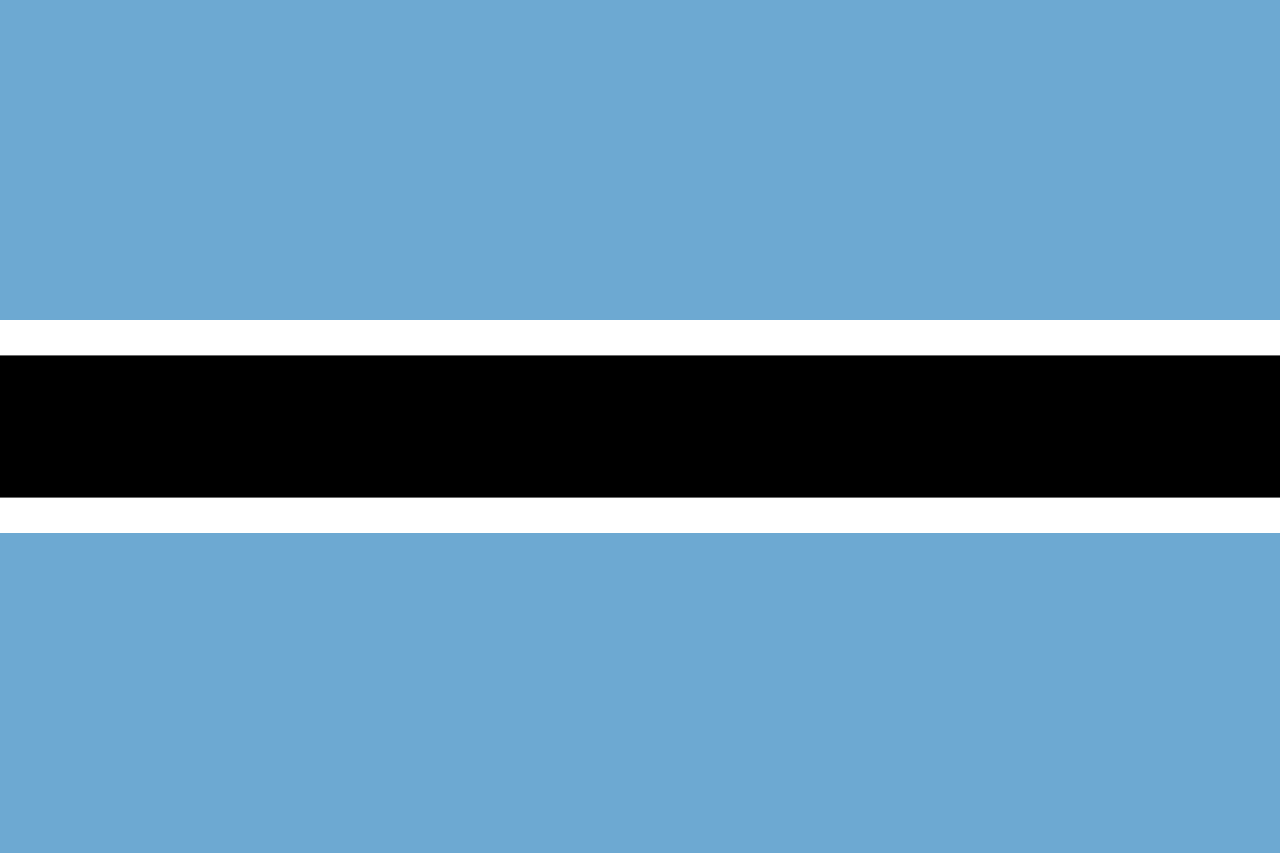
Botswana
Light blue field with a central black horizontal stripe bordered by thin white stripes, representing the life-giving rains, racial harmony, and the zebra that symbolizes the coexistence of black and white people in peace.
- Adoption
- Adopted: 1966
- Continent
- Continent: Africa

Brazil
Green field with yellow diamond containing a blue celestial globe with the motto 'Ordem e Progresso'.
- Adoption
- Adopted: 1992
- Continent
- Continent: South America
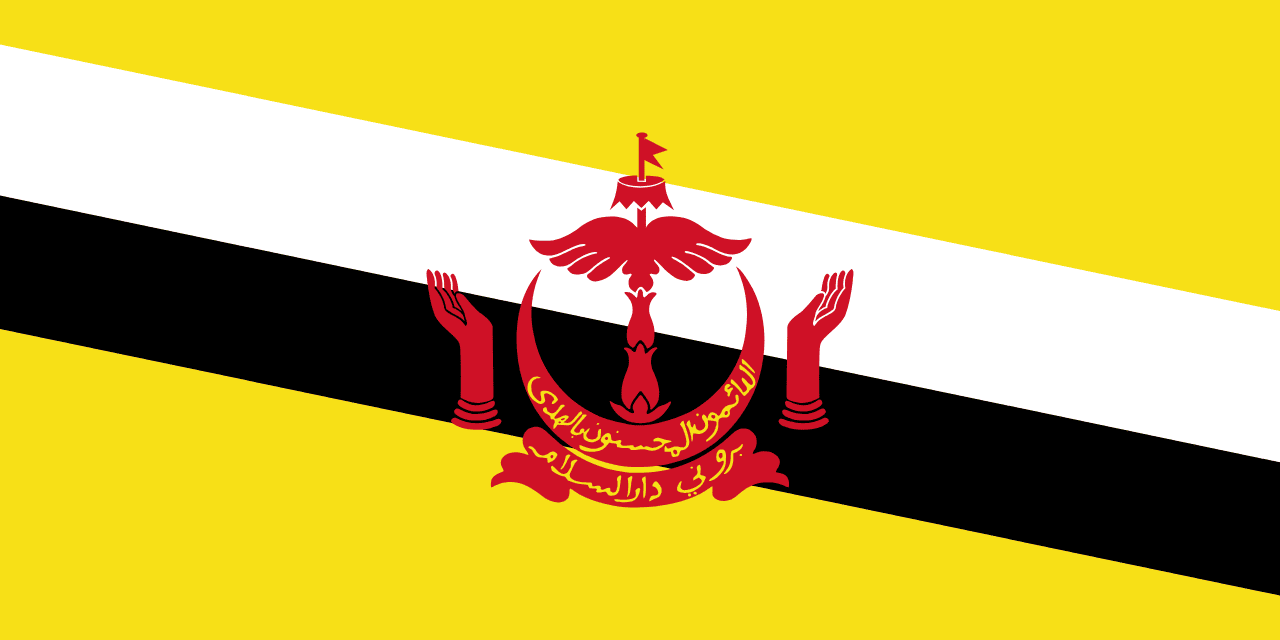
Brunei
A yellow field with two diagonal stripes of white and black, featuring the national coat of arms in red in the center, representing the Sultan's sovereignty, the state's prosperity, and the nation's commitment to peace and Islamic values.
- Adoption
- Adopted: 1959
- Continent
- Continent: Asia
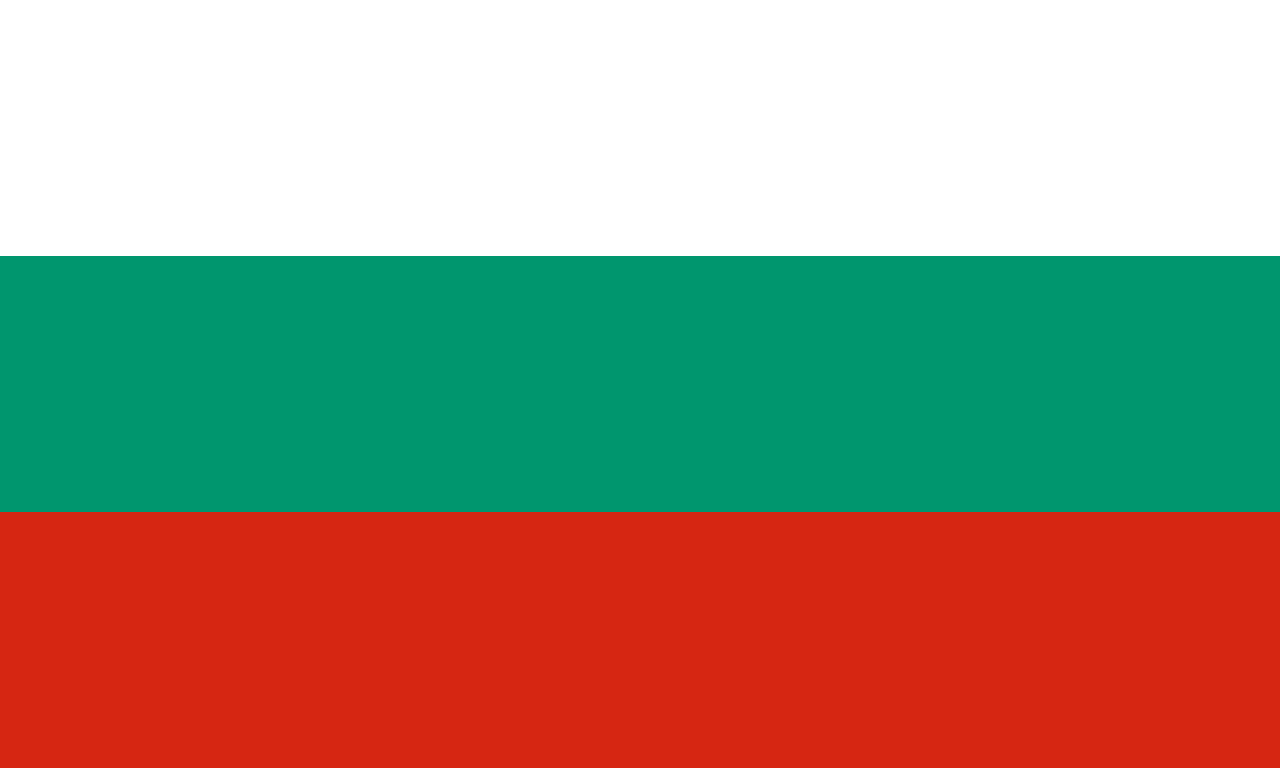
Bulgaria
Three horizontal stripes of white, green, and red representing peace and freedom, the agricultural wealth of the nation, and the courage and blood of Bulgarian patriots who fought for independence.
- Adoption
- Adopted: 1991
- Continent
- Continent: Europe
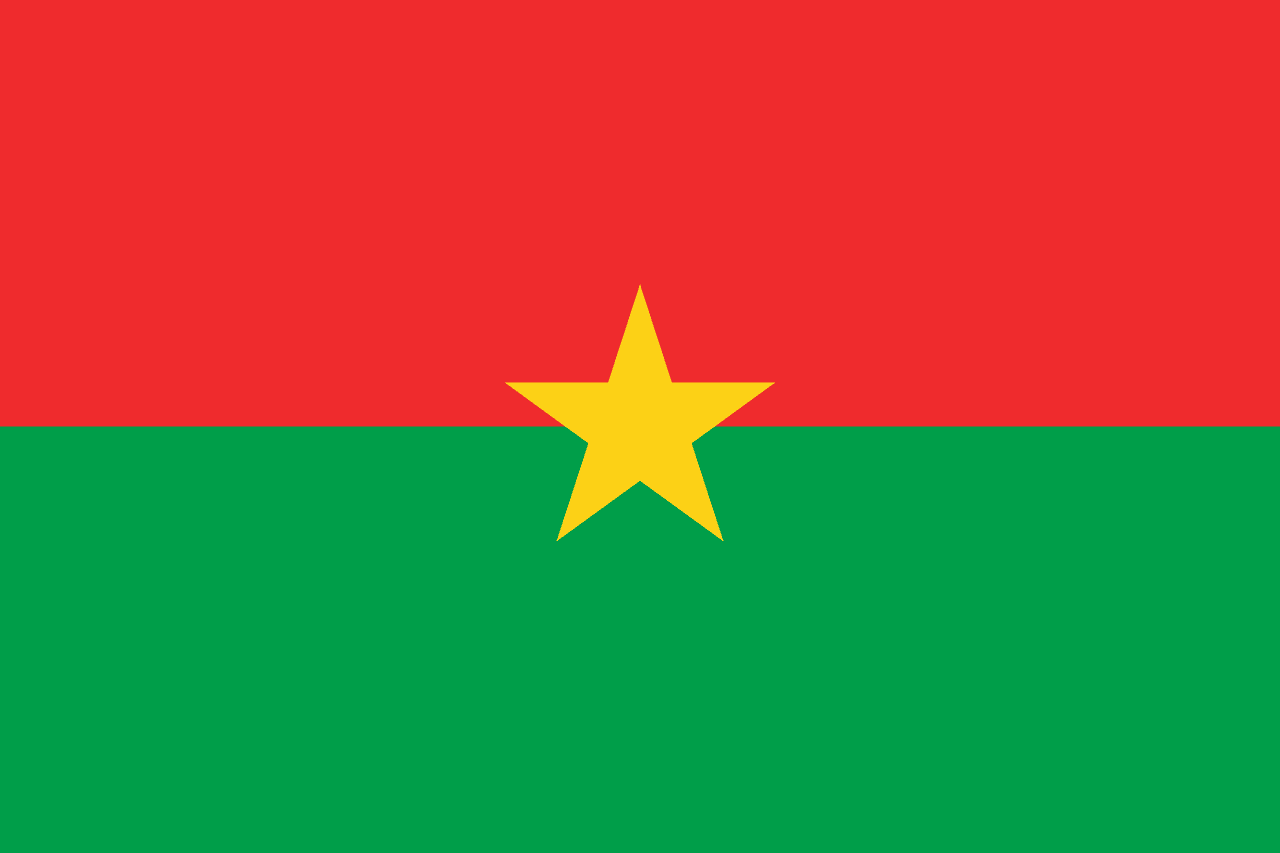
Burkina Faso
Two horizontal bands of red and green with a yellow five-pointed star in the center, representing the revolutionary ideals, agricultural wealth, and mineral resources of the nation, adopted when the country changed its name from Upper Volta.
- Adoption
- Adopted: 1984
- Continent
- Continent: Africa
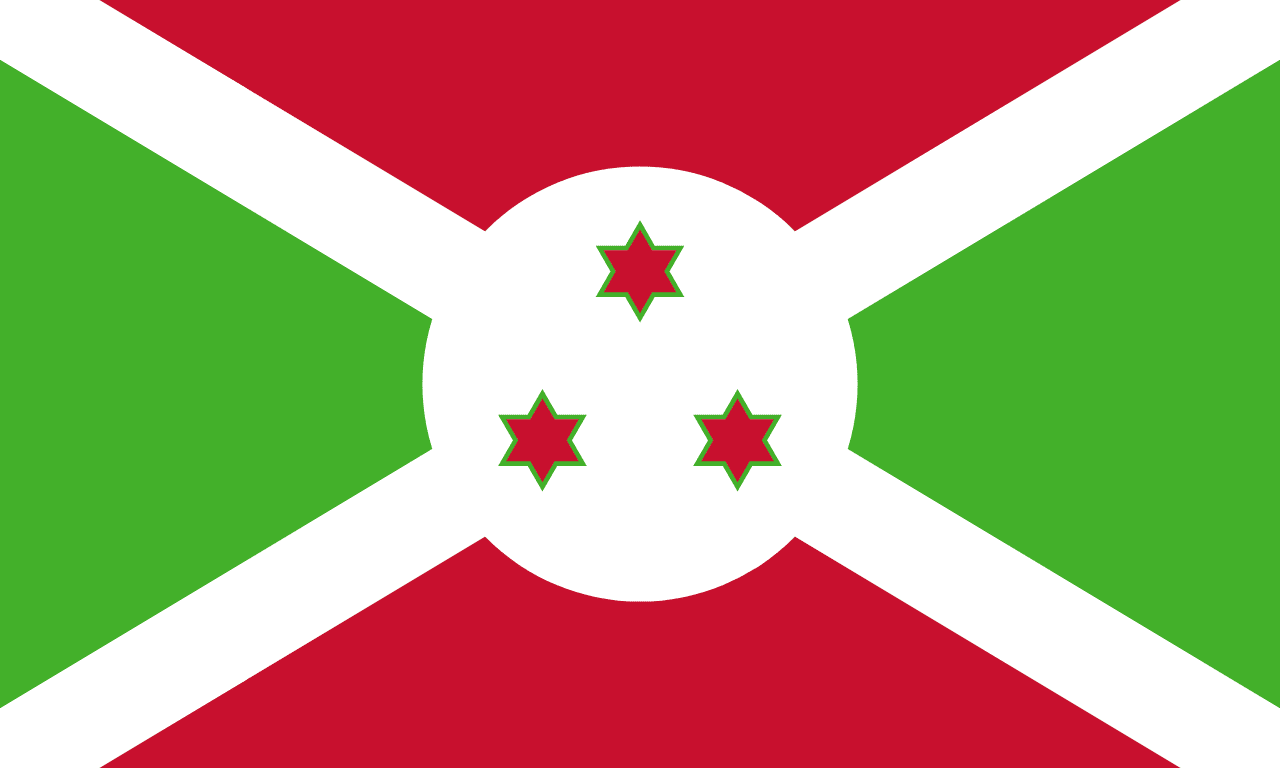
Burundi
A white diagonal cross dividing the flag into alternating red and green triangles, with three red stars outlined in green in the center circle, representing unity, work, progress, and the three ethnic groups of Burundi.
- Adoption
- Adopted: 1967
- Continent
- Continent: Africa
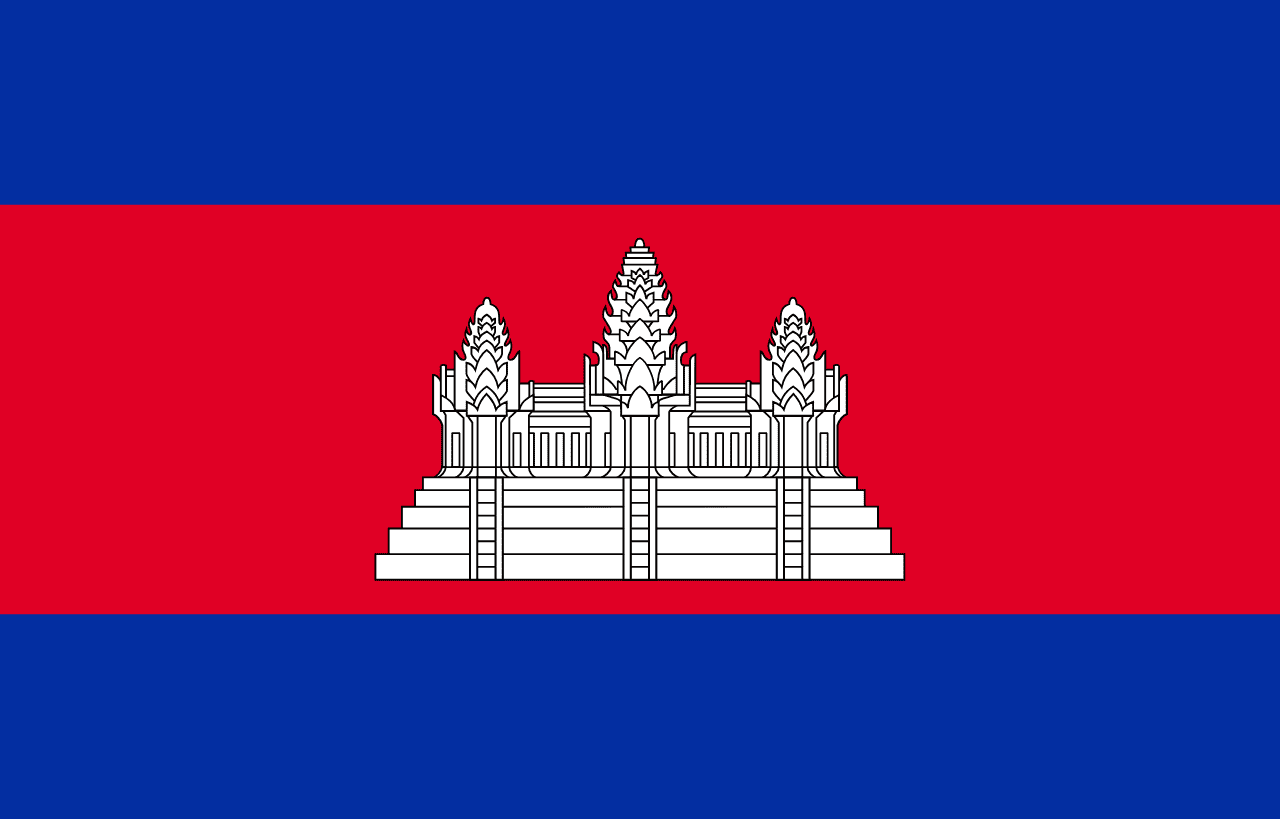
Cambodia
Three horizontal stripes of blue, red (double width), and blue with a white depiction of Angkor Wat temple in the center, representing the nation, the king, and the sacred temple that symbolizes Cambodia's glorious past and cultural heritage.
- Adoption
- Adopted: 1993
- Continent
- Continent: Asia
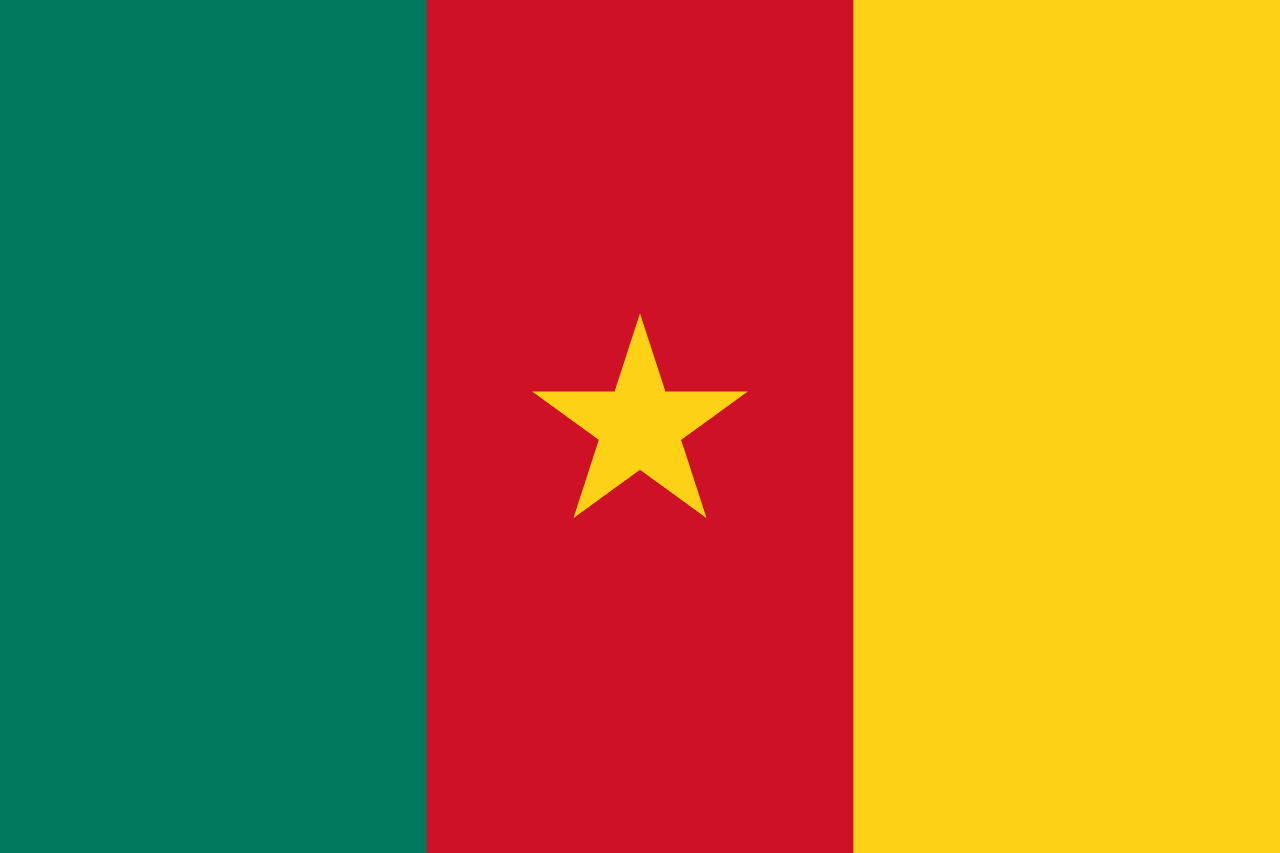
Cameroon
Three vertical stripes of green, red, and yellow with a yellow five-pointed star in the center of the red stripe, representing the forests, unity, the sun and savanna, and the unity of the diverse peoples of Cameroon.
- Adoption
- Adopted: 1975
- Continent
- Continent: Africa

Canada
The Maple Leaf - a red stylized maple leaf centered on a white square between two red vertical bands, representing Canada's natural heritage and unity from coast to coast.
- Adoption
- Adopted: 1965
- Continent
- Continent: North America
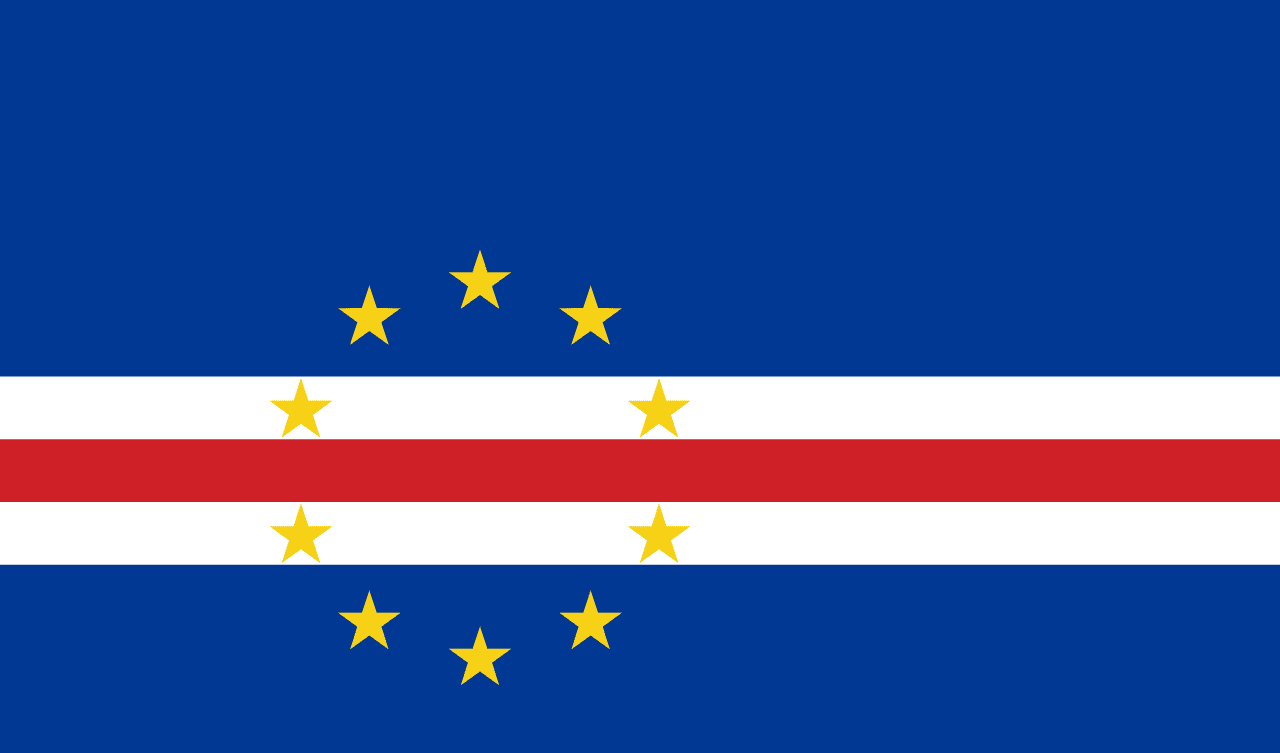
Cape Verde
A blue field with two white stripes, one red stripe, and ten yellow five-pointed stars arranged in a circle, representing the Atlantic Ocean, peace, the struggle for independence, and the ten islands of this West African archipelago.
- Adoption
- Adopted: 1992
- Continent
- Continent: Africa
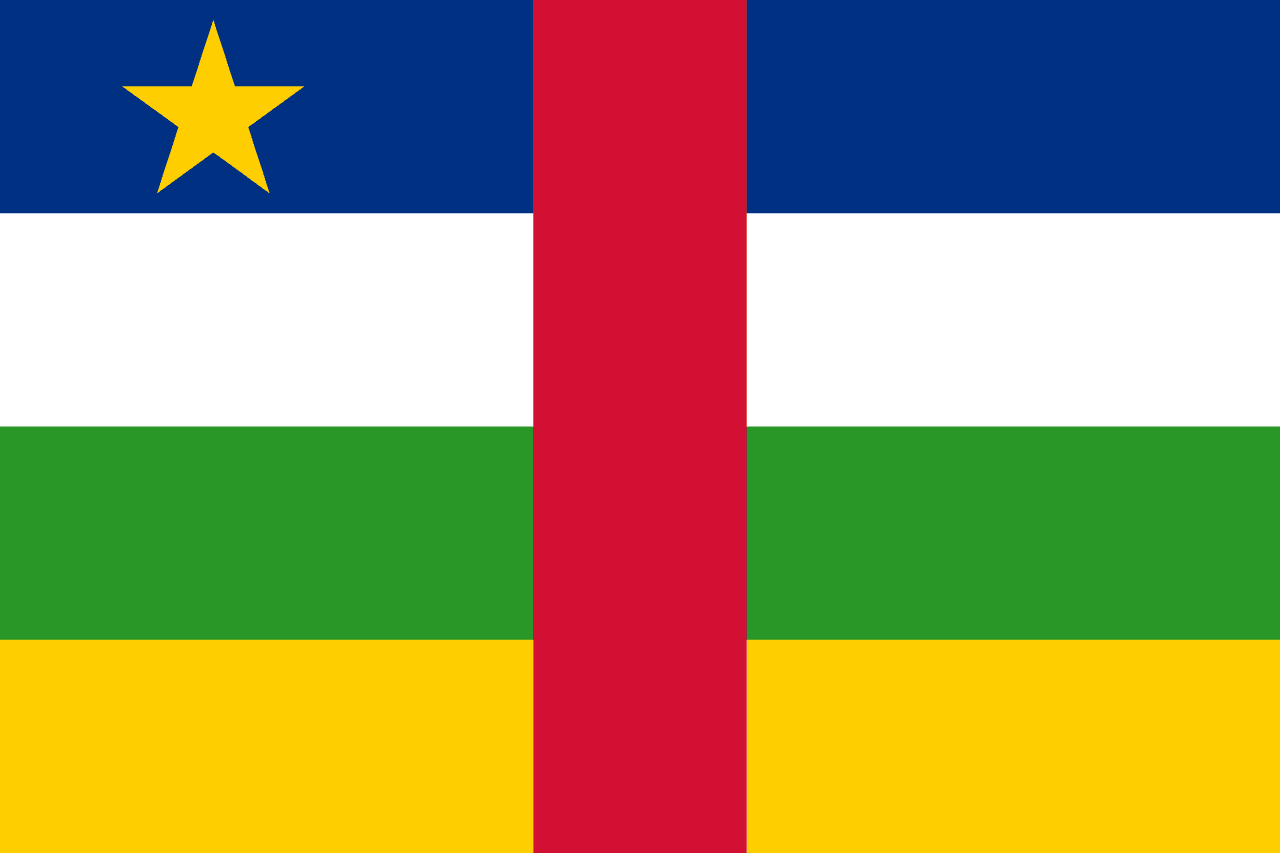
Central African Republic
Four horizontal stripes of blue, white, green, and yellow with a vertical red stripe through the center and a yellow five-pointed star in the upper hoist, combining Pan-African and French colors to represent unity and independence.
- Adoption
- Adopted: 1958
- Continent
- Continent: Africa
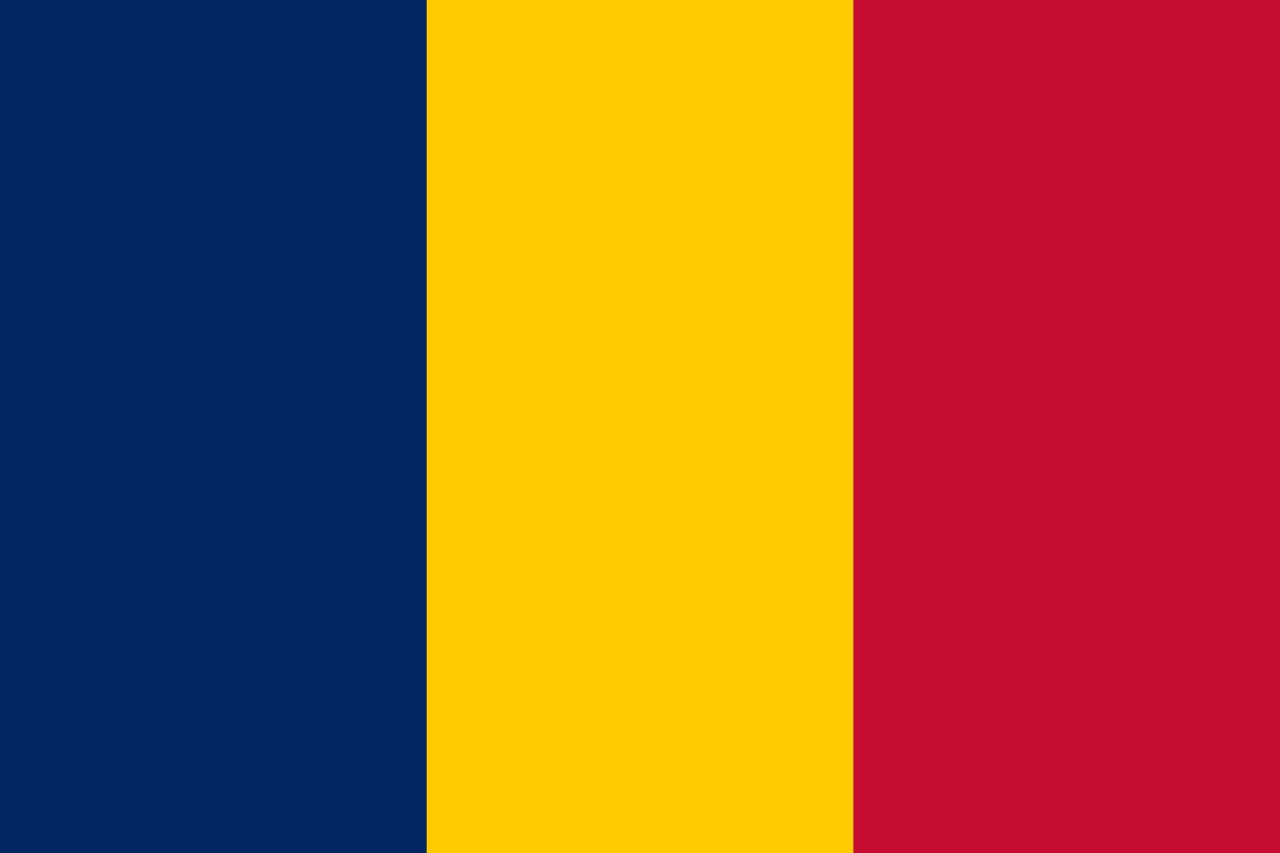
Chad
Three vertical stripes of blue, yellow, and red representing Chad's geographic diversity from the waters and sky in the north to the desert and savannas, adopted on the eve of independence from France.
- Adoption
- Adopted: 1959
- Continent
- Continent: Africa

Chile
Two horizontal stripes of white over red with a blue square in the upper hoist containing a white five-pointed star, representing the sky and Pacific Ocean, the snow-capped Andes Mountains, the blood of patriots, and the guiding star of progress.
- Adoption
- Adopted: 1817
- Continent
- Continent: South America
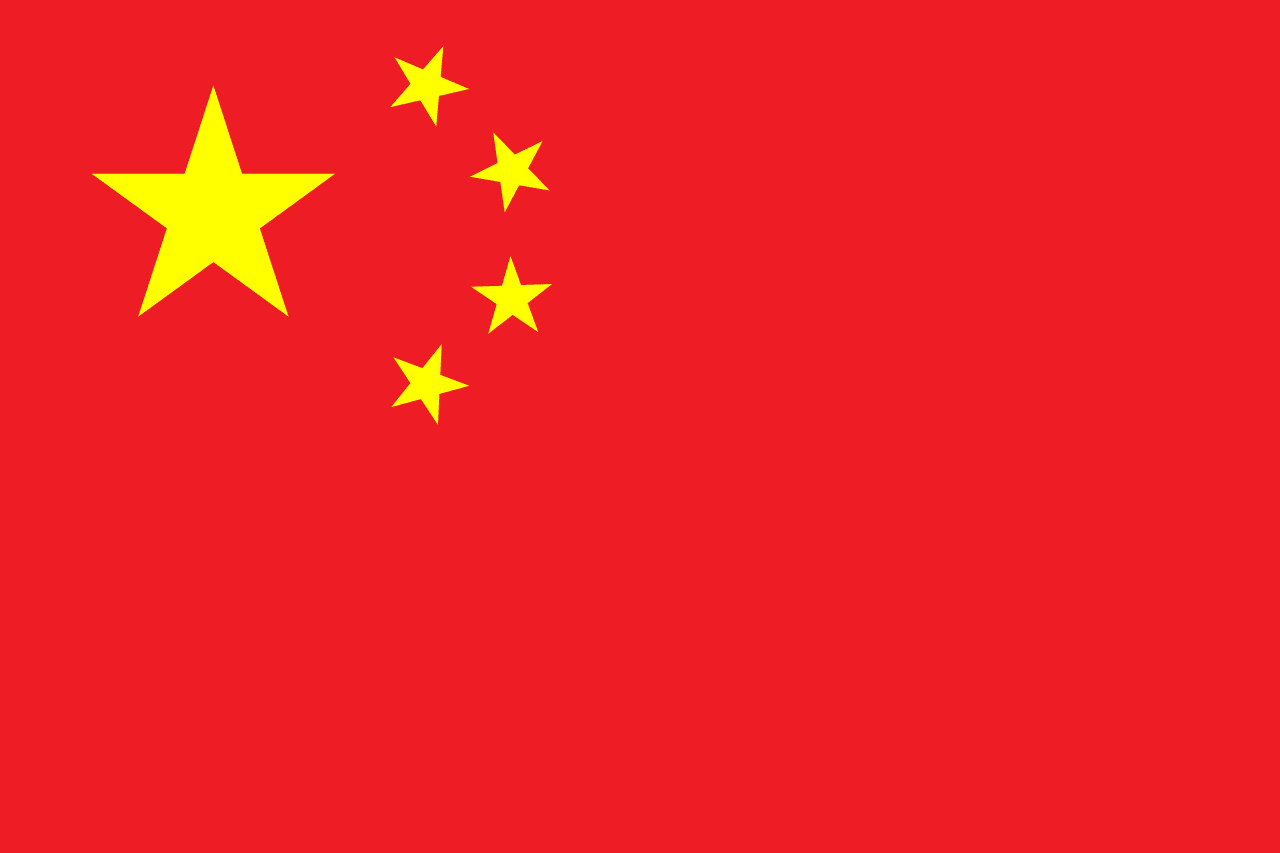
China
Red field with five golden stars representing unity under Communist leadership and the four social classes.
- Adoption
- Adopted: 1949
- Continent
- Continent: Asia
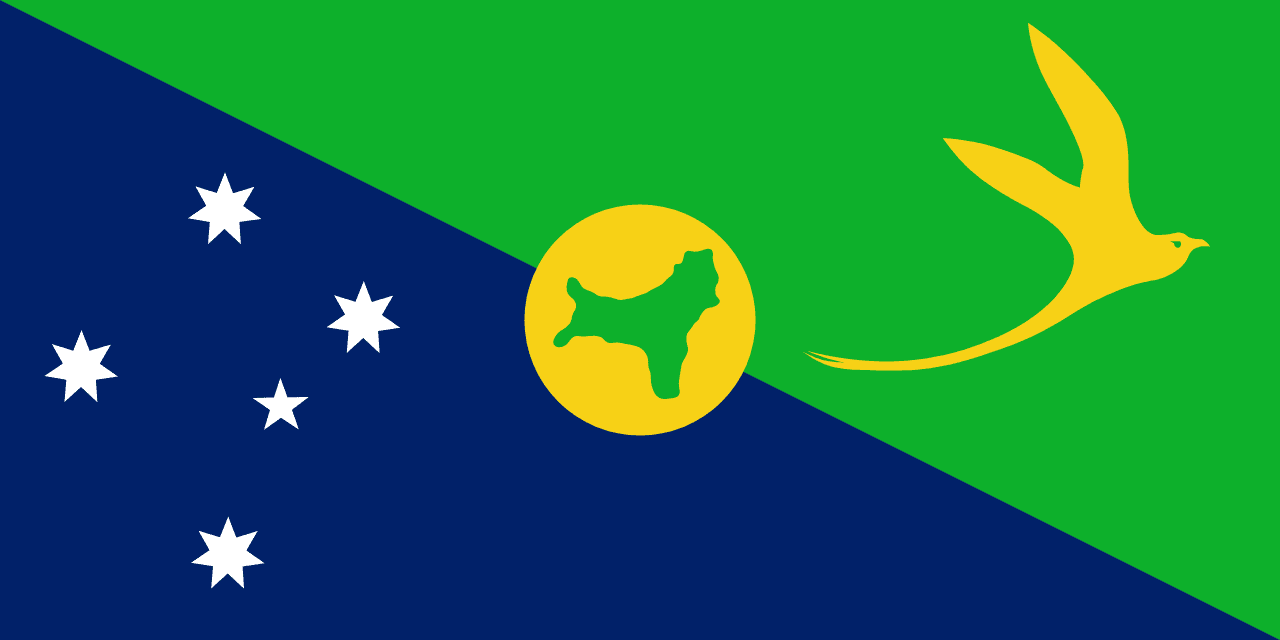
Christmas Island
Green and blue field with Southern Cross constellation, golden bosun bird, and a circle representing the island.
- Adoption
- Adopted: 1986
- Continent
- Continent: Oceania
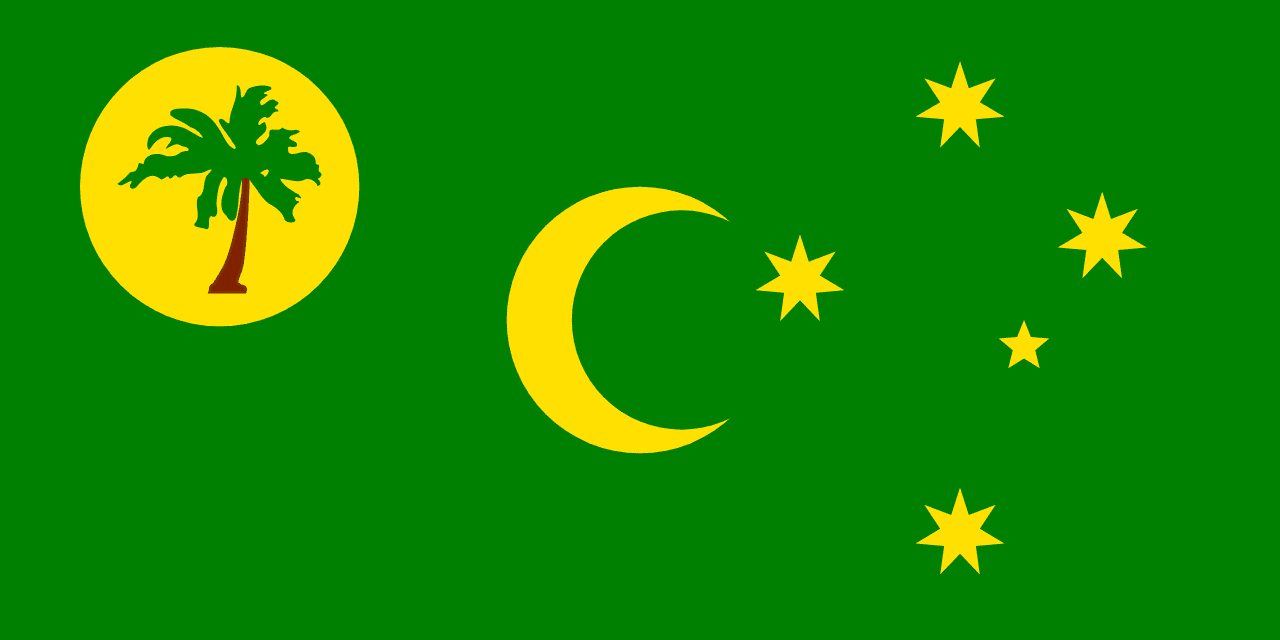
Cocos Islands
Green field with golden disc, crescent moon, palm tree, and Southern Cross representing the Malay Muslim community, tropical environment, and Australian connection.
- Adoption
- Adopted: 2004
- Continent
- Continent: Oceania

Colombia
Three horizontal stripes with yellow taking the top half and blue and red each taking a quarter, representing the golden wealth of the land, the seas and rivers, and the blood shed for independence from Spanish rule.
- Adoption
- Adopted: 1861
- Continent
- Continent: South America
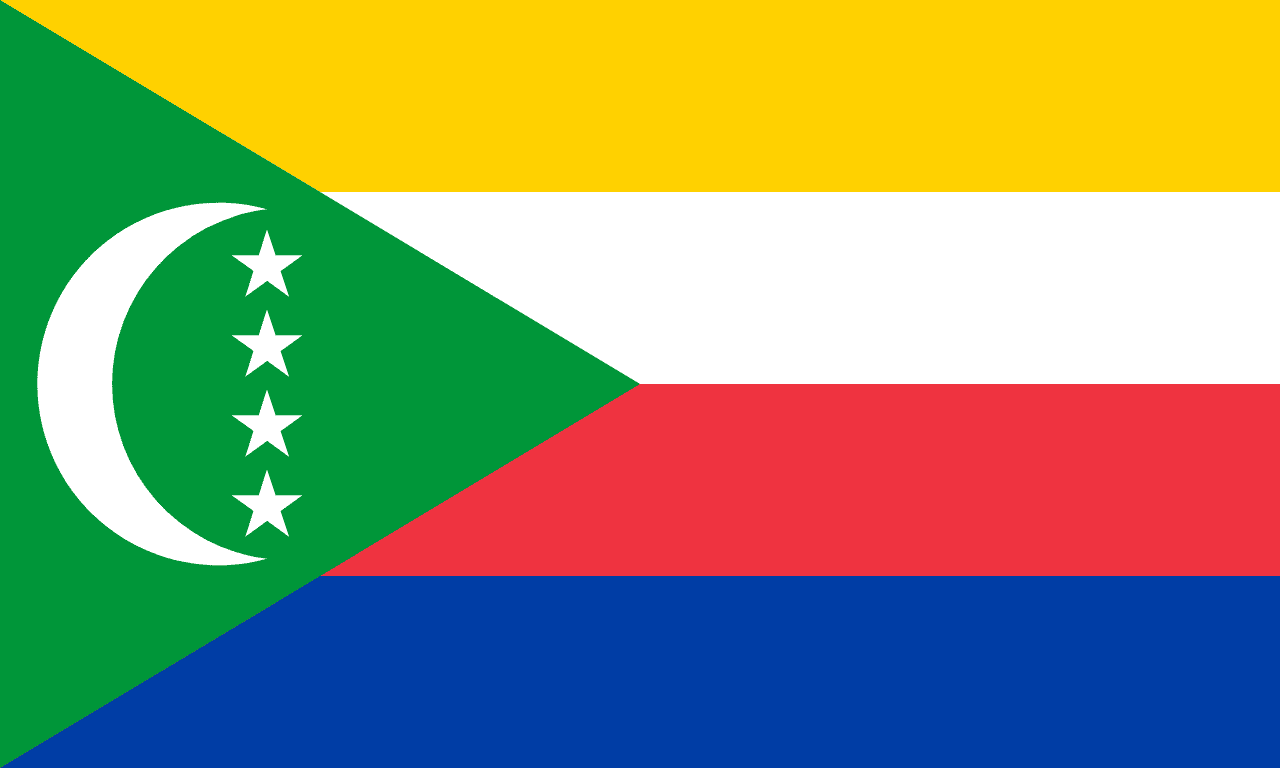
Comoros
Four horizontal stripes of yellow, white, red, and blue with a green triangle at the hoist containing a white crescent and four white stars, representing the four islands, Islamic faith, and the pan-African heritage of this Indian Ocean archipelago.
- Adoption
- Adopted: 2002
- Continent
- Continent: Africa
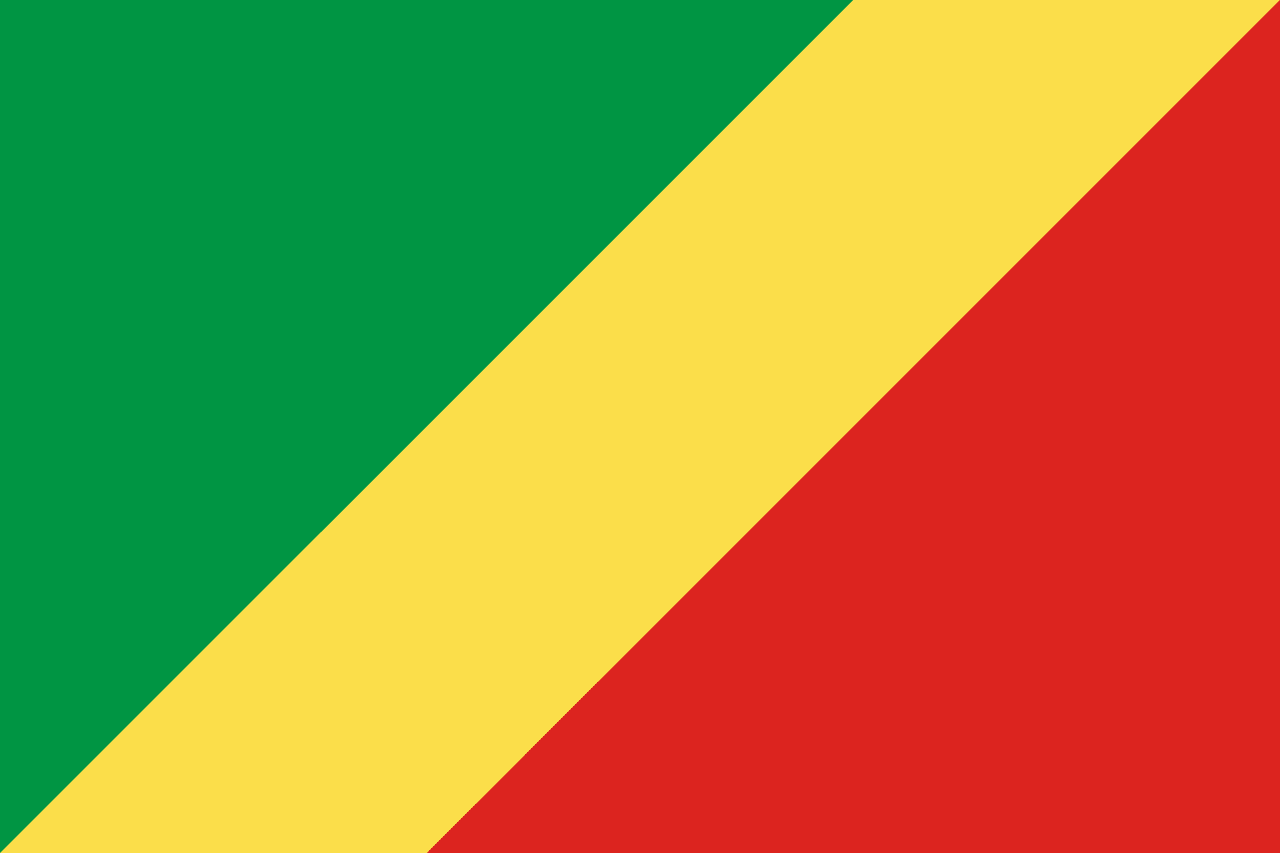
Republic of the Congo
A diagonal tricolor with green in the upper hoist, red in the lower fly, and yellow diagonal stripe separating them, representing the forests, the struggle for independence, and the friendship and nobility of the Congolese people.
- Adoption
- Adopted: 1991
- Continent
- Continent: Africa
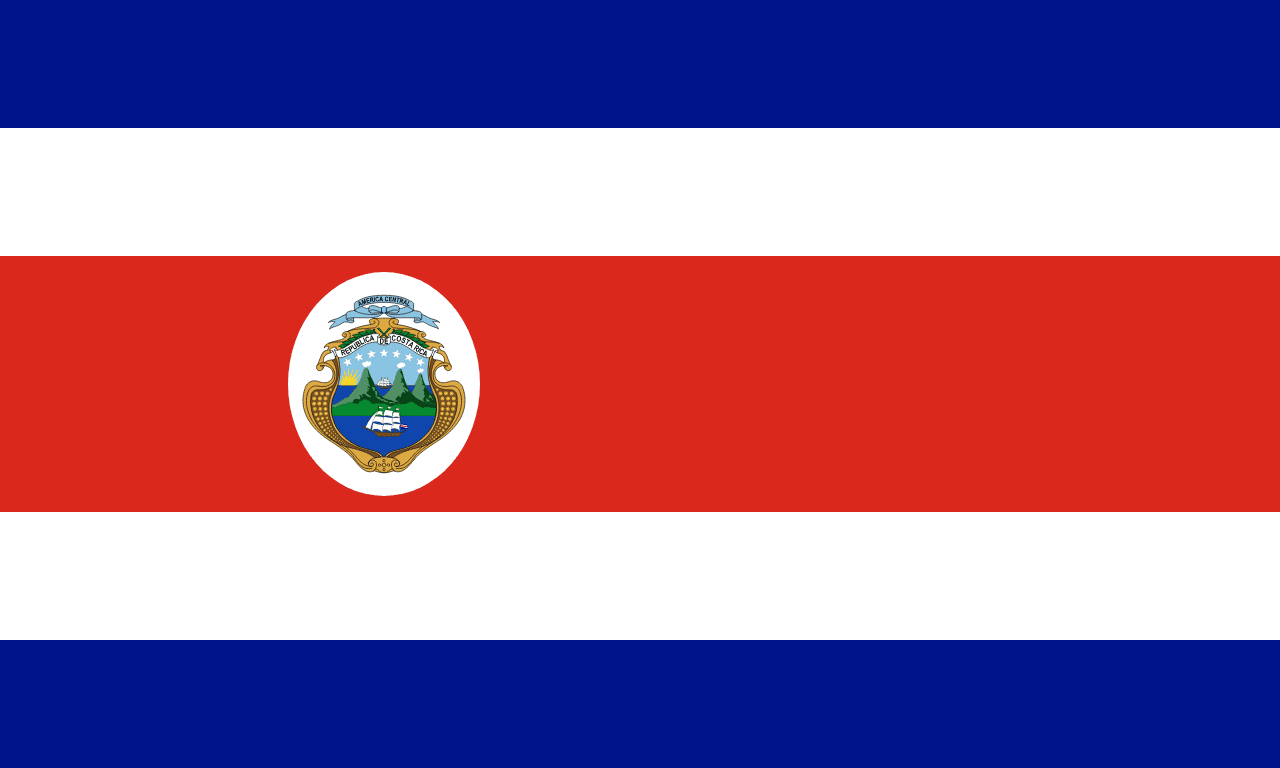
Costa Rica
Five horizontal stripes with blue at top and bottom, white stripes below and above the central red stripe, and the national coat of arms on the red stripe, representing the sky and opportunities, peace, and the warmth of the Costa Rican people.
- Adoption
- Adopted: 1906
- Continent
- Continent: North America
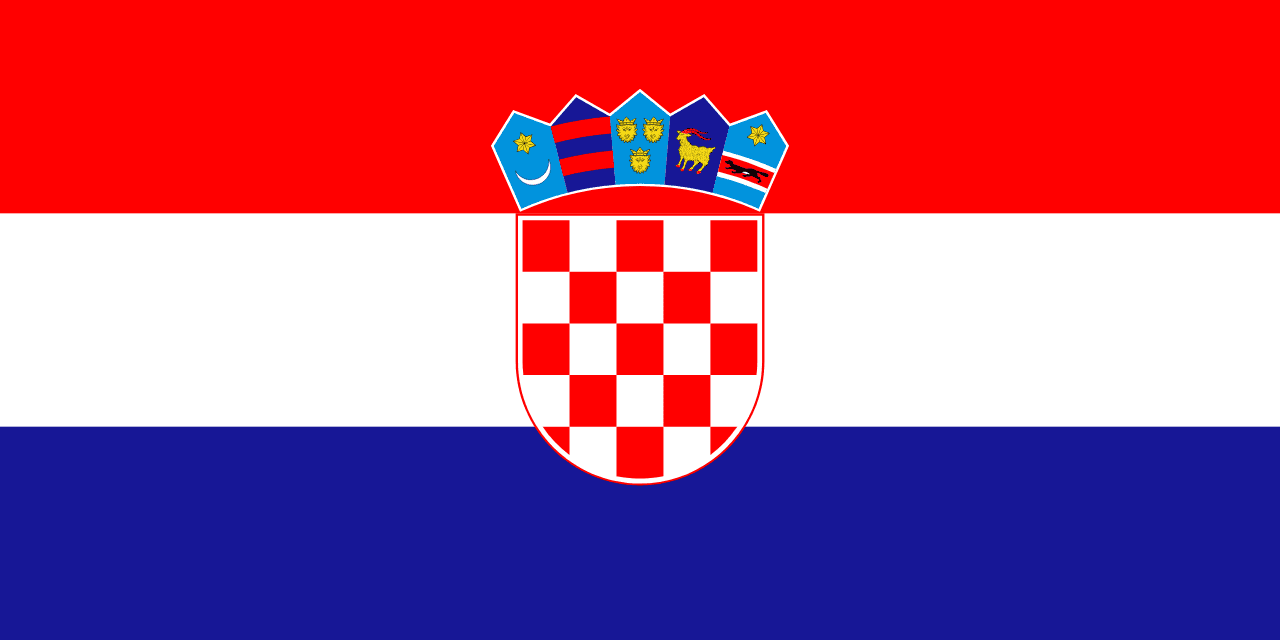
Croatia
Three horizontal stripes of red, white, and blue with the Croatian coat of arms centered on the white stripe, featuring the distinctive red and white checkerboard pattern and five historical shields representing the regions of Croatia.
- Adoption
- Adopted: 1990
- Continent
- Continent: Europe
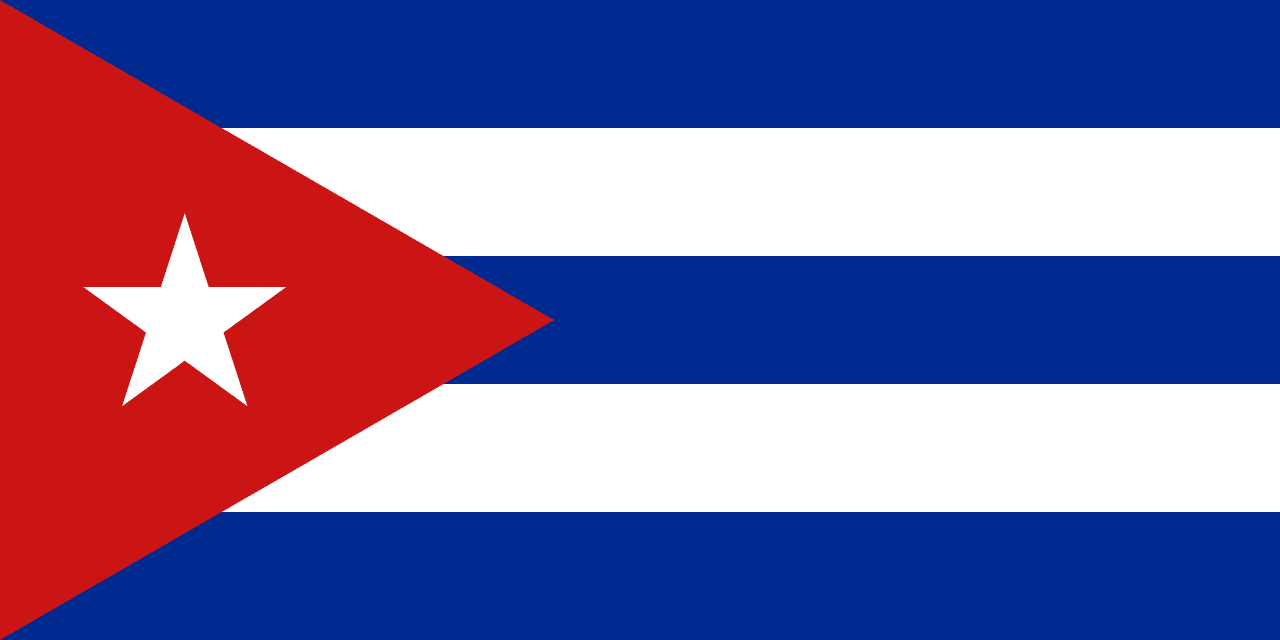
Cuba
Five horizontal stripes alternating blue and white with a red equilateral triangle at the hoist containing a white five-pointed star, representing the three original provinces, purity, the blood of martyrs, and the independence of Cuba.
- Adoption
- Adopted: 1902
- Continent
- Continent: North America

Cyprus
A white field with a copper-colored silhouette of the island of Cyprus and two green olive branches below, representing peace, the island's geographic identity, and its ancient association with copper mining and olive cultivation.
- Adoption
- Adopted: 1960
- Continent
- Continent: Europe
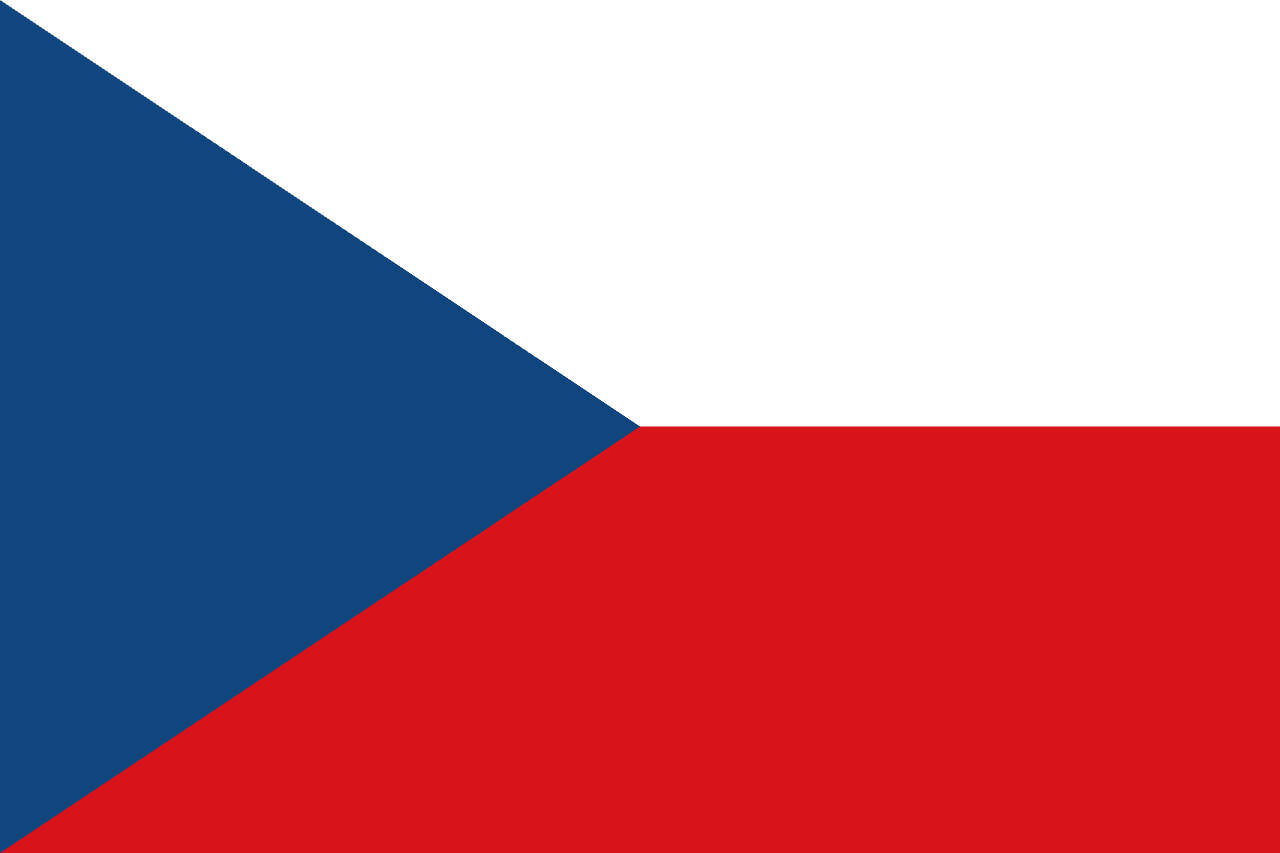
Czech Republic
Two horizontal stripes of white over red with a blue triangle extending from the hoist, combining Bohemian colors with Moravian blue, representing the historical lands and democratic ideals of the Czech nation.
- Adoption
- Adopted: 1993
- Continent
- Continent: Europe

Denmark
A red field with a white Nordic cross slightly offset toward the hoist, known as the Dannebrog, representing one of the world's oldest national flags and the Christian heritage of the Danish kingdom.
- Adoption
- Adopted: 1219
- Continent
- Continent: Europe
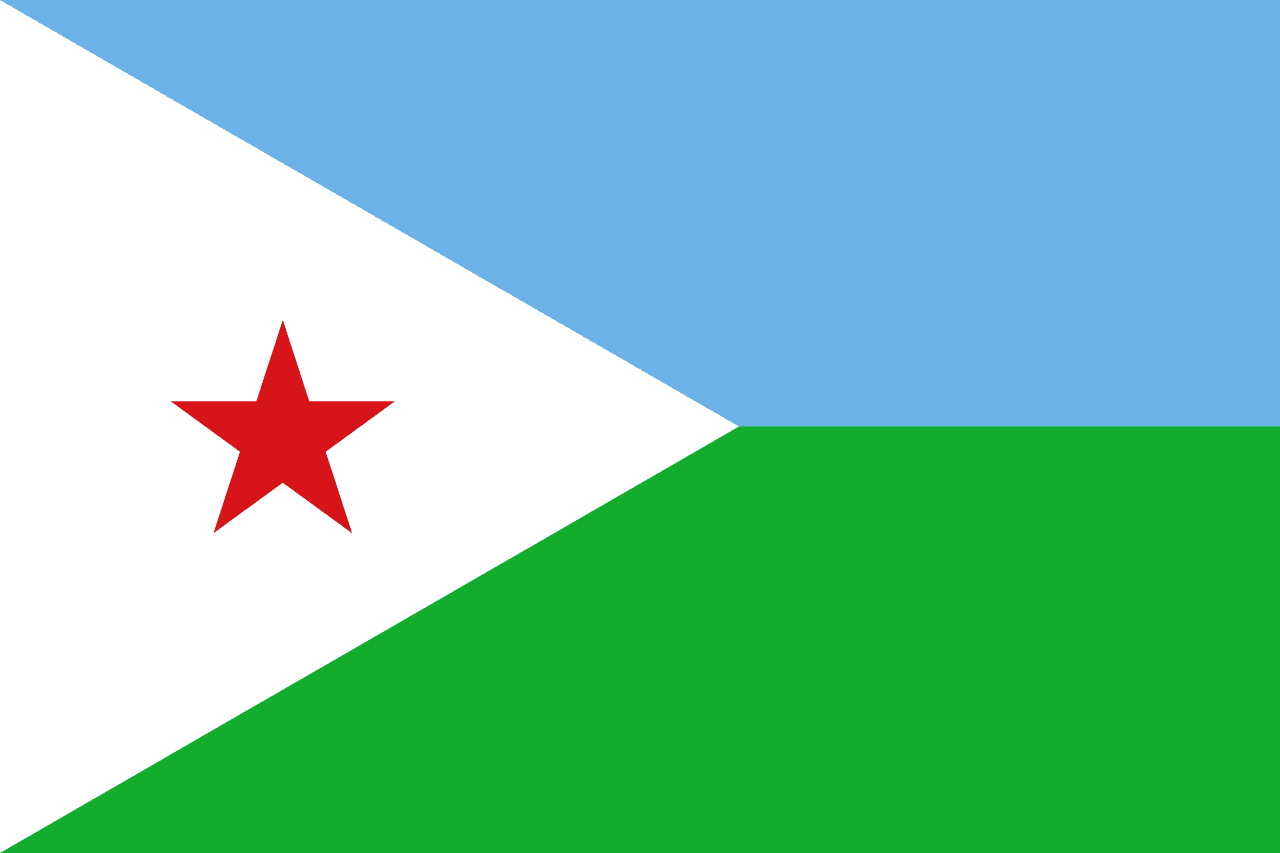
Djibouti
A light blue field with a white triangle at the hoist containing a red five-pointed star, and a green lower stripe, representing the sky and sea, the Issa people, peace, unity, and the Afar people of this strategic Horn of Africa nation.
- Adoption
- Adopted: 1977
- Continent
- Continent: Africa
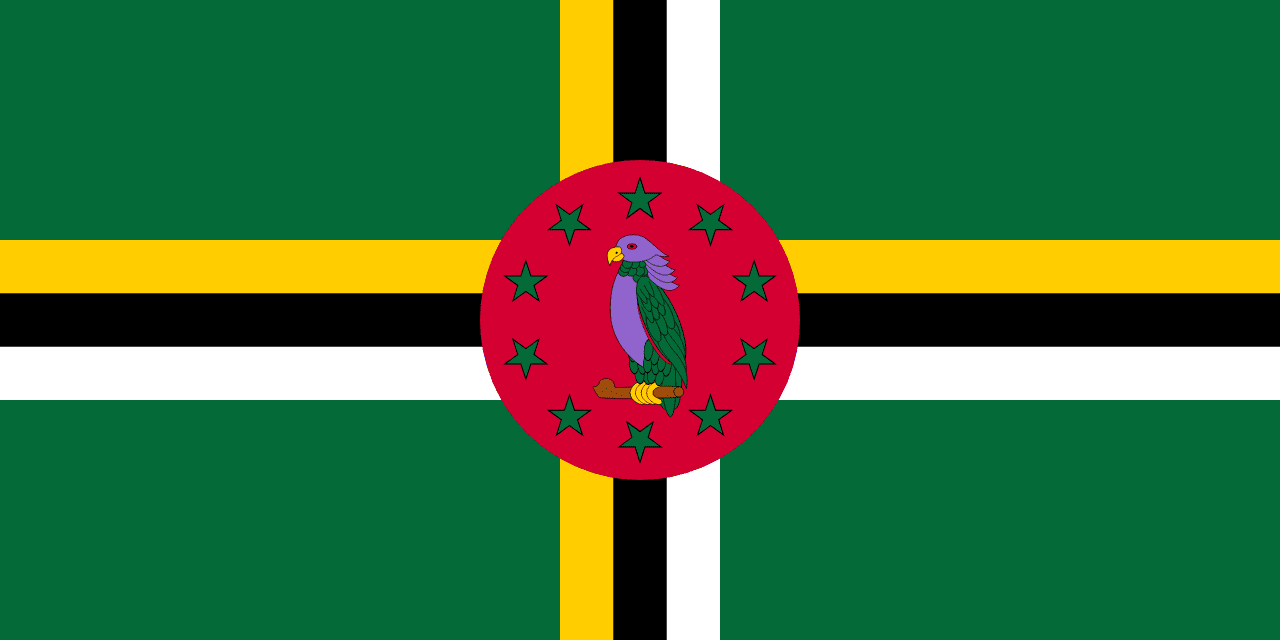
Dominica
A green field with a cross pattern of yellow, black, and white stripes and a red circle in the center containing the Sisserou parrot, representing the lush vegetation, the Trinity, racial harmony, and the unique wildlife of the 'Nature Island of the Caribbean.'
- Adoption
- Adopted: 1990
- Continent
- Continent: North America
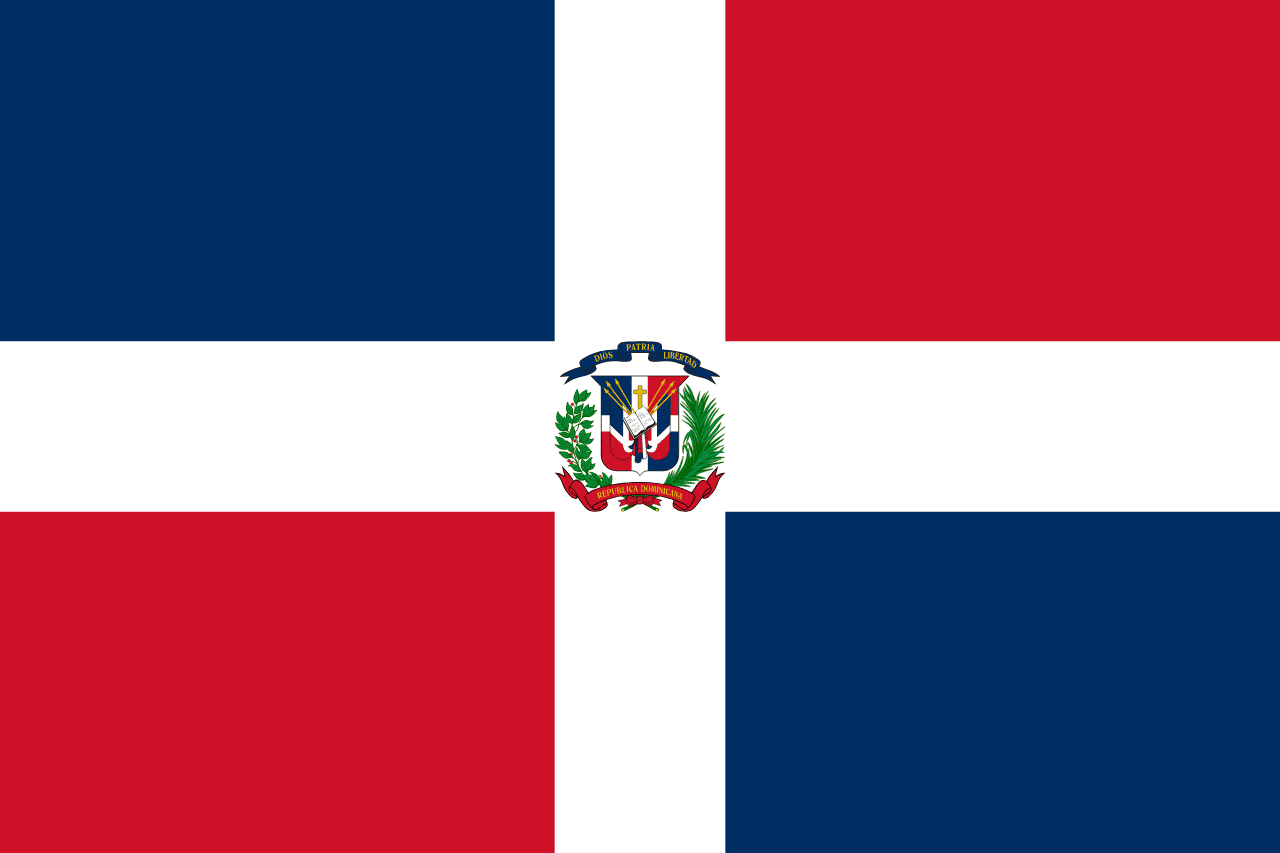
Dominican Republic
Four quarters alternating blue and red separated by a white cross, with the national coat of arms in the center, representing liberty, the blood of heroes, salvation and peace, and the Christian faith of the Dominican people.
- Adoption
- Adopted: 1844
- Continent
- Continent: North America

Ecuador
Three horizontal stripes with yellow taking the top half and blue and red each taking a quarter, featuring the national coat of arms in the center, representing the abundance of the land, the sky and ocean, and the blood shed for independence.
- Adoption
- Adopted: 1860
- Continent
- Continent: South America

Egypt
Three horizontal stripes of red, white, and black with the golden Eagle of Saladin centered on the white stripe, representing the struggle for freedom, purity and bright future, the dark past of oppression, and the strength of the Arab Republic of Egypt.
- Adoption
- Adopted: 1984
- Continent
- Continent: Africa
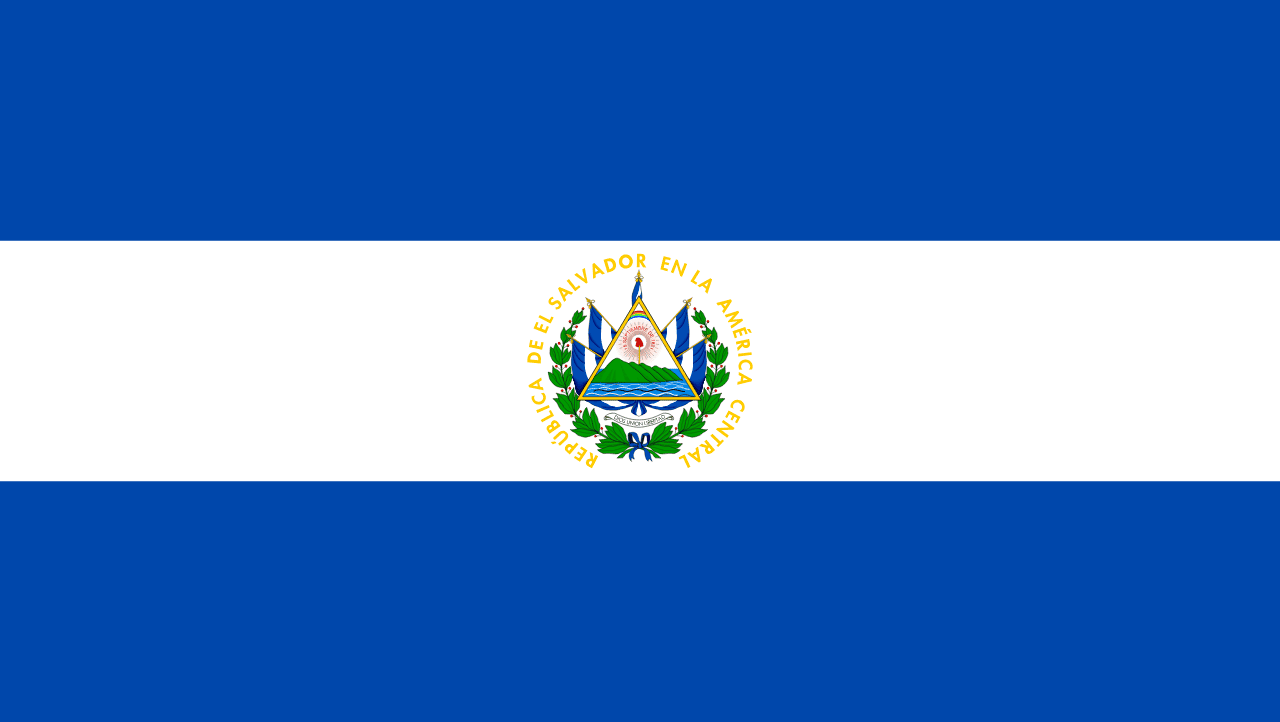
El Salvador
Three horizontal stripes of blue, white, and blue with the national coat of arms centered on the white stripe, representing the Pacific and Atlantic oceans, peace, and the hope for Central American unity.
- Adoption
- Adopted: 1912
- Continent
- Continent: North America
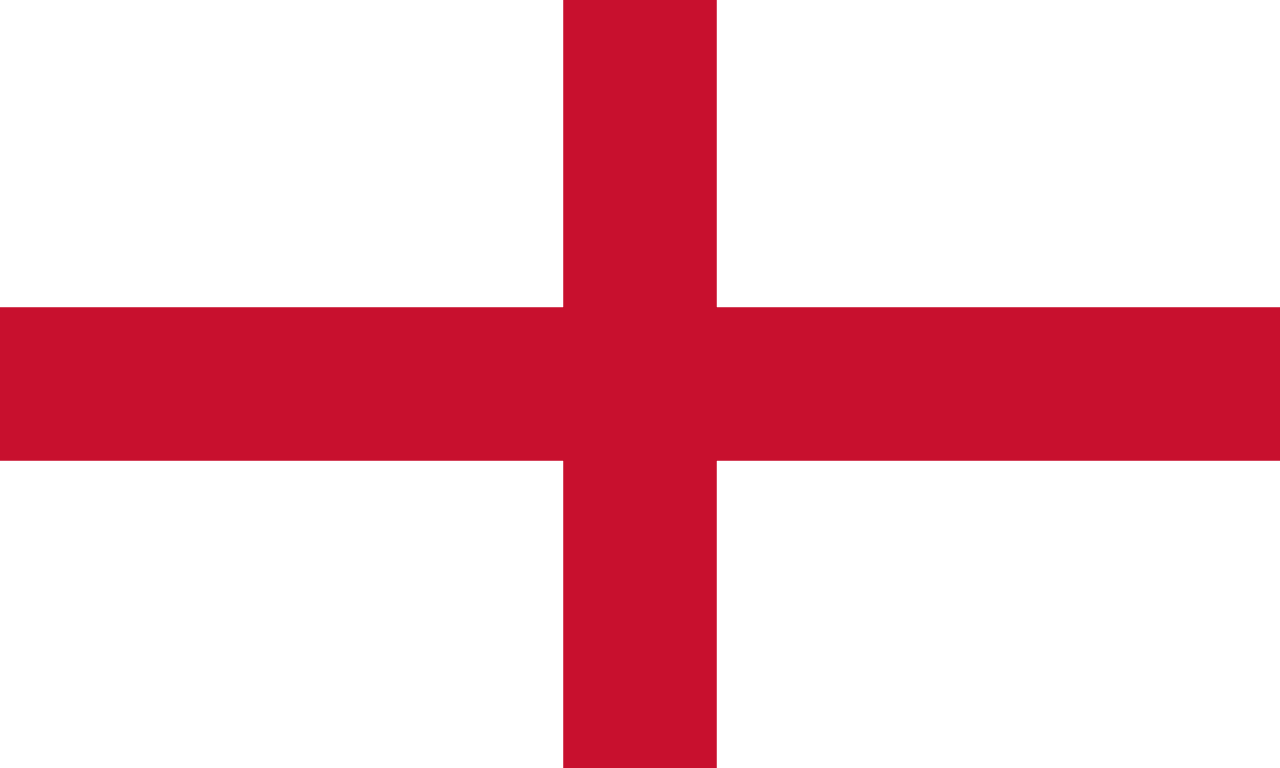
England
A red cross on a white field, known as the St. George's Cross, representing England's patron saint and Christian heritage, adopted during the medieval Crusades and remaining the national flag of England within the United Kingdom.
- Adoption
- Adopted: 1190
- Continent
- Continent: Europe
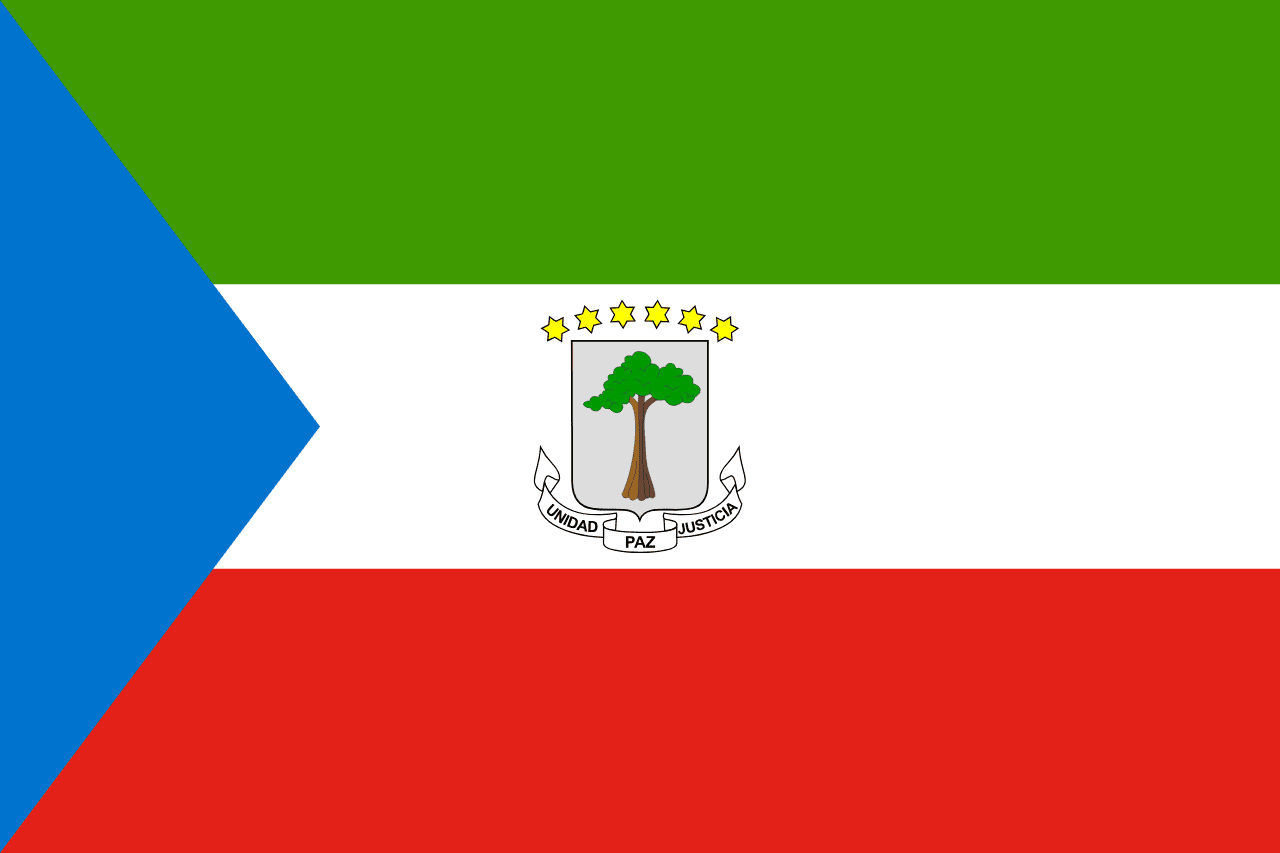
Equatorial Guinea
Three horizontal stripes of green, white, and red with a blue triangle at the hoist and the national coat of arms in the center, representing the country's forests, peace, independence struggle, and maritime heritage.
- Adoption
- Adopted: 1968
- Continent
- Continent: Africa
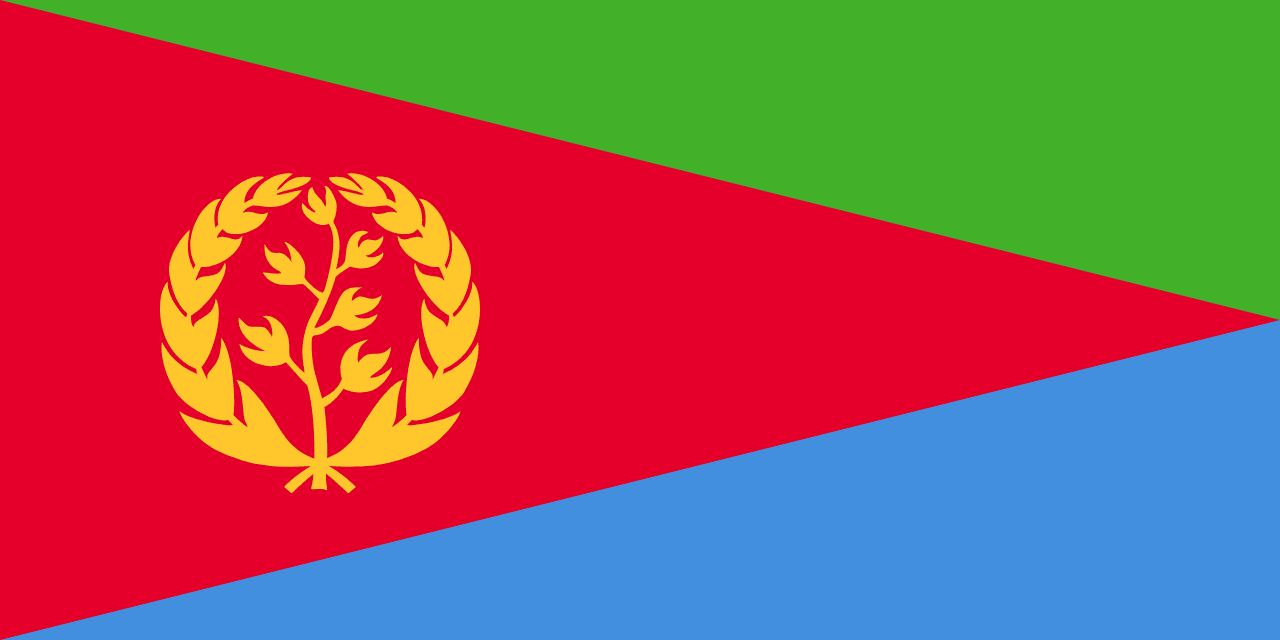
Eritrea
A red triangle at the hoist with a golden olive branch and wreath, adjacent to green and blue triangular sections, representing the struggle for independence, agricultural potential, maritime heritage, and hopes for peace.
- Adoption
- Adopted: 1995
- Continent
- Continent: Africa

Estonia
Three horizontal stripes of blue, black, and white representing the sky and sea, the soil and past struggles, and the snow and bright future of this Baltic nation known for its digital innovation and preserved medieval heritage.
- Adoption
- Adopted: 1990
- Continent
- Continent: Europe
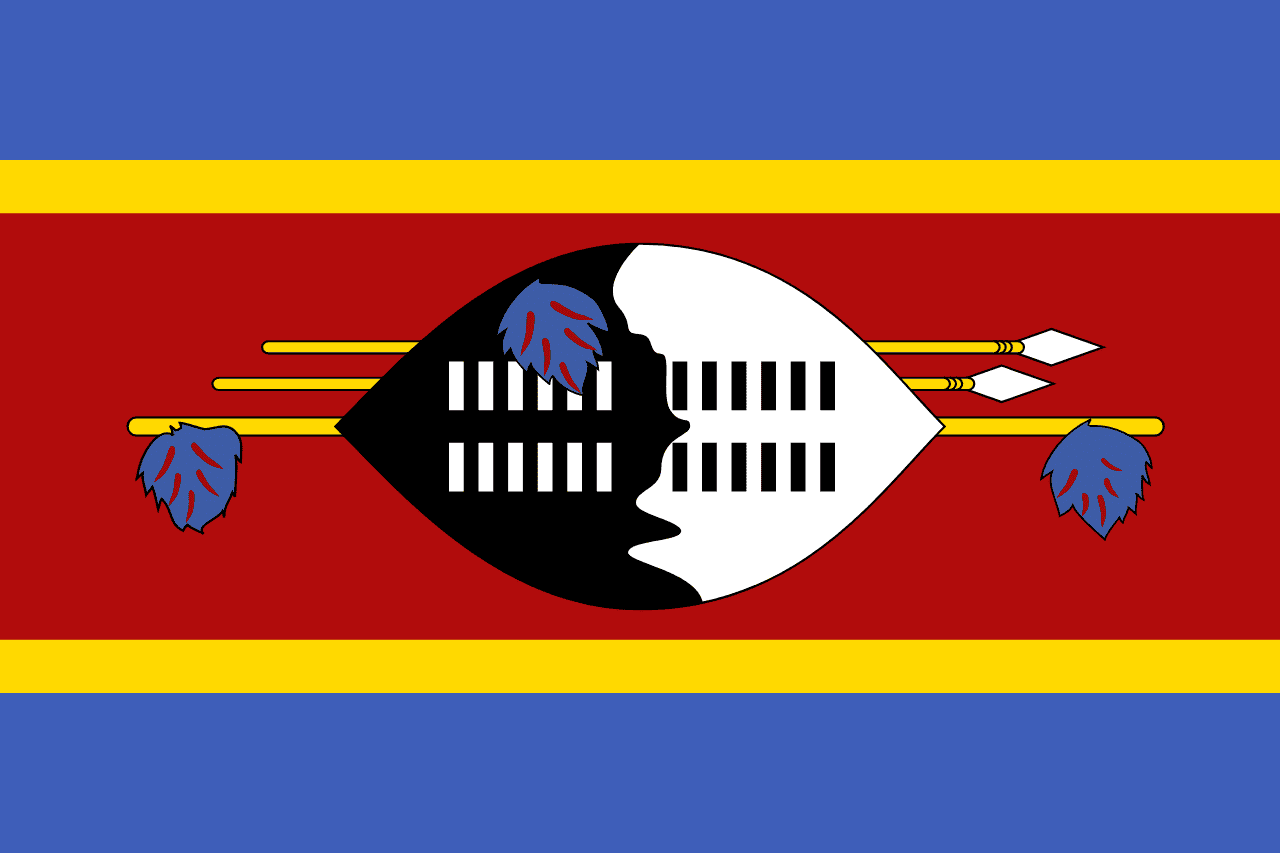
Eswatini
Five horizontal stripes of blue, yellow, red, yellow, and blue with a traditional Swazi shield and two spears overlaid on the center red stripe, representing peace, mineral wealth, past struggles, and the protection of the kingdom.
- Adoption
- Adopted: 1968
- Continent
- Continent: Africa
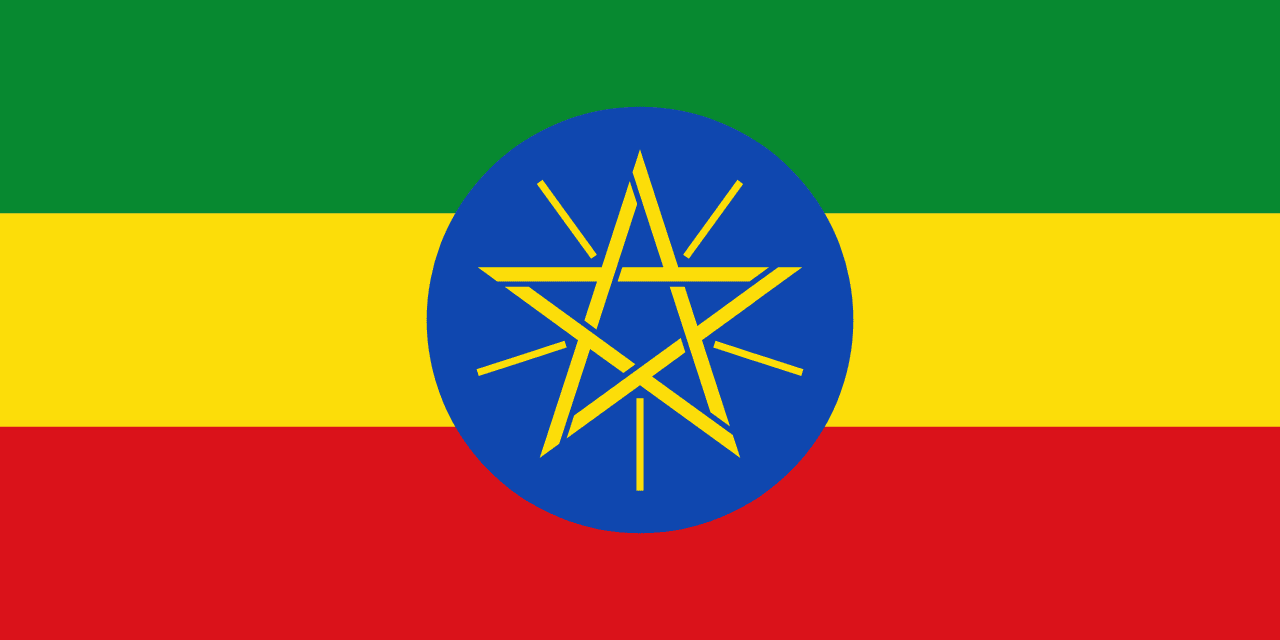
Ethiopia
Three horizontal stripes of green, yellow, and red with a blue circle containing a yellow five-pointed star in the center, representing the original Pan-African colors, the diversity and unity of Ethiopia's peoples, and the country's ancient independence.
- Adoption
- Adopted: 1996
- Continent
- Continent: Africa
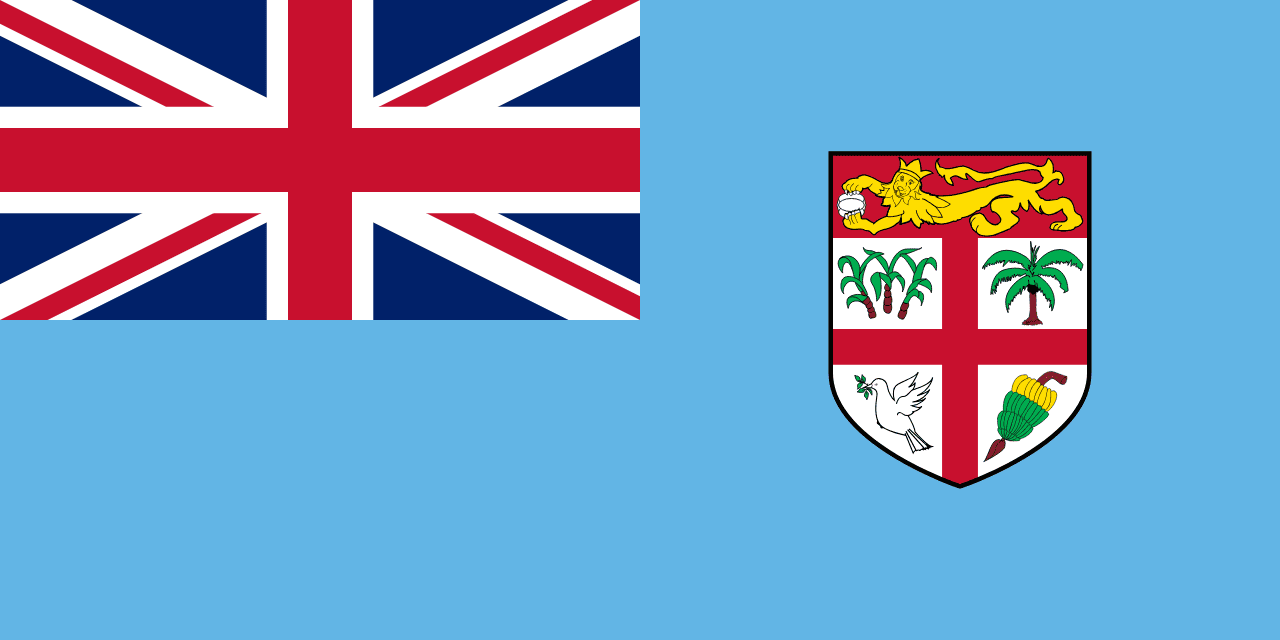
Fiji
A light blue field with the Union Jack in the canton and Fiji's coat of arms on the fly side, representing the Pacific Ocean, British heritage, and the agricultural and maritime traditions of this island nation.
- Adoption
- Adopted: 1970
- Continent
- Continent: Oceania

Finland
A white field with a blue Nordic cross slightly offset toward the hoist, representing Finland's Nordic heritage, the blue lakes and sky, and the white snow that covers the land for much of the year in the 'Land of a Thousand Lakes.'
- Adoption
- Adopted: 1918
- Continent
- Continent: Europe

France
Revolutionary tricolor symbolizing liberty, equality, and fraternity.
- Adoption
- Adopted: 1830
- Continent
- Continent: Europe
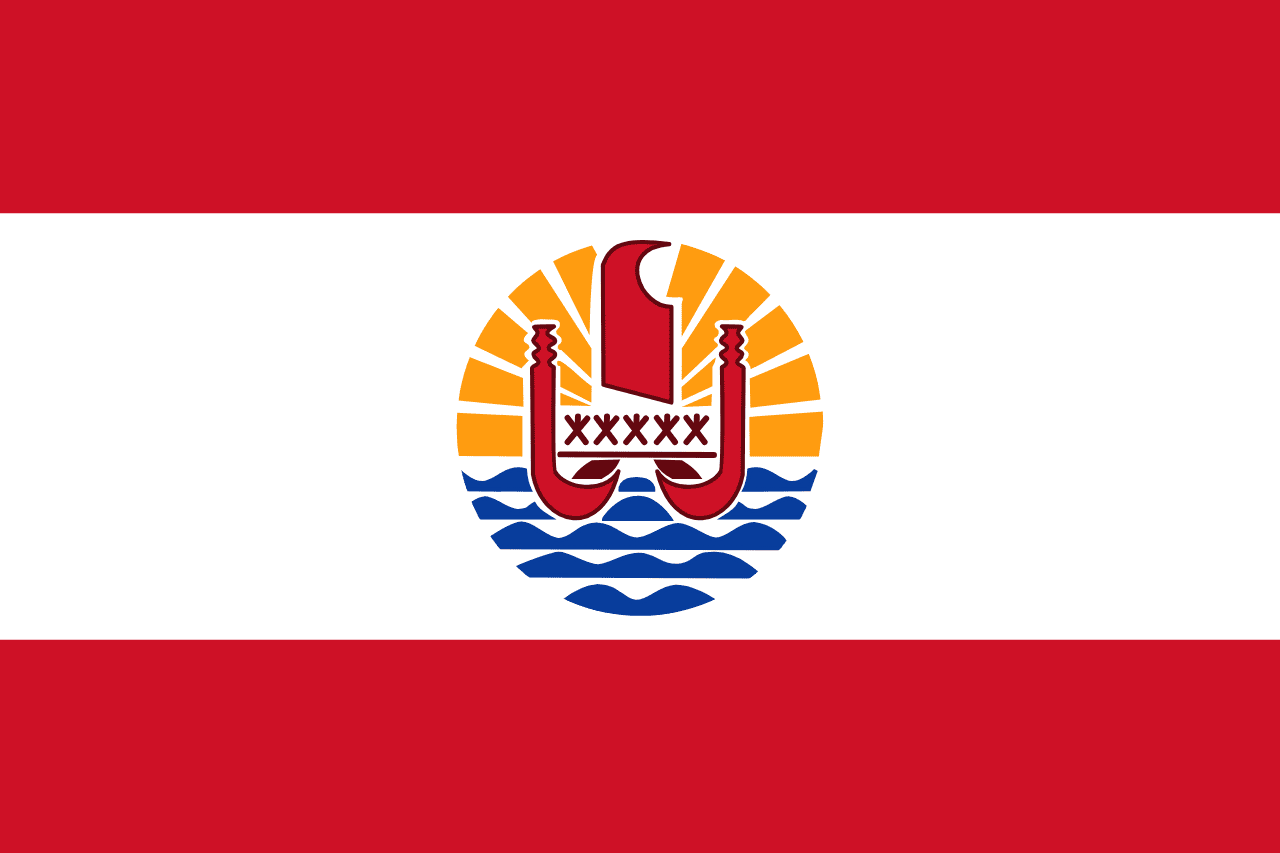
French Polynesia
Red and white horizontal stripes with central emblem featuring an outrigger canoe, sun, and ocean waves representing Polynesian maritime culture and French governance.
- Adoption
- Adopted: 1984
- Continent
- Continent: Oceania
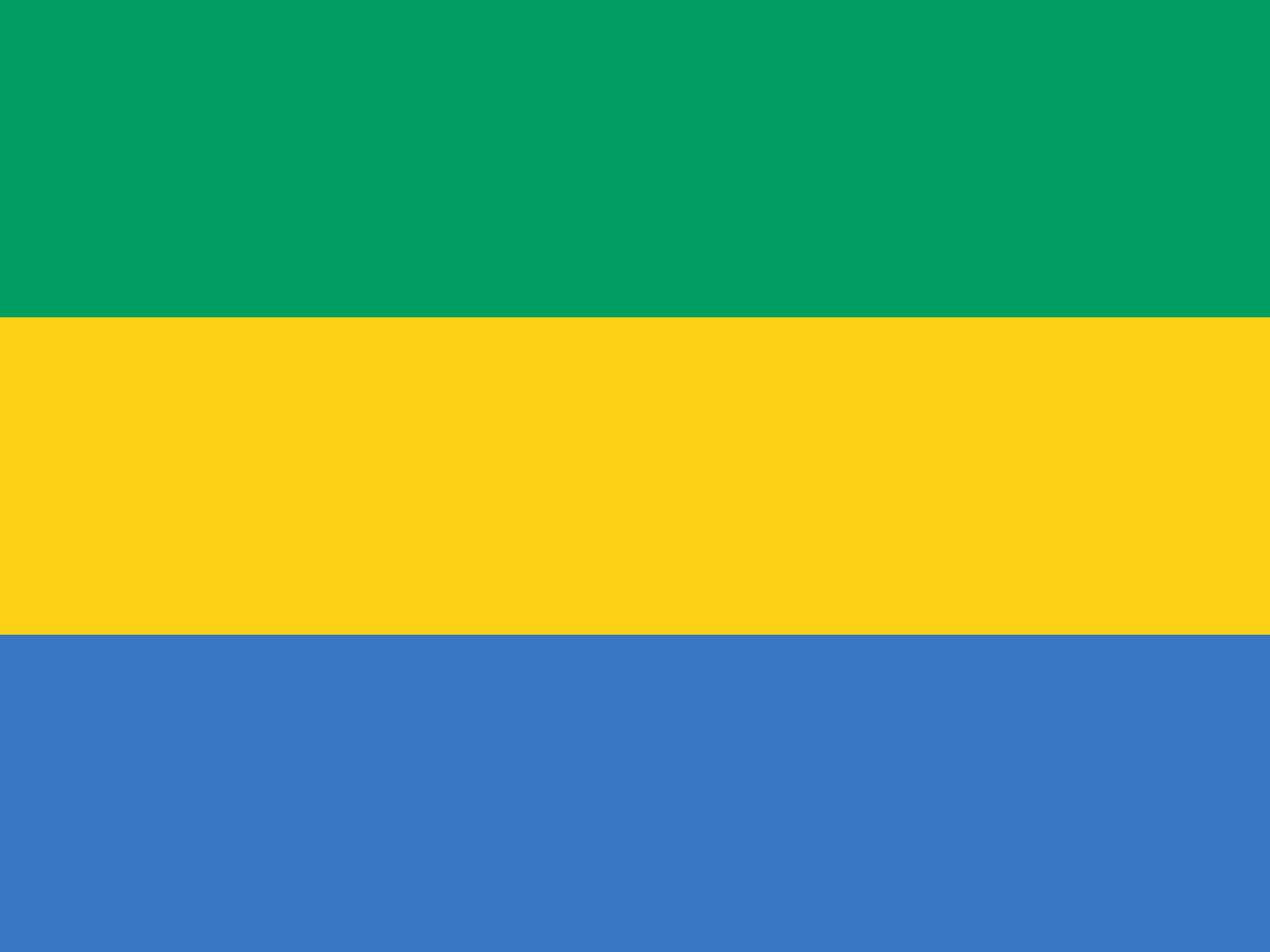
Gabon
Three horizontal stripes of green, yellow, and blue representing Gabon's equatorial forests, the equator itself, and the Atlantic Ocean, adopted upon independence from France.
- Adoption
- Adopted: 1960
- Continent
- Continent: Africa
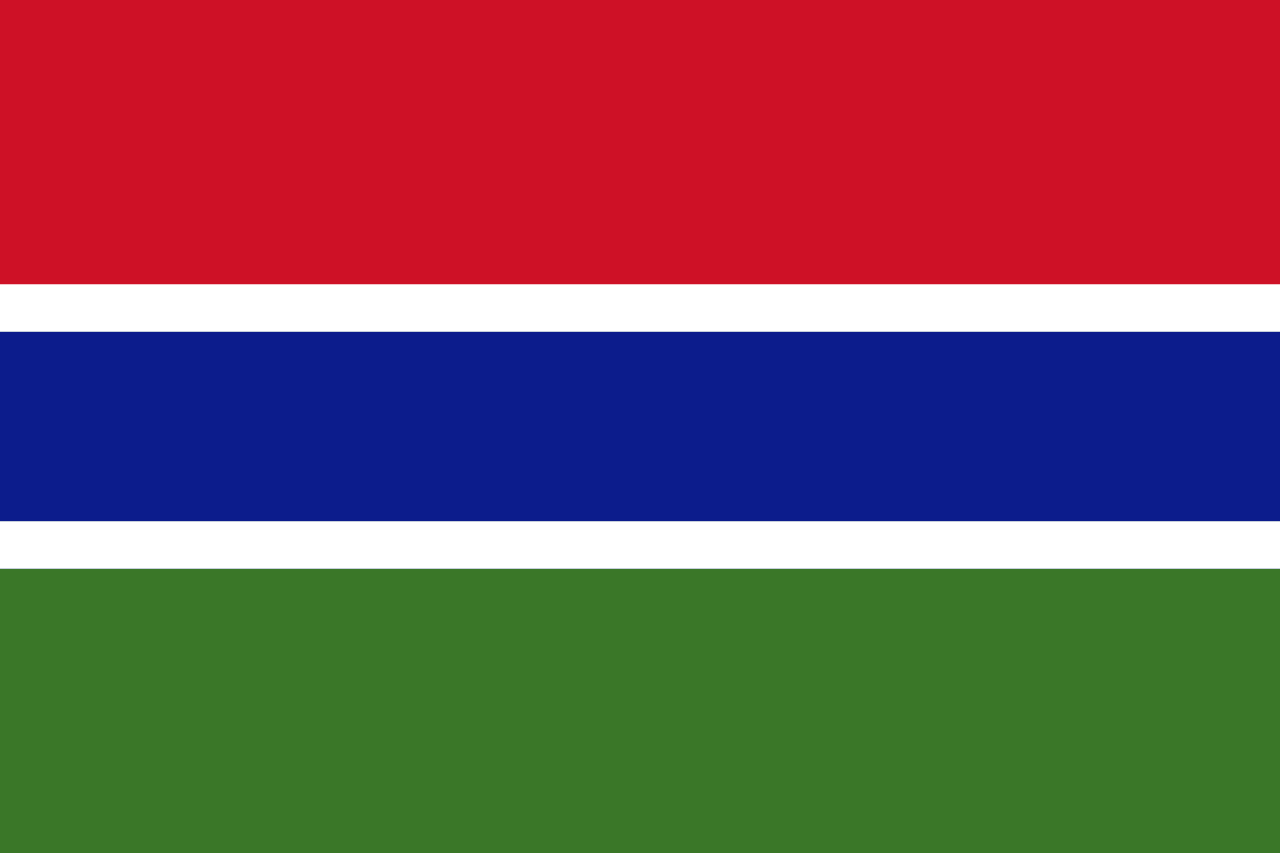
Gambia
Three horizontal stripes of red, blue, and green separated by thin white stripes, representing the sun, the Gambia River, agriculture, and peace, symbolizing the natural beauty and harmony of the smallest mainland African nation.
- Adoption
- Adopted: 1965
- Continent
- Continent: Africa
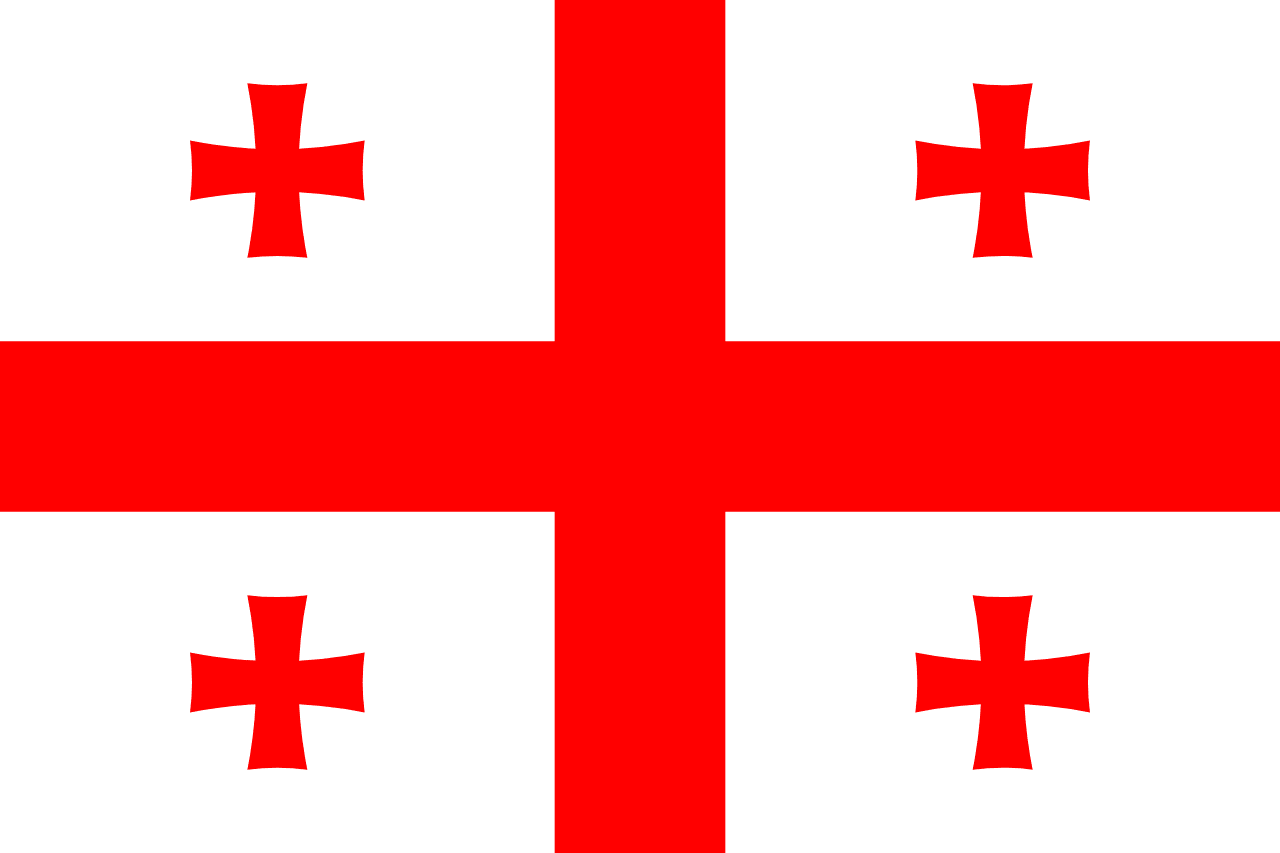
Georgia
A white field with a large red Saint George's cross extending to the edges and four smaller red Bolnisi crosses in each quadrant, representing Georgia's ancient Christian heritage and the five wounds of Christ.
- Adoption
- Adopted: 2004
- Continent
- Continent: Asia

Germany
Three horizontal stripes of black, red, and gold representing the democratic traditions of Germany, with colors rooted in the 19th-century liberal movement and symbolizing unity, justice, and freedom in the modern Federal Republic.
- Adoption
- Adopted: 1949
- Continent
- Continent: Europe

Ghana
The flag of Ghana and its meaning.
- Adoption
- Adopted: TBD
- Continent
- Continent: Africa

Greece
Nine horizontal stripes alternating blue and white with a blue canton containing a white Greek cross, representing the sea and sky, purity and struggle for independence, and the Greek Orthodox faith that unites the nation.
- Adoption
- Adopted: 1978
- Continent
- Continent: Europe

Grenada
A red border surrounding yellow and green triangular sections with seven gold stars and a nutmeg symbol, representing the warmth of the people, sunshine and agriculture, vegetation and youth, and Grenada's fame as the 'Spice Island.'
- Adoption
- Adopted: 1974
- Continent
- Continent: North America

Guatemala
Three vertical stripes of blue, white, and blue with the national coat of arms centered on the white stripe, representing the Pacific and Atlantic oceans, peace, and the sovereignty of the Republic of Guatemala.
- Adoption
- Adopted: 1871
- Continent
- Continent: North America
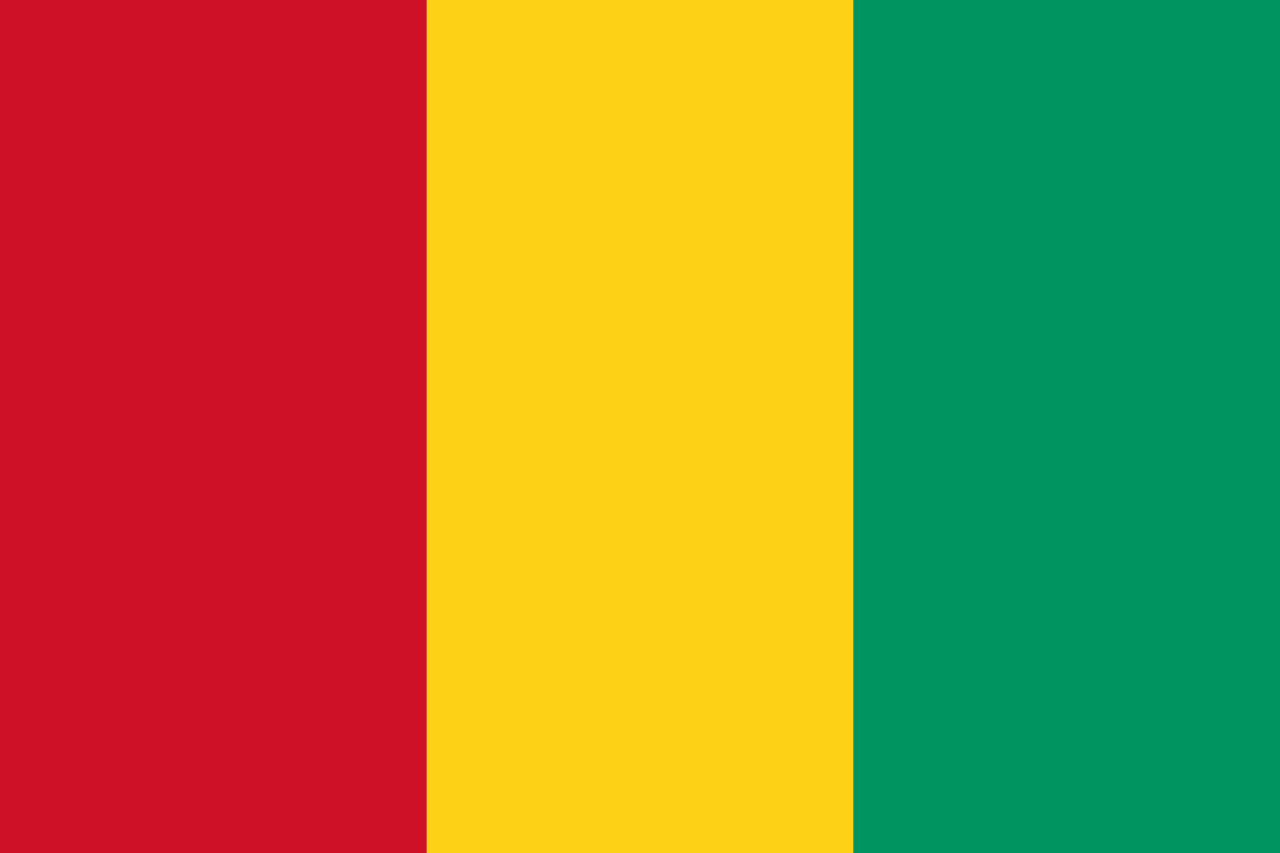
Guinea
Three equal vertical stripes of red, yellow, and green representing the Pan-African colors, with red symbolizing sacrifice, yellow representing the sun and mineral wealth, and green representing the country's vegetation and agriculture.
- Adoption
- Adopted: 1958
- Continent
- Continent: Africa
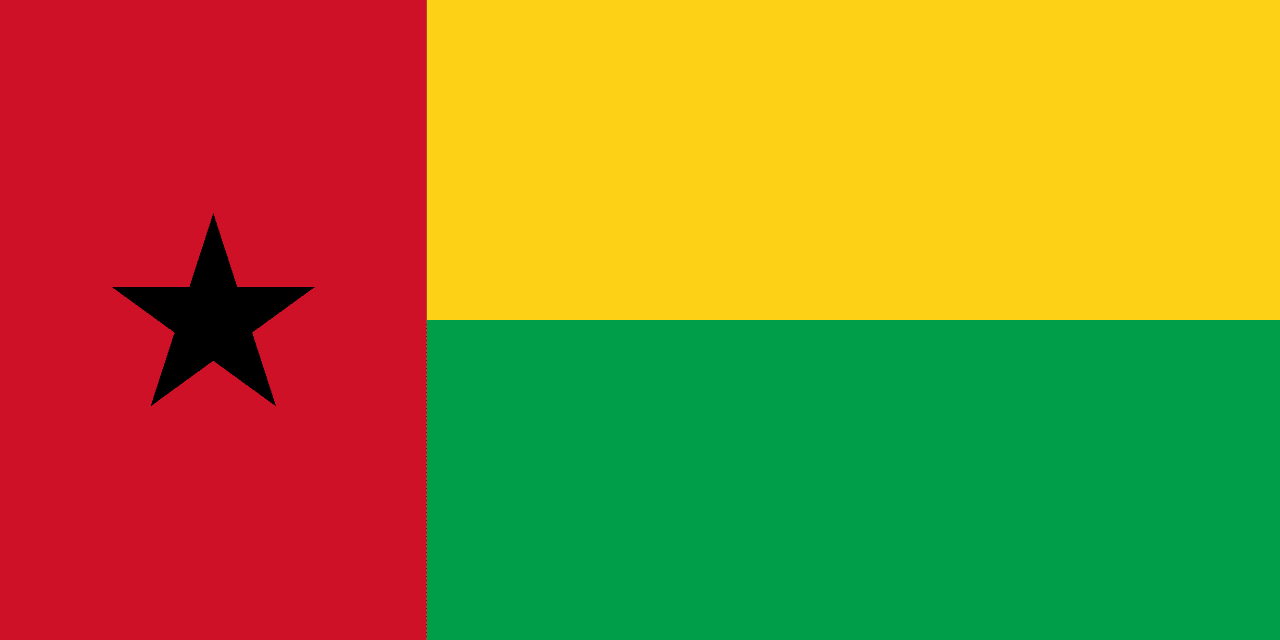
Guinea-Bissau
A vertical red stripe at the hoist with a black five-pointed star, and two horizontal stripes of yellow over green on the fly side, representing the liberation struggle, unity, hope, and the agricultural wealth of Guinea-Bissau.
- Adoption
- Adopted: 1973
- Continent
- Continent: Africa

Guyana
A green field with a yellow arrowhead bordered in white pointing toward the fly, and a red triangle bordered in black at the hoist, known as 'The Golden Arrowhead,' representing the country's natural resources, diversity, and forward progress.
- Adoption
- Adopted: 1966
- Continent
- Continent: South America
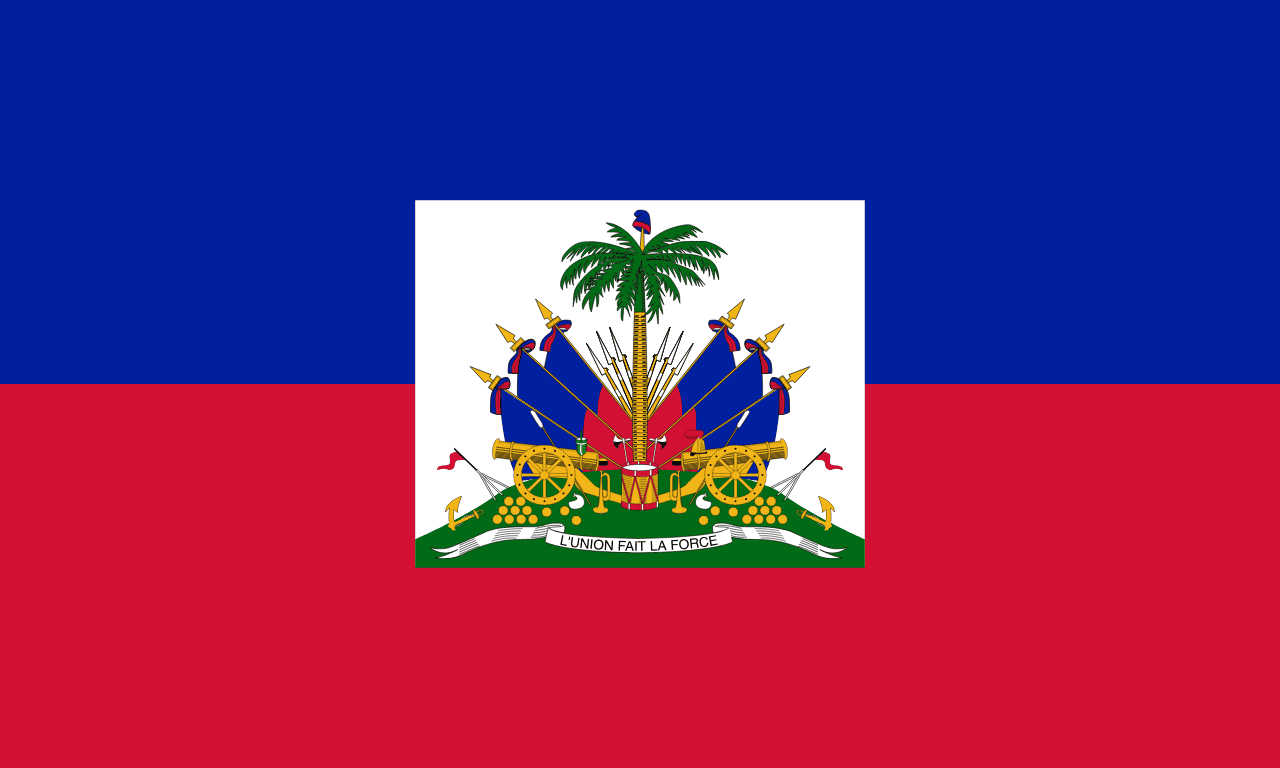
Haiti
Two horizontal stripes of blue over red, representing the union of black and mixed-race Haitians and the blood shed for independence, making Haiti the first independent black republic and symbol of successful slave revolution.
- Adoption
- Adopted: 1986
- Continent
- Continent: North America
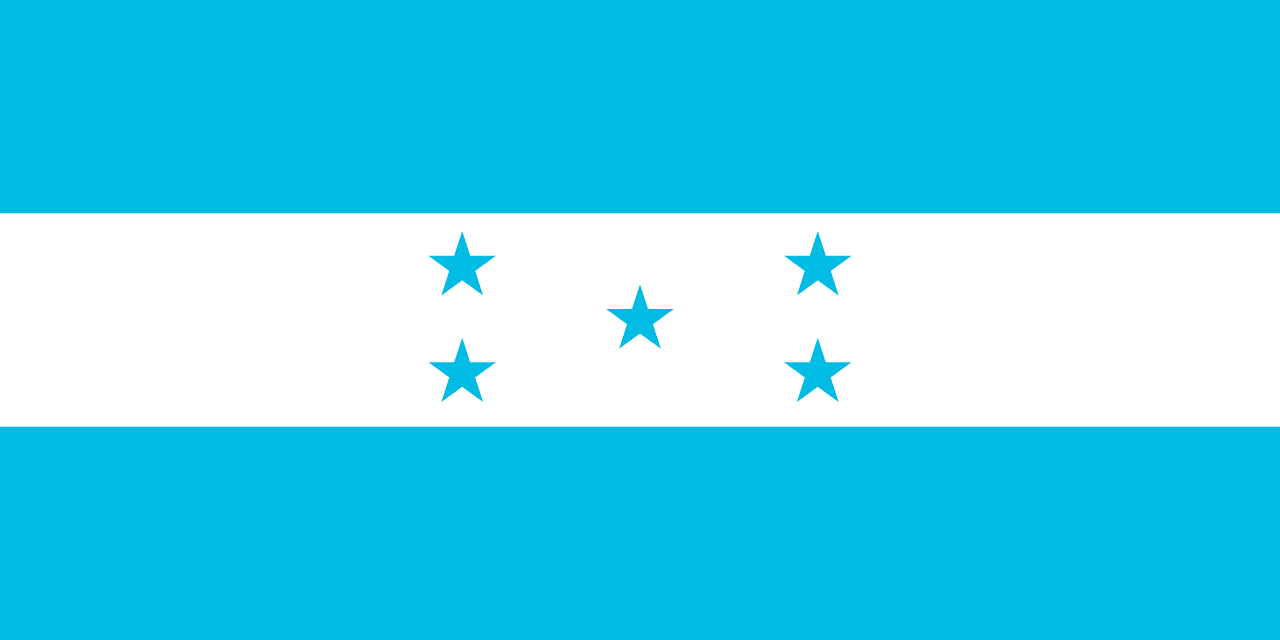
Honduras
Three horizontal stripes of blue, white, and blue with five blue five-pointed stars arranged in an X pattern on the white stripe, representing the Pacific and Atlantic oceans, peace, and the hope for Central American unity.
- Adoption
- Adopted: 1866
- Continent
- Continent: North America

Hungary
Three horizontal stripes of red, white, and green representing strength, faithfulness, and hope, with colors rooted in medieval Hungarian heraldry and the struggle for independence from foreign rule.
- Adoption
- Adopted: 1957
- Continent
- Continent: Europe
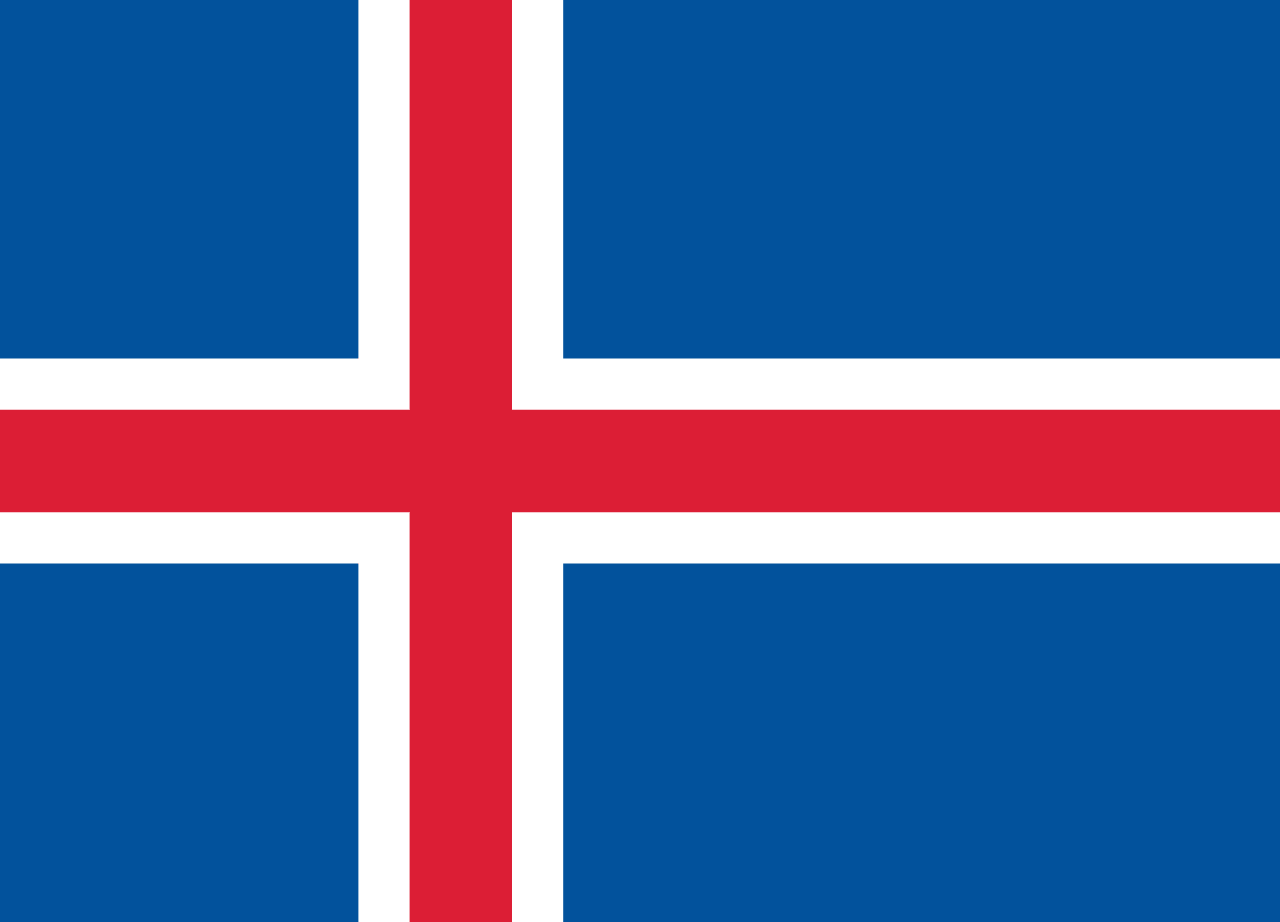
Iceland
A blue field with a white-bordered red Nordic cross slightly offset toward the hoist, representing Iceland's Nordic heritage, Christian history, and the natural elements of fire and ice that define the island nation.
- Adoption
- Adopted: 1944
- Continent
- Continent: Europe

India
Three horizontal stripes of saffron, white, and green with a navy blue Ashoka Chakra (24-spoke wheel) in the center, representing courage and sacrifice, peace and truth, faith and fertility, and the eternal wheel of law in Indian philosophy.
- Adoption
- Adopted: 1947
- Continent
- Continent: Asia

Indonesia
Two horizontal stripes of red over white, known as 'Sang Saka Merah-Putih' (The Sacred Red and White), representing the courage and purity of the Indonesian people and their struggle for independence from colonial rule.
- Adoption
- Adopted: 1945
- Continent
- Continent: Asia
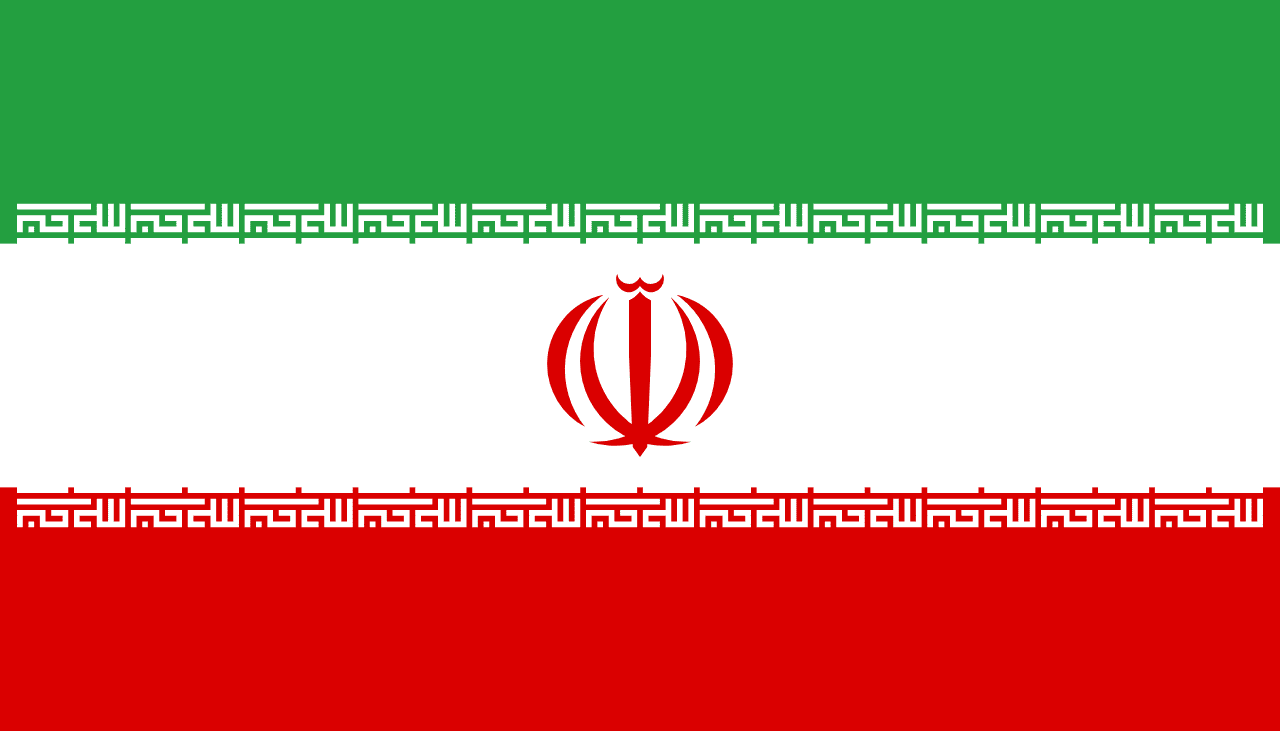
Iran
Three horizontal stripes of green, white, and red with a stylized emblem in the center and repeated 'Allahu Akbar' text along the borders, representing the Islamic Republic of Iran and the principles of the 1979 Islamic Revolution.
- Adoption
- Adopted: 1980
- Continent
- Continent: Asia
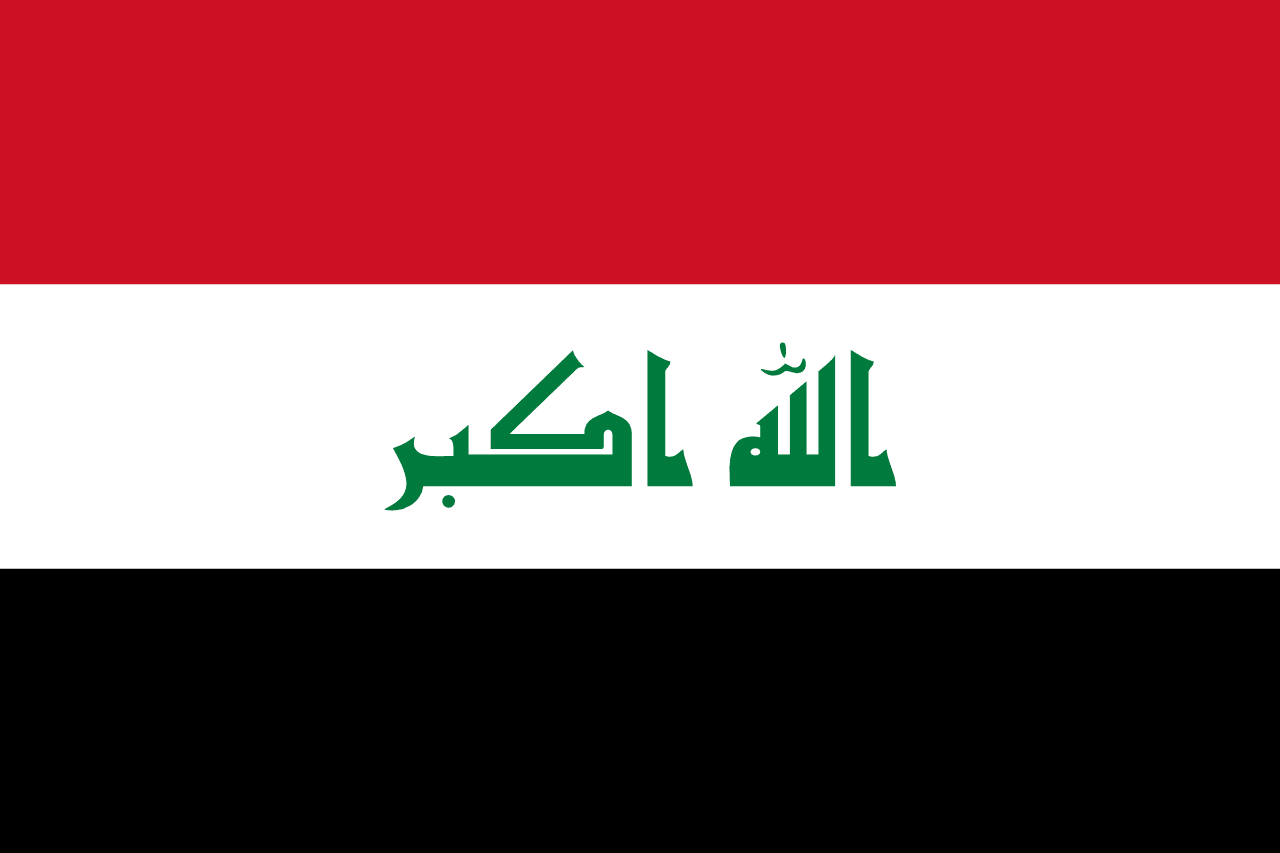
Iraq
Three horizontal stripes of red, white, and black (Pan-Arab colors) with 'Allahu Akbar' (God is Greatest) written in green Arabic Kufic script across the white stripe, representing Arab unity, Islamic faith, and Iraqi sovereignty.
- Adoption
- Adopted: 2008
- Continent
- Continent: Asia

Ireland
Three equal vertical stripes of green, white, and orange, representing the hope for peace between the Catholic and Protestant communities of Ireland, with the tricolor symbolizing unity and the aspiration for a harmonious Irish nation.
- Adoption
- Adopted: 1922
- Continent
- Continent: Europe
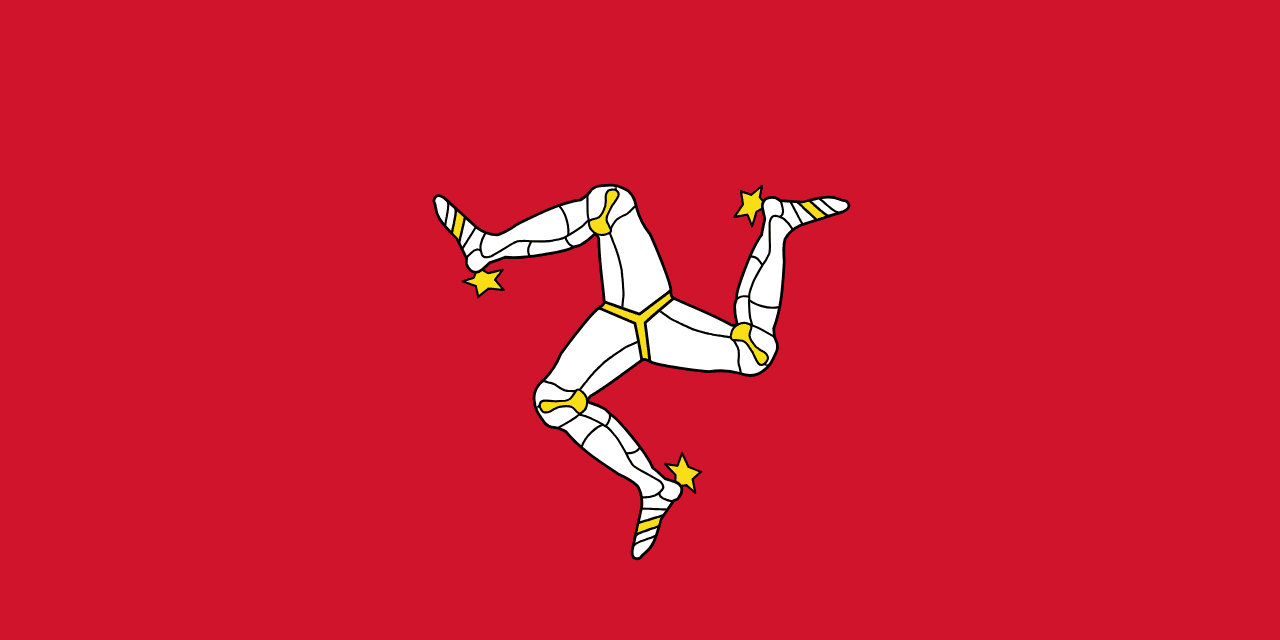
Isle of Man
Red field featuring the ancient Celtic triskelion symbol of three armored legs, representing strength and resilience.
- Adoption
- Adopted: 1932
- Continent
- Continent: Europe
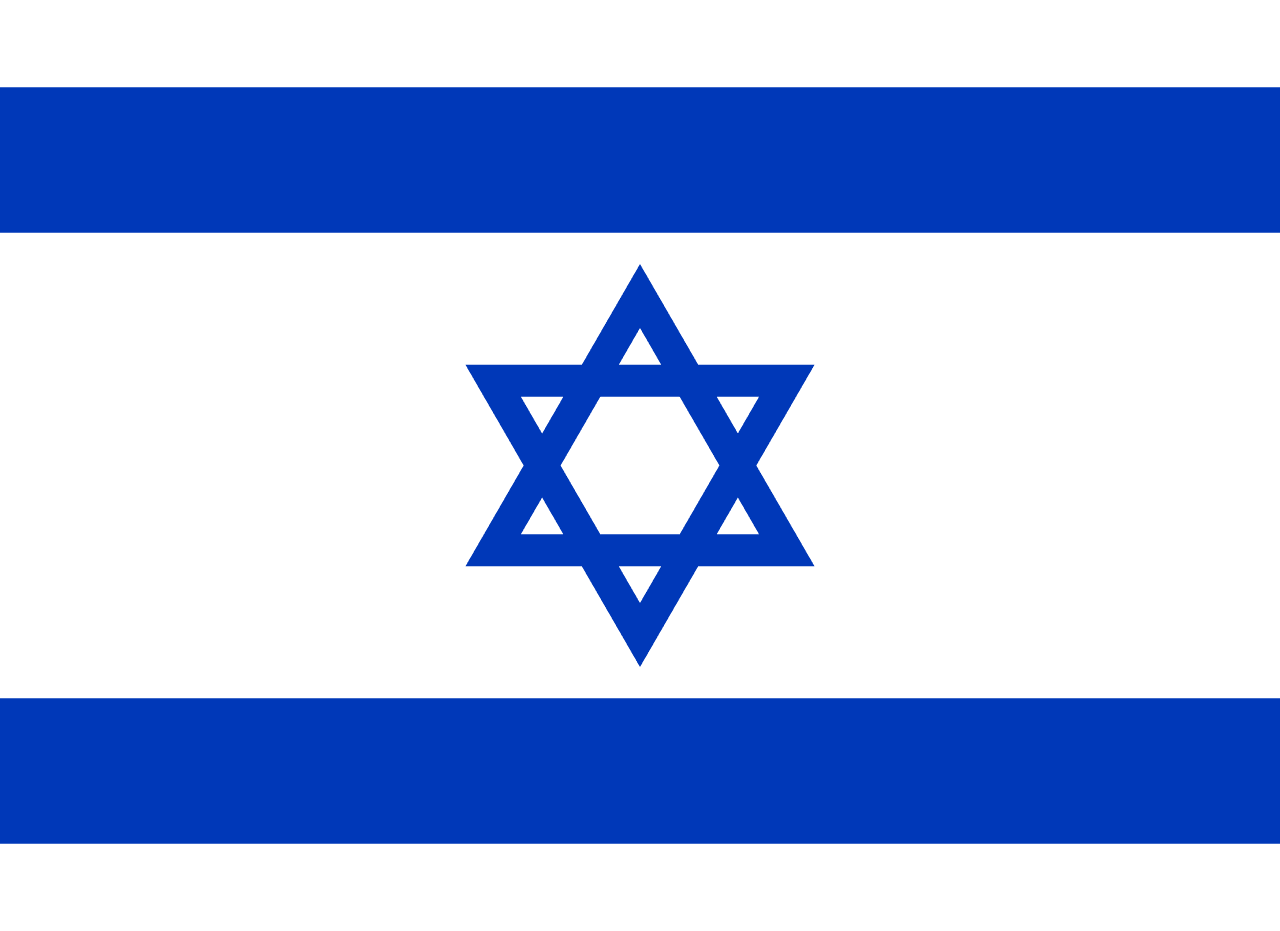
Israel
A white field with two horizontal blue stripes near the top and bottom edges and a blue Star of David (Magen David) in the center, based on the design of the traditional Jewish prayer shawl (tallit) and representing Jewish heritage and the modern State of Israel.
- Adoption
- Adopted: 1948
- Continent
- Continent: Asia

Italy
Three equal vertical stripes of green, white, and red, known as 'Il Tricolore,' representing the Italian Republic and embodying the values of hope, faith, and charity that unite the Italian peninsula.
- Adoption
- Adopted: 1946
- Continent
- Continent: Europe
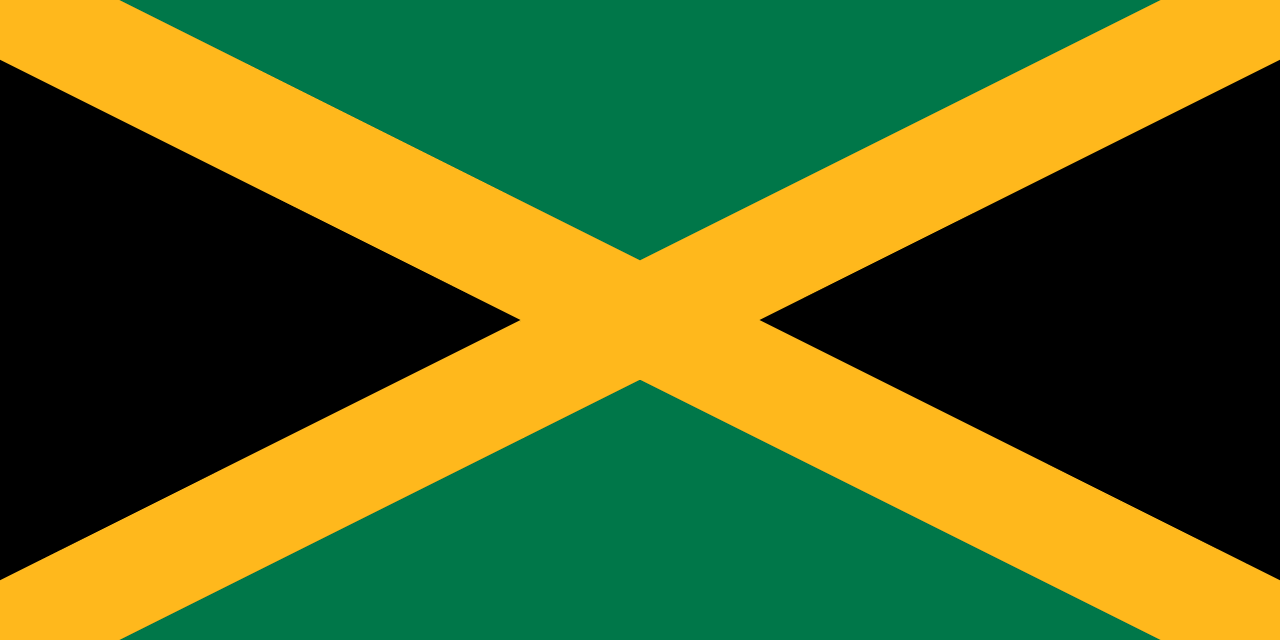
Jamaica
A diagonal cross pattern dividing the flag into four triangles, with green triangles at top and bottom, black triangles at hoist and fly, and yellow diagonal cross, symbolizing the natural beauty, strength of the people, and golden sunshine of Jamaica.
- Adoption
- Adopted: 1962
- Continent
- Continent: North America
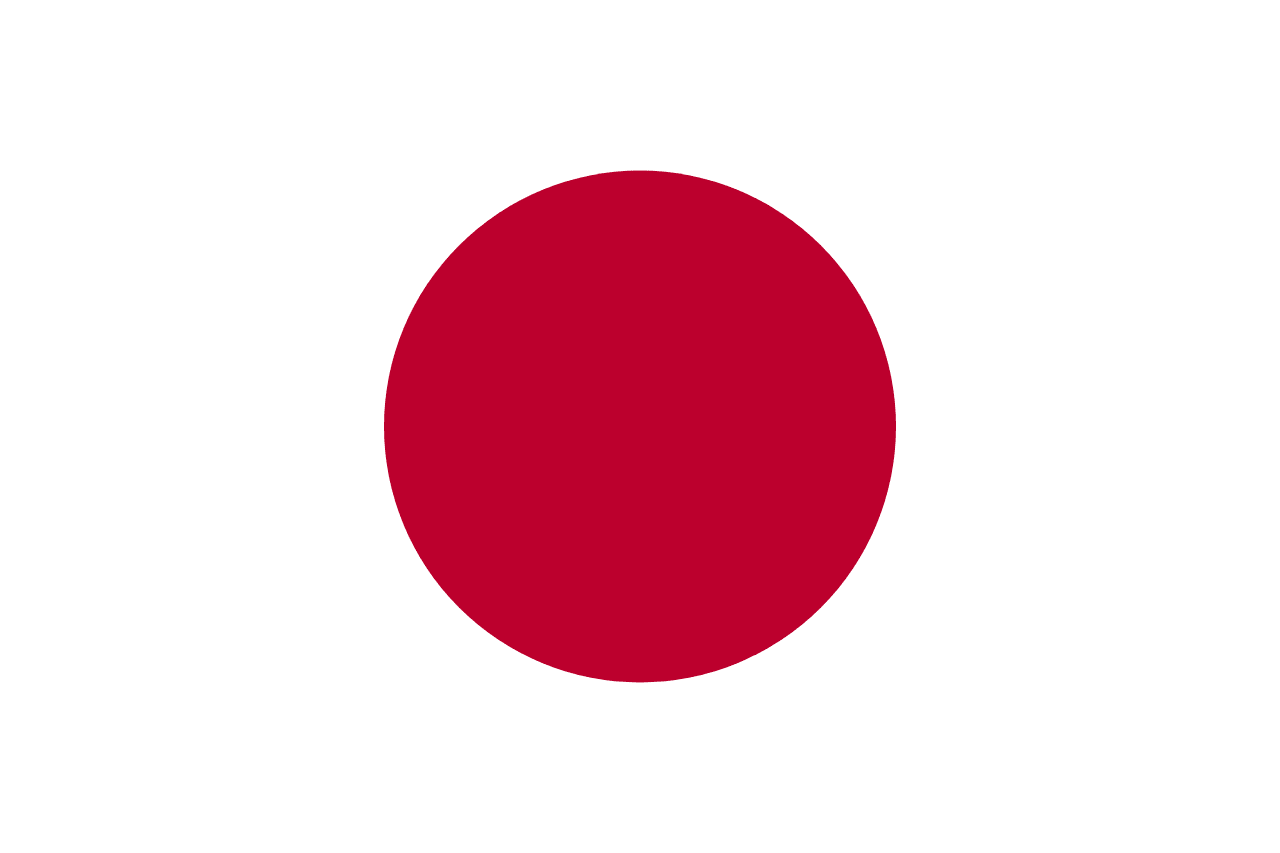
Japan
Hinomaru - the rising sun disc on white field, one of the world's oldest flag designs representing Japan as the 'Land of the Rising Sun'.
- Adoption
- Adopted: 1999
- Continent
- Continent: Asia
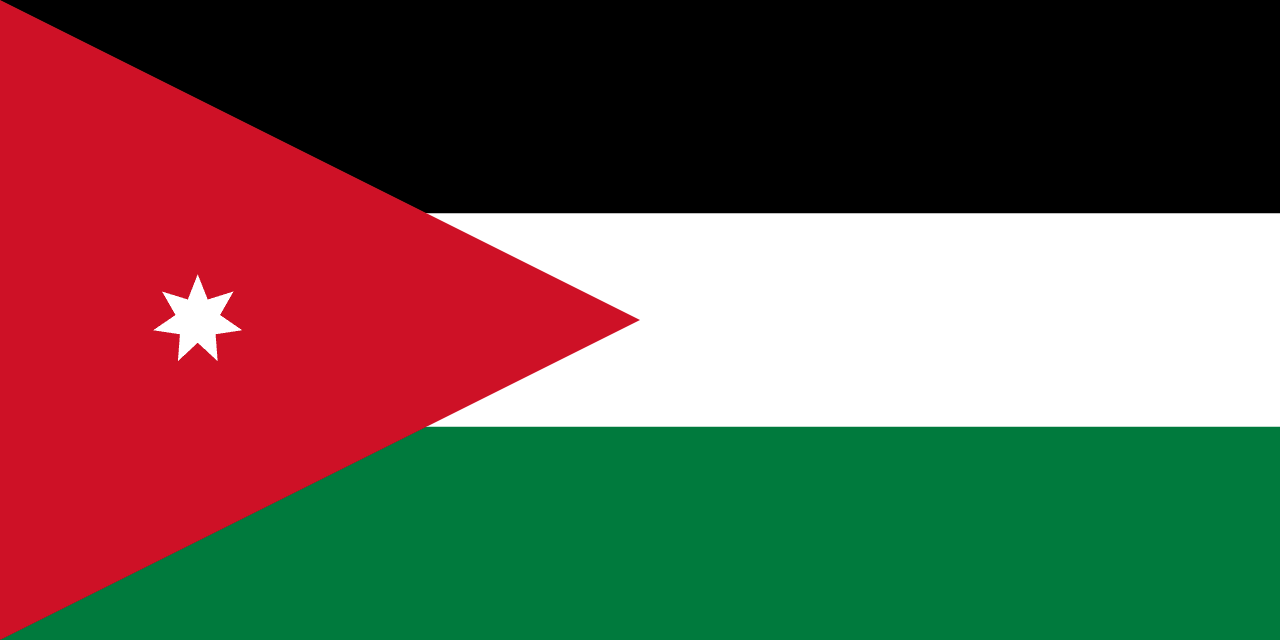
Jordan
Three horizontal stripes of black, white, and green with a red triangle on the hoist side containing a seven-pointed white star, representing the Arab Revolt heritage and the Hashemite Kingdom's role as guardian of Islamic holy sites.
- Adoption
- Adopted: 1928
- Continent
- Continent: Asia
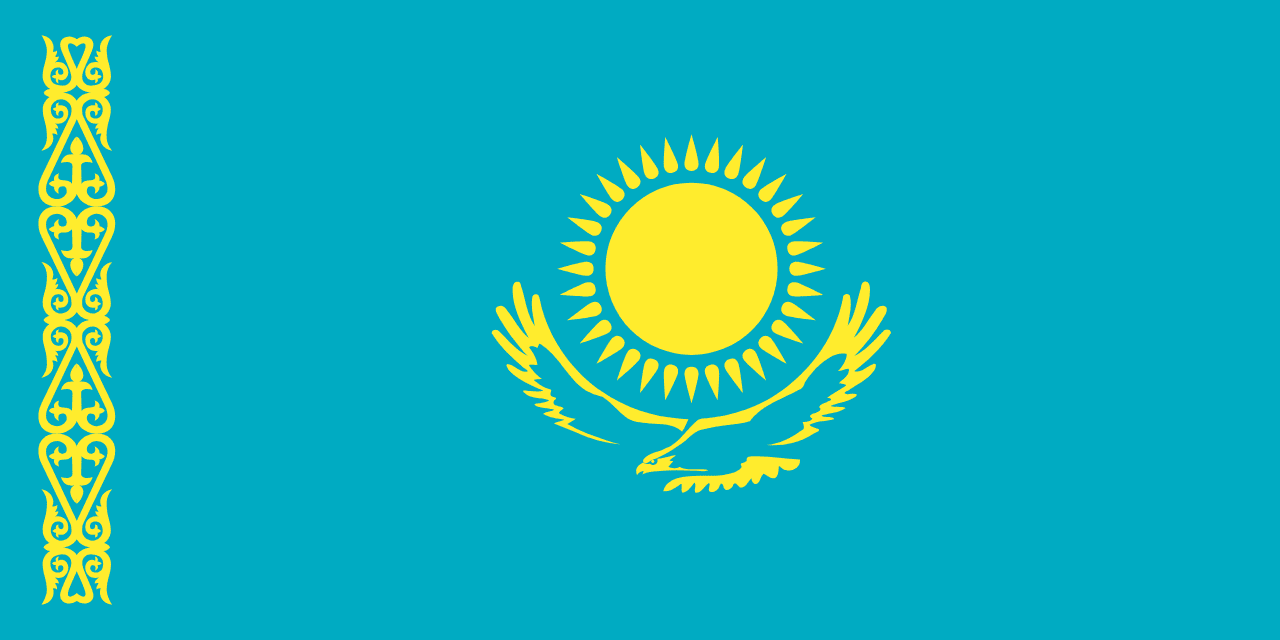
Kazakhstan
A turquoise field with a golden sun and soaring eagle in the center, and a traditional ornamental pattern on the hoist side, representing the eternal blue sky, freedom, and the rich nomadic heritage of the world's largest landlocked country.
- Adoption
- Adopted: 1992
- Continent
- Continent: Asia
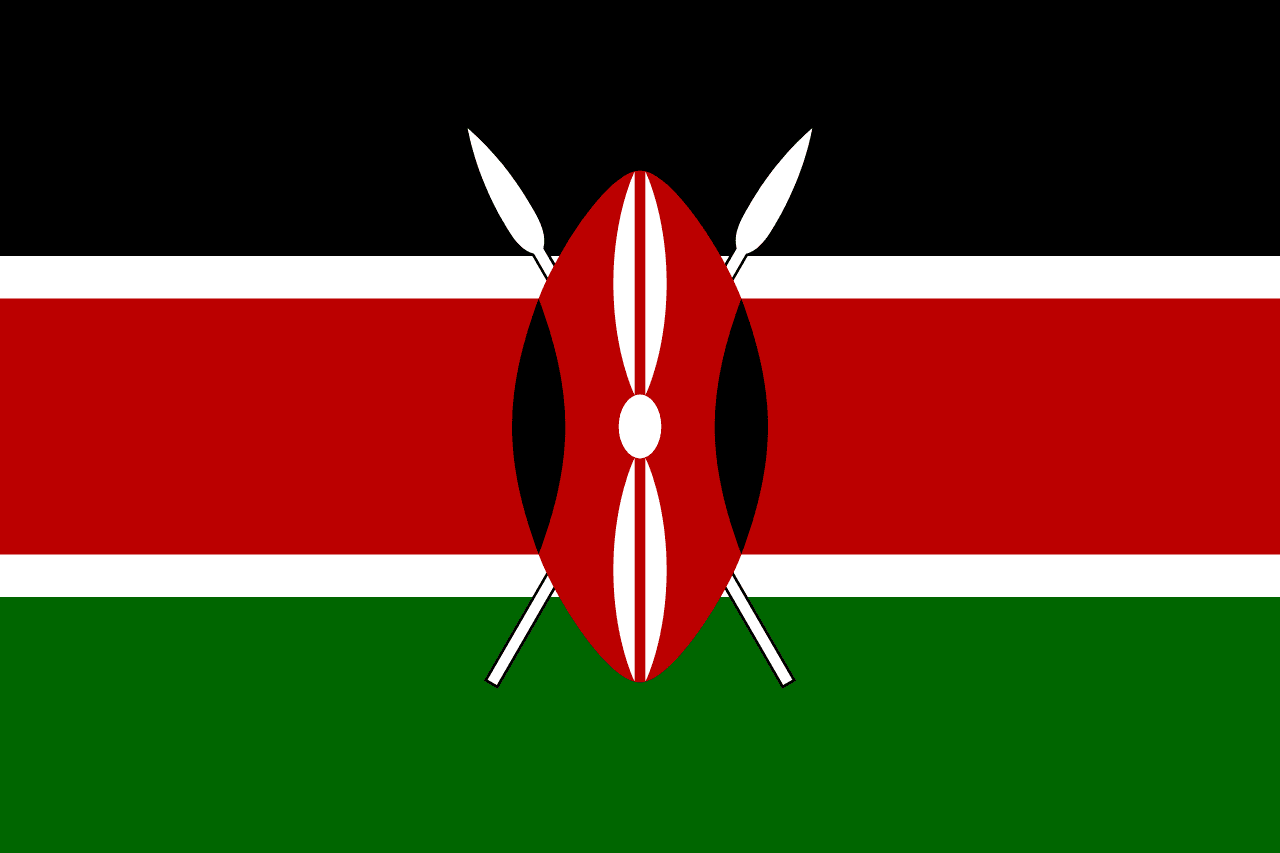
Kenya
Three horizontal stripes of black, red, and green separated by narrow white stripes, with a traditional Maasai shield and two crossed spears centered on the flag, representing Kenya's struggle for independence and the defense of freedom.
- Adoption
- Adopted: 1963
- Continent
- Continent: Africa
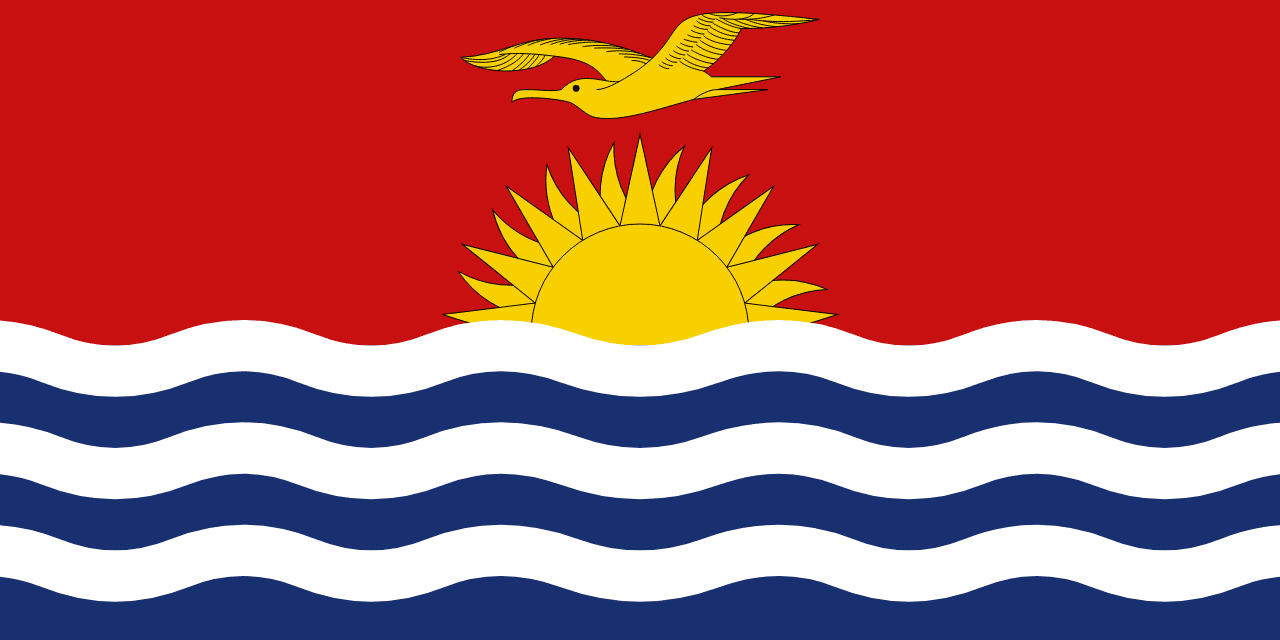
Kiribati
A red upper field with a golden frigatebird flying over a rising sun above blue and white wavy stripes, representing the Pacific sunrise, ocean waves, and the unique geography of this coral atoll nation spread across the international dateline.
- Adoption
- Adopted: 1979
- Continent
- Continent: Oceania
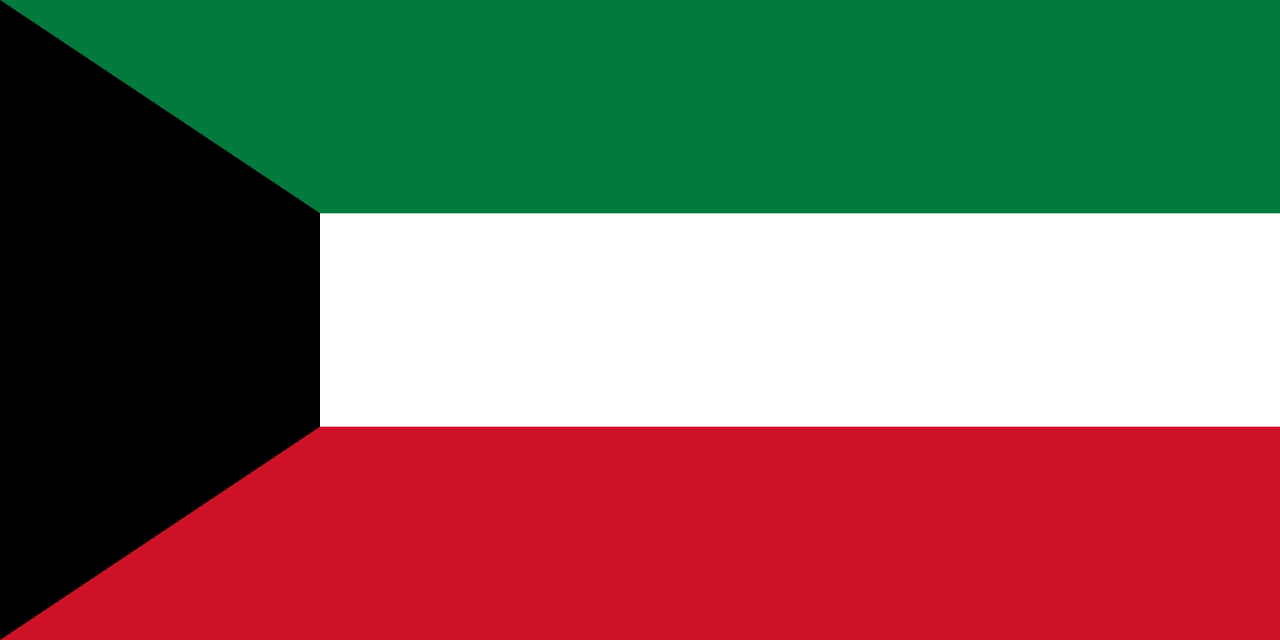
Kuwait
Three horizontal stripes of green, white, and red with a black trapezoid on the hoist side, representing Kuwait's position in the Arab world and its transformation from pearl diving to oil wealth in the Arabian Gulf.
- Adoption
- Adopted: 1961
- Continent
- Continent: Asia
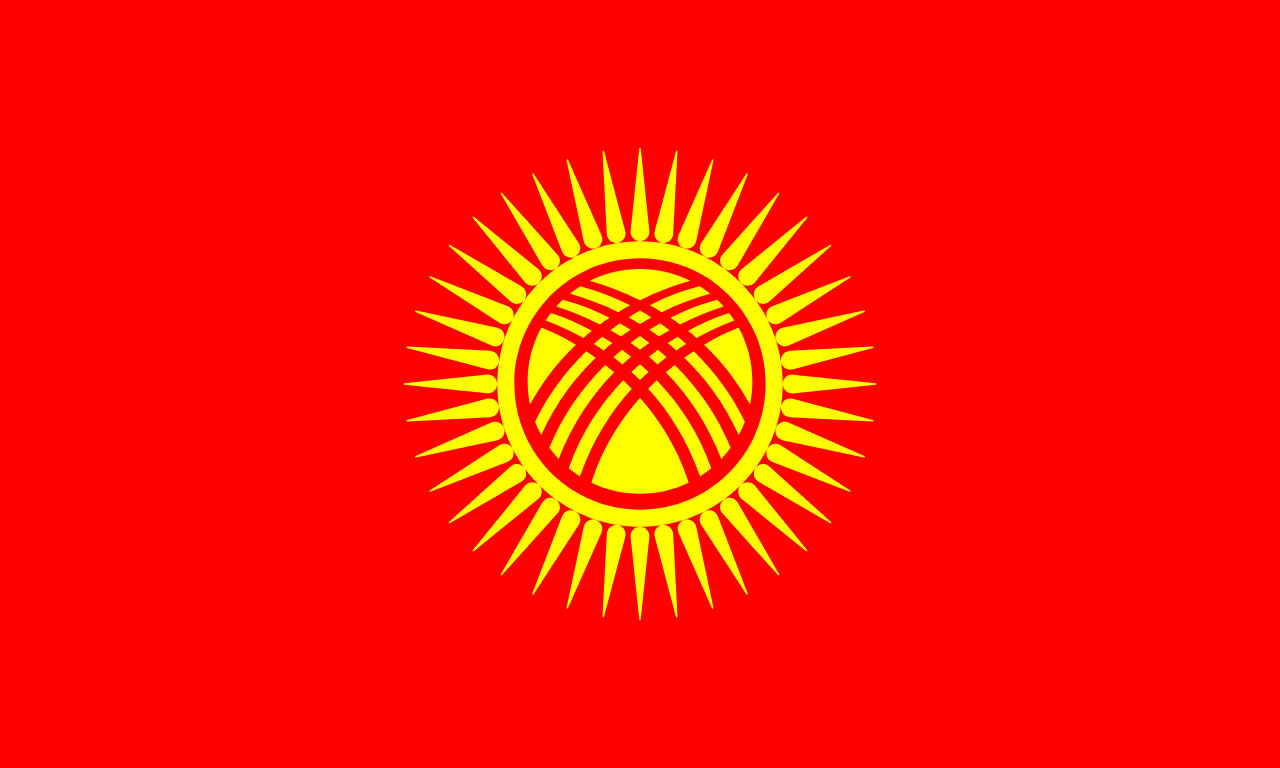
Kyrgyzstan
A red field with a yellow sun featuring 40 rays and a tunduk (yurt crown) in the center, representing the nomadic heritage, unity of 40 tribes, and the traditional dwelling of the Kyrgyz people in this mountainous Central Asian nation.
- Adoption
- Adopted: 1992
- Continent
- Continent: Asia
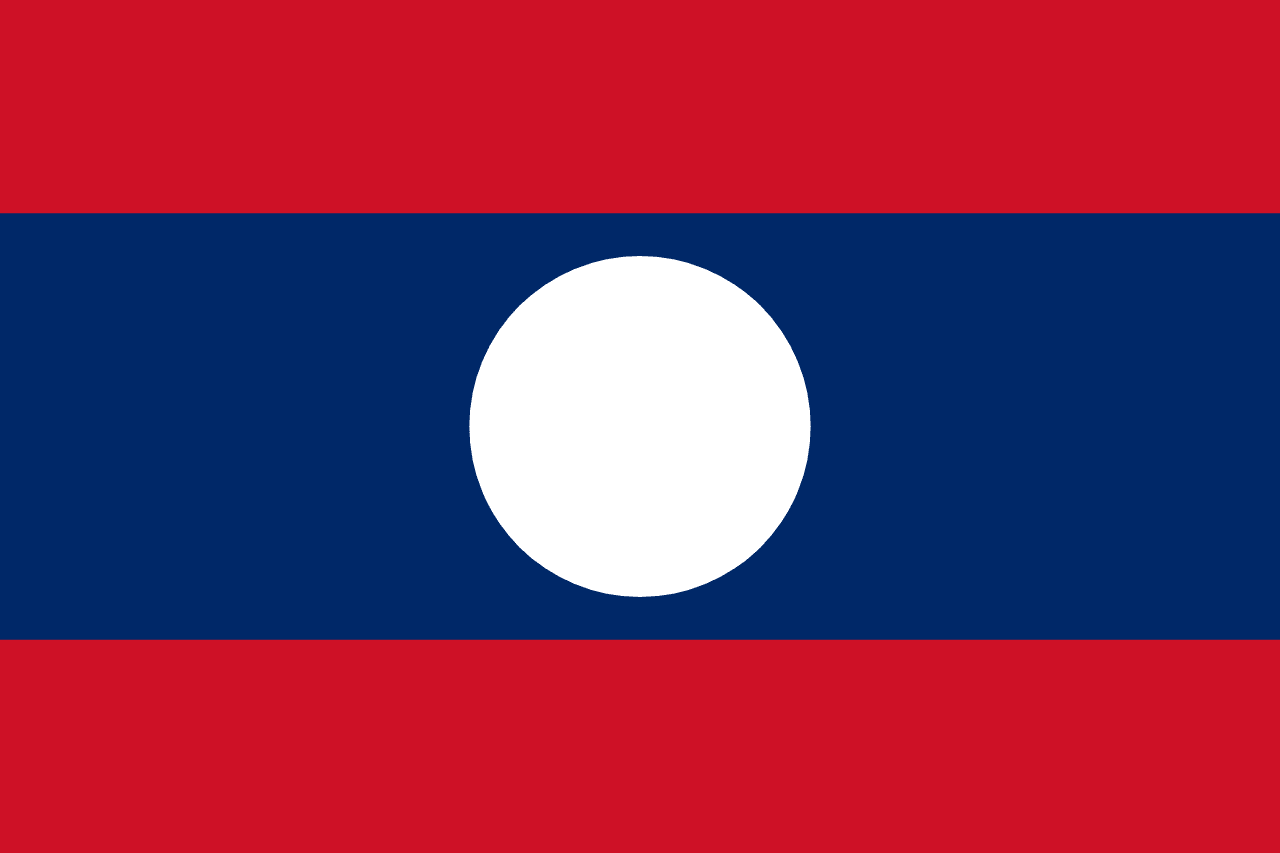
Laos
Three horizontal stripes of red, blue, and red with a white circle centered on the blue stripe, representing the blood of independence, the Mekong River, and the full moon reflecting unity of the Lao people.
- Adoption
- Adopted: 1975
- Continent
- Continent: Asia

Latvia
Three horizontal stripes with dark red (maroon) stripes on top and bottom and a narrow white stripe in the center, representing one of the world's oldest flag designs dating back to medieval times and Latvia's struggle for independence.
- Adoption
- Adopted: 1990
- Continent
- Continent: Europe
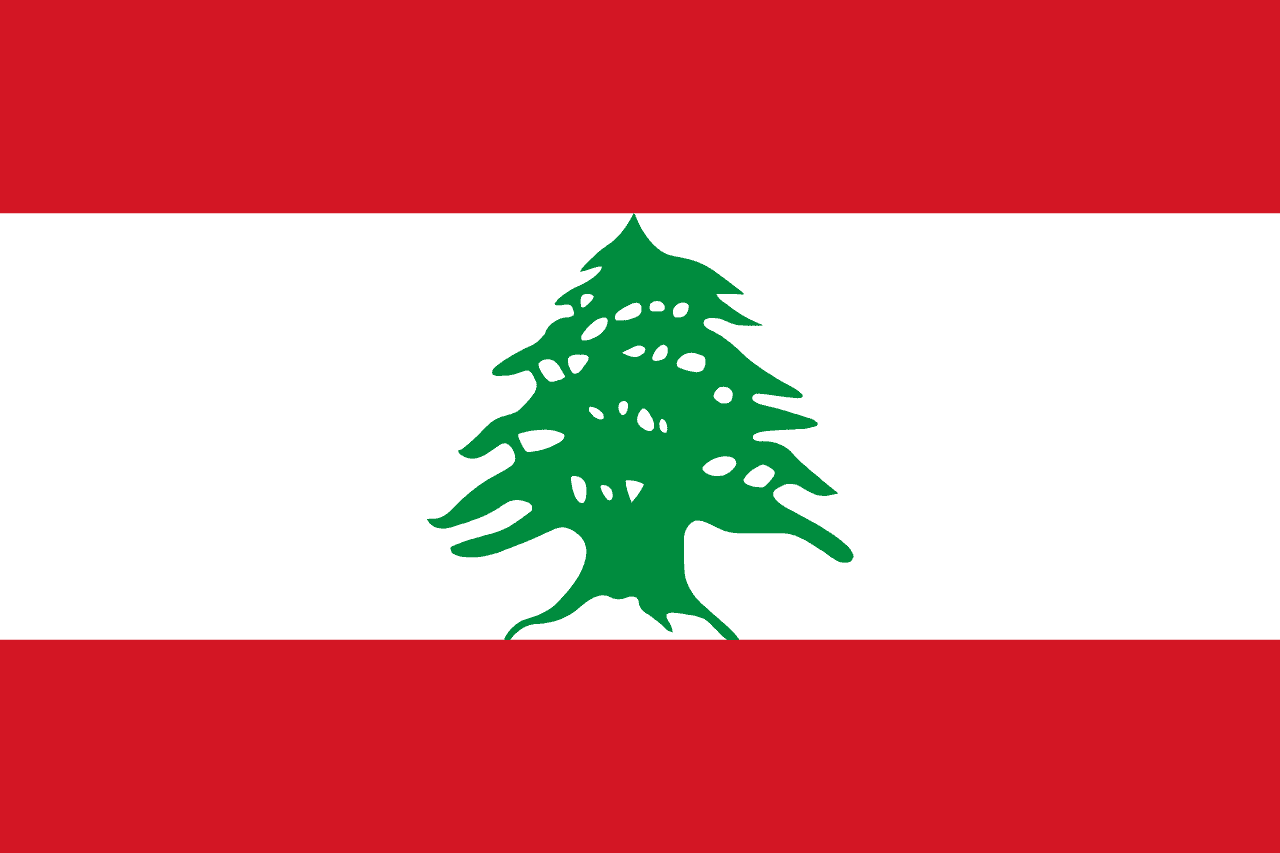
Lebanon
Two horizontal red stripes separated by a white stripe twice their width, with a green cedar tree centered on the white stripe, representing the strength, purity, and eternal heritage of the 'Land of the Cedars.'
- Adoption
- Adopted: 1943
- Continent
- Continent: Asia
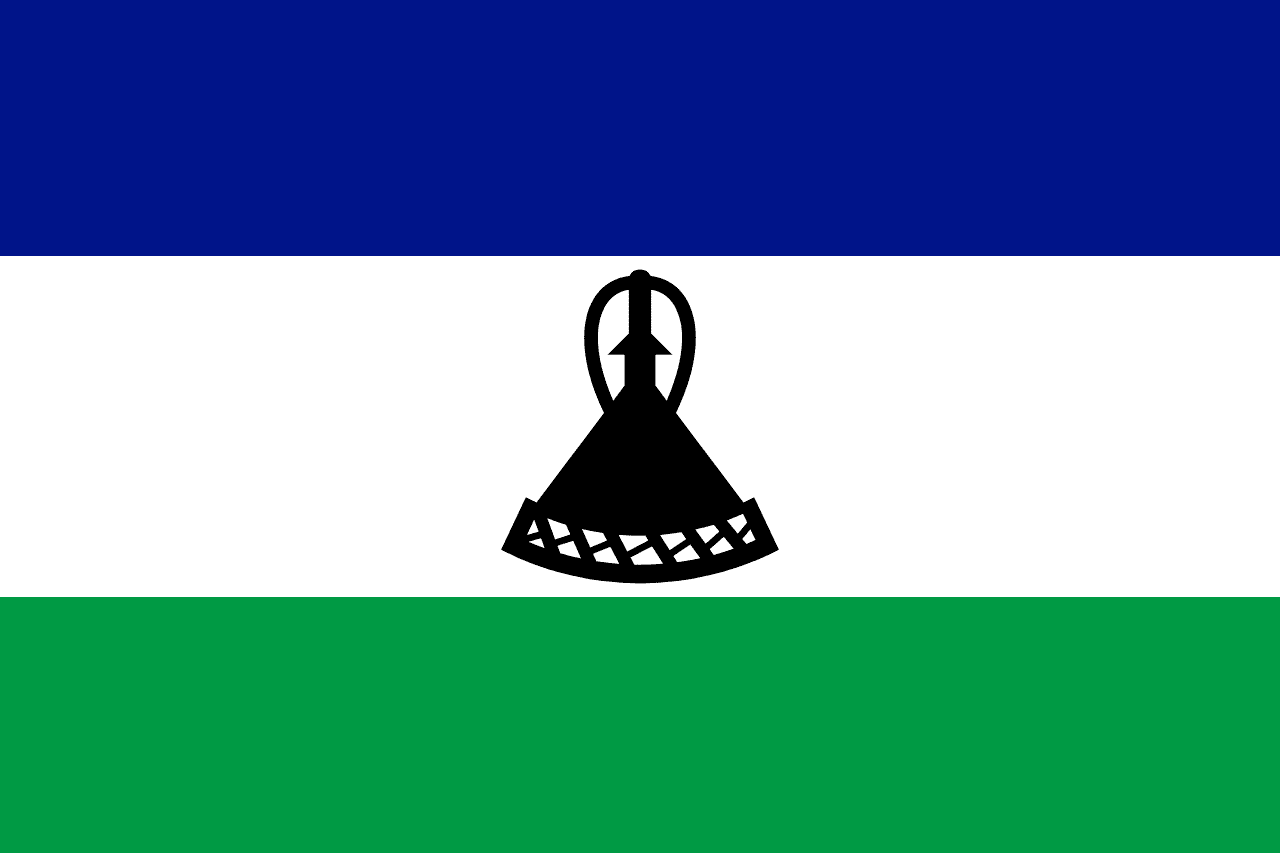
Lesotho
Three horizontal stripes of blue, white, and green with a black traditional Basotho hat (mokorotlo) centered on the white stripe, representing peace, rain, prosperity, and the cultural heritage of this mountain kingdom completely surrounded by South Africa.
- Adoption
- Adopted: 2006
- Continent
- Continent: Africa
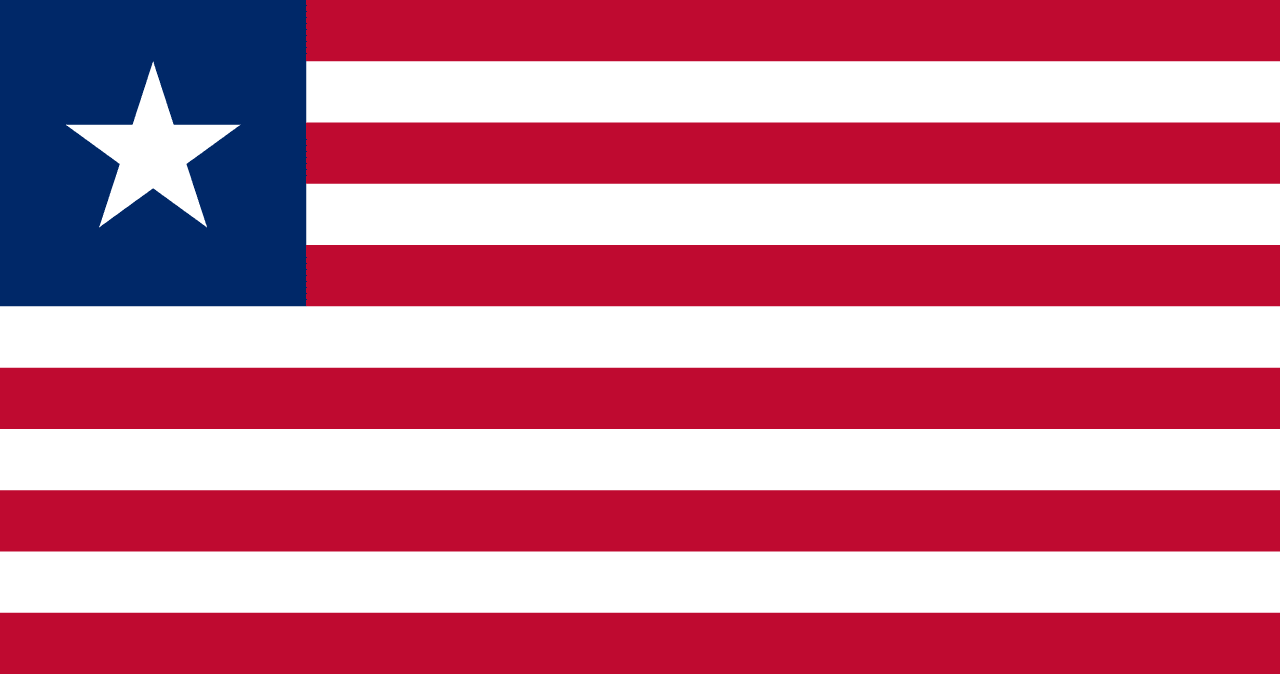
Liberia
Eleven alternating red and white stripes with a blue canton containing a single white five-pointed star, representing Africa's first republic founded by freed American slaves and its role as a beacon of freedom on the continent.
- Adoption
- Adopted: 1847
- Continent
- Continent: Africa
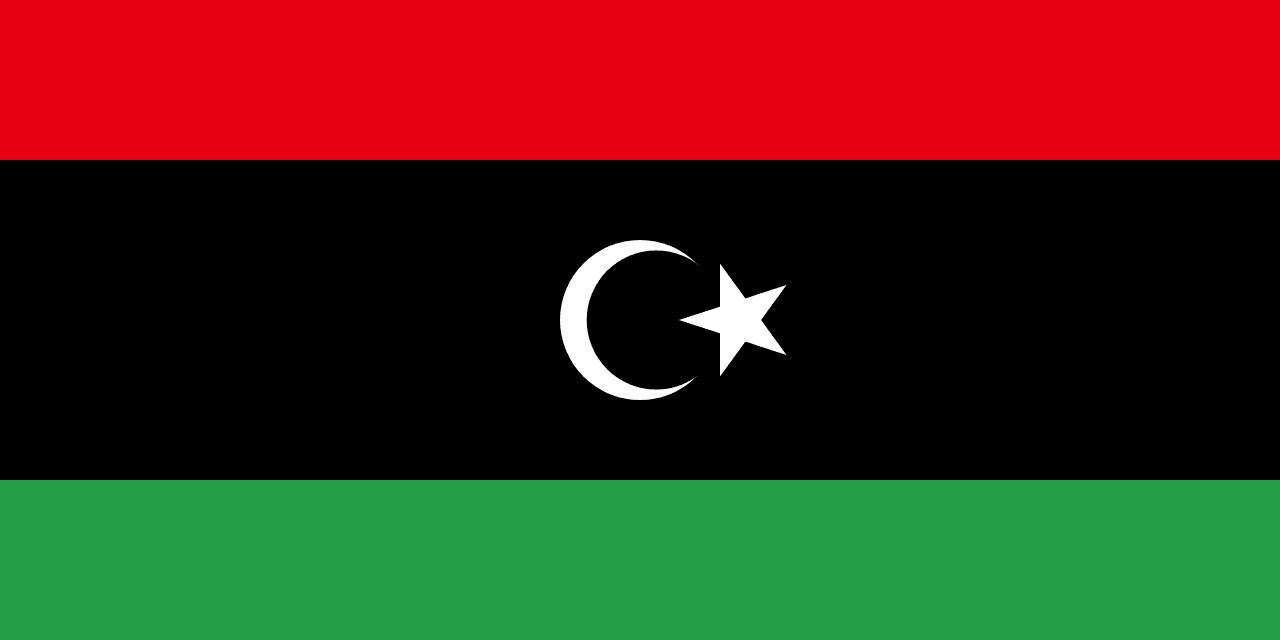
Libya
Three horizontal stripes of red, black, and green with a white crescent and five-pointed star centered on the black stripe, representing Libya's return to its royal heritage after the 2011 revolution and the unity of its three historical regions.
- Adoption
- Adopted: 2011
- Continent
- Continent: Africa
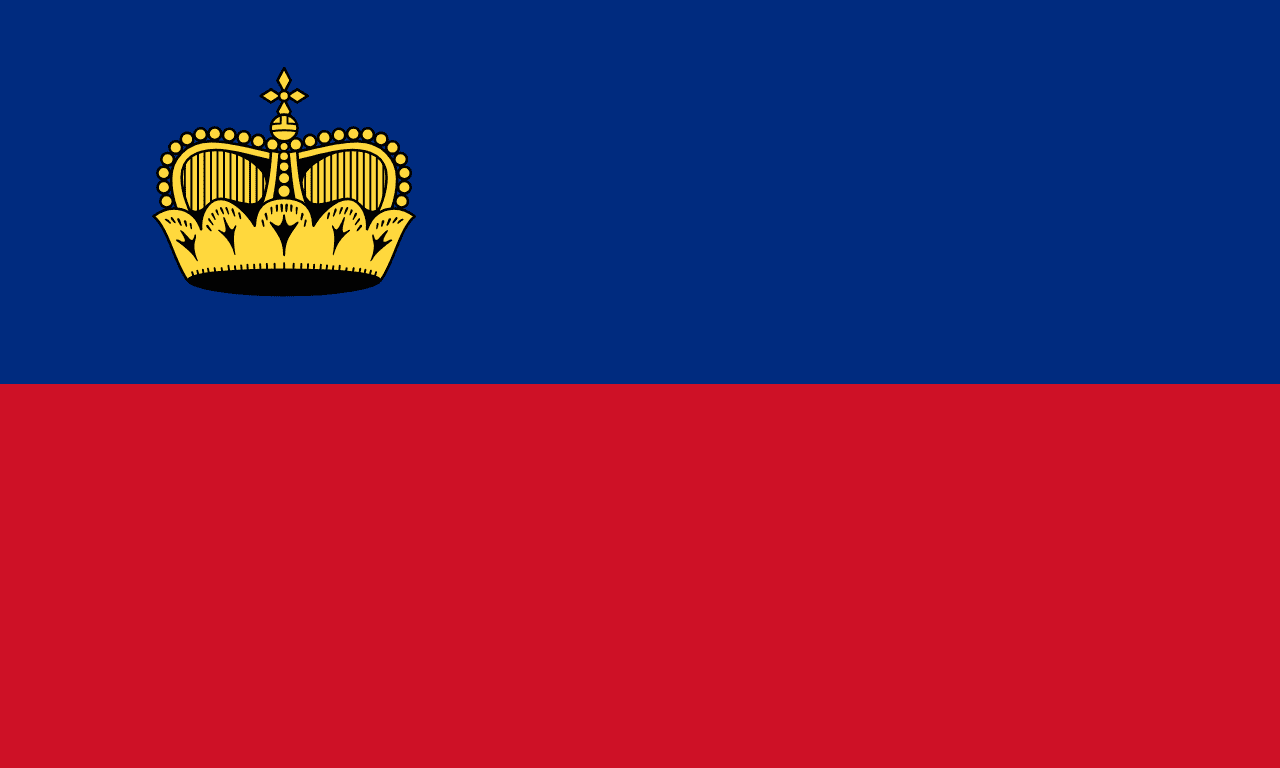
Liechtenstein
Two horizontal stripes of blue and red with a golden crown in the upper left corner, representing this Alpine principality that is one of the world's smallest and wealthiest nations.
- Adoption
- Adopted: 1937
- Continent
- Continent: Europe

Lithuania
Three horizontal stripes of yellow, green, and red representing the golden wheat fields, green forests, and blood shed for independence of this Baltic nation that led the peaceful dissolution of the Soviet Union.
- Adoption
- Adopted: 1989
- Continent
- Continent: Europe
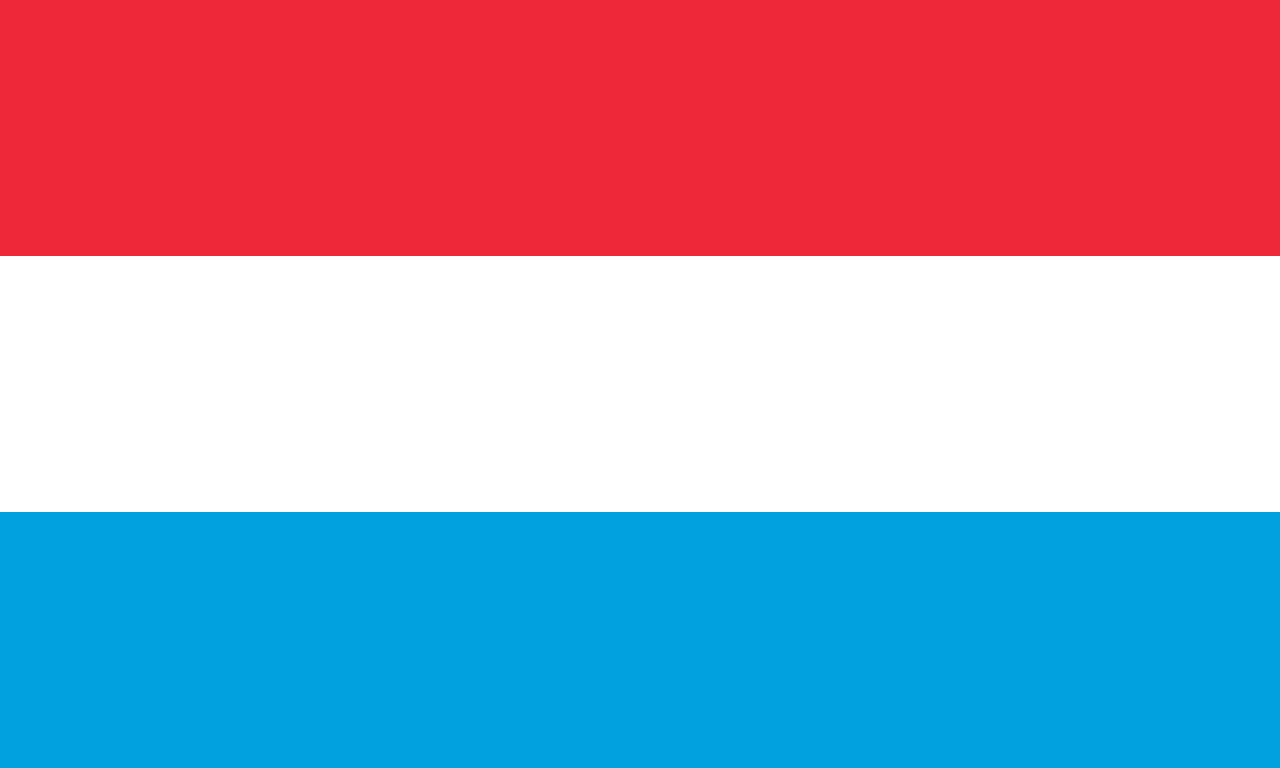
Luxembourg
Three horizontal stripes of red, white, and light blue representing the Grand Duchy of Luxembourg, one of Europe's smallest but wealthiest nations and a founding member of the European Union.
- Adoption
- Adopted: 1972
- Continent
- Continent: Europe
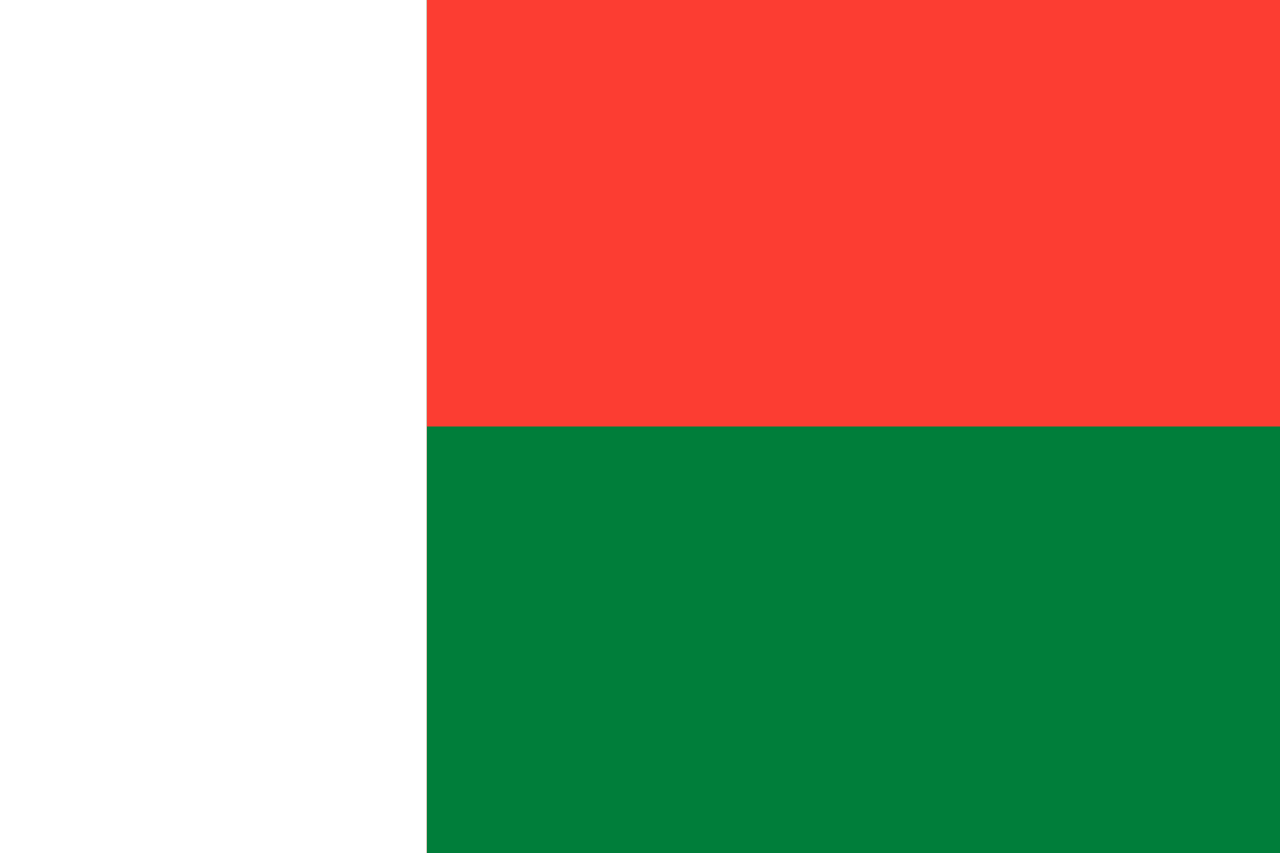
Madagascar
A white vertical stripe on the hoist side with two horizontal stripes of red and green on the fly side, representing the diverse heritage of the Malagasy people and the unique natural environment of the world's fourth-largest island.
- Adoption
- Adopted: 1958
- Continent
- Continent: Africa
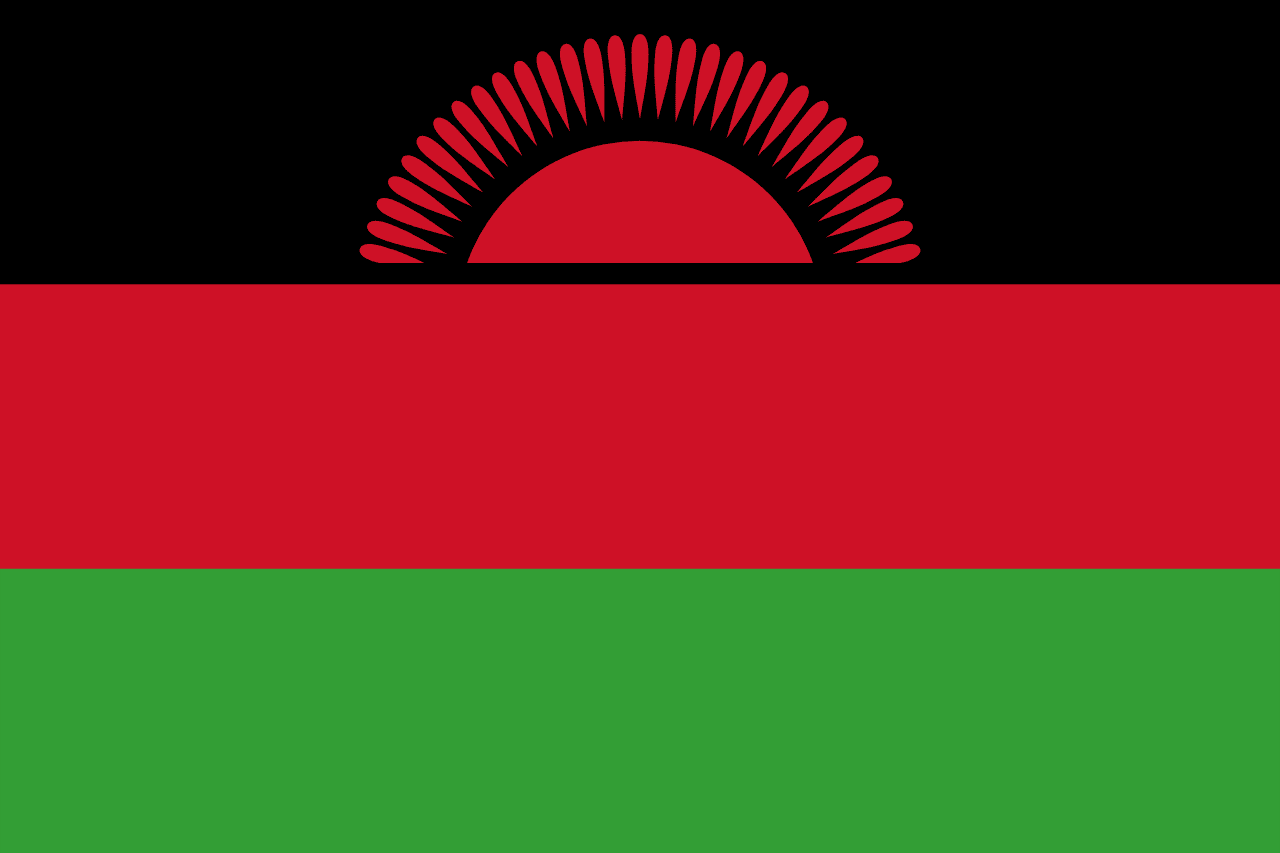
Malawi
Three horizontal stripes of black, red, and green with a red rising sun in the upper left corner, representing the African people, the blood of freedom fighters, the land's fertility, and the dawn of freedom and hope.
- Adoption
- Adopted: 1964
- Continent
- Continent: Africa

Malaysia
Fourteen alternating red and white stripes with a blue canton containing a yellow crescent and 14-pointed star, representing the federation of Malaysian states and territories united under Islam and royal authority.
- Adoption
- Adopted: 1963
- Continent
- Continent: Asia
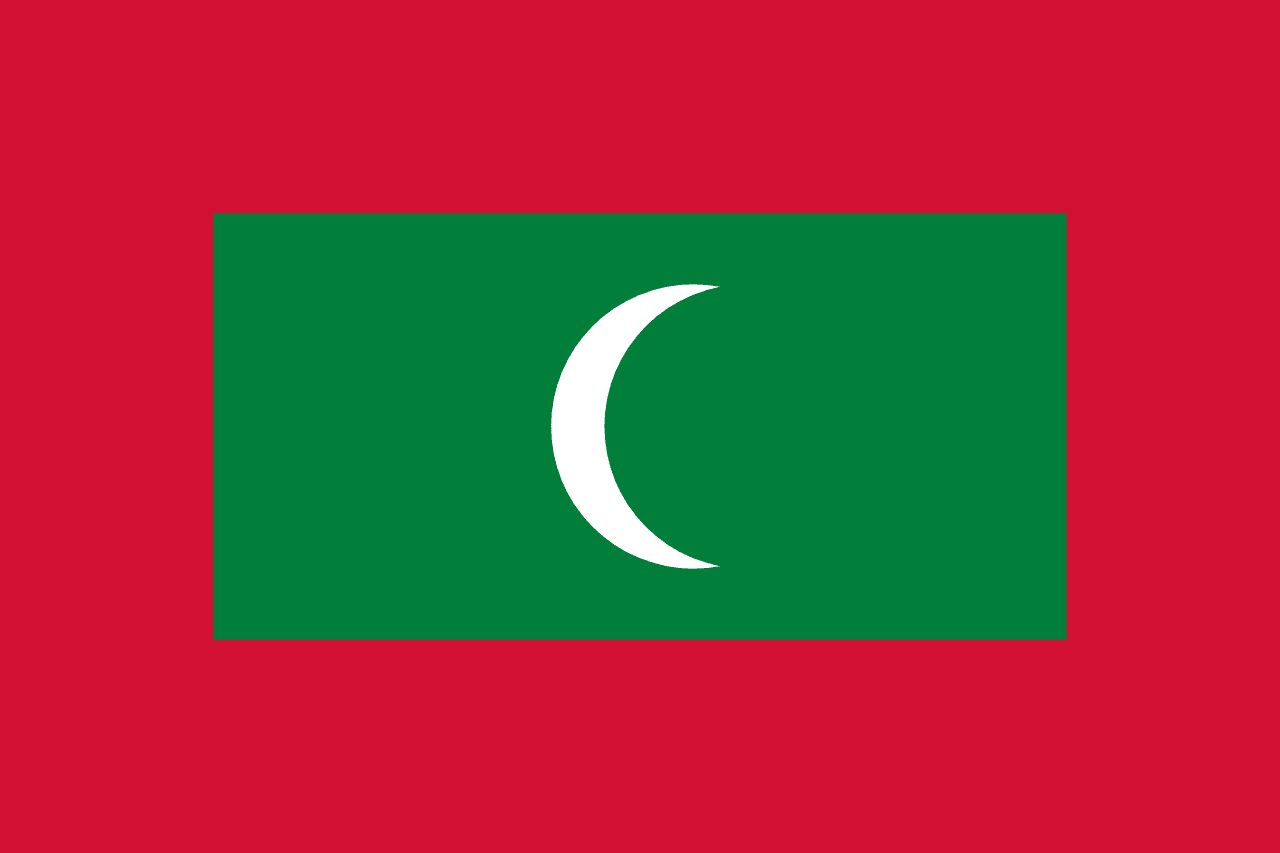
Maldives
A green rectangle centered on a red field with a white crescent facing the hoist, representing Islam, the peace of the islands, and the blood of heroes who defended this coral atoll nation in the Indian Ocean.
- Adoption
- Adopted: 1965
- Continent
- Continent: Asia
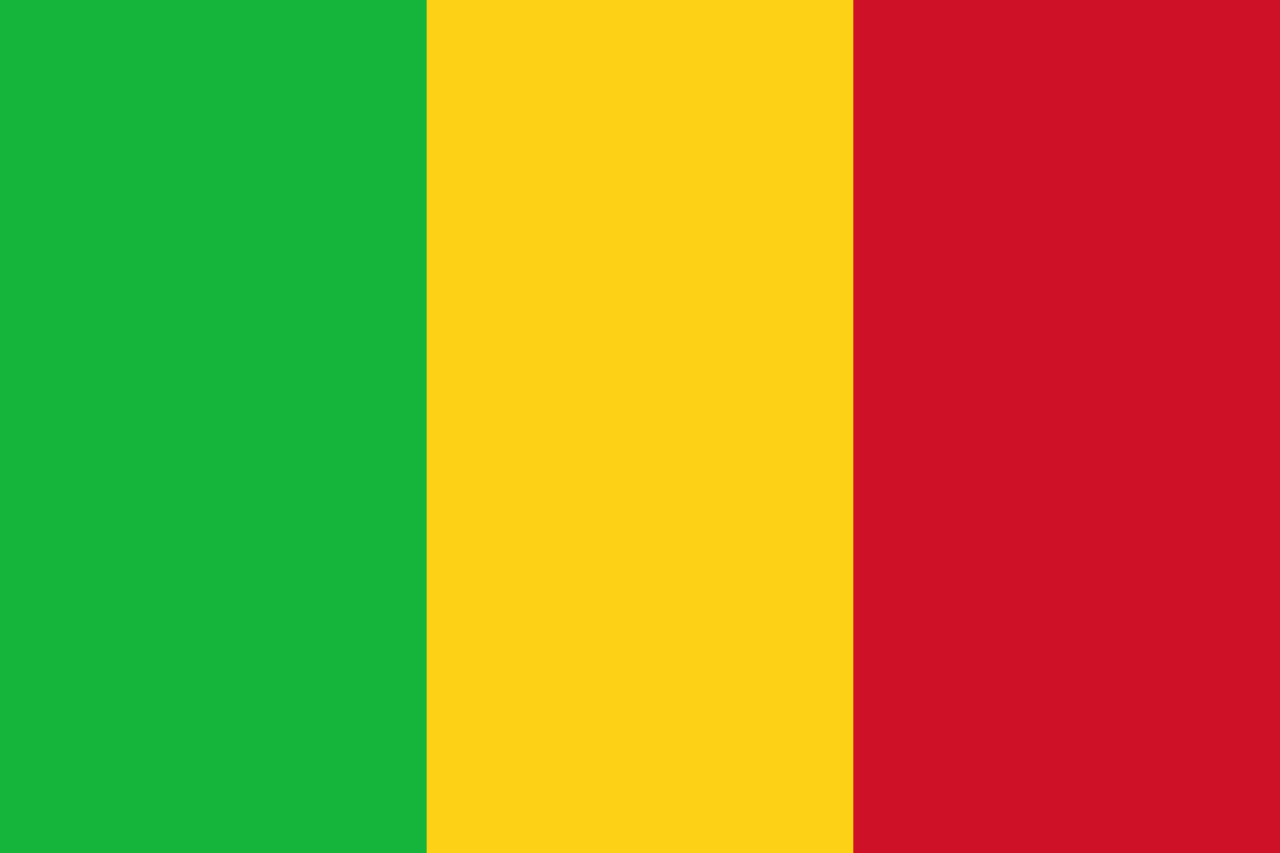
Mali
Three vertical stripes of green, yellow, and red representing Mali's agricultural potential, mineral wealth, and the blood of independence fighters, connecting modern Mali to both Pan-African ideals and its legacy as home to medieval Africa's greatest empires.
- Adoption
- Adopted: 1961
- Continent
- Continent: Africa

Malta
Two vertical stripes of white and red with the George Cross in the upper left corner, representing Malta's courage during World War II and its historical significance in the Mediterranean.
- Adoption
- Adopted: 1964
- Continent
- Continent: Europe
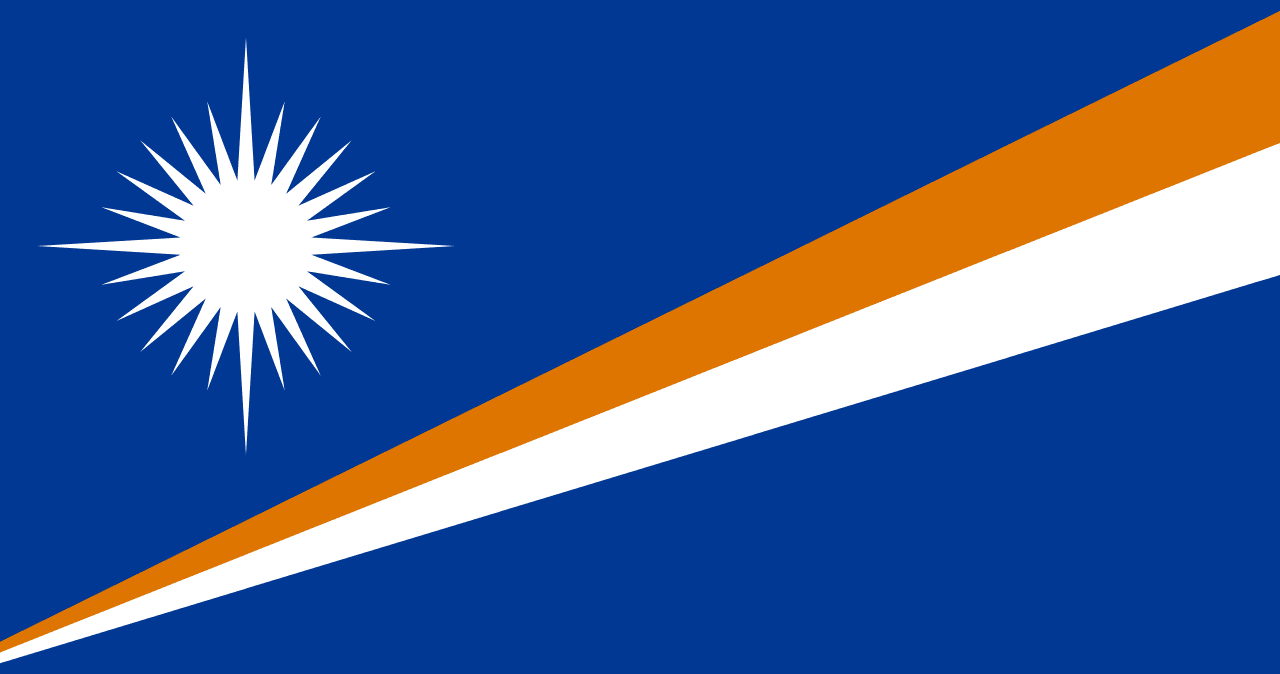
Marshall Islands
A blue field with diagonal orange and white stripes extending from the lower left, and a white 24-pointed star in the upper left corner, representing the Pacific Ocean, the island chains, and the Christian faith of this coral atoll nation.
- Adoption
- Adopted: 1979
- Continent
- Continent: Oceania
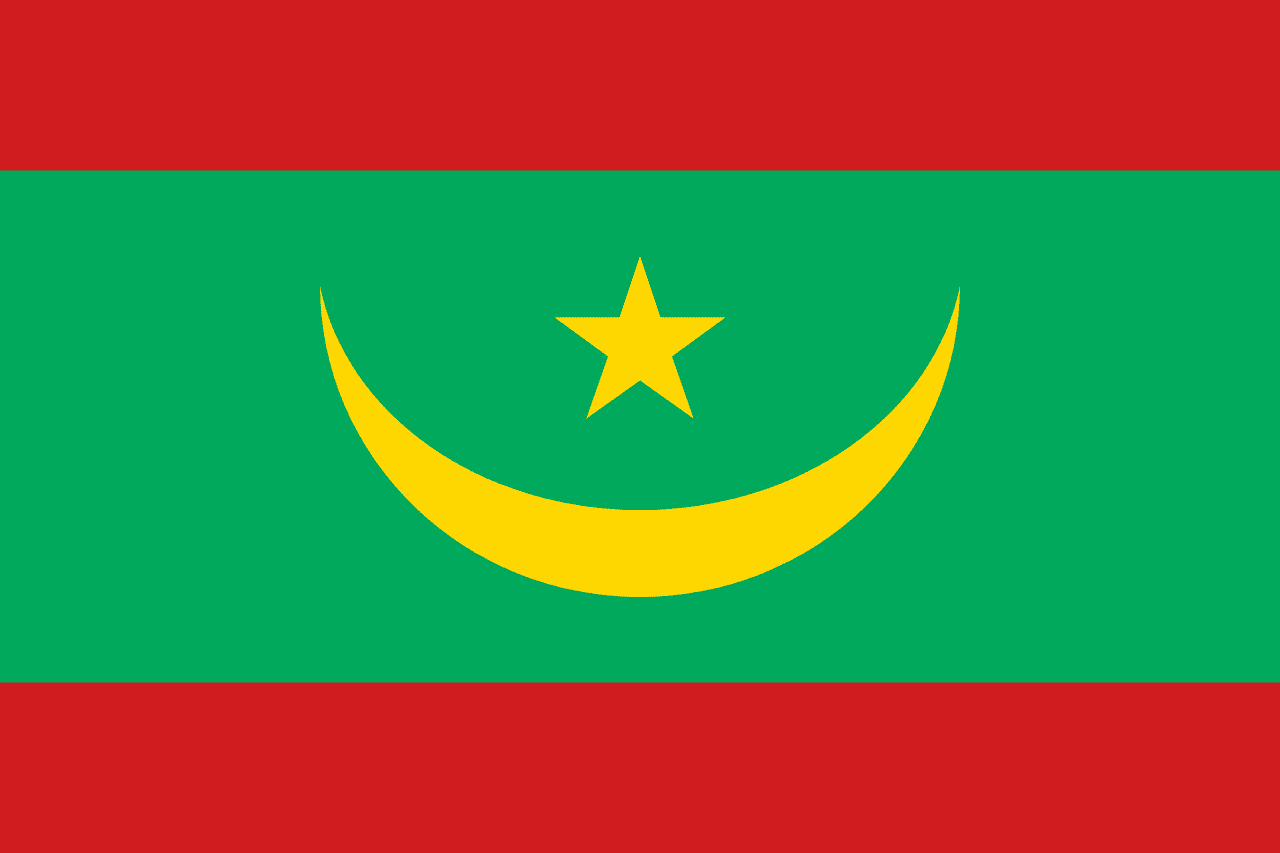
Mauritania
A green field with yellow crescent and star, bordered by red stripes at top and bottom, representing Mauritania's Islamic identity, the Sahara Desert, and the blood of those who defended the nation.
- Adoption
- Adopted: 2017
- Continent
- Continent: Africa
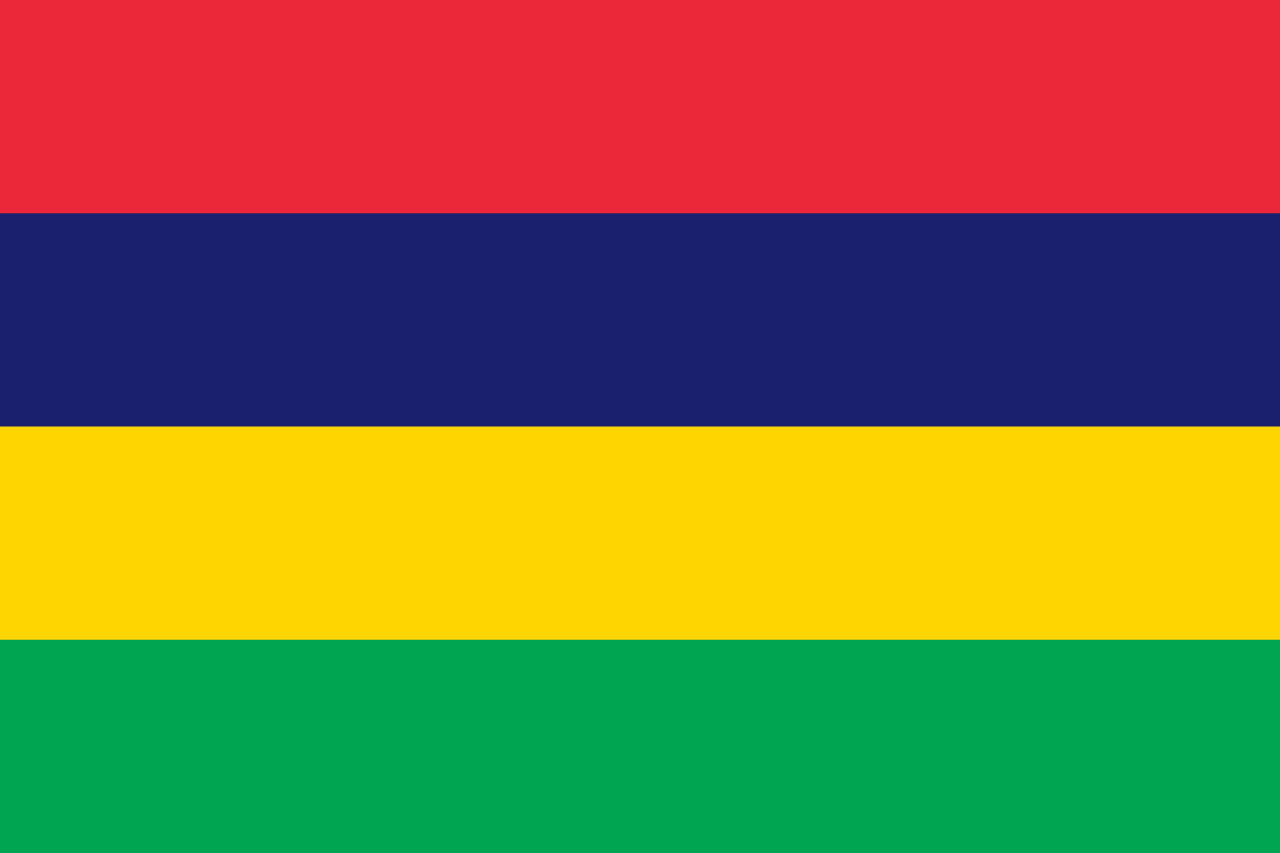
Mauritius
Four horizontal stripes of red, blue, yellow, and green representing the struggle for independence, the Indian Ocean, the bright future, and the lush vegetation of this successful island democracy.
- Adoption
- Adopted: 1968
- Continent
- Continent: Africa

Mexico
Three vertical stripes of green, white, and red with the Mexican coat of arms centered on the white stripe, featuring an eagle perched on a cactus devouring a serpent, representing the Aztec founding legend of Tenochtitlan and Mexican independence.
- Adoption
- Adopted: 1968
- Continent
- Continent: North America
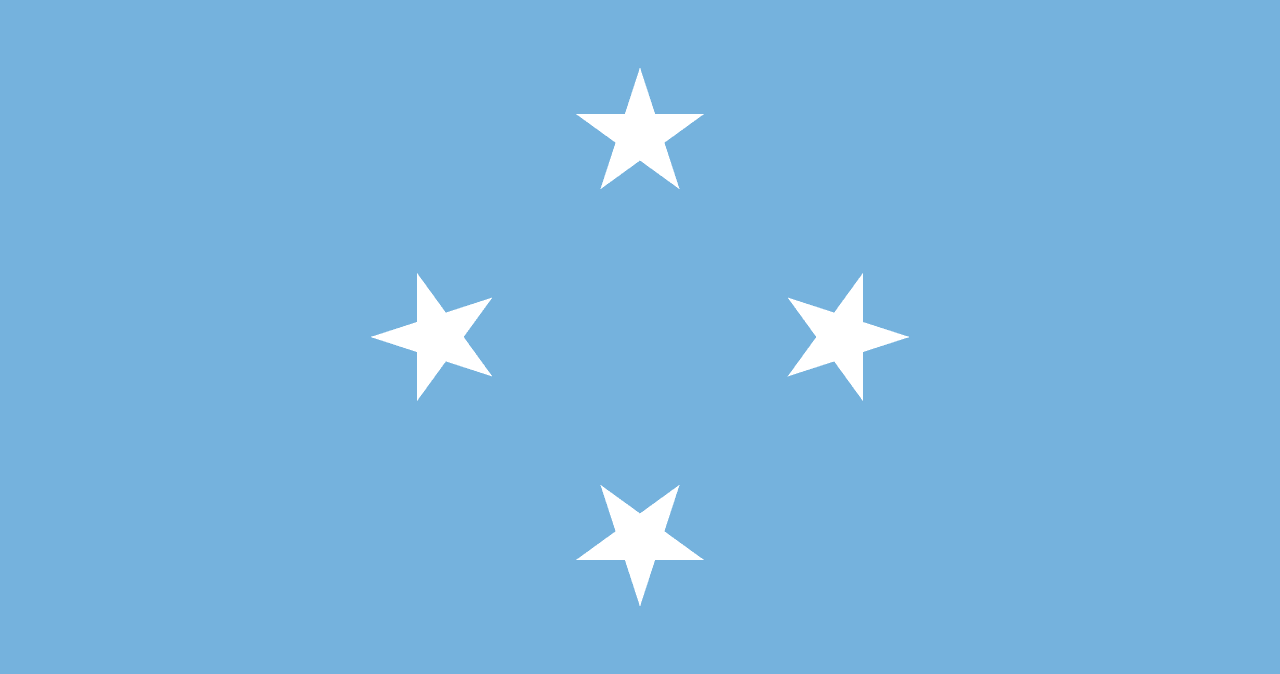
Micronesia
Four white five-pointed stars arranged in a diamond pattern on a light blue field, representing the four states of the Federated States of Micronesia surrounded by the Pacific Ocean.
- Adoption
- Adopted: 1978
- Continent
- Continent: Oceania
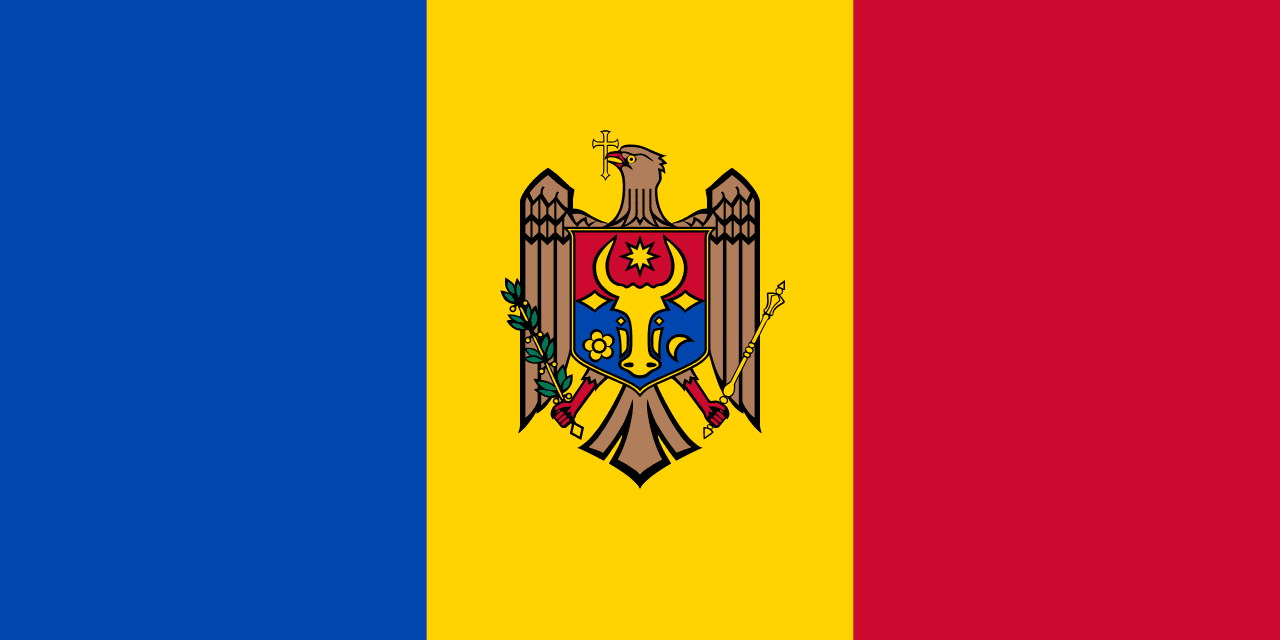
Moldova
Three vertical stripes of blue, yellow, and red with the national coat of arms centered on the yellow stripe, representing Moldova's emergence from Soviet rule and its historical connections to Romanian heritage and European identity.
- Adoption
- Adopted: 1990
- Continent
- Continent: Europe
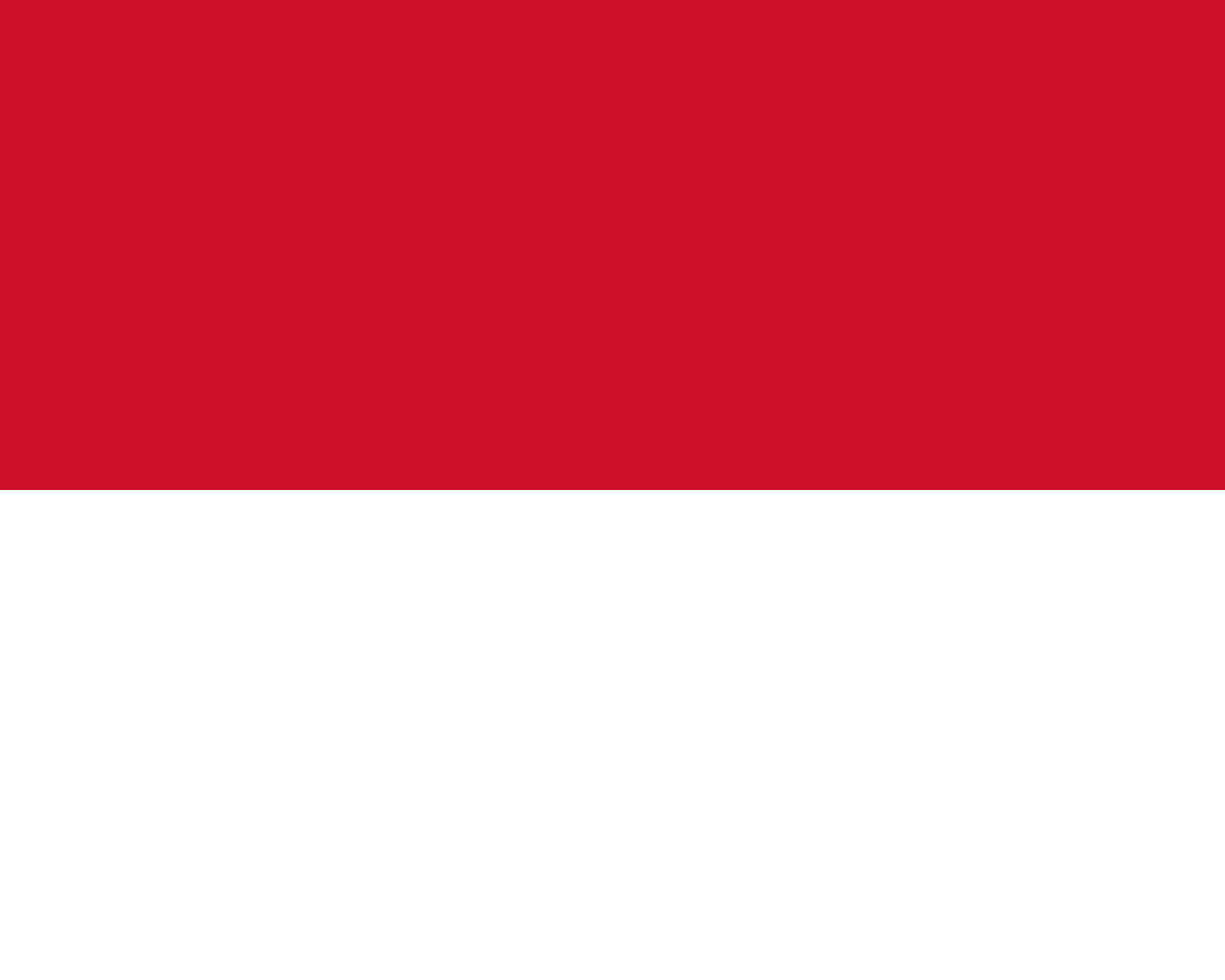
Monaco
Two horizontal stripes of red and white derived from the heraldic colors of the House of Grimaldi, representing one of the world's smallest sovereign states and oldest ruling dynasties.
- Adoption
- Adopted: 1881
- Continent
- Continent: Europe
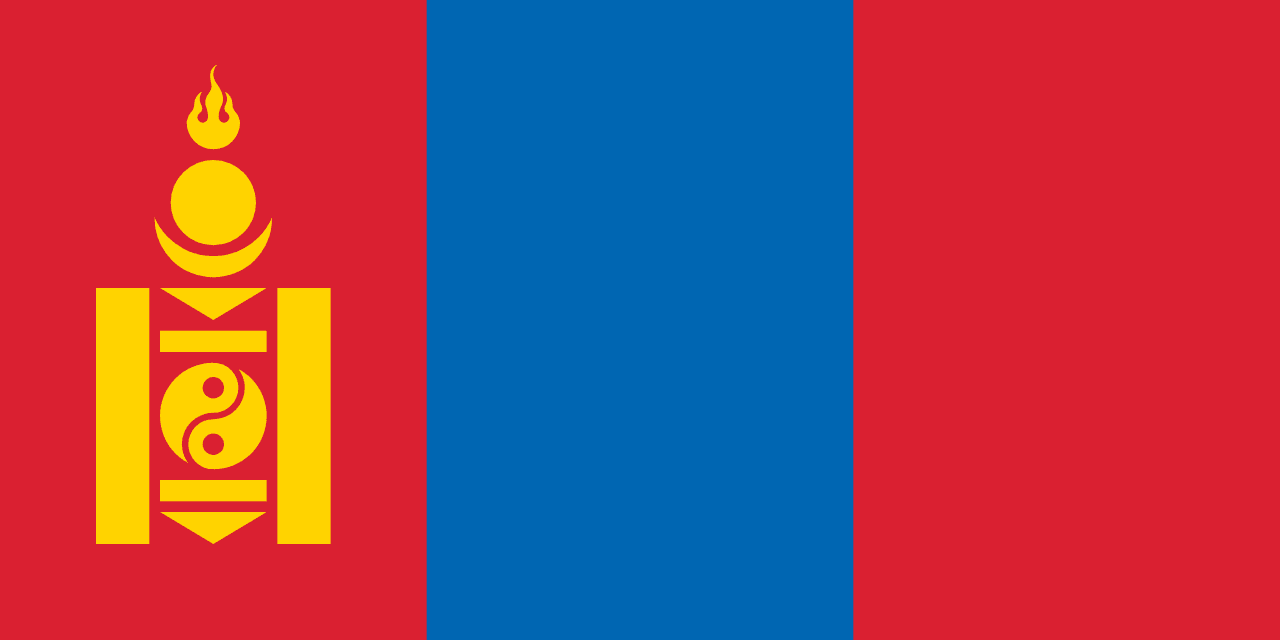
Mongolia
Three vertical stripes of red, blue, and red with the ancient Soyombo symbol in yellow on the hoist-side red stripe, representing Mongolia's transition to democracy and its deep philosophical traditions rooted in Tengrism and Buddhism.
- Adoption
- Adopted: 1992
- Continent
- Continent: Asia
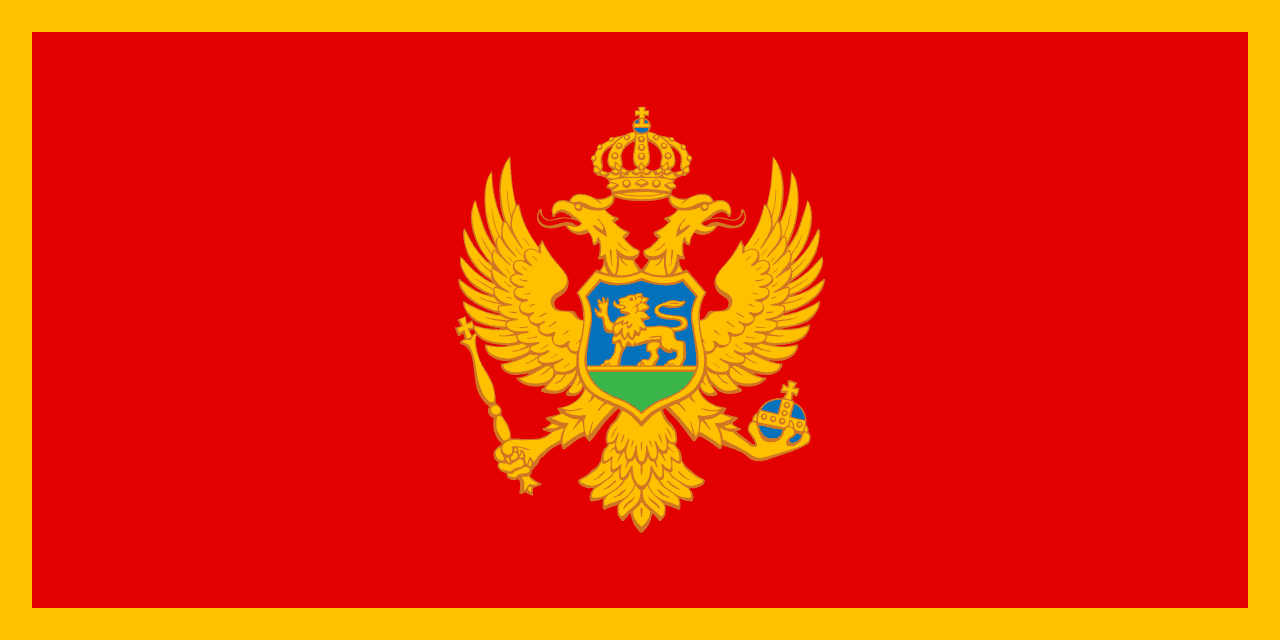
Montenegro
A red field with golden border and the coat of arms featuring a golden double-headed eagle, representing Montenegro's medieval heritage, Orthodox Christian identity, and recent independence from Serbia.
- Adoption
- Adopted: 2004
- Continent
- Continent: Europe

Morocco
A red field with a green interlaced pentagram (Seal of Solomon) in the center. The flag reflects Morocco’s dynastic traditions and Islamic heritage.
- Adoption
- Adopted: 1915
- Continent
- Continent: Africa
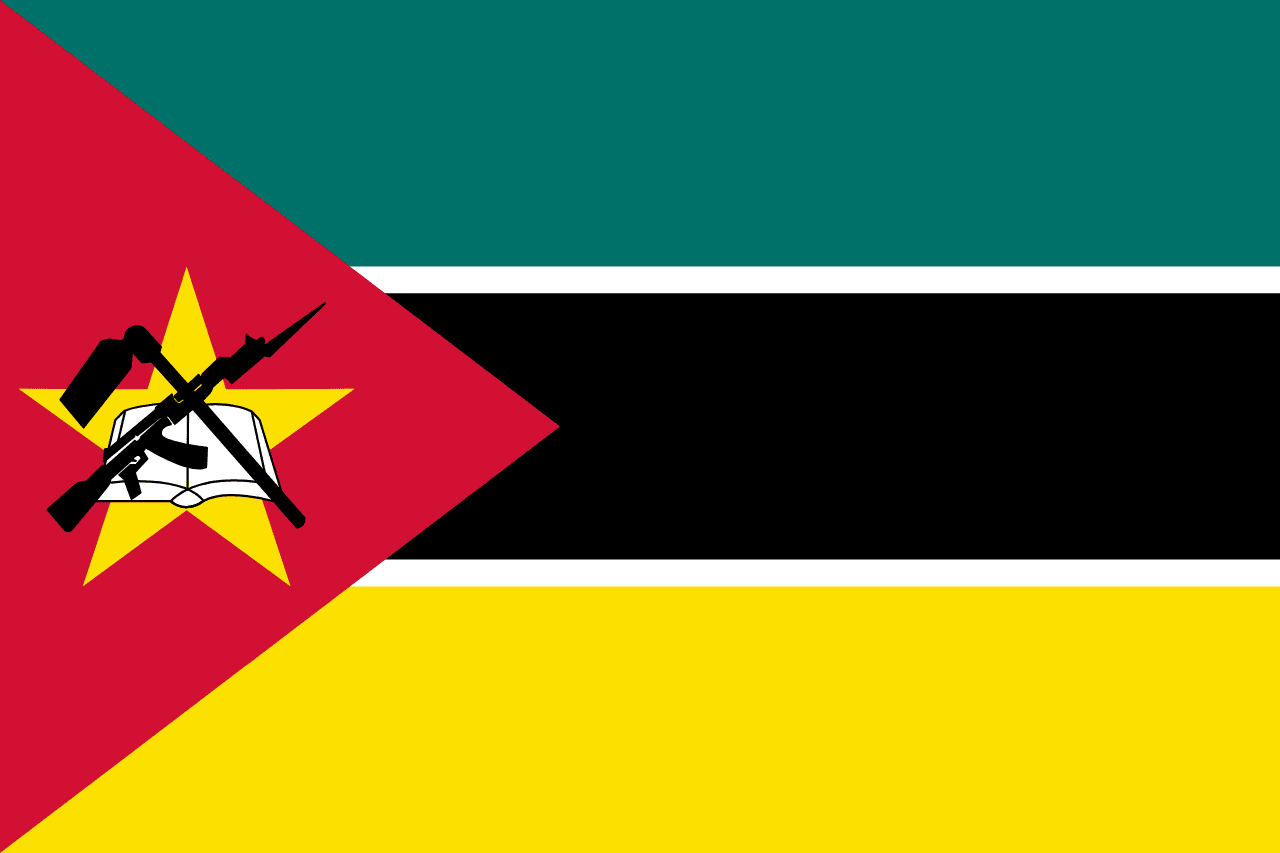
Mozambique
A horizontal tricolor of green, black, and yellow, separated by white fimbriations, with a red triangle at the hoist bearing a yellow star, a book, a hoe, and an AK-47 with bayonet. The flag uniquely features a modern weapon as a national symbol.
- Adoption
- Adopted: 1983
- Continent
- Continent: Africa
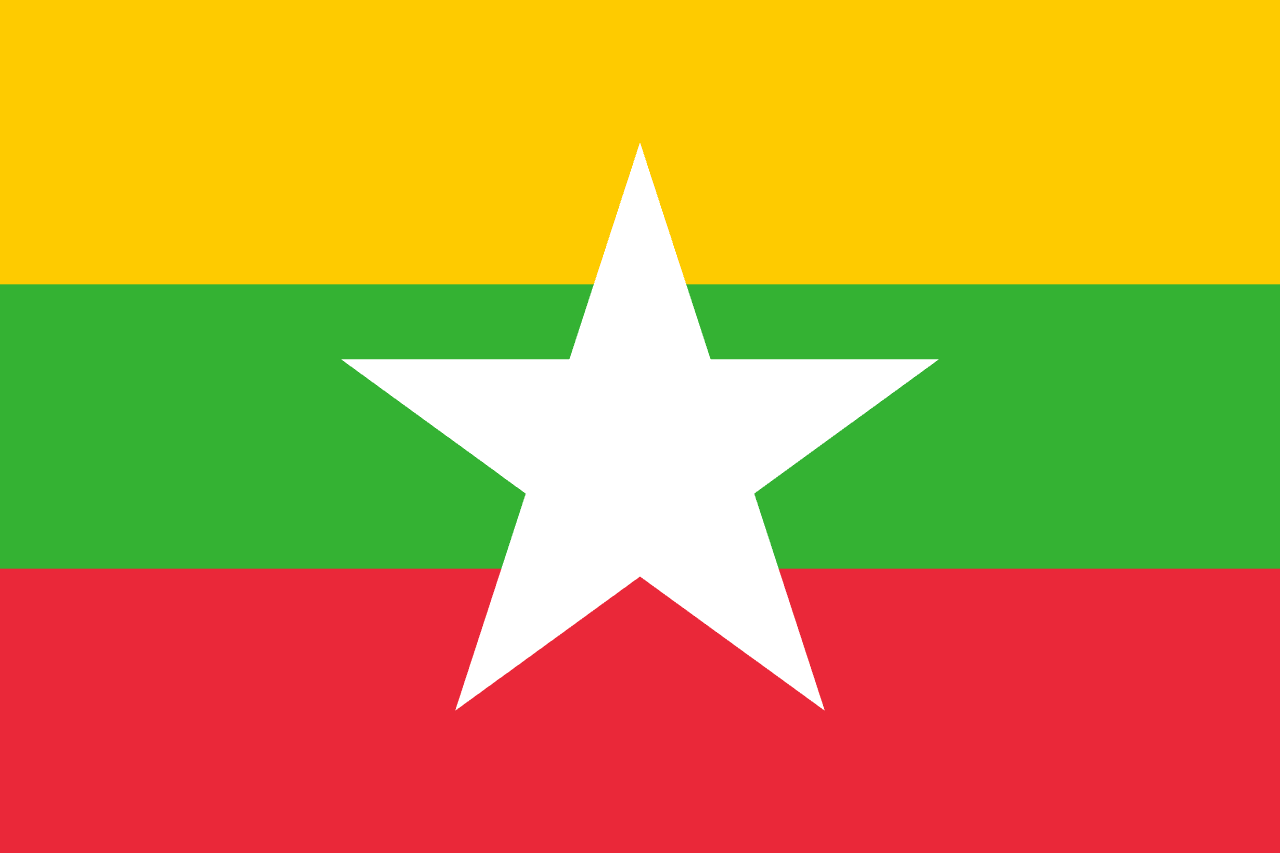
Myanmar
A horizontal tricolor of yellow, green, and red with a large white five-pointed star in the center. Adopted in 2010, the flag symbolizes unity and a new era for Myanmar.
- Adoption
- Adopted: 2010
- Continent
- Continent: Asia
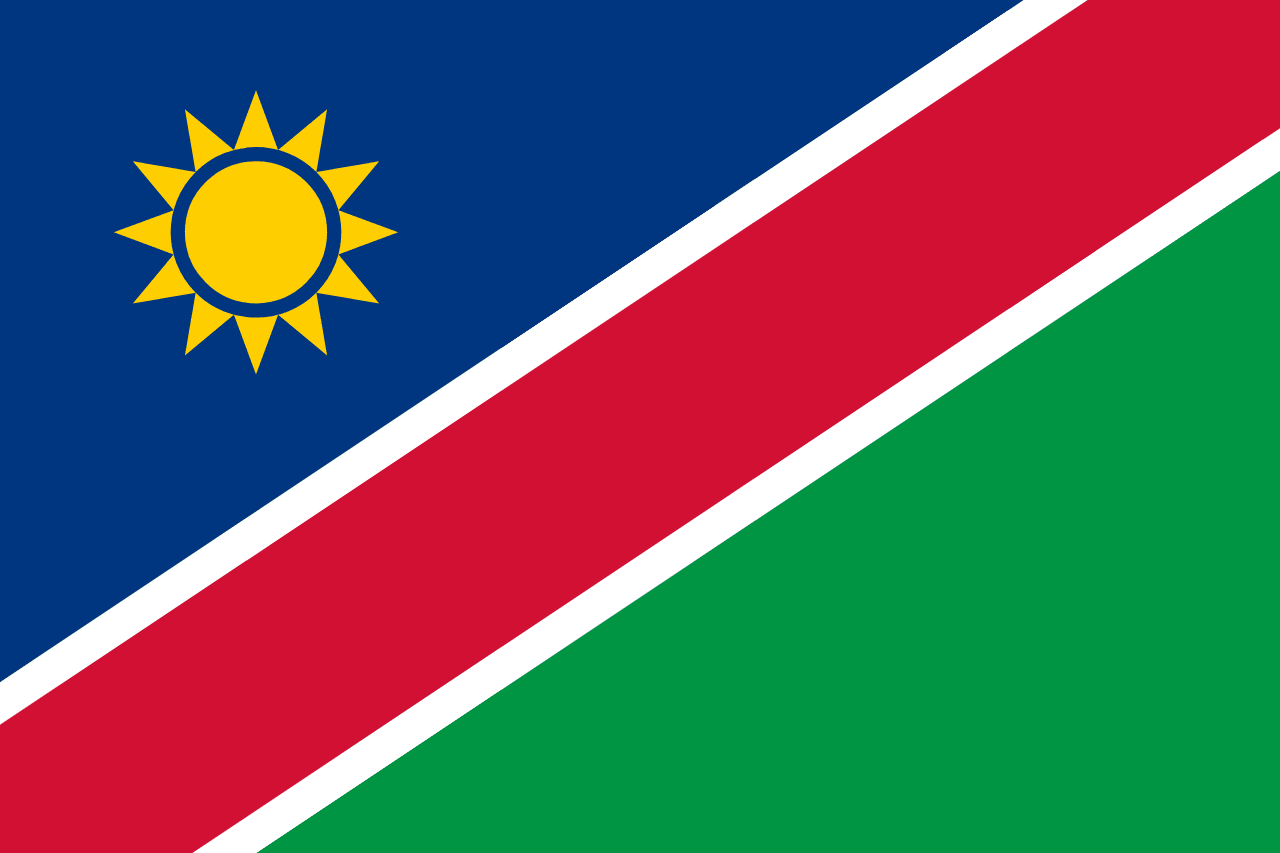
namibia
A diagonal tricolor divided from the lower hoist to upper fly by a red band with white borders, with blue in the upper hoist containing a golden sun, and green in the lower fly. The design symbolizes Namibia’s land, people, and resources.
- Adoption
- Adopted: 1990
- Continent
- Continent: Africa
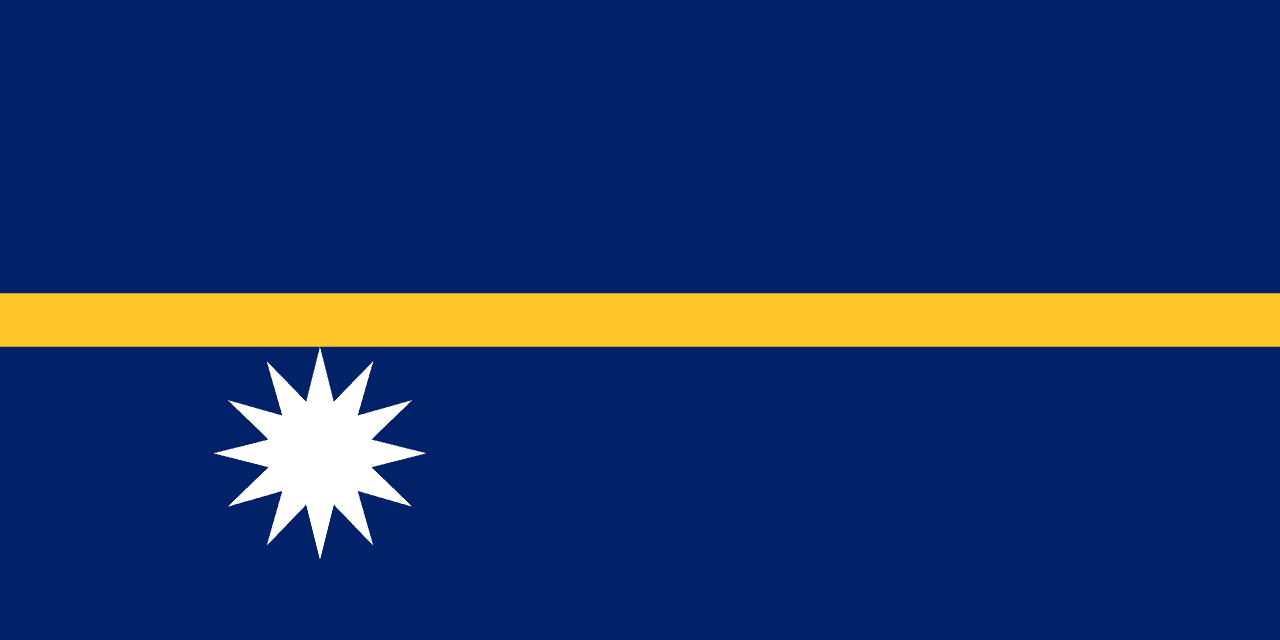
Nauru
A blue field with a horizontal yellow stripe across the center and a white twelve-pointed star below the stripe near the hoist. The design reflects Nauru’s position just south of the equator and its cultural identity.
- Adoption
- Adopted: 1968
- Continent
- Continent: Oceania
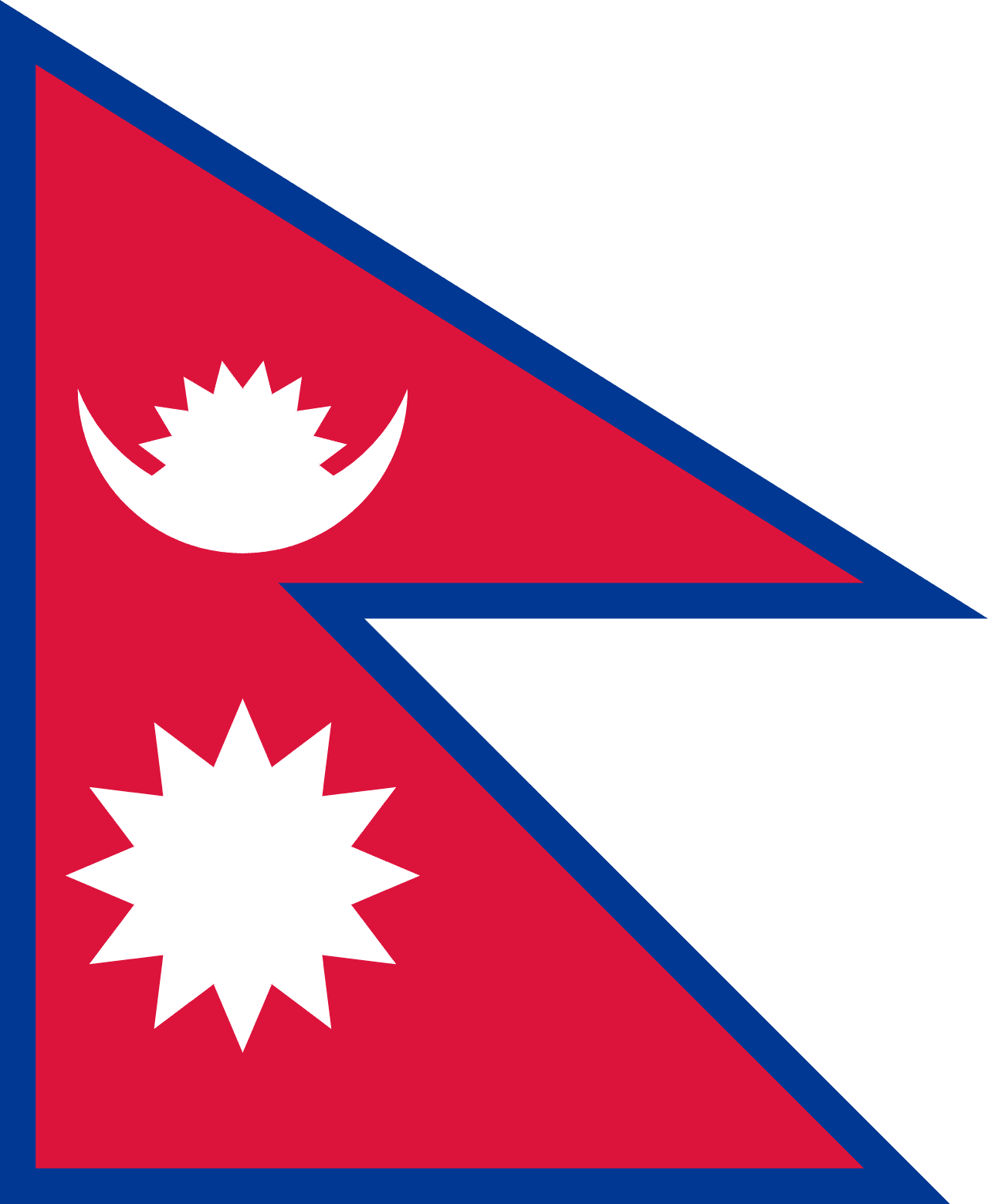
Nepal
The only national flag that is non-rectangular, composed of two stacked crimson pennons with blue borders, featuring a white moon and a white sun. It reflects Nepal’s distinct identity, culture, and Hindu-Buddhist traditions.
- Adoption
- Adopted: 1962
- Continent
- Continent: Asia

Netherlands
A horizontal tricolor of red, white, and blue, the oldest tricolor still in use today. It originated in the 16th century during the Dutch Revolt against Spain.
- Adoption
- Adopted: 1937
- Continent
- Continent: Europe
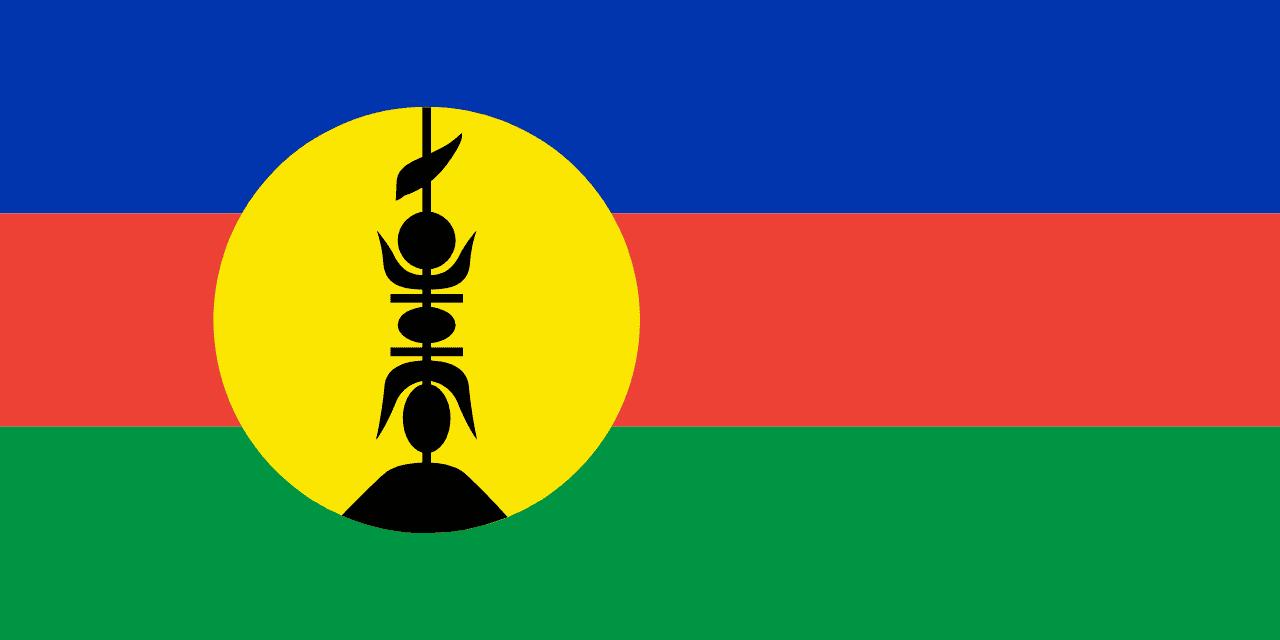
New Caledonia
The flag of New Caledonia is one of the few in the world to be flown alongside another—the French tricolor, symbolizing both local identity and continued ties to France. Adopted in 2010 after years of debate, the design features blue, red, and green horizontal bands with a yellow disc at the center bearing a black flèche faîtière, a traditional rooftop spear. Each element carries meaning rooted in the Kanak people’s culture, the islands’ natural environment, and the struggle for recognition within a French overseas territory. To study this flag is to see the blending of indigenous heritage with colonial history, and how symbols can serve as a bridge between tradition and modern political reality.
- Adoption
- Adopted: 2010
- Continent
- Continent: Oceania
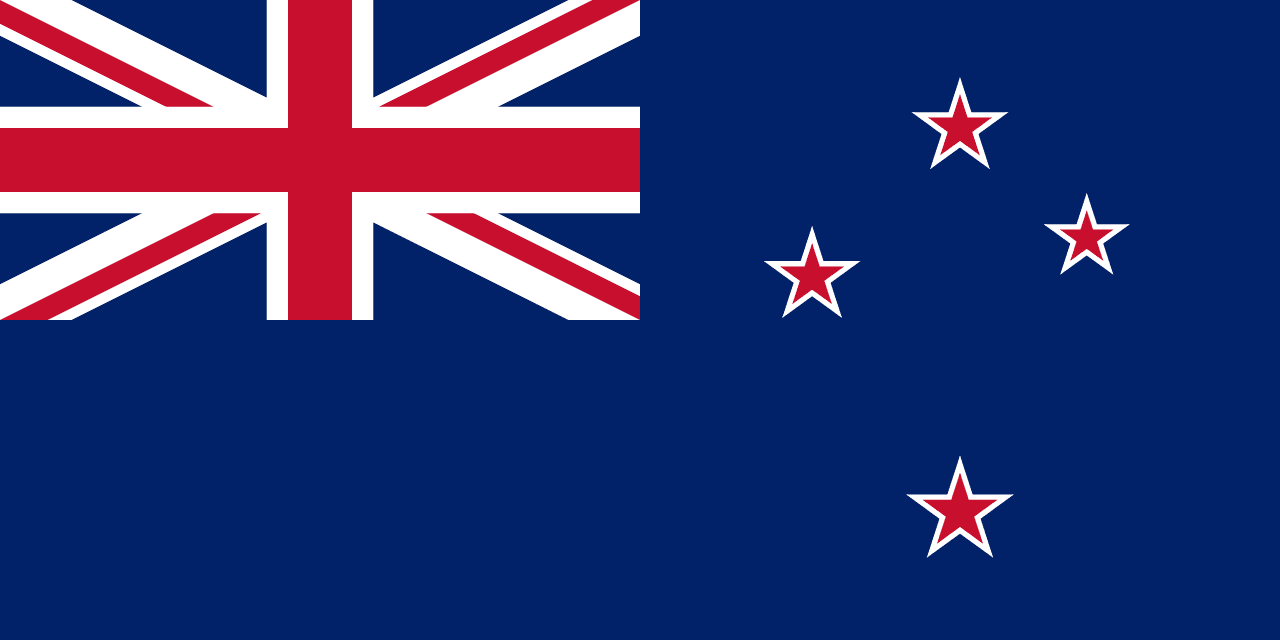
New Zealand
A blue ensign with the Union Jack in the canton and four red five-pointed stars outlined in white representing the Southern Cross constellation, reflecting New Zealand's British heritage and Southern Hemisphere location.
- Adoption
- Adopted: 1902
- Continent
- Continent: Oceania
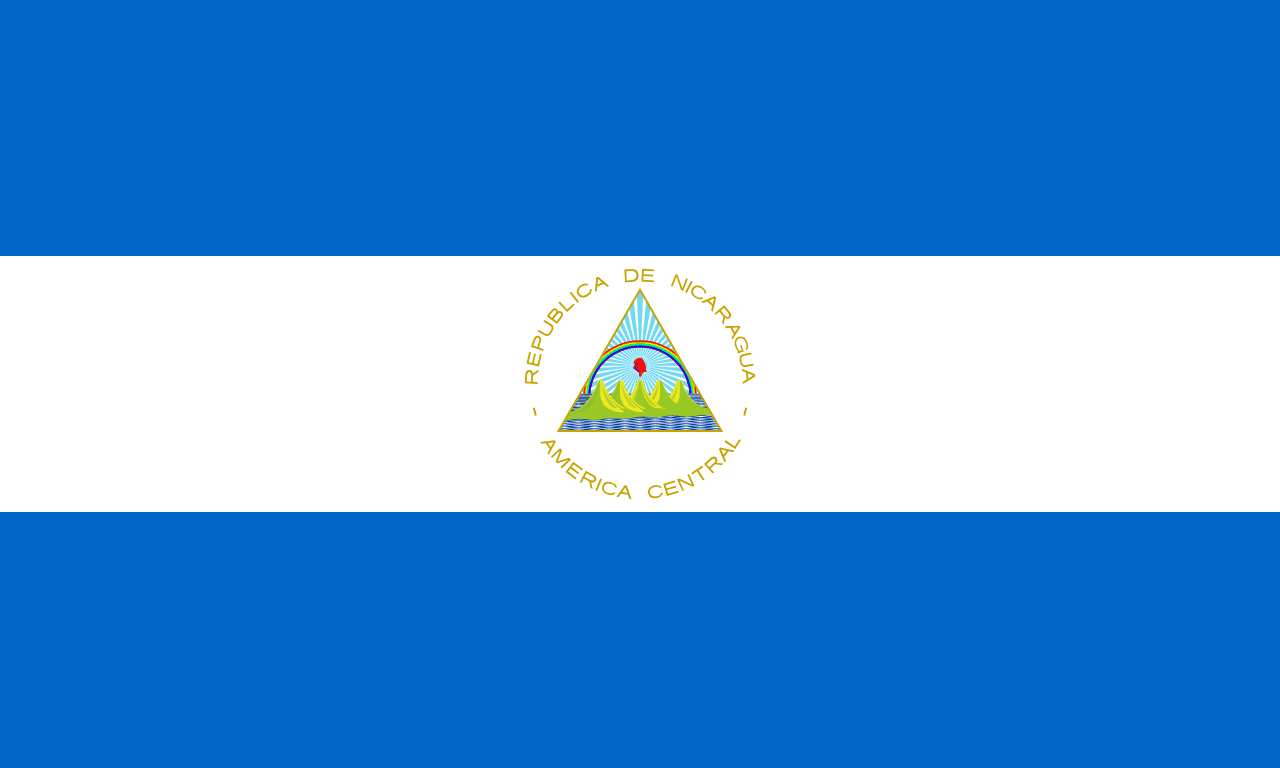
Nicaragua
Three horizontal stripes of blue, white, and blue with the national coat of arms centered on the white stripe, representing Nicaragua's position between two oceans and its revolutionary ideals of liberty and peace.
- Adoption
- Adopted: 1971
- Continent
- Continent: North America
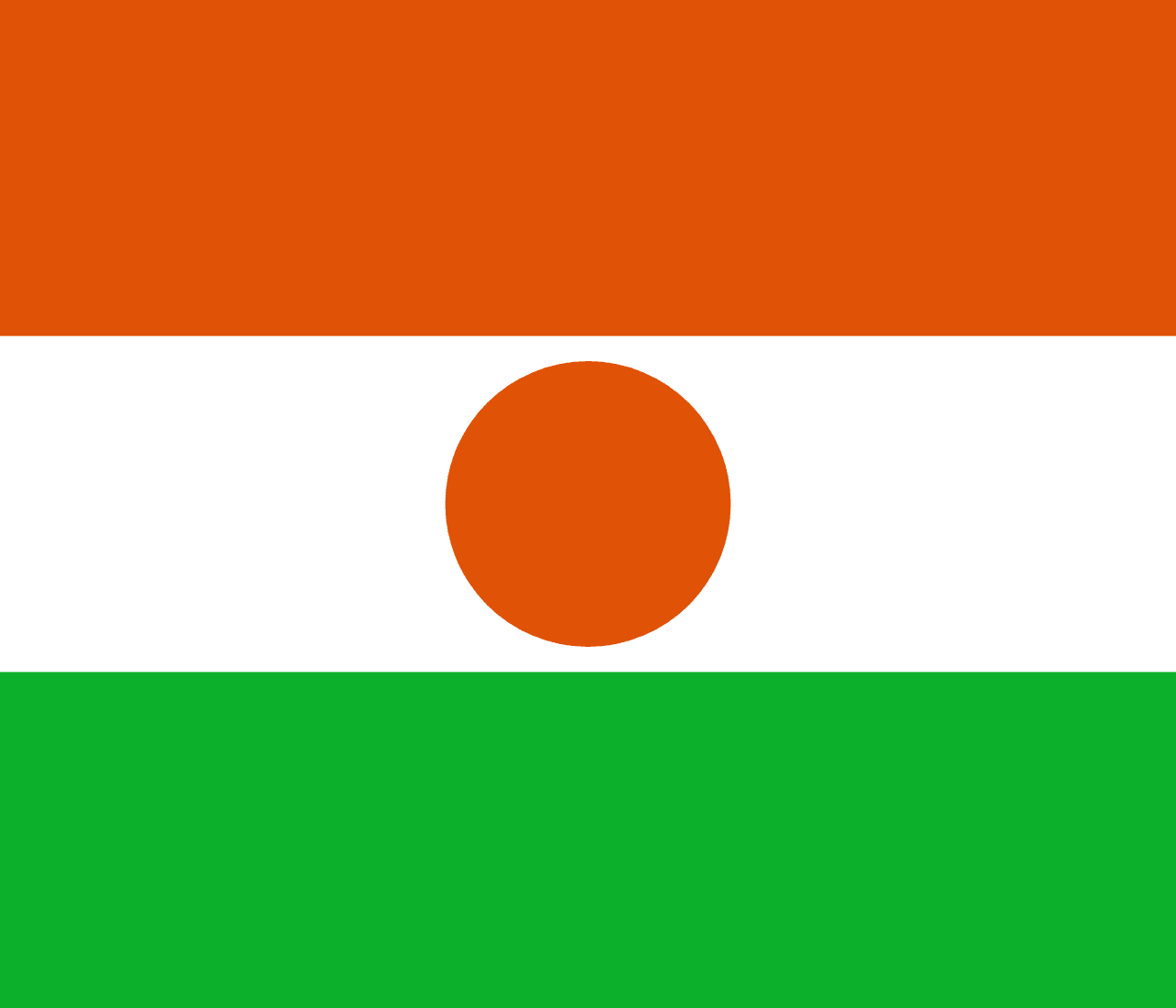
Niger
Three horizontal stripes of orange, white, and green with an orange circle centered on the white stripe, representing the Sahara Desert, the Niger River, and the fertile south, with the sun symbolizing hope and determination.
- Adoption
- Adopted: 1959
- Continent
- Continent: Africa
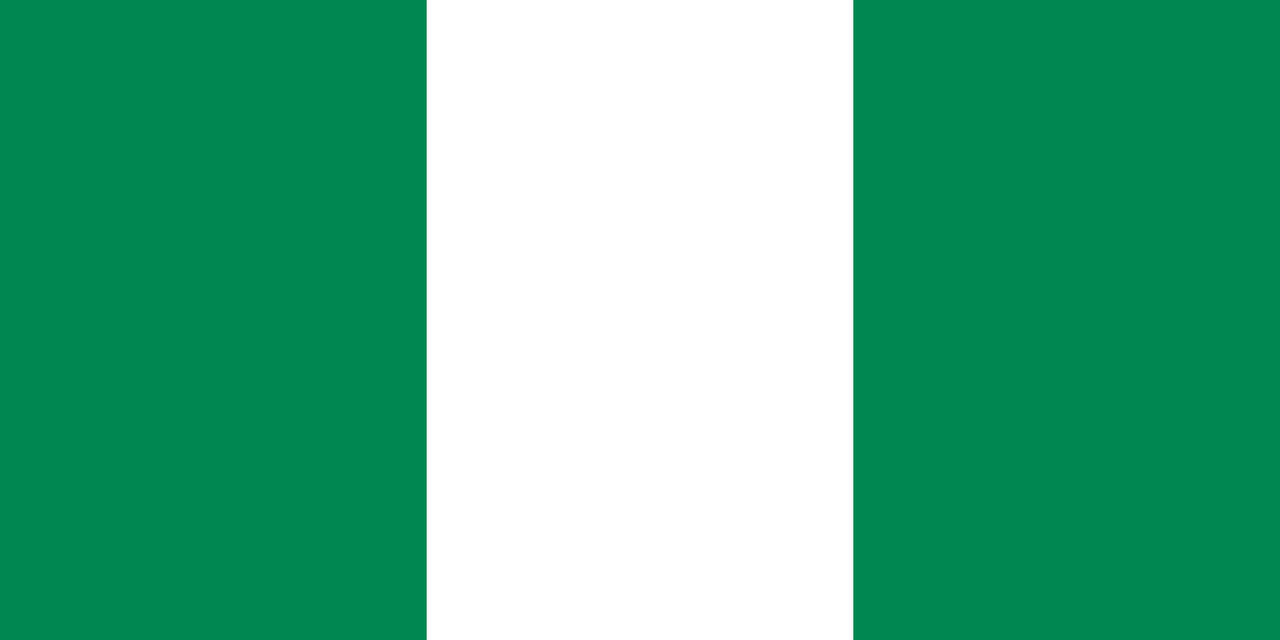
Nigeria
A vertical tricolor of green, white, and green. The flag was adopted at independence in 1960 and represents agriculture, unity, and peace.
- Adoption
- Adopted: 1960
- Continent
- Continent: Africa
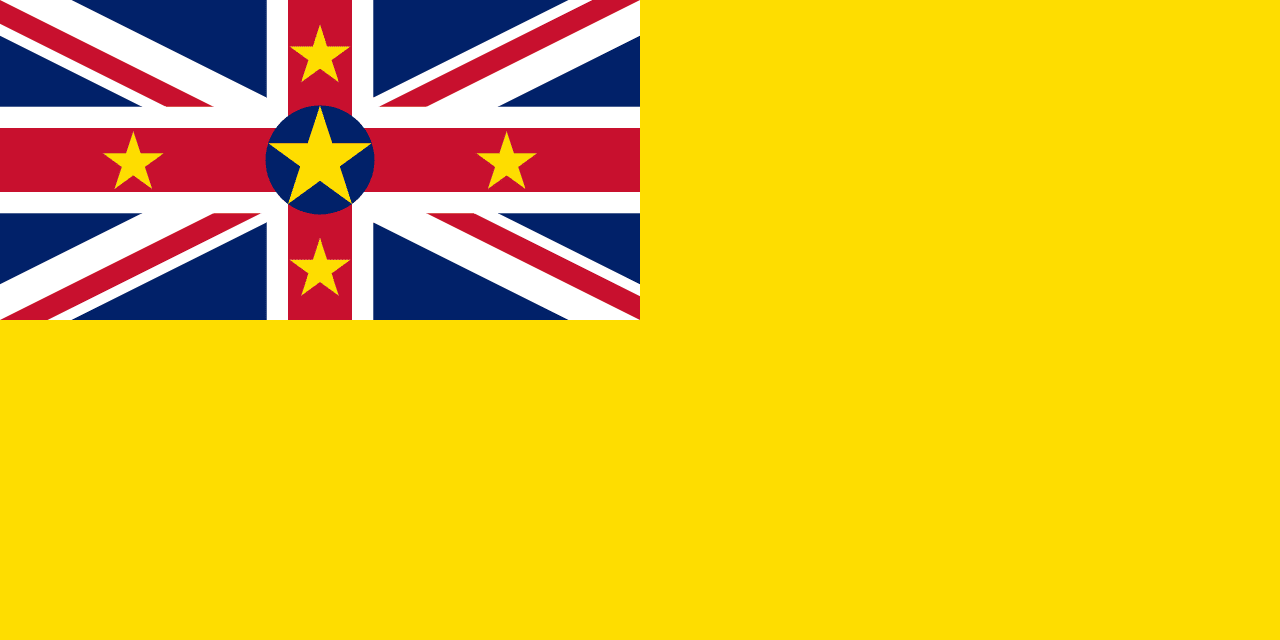
Niue
Golden yellow field with Union Jack canton and stars representing 'The Rock of Polynesia' and its unique free association with New Zealand.
- Adoption
- Adopted: 1975
- Continent
- Continent: Oceania
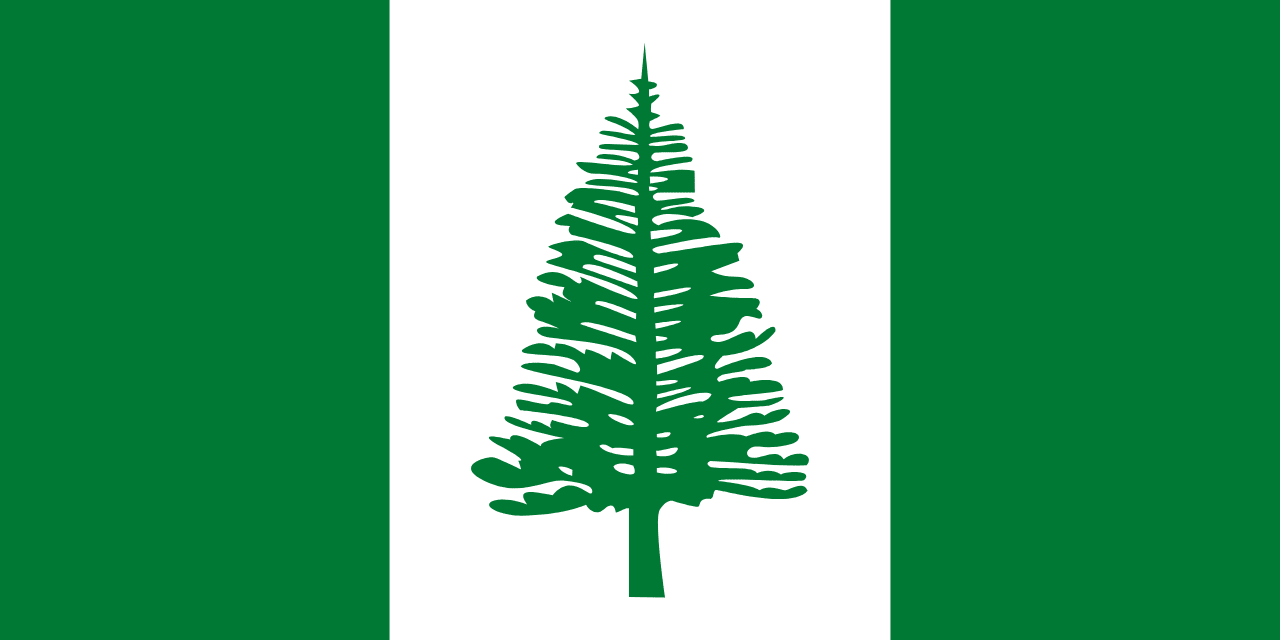
Norfolk Island
Vertical green stripe and white field featuring the iconic Norfolk Pine, symbol of the island's unique heritage.
- Adoption
- Adopted: 1979
- Continent
- Continent: Oceania
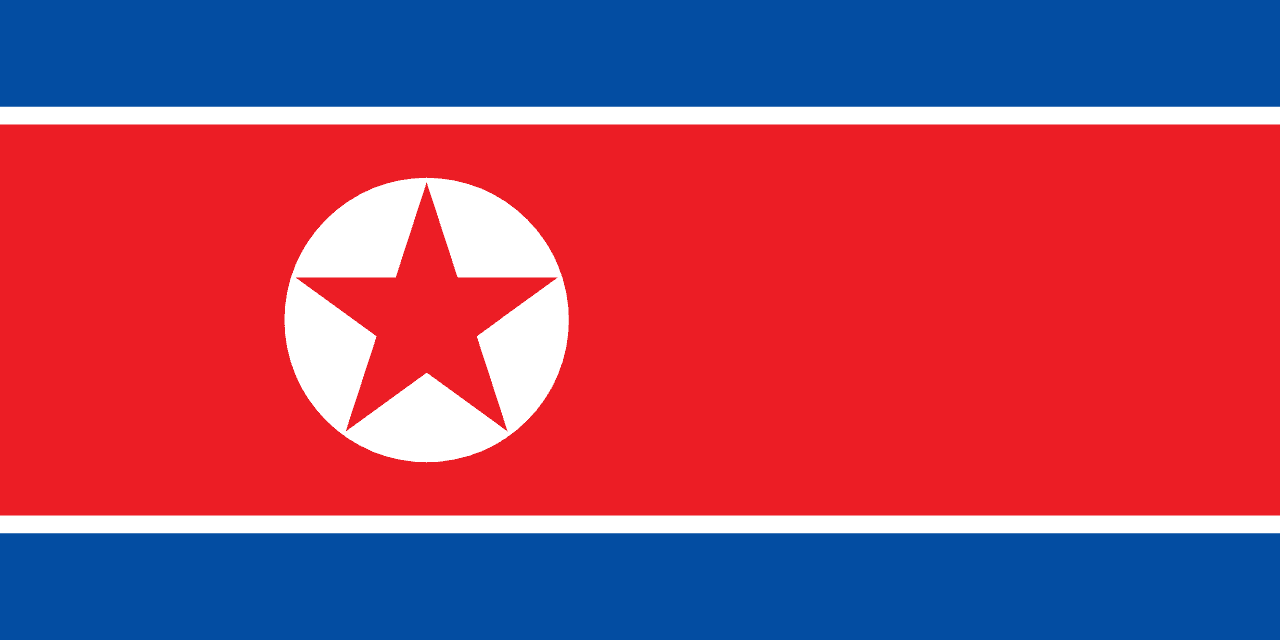
North Korea
The flag of North Korea, adopted in 1948, combines red, white, and blue with a central red star. Its design reflects socialist symbolism while incorporating elements rooted in Korean identity. For the state, it represents revolution, unity, and loyalty, while for observers it has become one of the most recognizable emblems of the modern Korean peninsula.
- Adoption
- Adopted: 1948
- Continent
- Continent: Asia
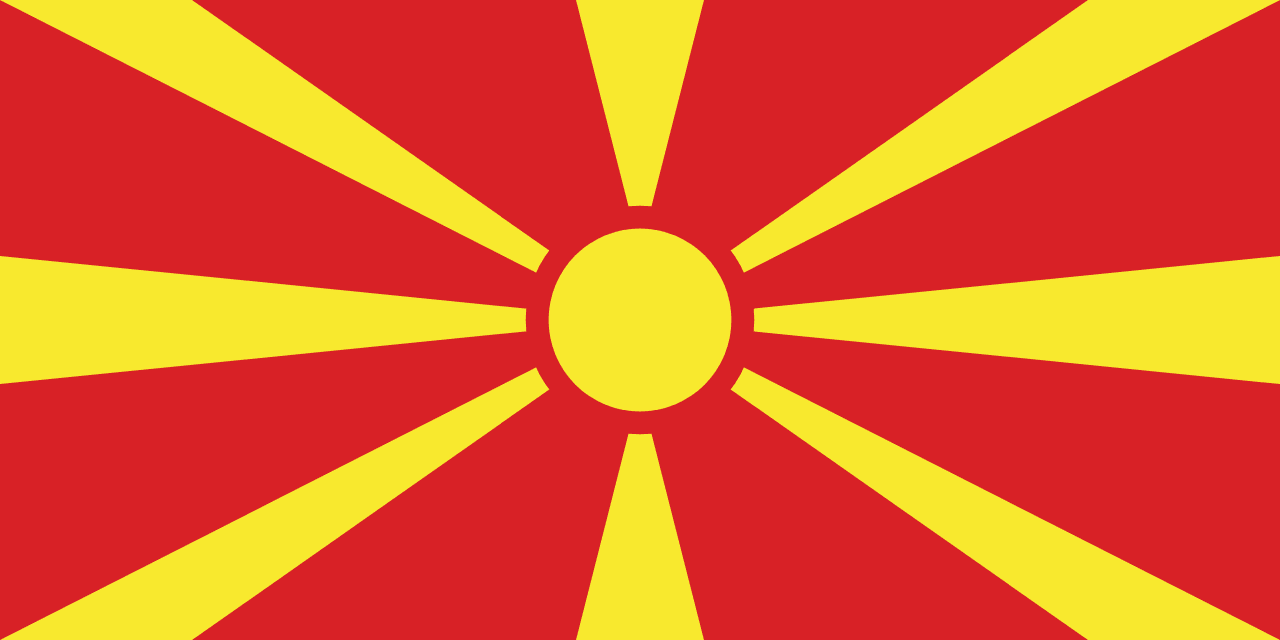
North Macedonia
A red field with a golden-yellow stylized sun with eight broad rays extending to the edges. Known as the 'Sun of Liberty,' it symbolizes freedom and the new nation’s identity.
- Adoption
- Adopted: 1995
- Continent
- Continent: Europe
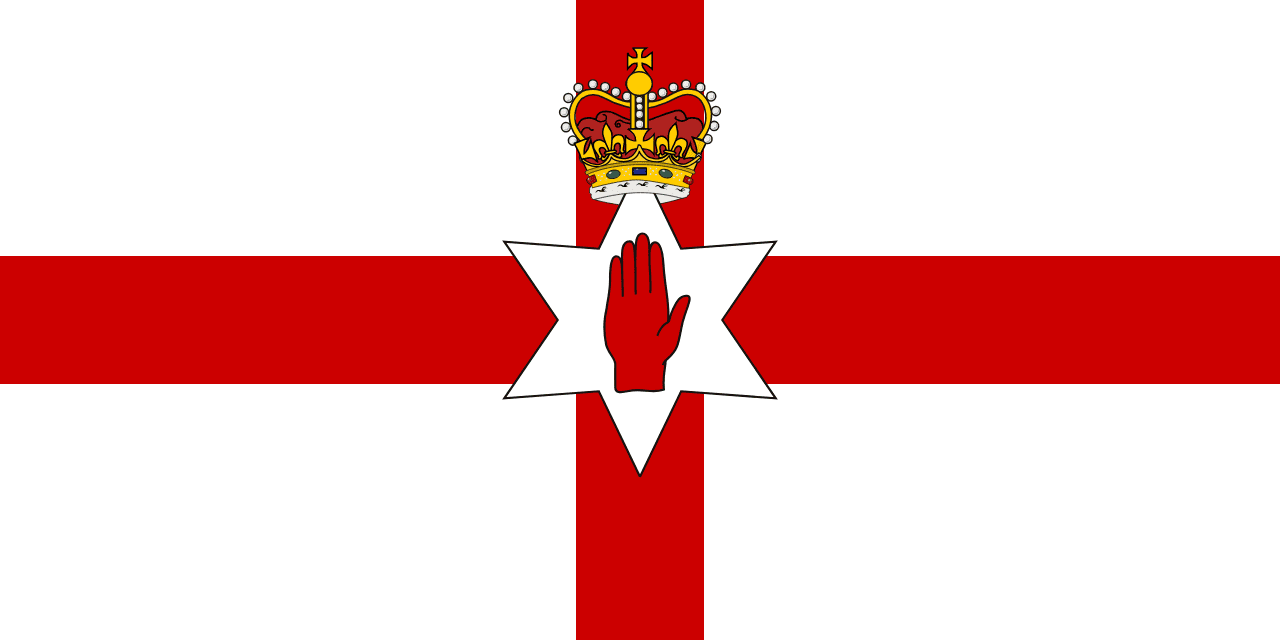
Northern Ireland
The Ulster Banner - featuring the Red Hand of Ulster on a white field with the Union Jack canton and crown, served as Northern Ireland's official flag from 1953-1972 and remains in unofficial use today.
- Adoption
- Adopted: 1953
- Continent
- Continent: Europe
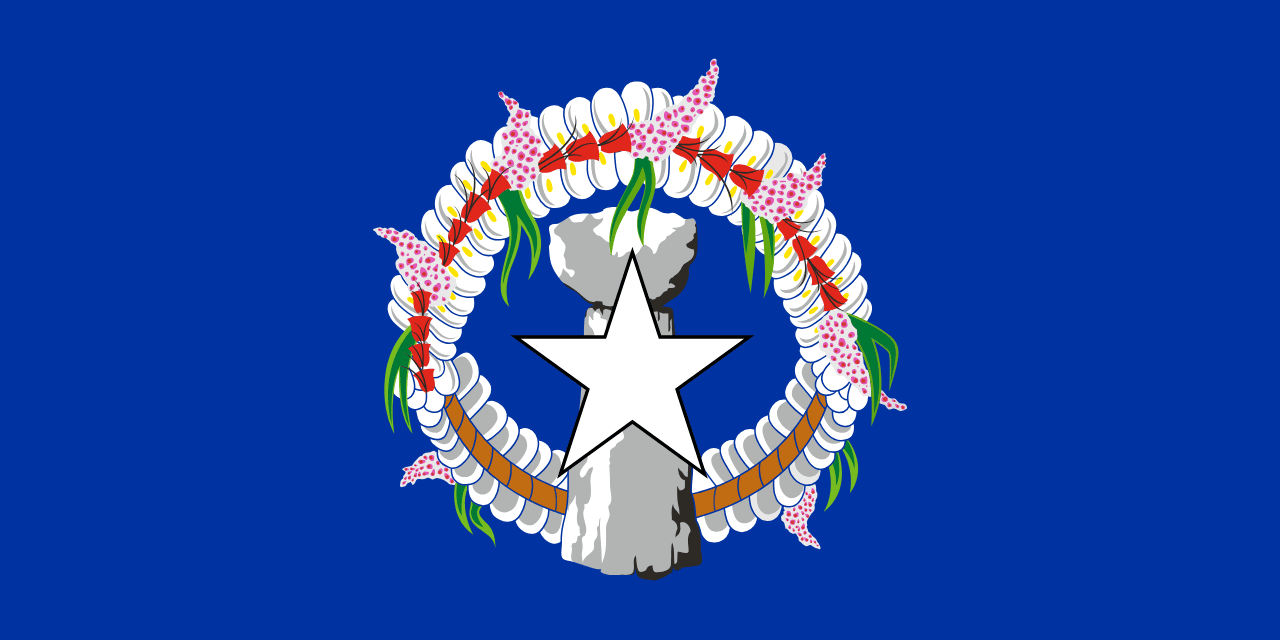
Northern Mariana Islands
A blue field with a white star and gray latte stone behind it, surrounded by a decorative wreath. The flag represents the islands’ indigenous culture, U.S. affiliation, and Pacific identity.
- Adoption
- Adopted: 1985
- Continent
- Continent: Oceania

Norway
Nordic cross design with red field, white cross, and blue outline, symbolizing Norwegian independence and Scandinavian heritage.
- Adoption
- Adopted: 1821
- Continent
- Continent: Europe
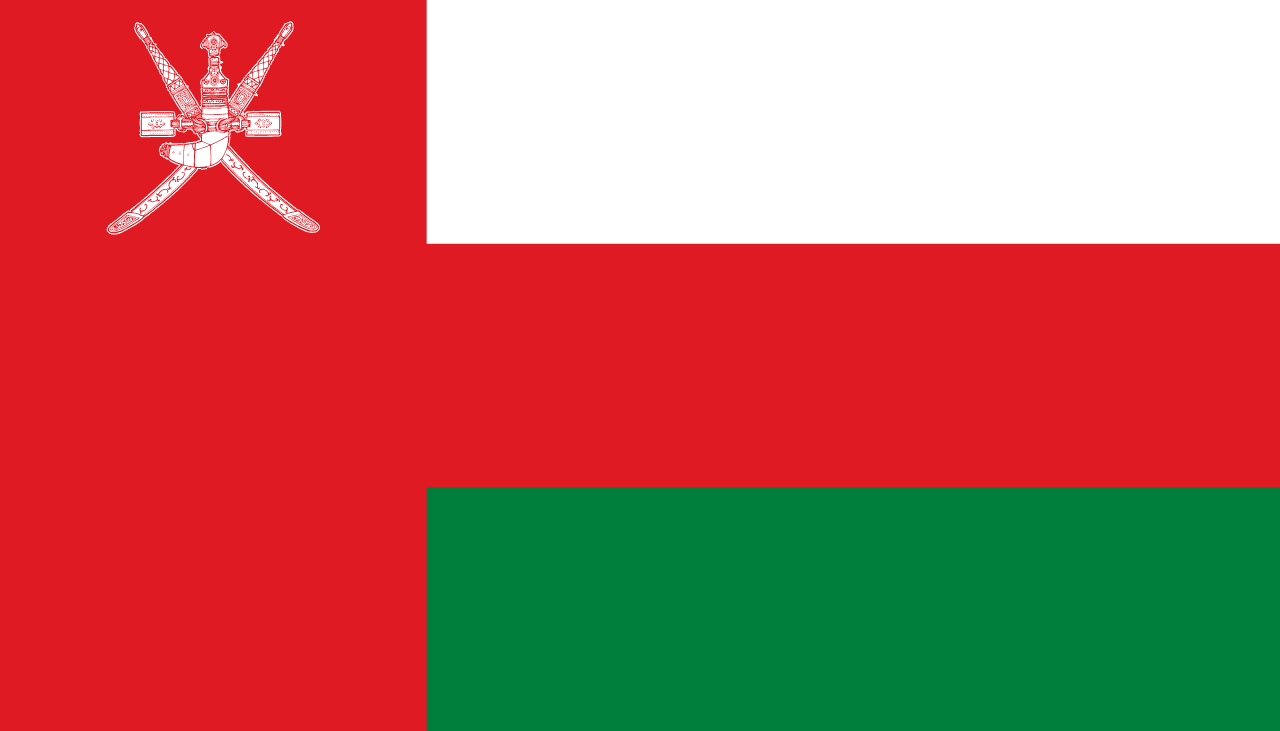
Oman
Three horizontal stripes of white, red, and green with a vertical red band at the hoist containing the national emblem. The design reflects Oman’s heritage, unity, and natural environment.
- Adoption
- Adopted: 1995
- Continent
- Continent: Asia
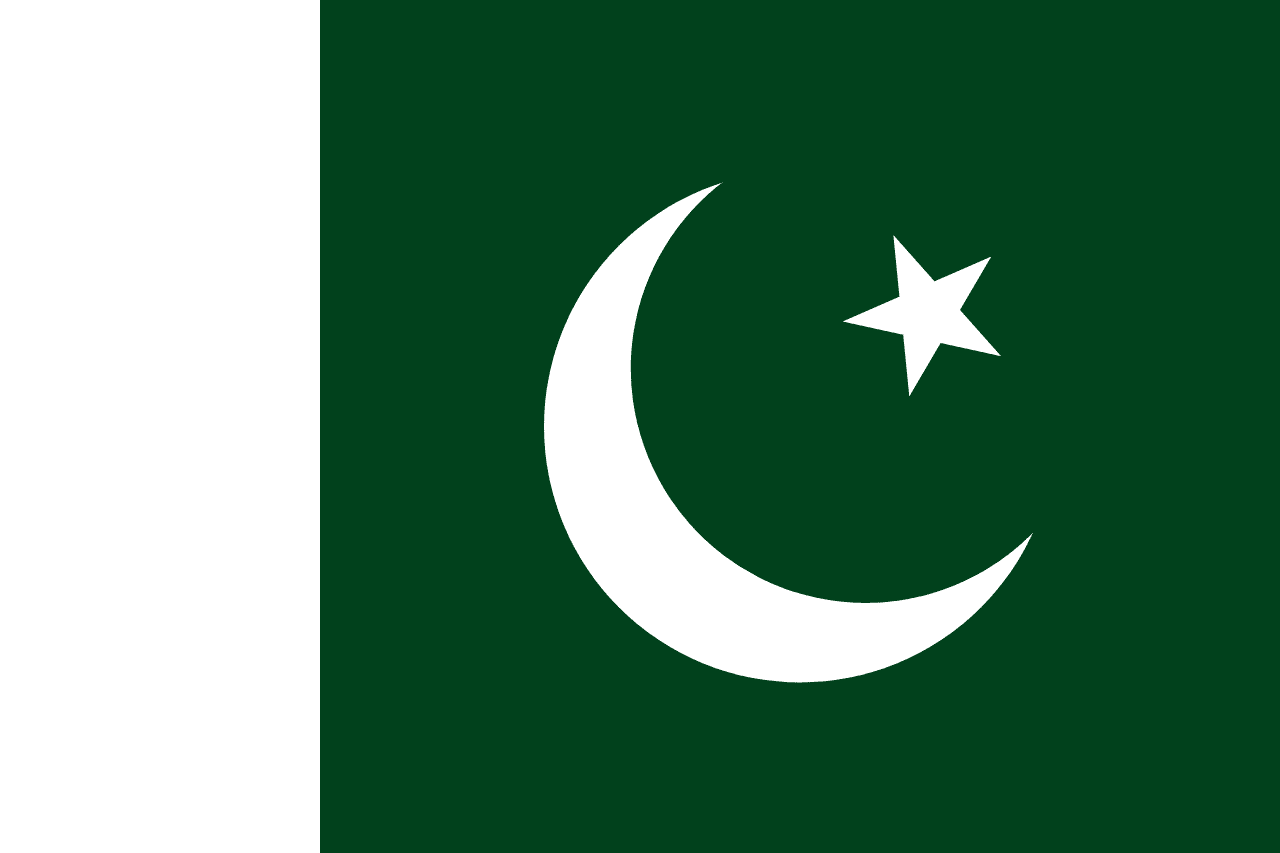
Pakistan
A green field with a white vertical stripe at the hoist, a white crescent, and a five-pointed star. The flag symbolizes Islam, religious minorities, and the guiding ideals of the nation.
- Adoption
- Adopted: 1947
- Continent
- Continent: Asia
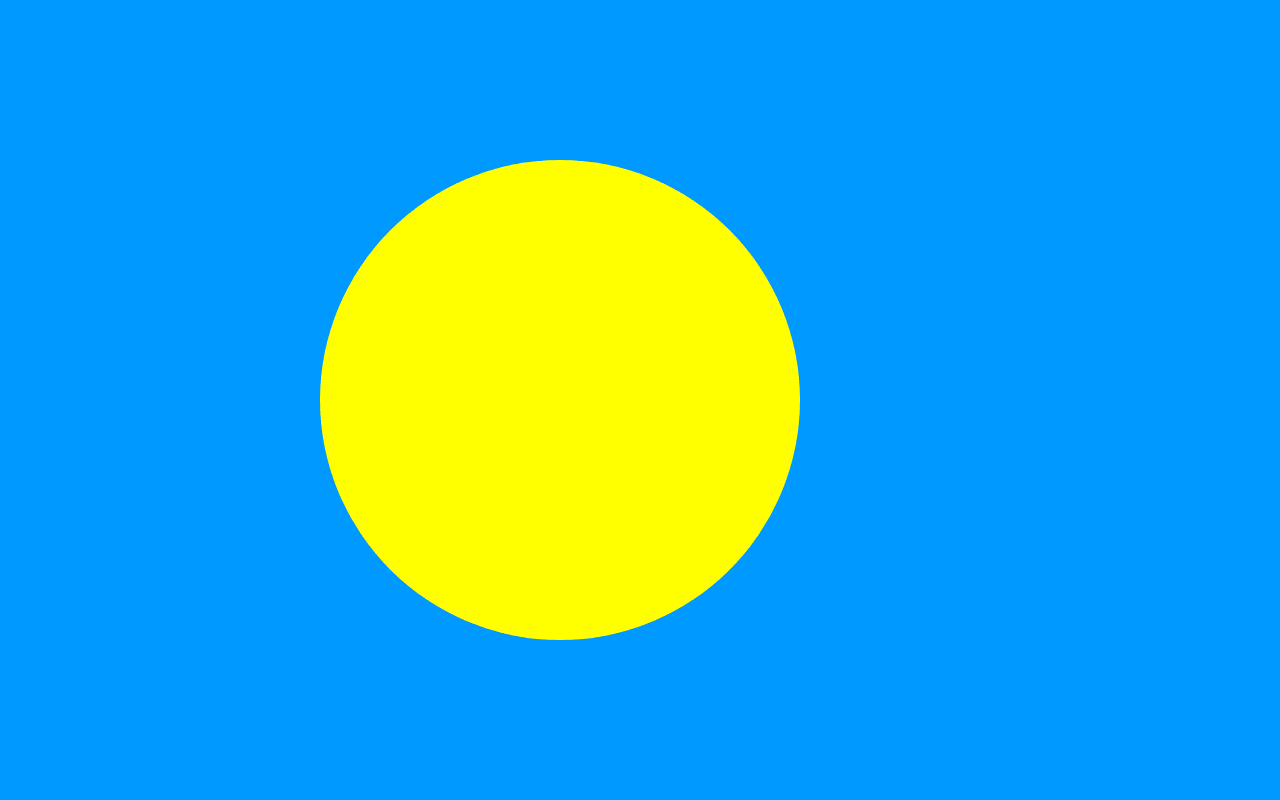
Palau
A light blue field with a golden-yellow full moon slightly off-center toward the hoist. The flag symbolizes independence, culture, and natural harmony.
- Adoption
- Adopted: 1981
- Continent
- Continent: Oceania
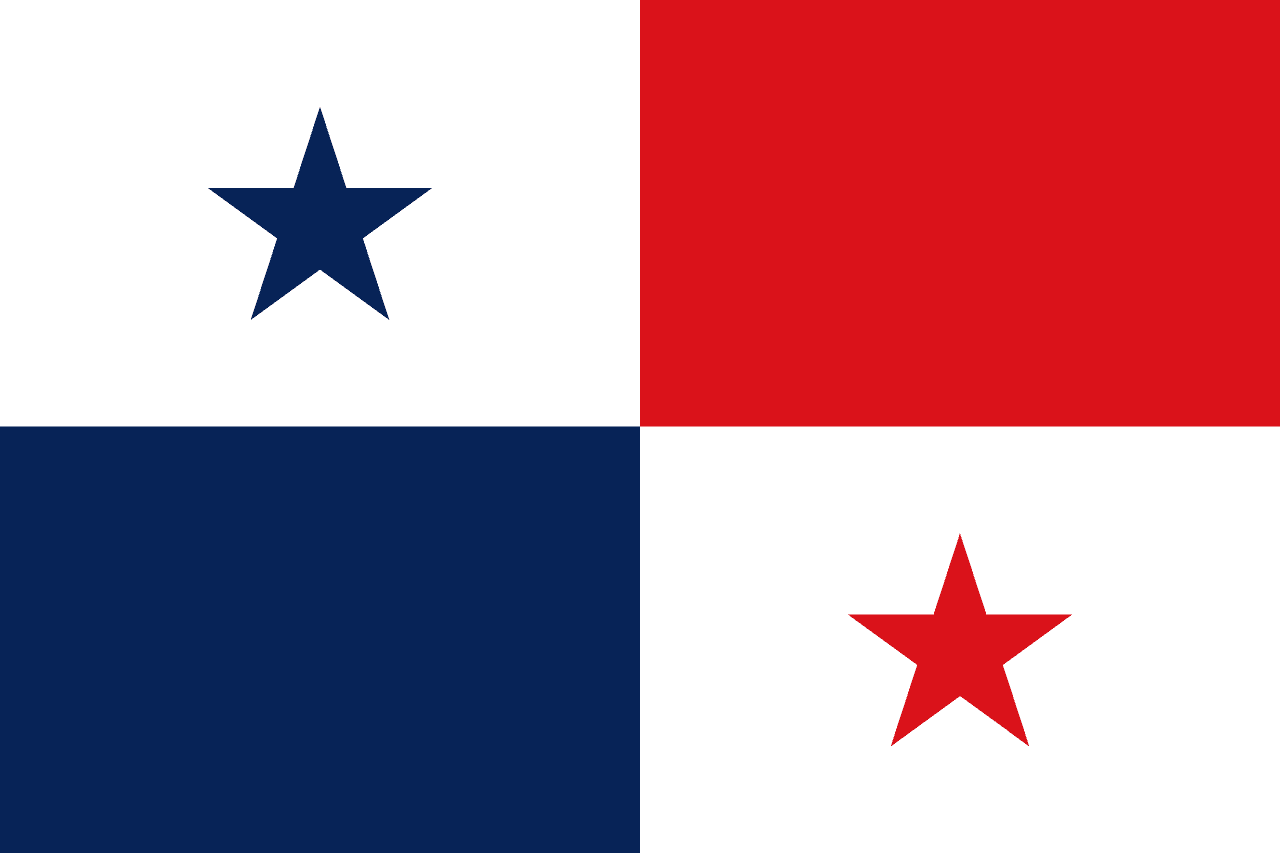
Panama
Quartered flag with white and blue star in top left, red in top right, blue in bottom left, and white with red star in bottom right. The design symbolizes political balance and the ideals of peace and progress.
- Adoption
- Adopted: 1925
- Continent
- Continent: North America
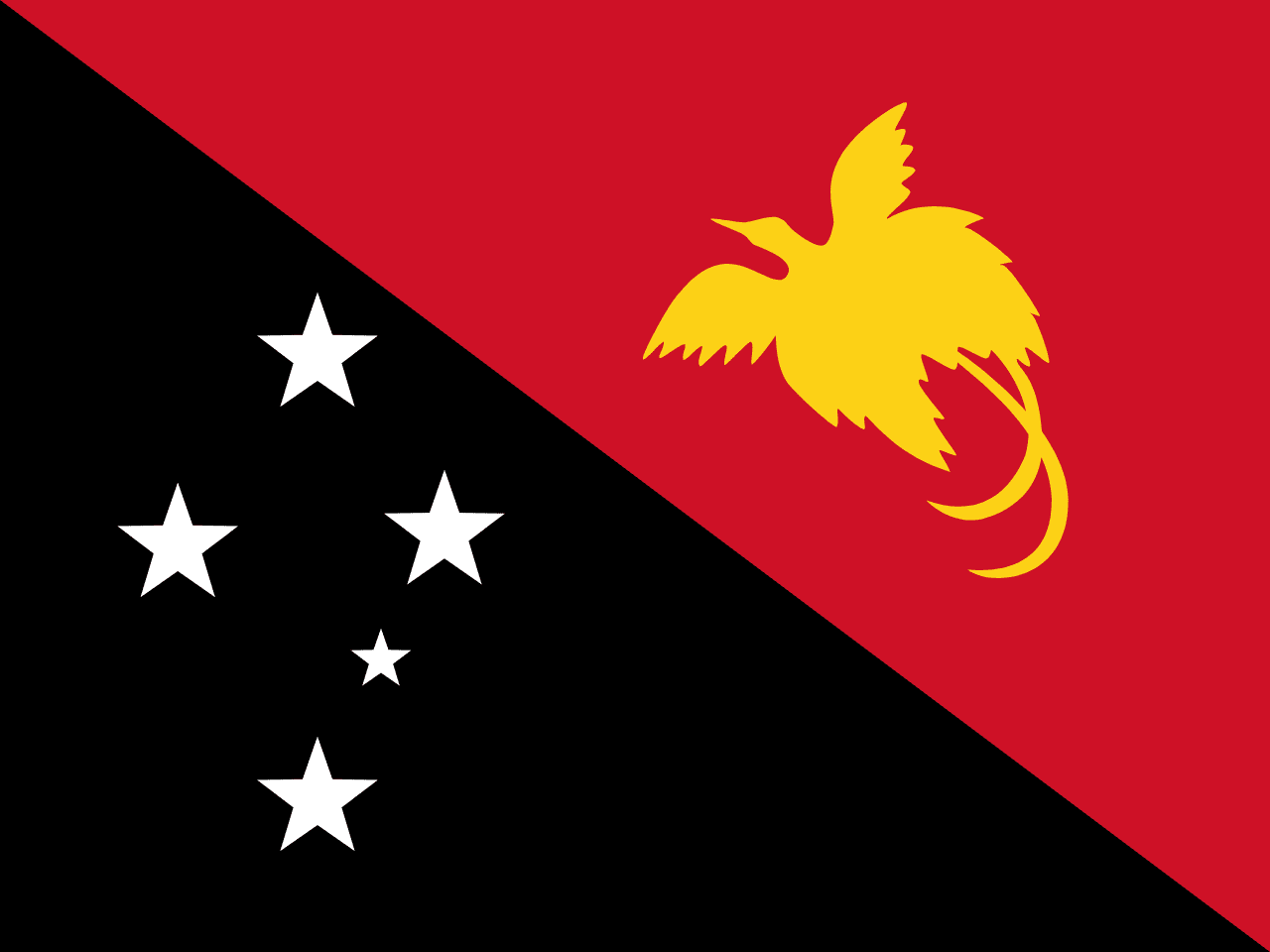
Papua New Guinea
Divided diagonally from upper hoist to lower fly: the upper triangle is red with a yellow Raggiana bird-of-paradise, and the lower triangle is black with five white stars of the Southern Cross.
- Adoption
- Adopted: 1971
- Continent
- Continent: Oceania
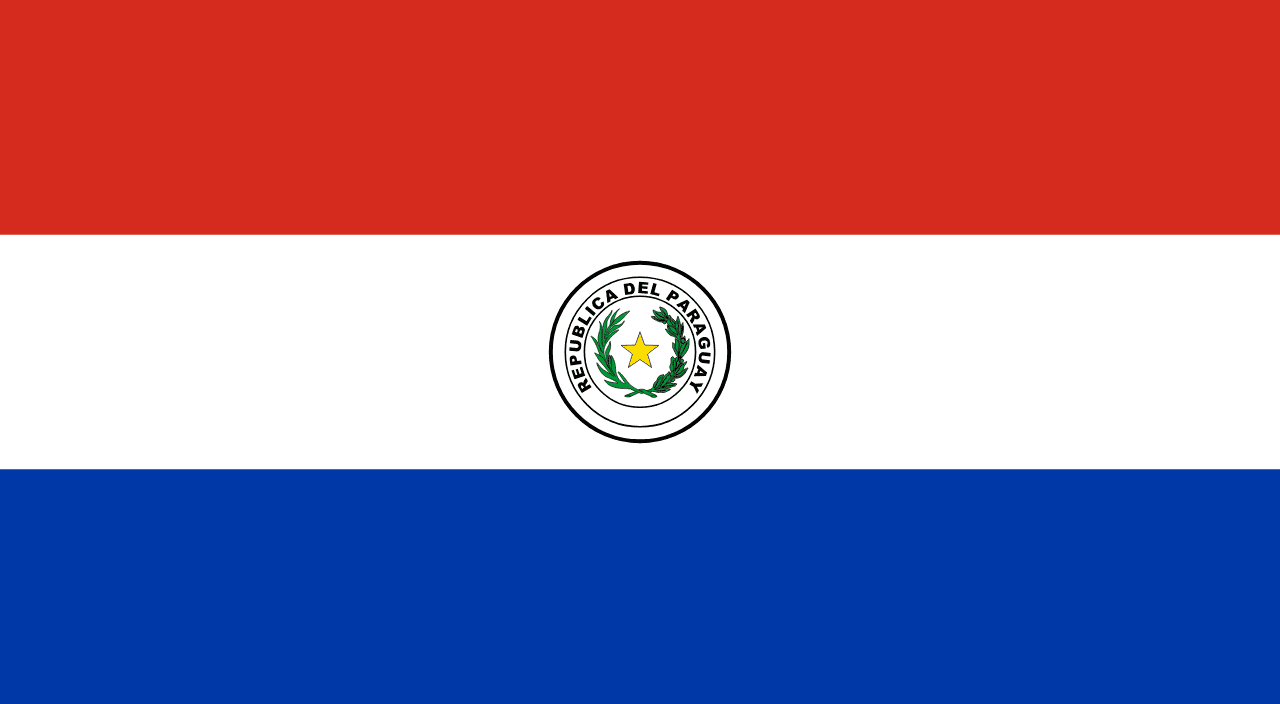
Paraguay
A horizontal tricolor of red, white, and blue. Unique among national flags, Paraguay’s flag has different emblems on the obverse and reverse sides: the national coat of arms on the front, and the treasury seal on the back.
- Adoption
- Adopted: 1842
- Continent
- Continent: South America
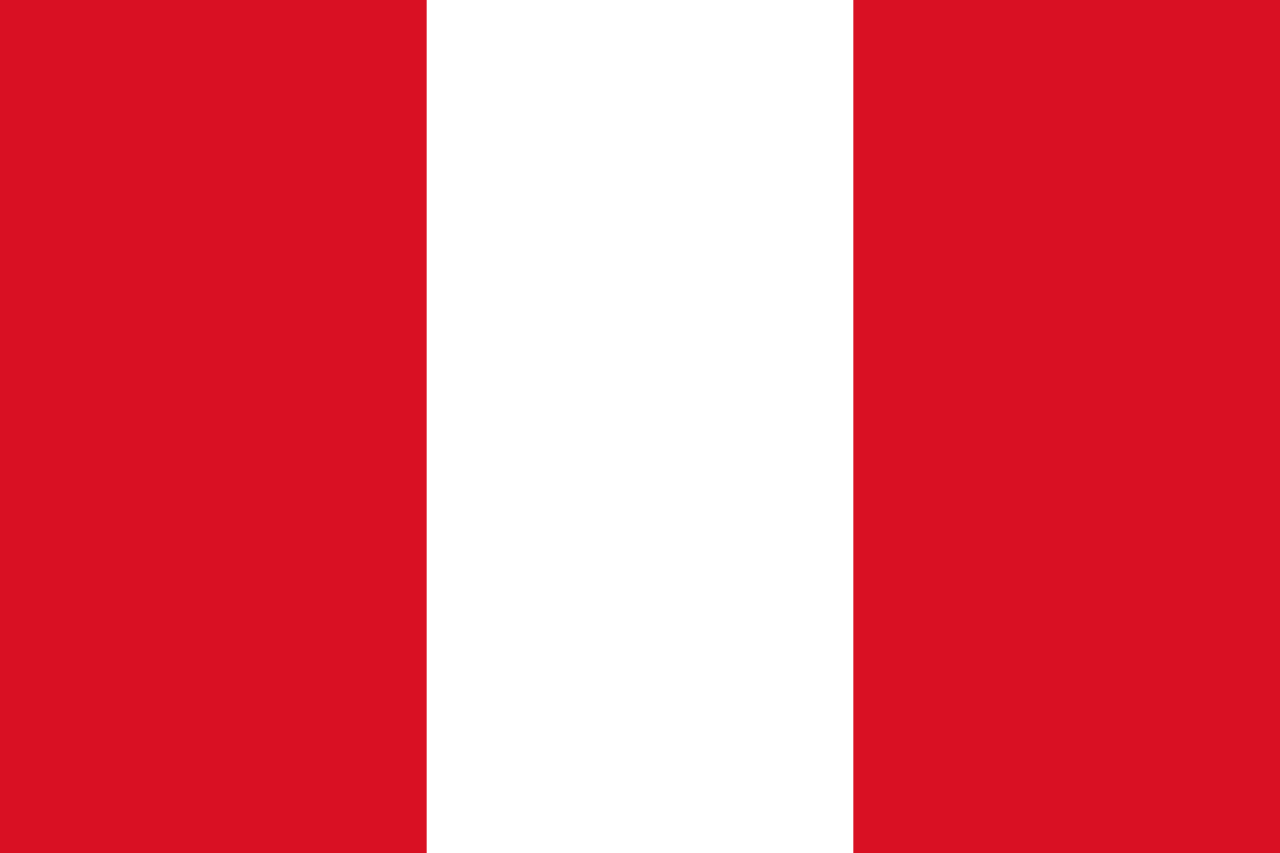
Peru
A vertical triband of red, white, and red. The civil flag is a simple triband, while the state flag includes the national coat of arms in the center white band. The design reflects Peru’s struggle for independence and its natural richness.
- Adoption
- Adopted: 1825
- Continent
- Continent: South America

Philippines
A horizontal bicolor of blue over red with a white equilateral triangle at the hoist, containing a golden sun and three golden stars. The Philippine flag is unique in that it is inverted in wartime, with the red field displayed on top.
- Adoption
- Adopted: 1898
- Continent
- Continent: Asia
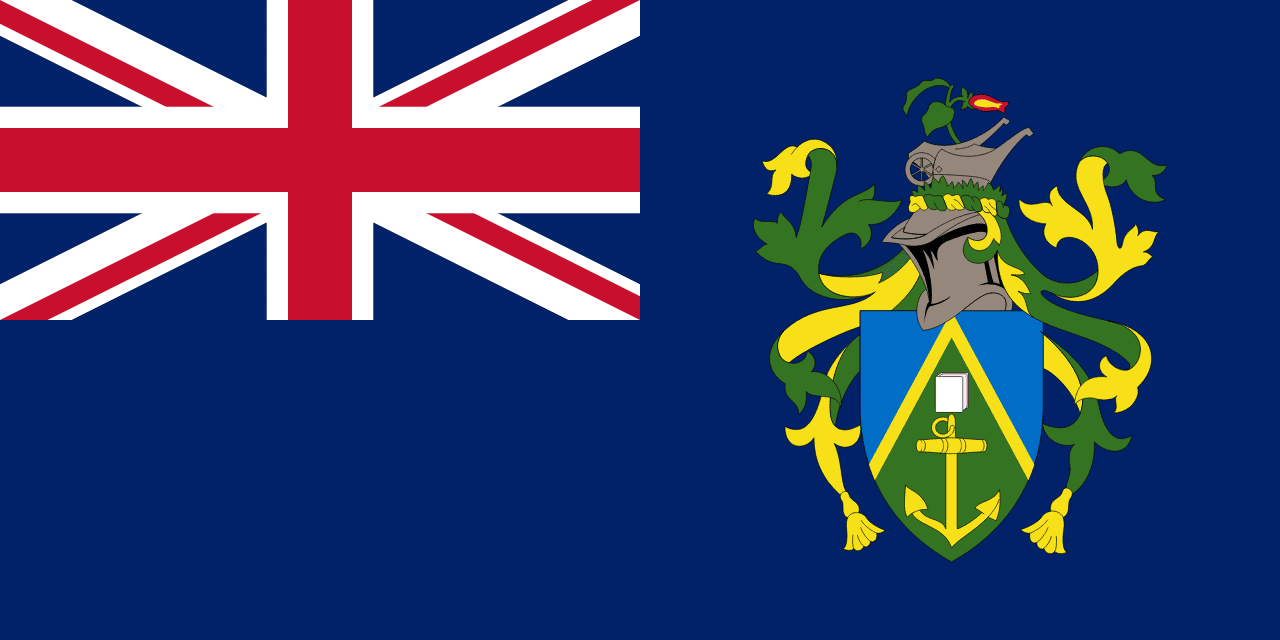
Pitcairn Islands
Blue ensign with Union Jack and coat of arms featuring the Bible, anchor, and wheelbarrow symbolizing faith, maritime heritage, and agriculture.
- Adoption
- Adopted: 1984
- Continent
- Continent: Oceania

Poland
A simple bicolor of white over red, reflecting Poland’s heraldry and national identity. The design is among the simplest yet most recognizable European flags.
- Adoption
- Adopted: 1919
- Continent
- Continent: Europe

Portugal
A vertical bicolor of green and red with the national coat of arms at the boundary. The design reflects Portugal’s history of exploration, discovery, and national pride.
- Adoption
- Adopted: 1911
- Continent
- Continent: Europe
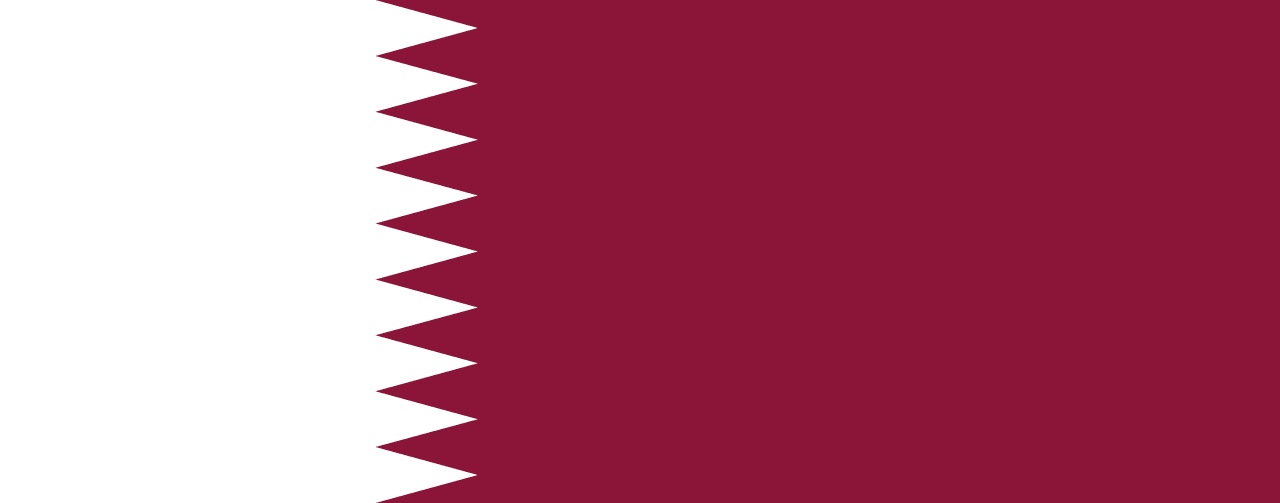
Qatar
A national flag divided vertically with a broad white band on the hoist and a larger maroon field separated by nine white serrated points. Qatar’s unique flag ratio and color reflect its history and independence.
- Adoption
- Adopted: 1971
- Continent
- Continent: Asia

Romania
A vertical tricolor of blue, yellow, and red, representing the unity of Romania’s historical regions. The design dates to the 19th century and was restored after the fall of communism in 1989.
- Adoption
- Adopted: 1989
- Continent
- Continent: Europe

Russia
A horizontal tricolor of white, blue, and red, representing the Russian Federation’s national identity, history, and Slavic heritage.
- Adoption
- Adopted: 1991
- Continent
- Continent: Europe/Asia
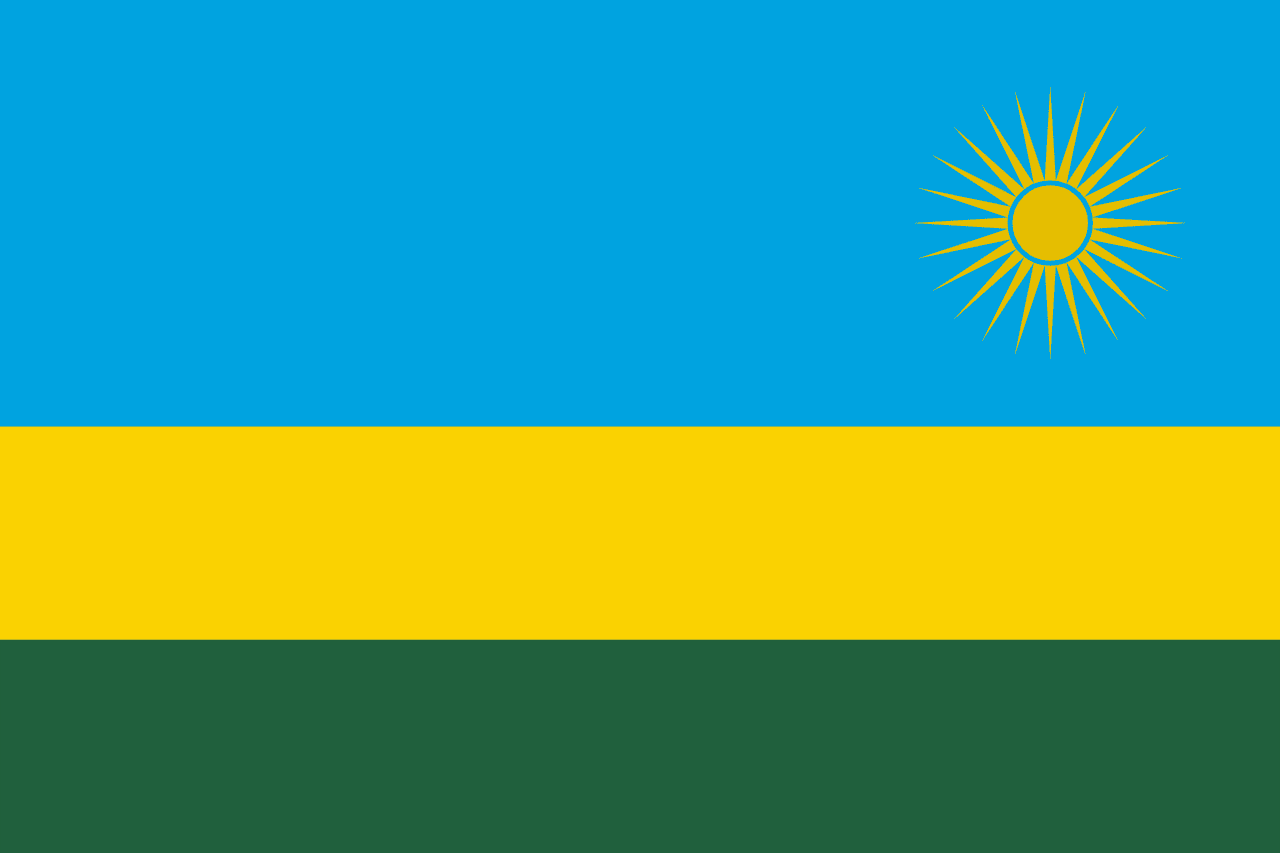
Rwanda
A tricolor of blue, yellow, and green bands with a golden sun in the upper fly corner. Adopted in 2001, the flag symbolizes unity, hope, and a new era of peace following the 1994 genocide.
- Adoption
- Adopted: 2001
- Continent
- Continent: Africa
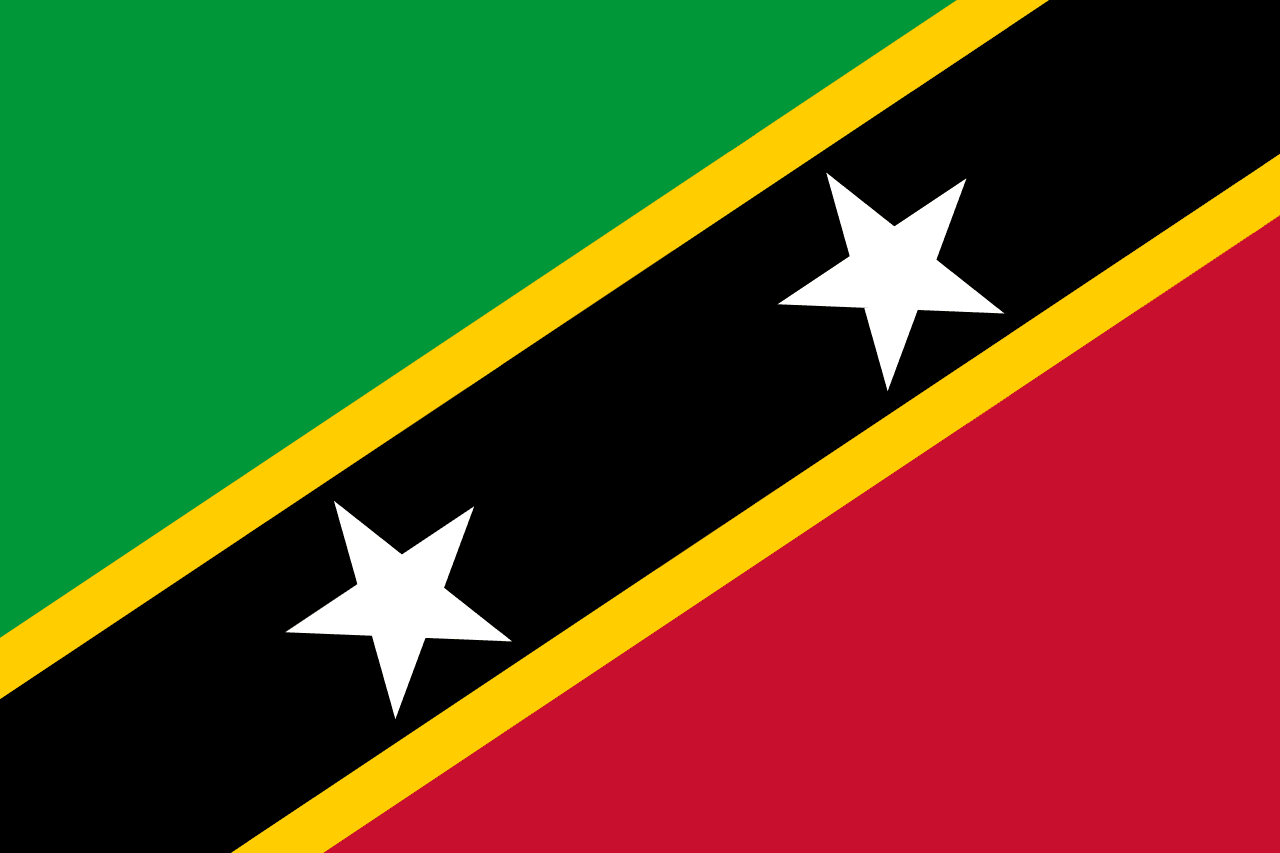
Saint Kitts and Nevis
A diagonal black band edged in yellow divides the flag from lower hoist to upper fly, with green above and red below. Two white stars appear in the black band, representing hope and liberty.
- Adoption
- Adopted: 1983
- Continent
- Continent: North America
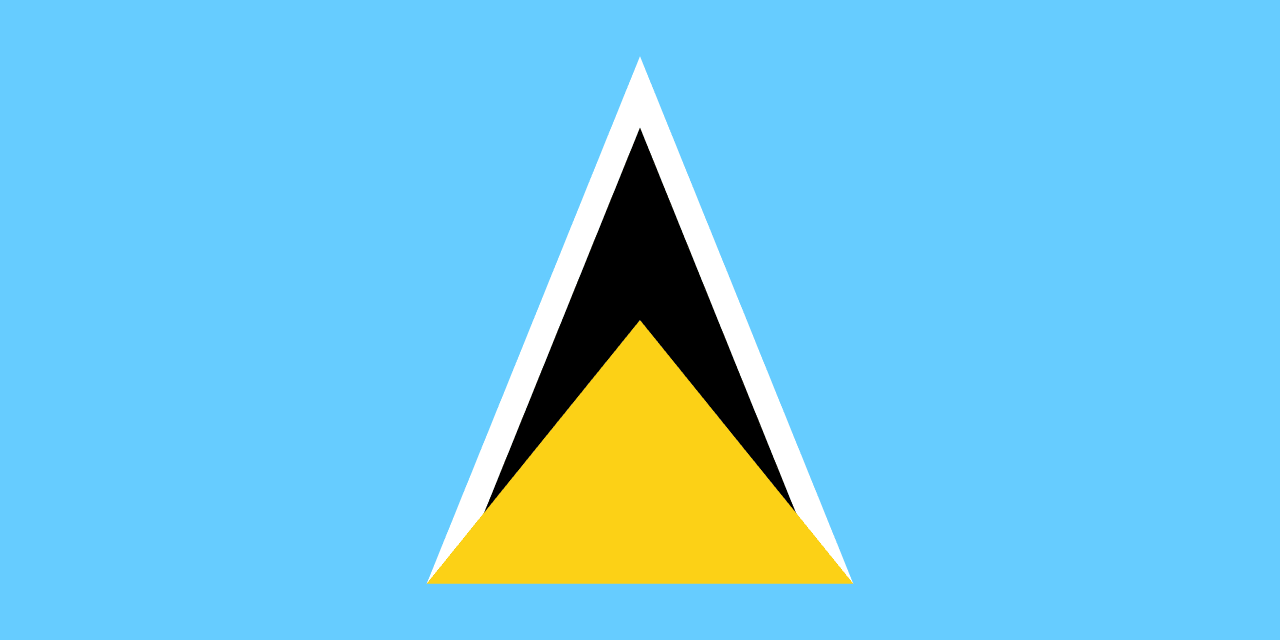
Saint Lucia
A cerulean blue field with a gold isosceles triangle in front of a white-edged black triangle. The design reflects the island’s natural features and cultural heritage.
- Adoption
- Adopted: 1967
- Continent
- Continent: North America
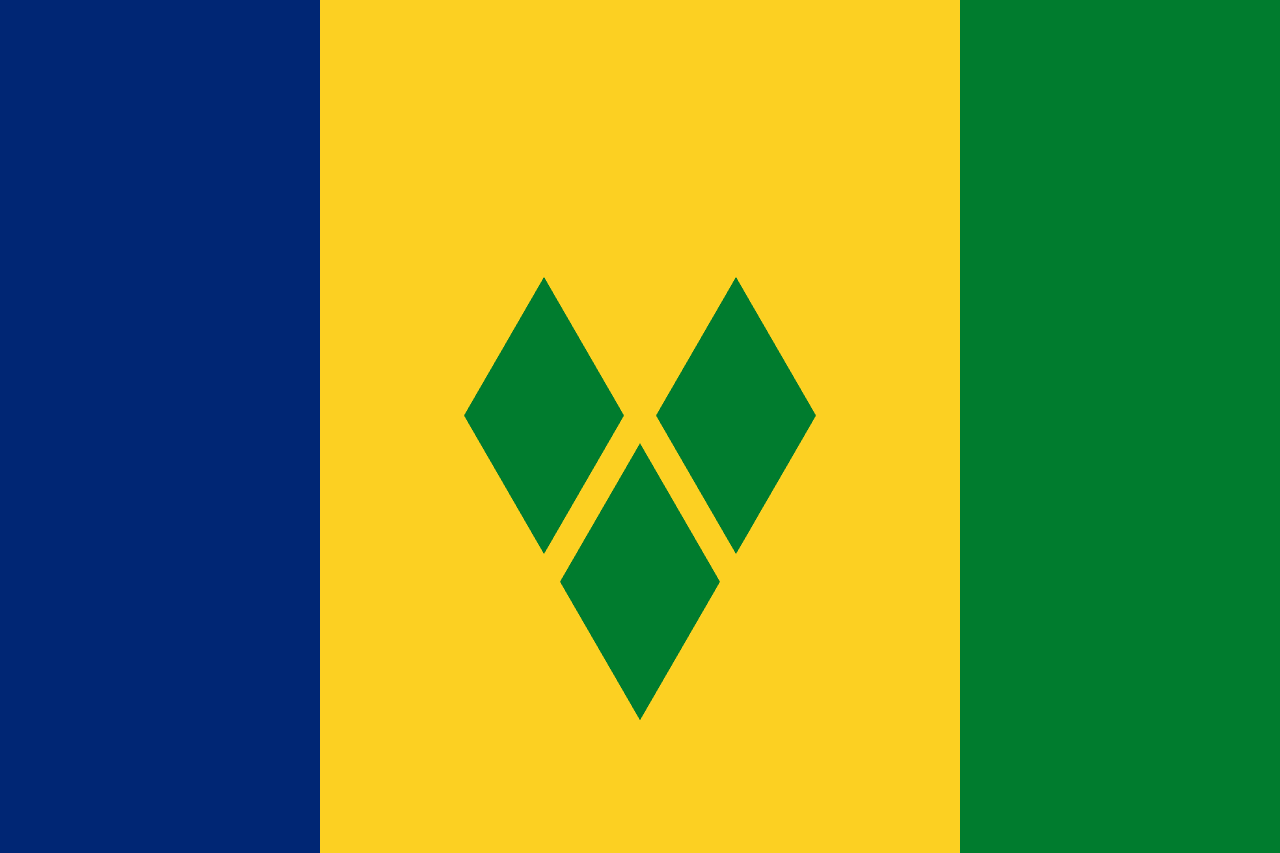
Saint Vincent and the Grenadines
A vertical tricolor of blue, gold, and green with three green diamonds arranged in a V shape in the center of the gold band. The diamonds symbolize Saint Vincent as the 'Gems of the Antilles.'
- Adoption
- Adopted: 1985
- Continent
- Continent: North America
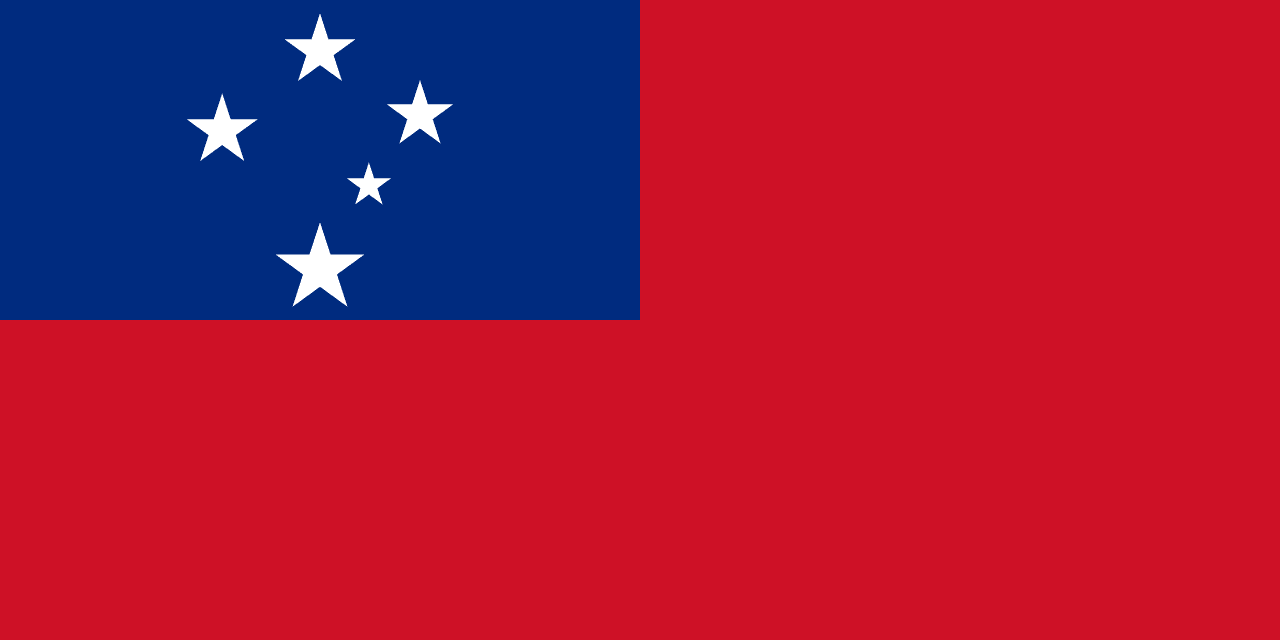
Samoa
A red field with a blue rectangle in the upper hoist containing the Southern Cross constellation in white. The flag reflects Samoan heritage and its place in the South Pacific.
- Adoption
- Adopted: 1949
- Continent
- Continent: Oceania
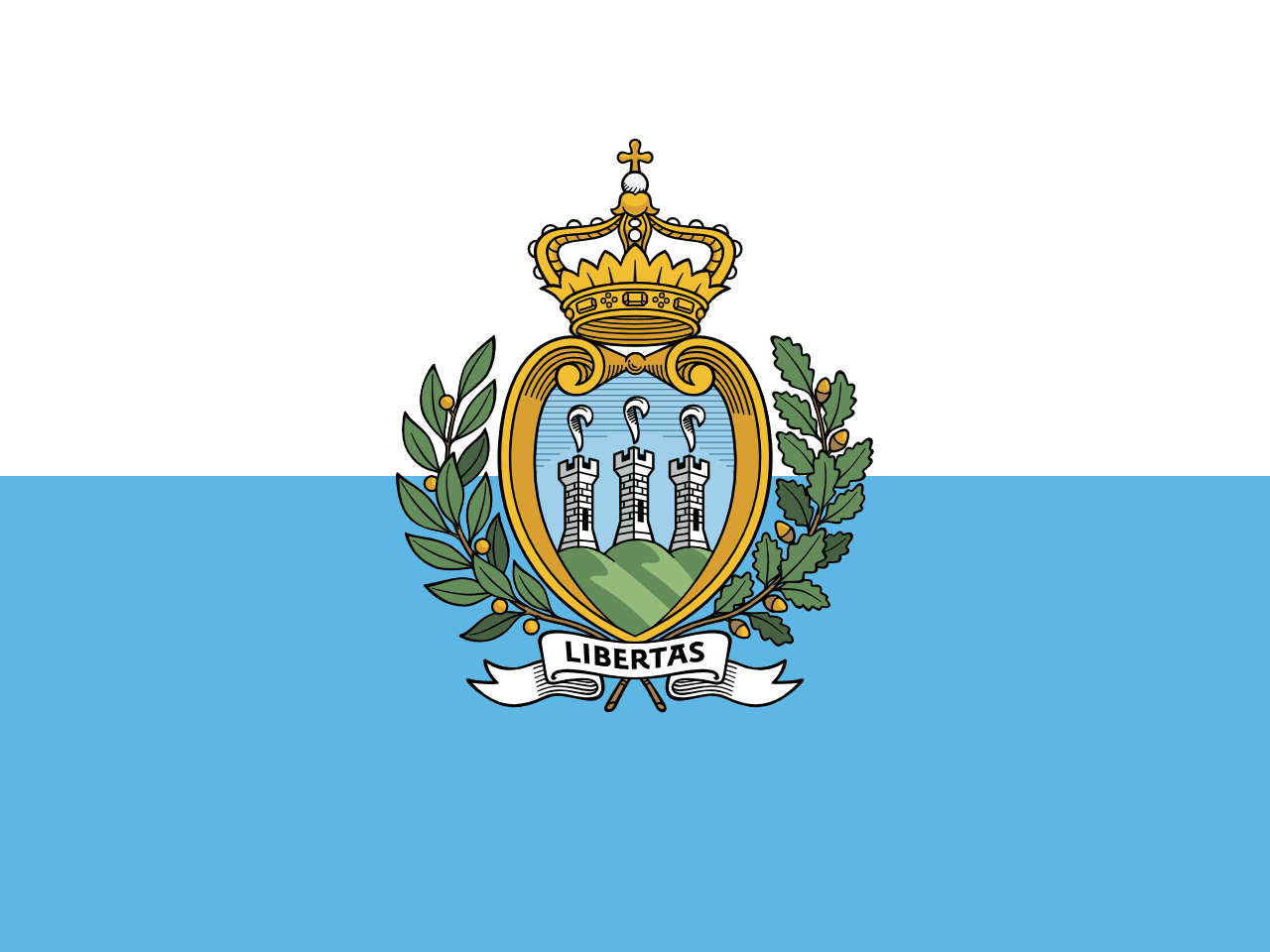
San Marino
White and light blue horizontal bicolor with coat of arms featuring three towers representing the ancient fortress republic on Mount Titano.
- Adoption
- Adopted: 1862
- Continent
- Continent: Europe
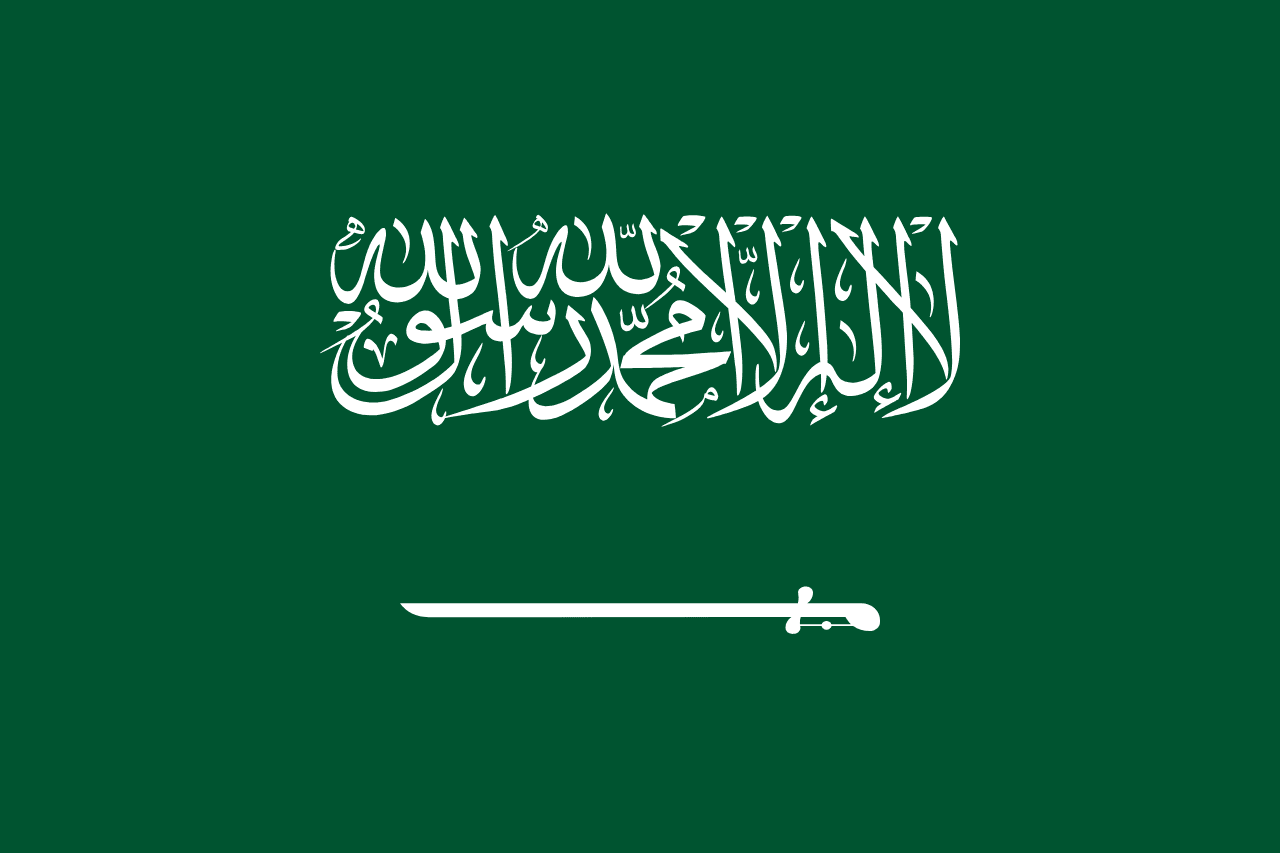
Saudi Arabia
A green field with the Islamic declaration of faith (shahada) in white above a horizontal sword. The design emphasizes Islam as the foundation of the state.
- Adoption
- Adopted: 1973
- Continent
- Continent: Asia

Scotland
The Saltire - white diagonal cross of Saint Andrew on azure blue field, one of the world's oldest national flags.
- Adoption
- Adopted: 12th century
- Continent
- Continent: Europe
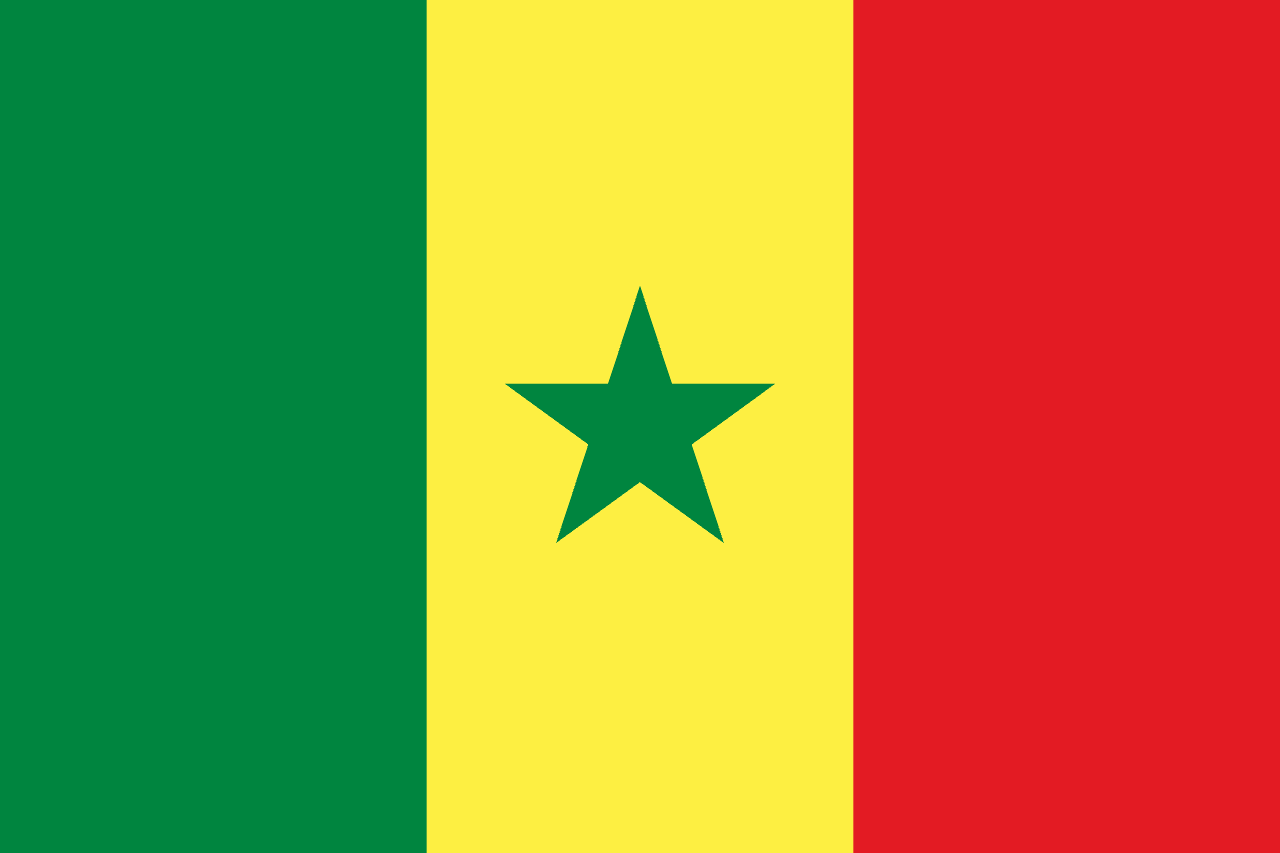
Senegal
A vertical tricolor of green, yellow, and red with a green five-pointed star centered in the yellow band. The flag reflects Pan-African identity and national unity.
- Adoption
- Adopted: 1960
- Continent
- Continent: Africa
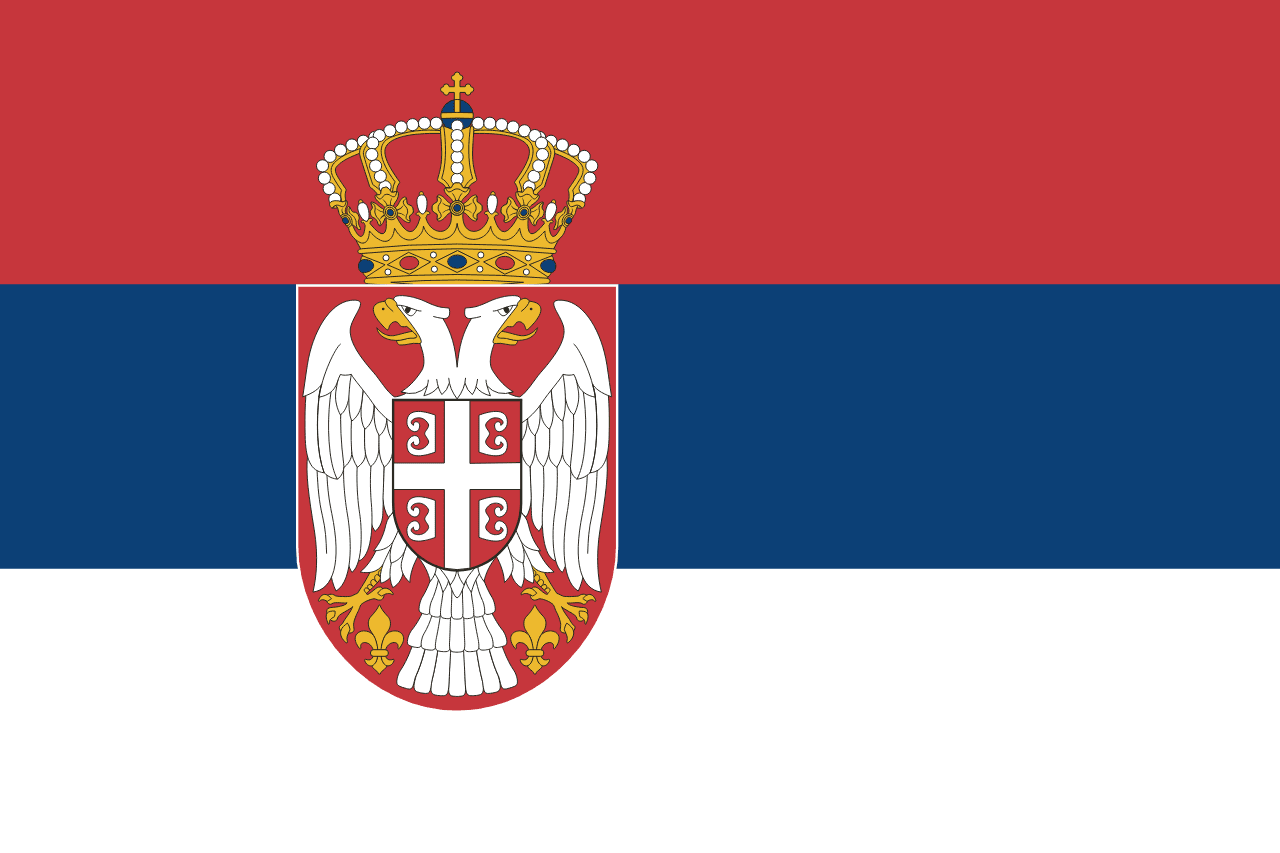
Serbia
A horizontal tricolor of red, blue, and white with the national coat of arms offset toward the hoist. The coat of arms features a double-headed white eagle, the Serbian cross, and a royal crown.
- Adoption
- Adopted: 2004
- Continent
- Continent: Europe
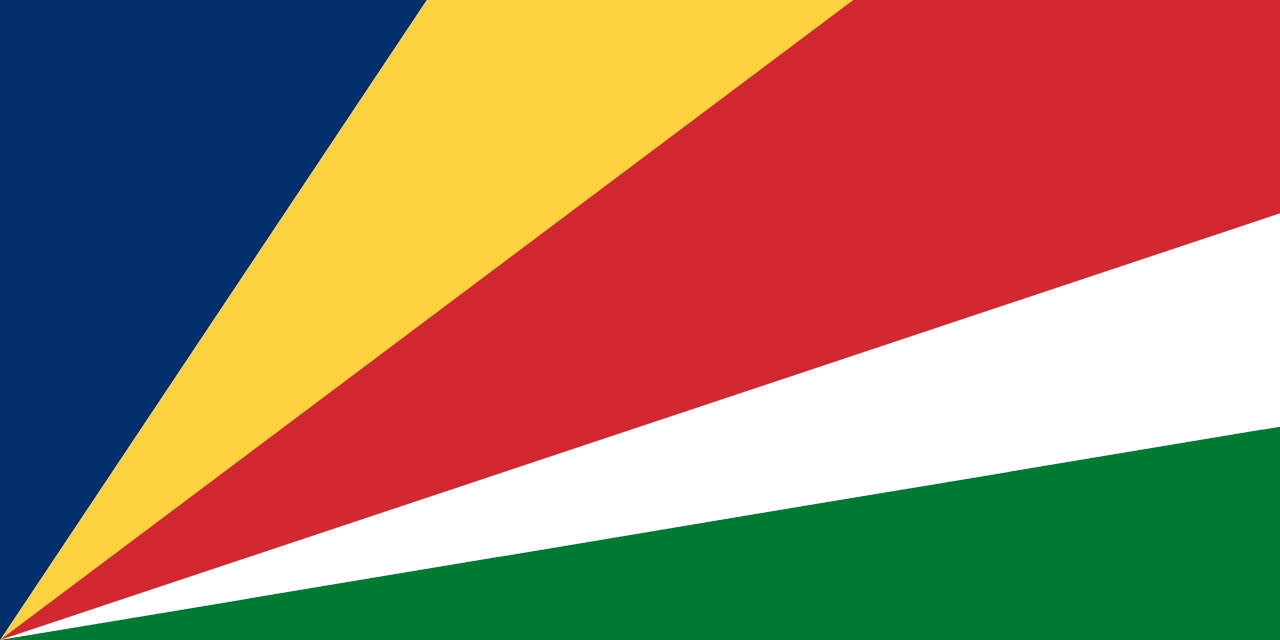
Seychelles
A flag of five oblique bands radiating from the bottom hoist corner: blue, yellow, red, white, and green. The design symbolizes a dynamic, forward-looking nation embracing unity and diversity.
- Adoption
- Adopted: 1996
- Continent
- Continent: Africa
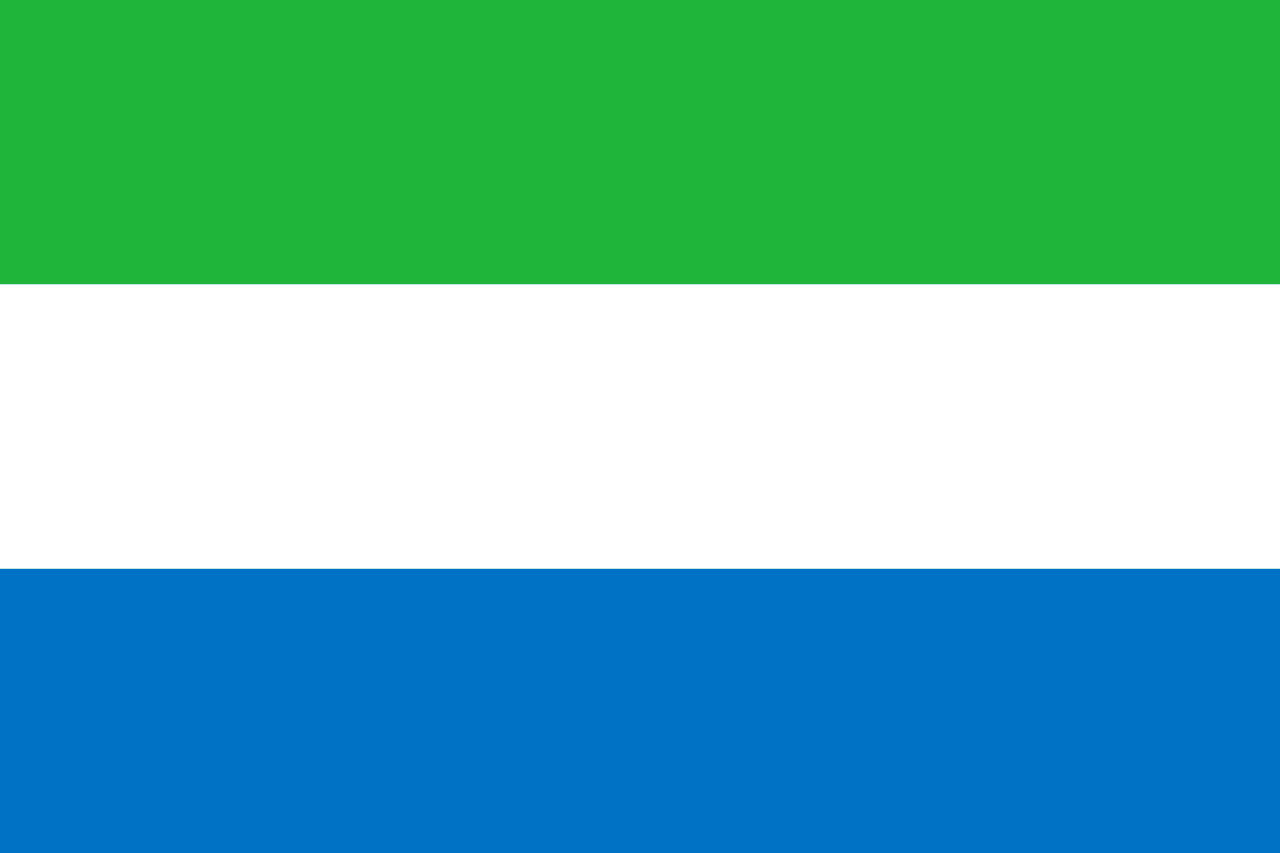
Sierra Leone
A horizontal tricolor of green, white, and blue, symbolizing the land, unity and justice, and the sea and hope, adopted at independence in 1961.
- Adoption
- Adopted: 1961
- Continent
- Continent: Africa
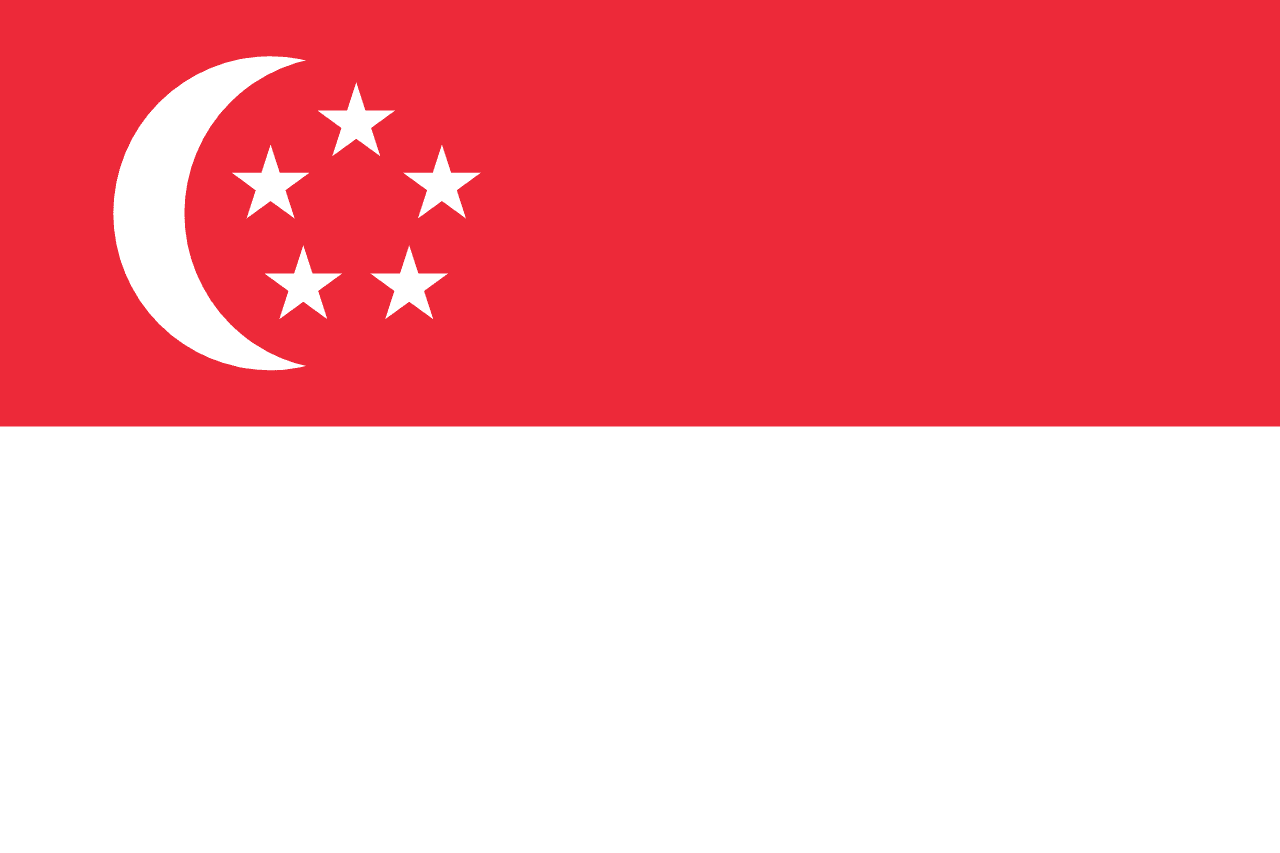
Singapore
A bicolor flag with a red upper half and white lower half. In the upper hoist is a white crescent moon beside five white five-pointed stars arranged in a circle. The flag symbolizes Singapore’s ideals of unity, progress, and multicultural harmony.
- Adoption
- Adopted: 1959
- Continent
- Continent: Asia
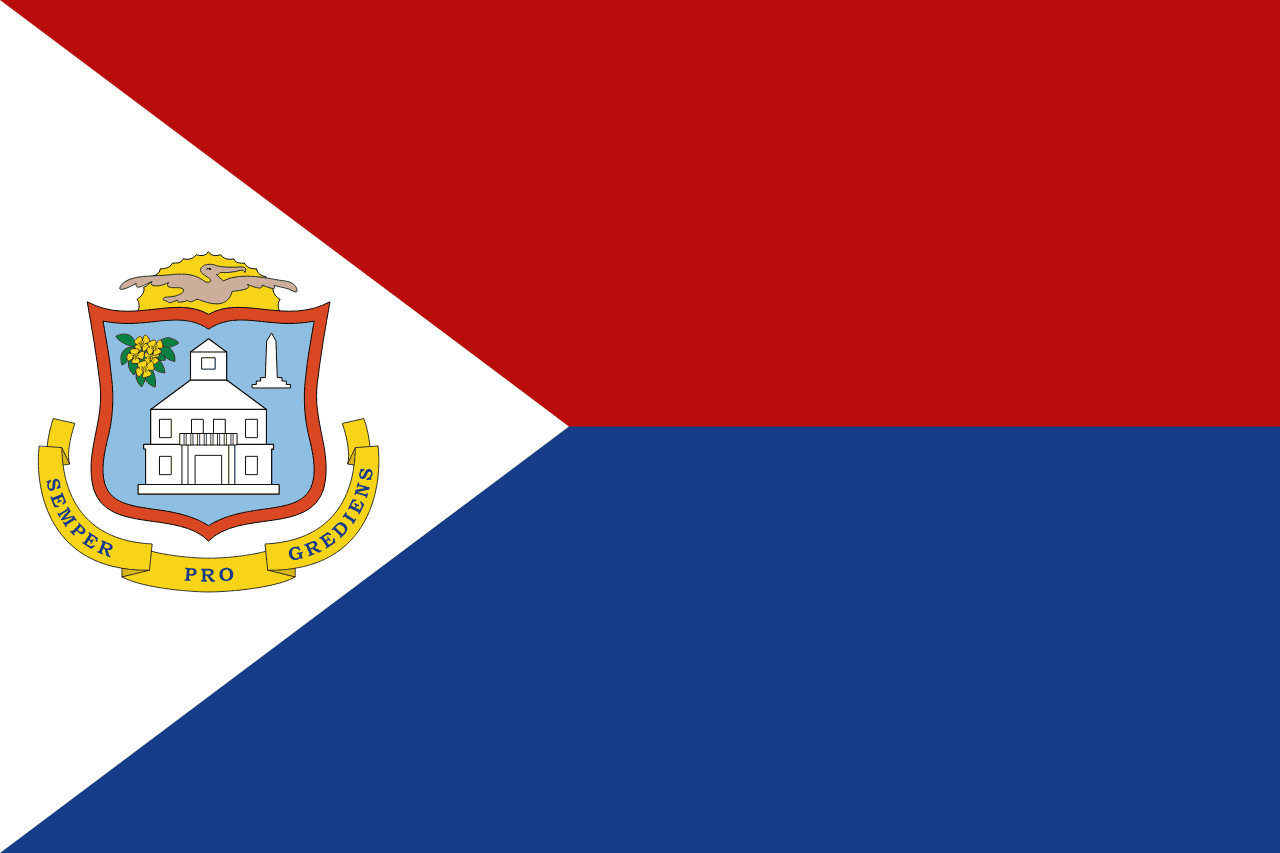
Sint Maarten
Horizontal tricolor with coat of arms featuring the courthouse, yellow-sage flower, and motto 'Semper Progrediens' (Always Progressing).
- Adoption
- Adopted: 1985
- Continent
- Continent: North America

Slovakia
A horizontal tricolor of white, blue, and red with the Slovak coat of arms placed toward the hoist. The coat of arms features a double silver cross rising from three blue hills, symbolizing Christianity and Slovakia’s mountainous landscape.
- Adoption
- Adopted: 1992
- Continent
- Continent: Europe

Slovenia
A horizontal tricolor of white, blue, and red with the Slovenian coat of arms placed toward the hoist in the upper stripe. The coat of arms features Mount Triglav, Slovenia’s highest peak, three six-pointed golden stars, and wavy blue lines representing rivers and the Adriatic Sea.
- Adoption
- Adopted: 1991
- Continent
- Continent: Europe
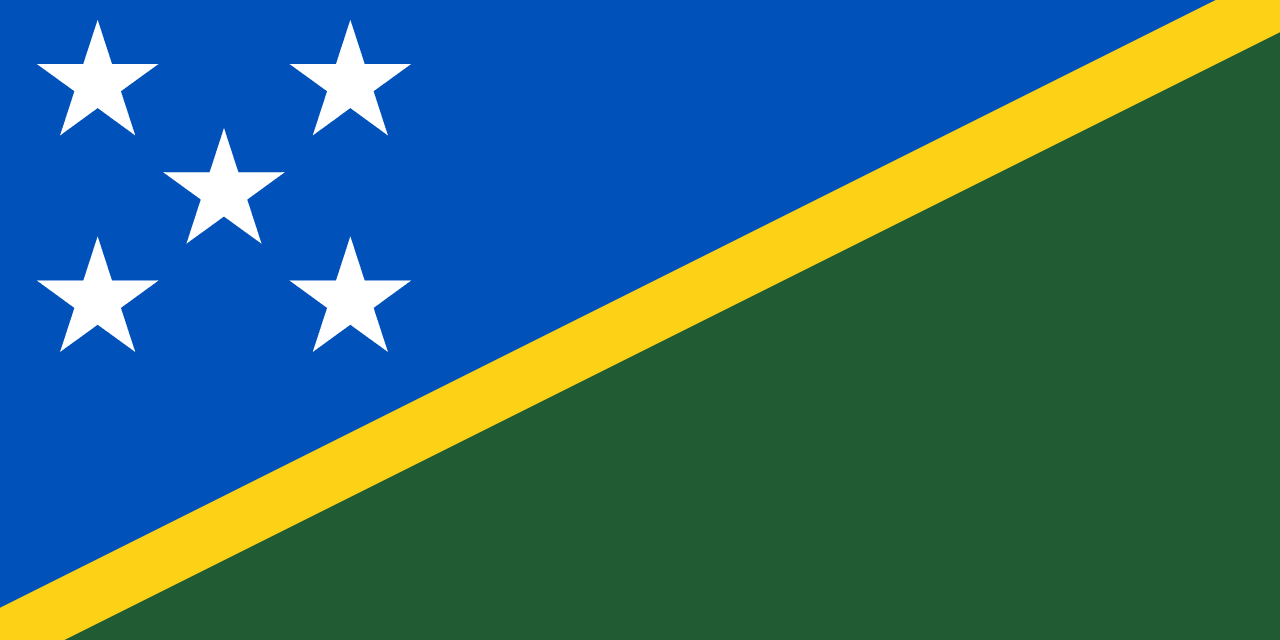
Solomon Islands
A blue triangle in the upper hoist and green triangle in the lower fly, separated by a thin yellow diagonal stripe, with five white five-pointed stars arranged in an X pattern in the blue triangle, representing the ocean, land, sunshine, and the five main island groups of this Melanesian nation.
- Adoption
- Adopted: 1978
- Continent
- Continent: Oceania
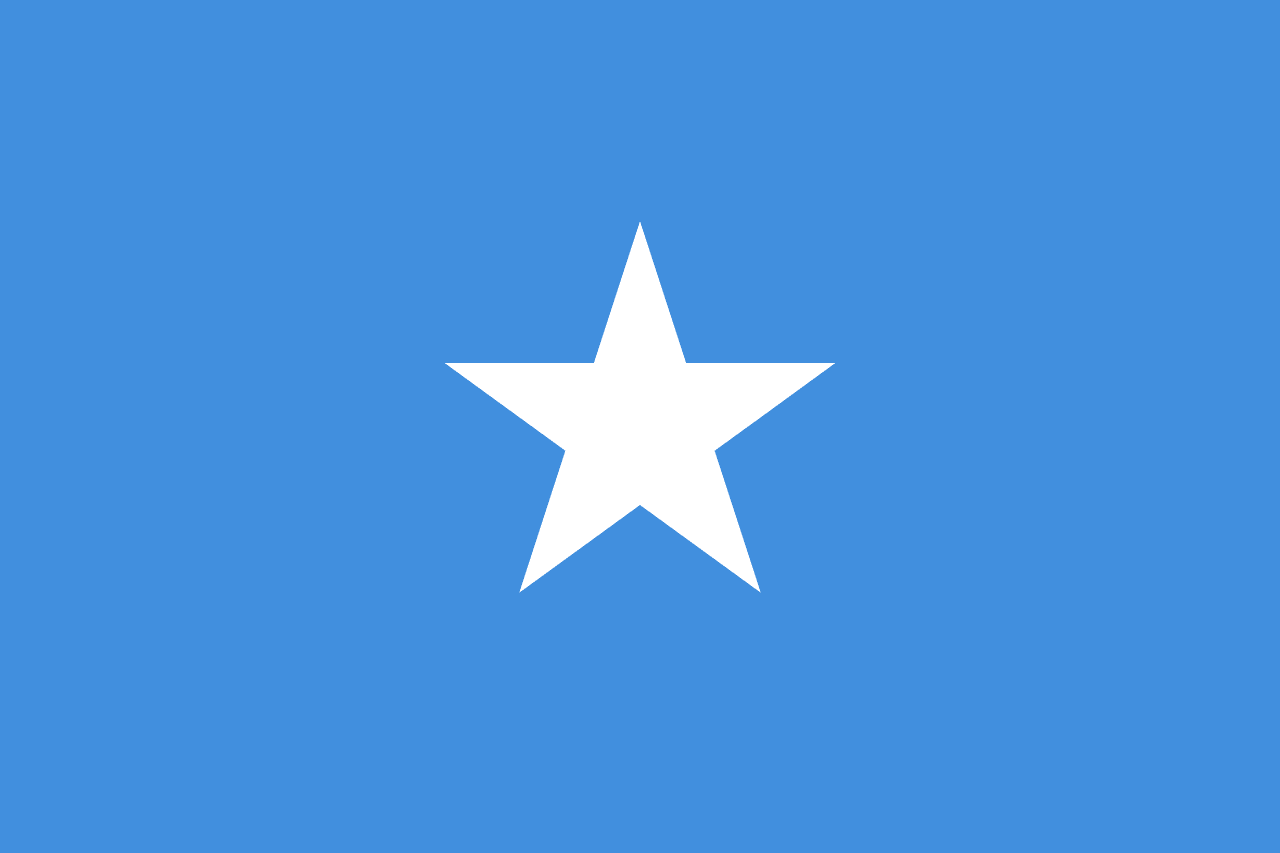
Somalia
A light blue field with a white five-pointed star in the center, representing the United Nations that helped Somalia achieve independence, the sky and Indian Ocean surrounding the Horn of Africa, and the five historical regions of Greater Somalia united under one symbol.
- Adoption
- Adopted: 2012
- Continent
- Continent: Africa
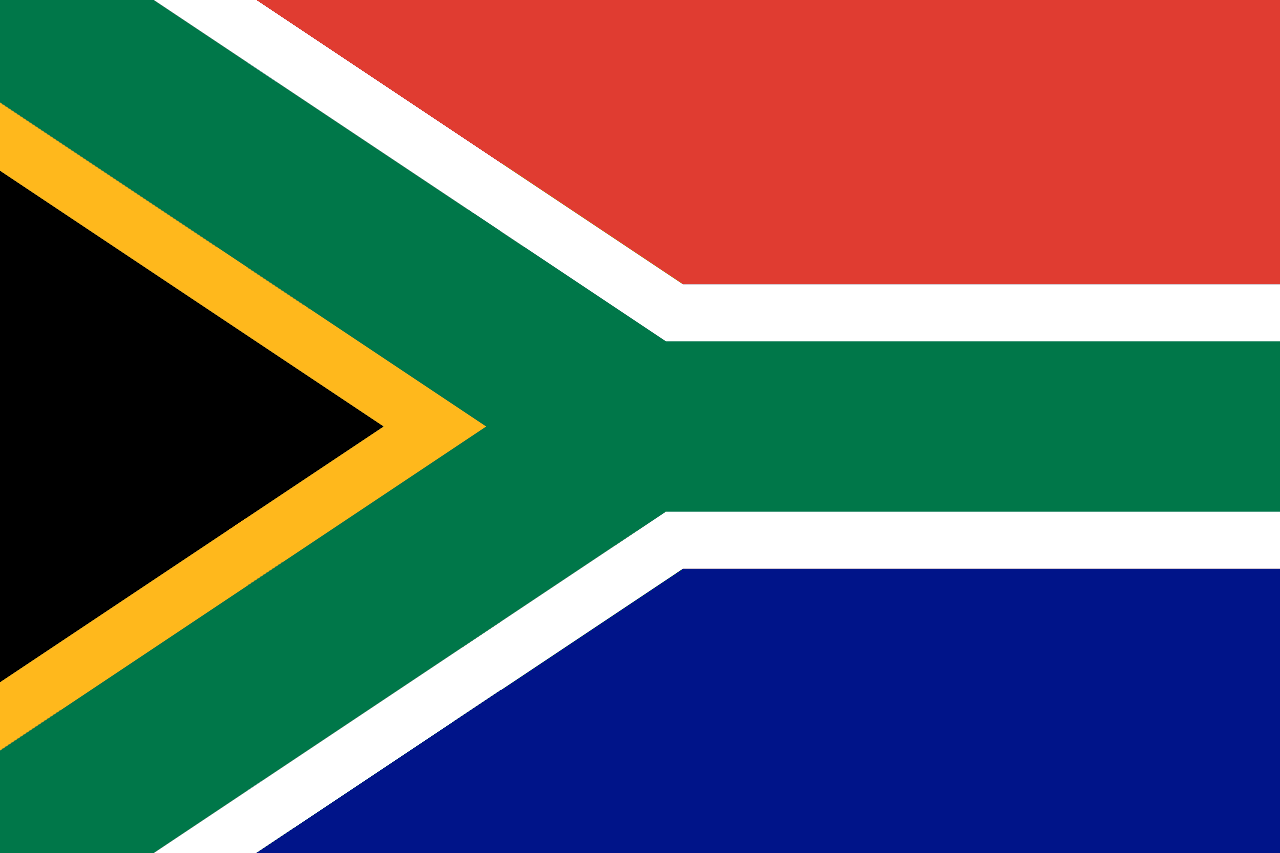
South Africa
A Y-shaped design with six colors converging toward the flag pole, representing the convergence of diverse elements in South African society and the country's path forward as a unified nation after the end of apartheid and the transition to democracy.
- Adoption
- Adopted: 1994
- Continent
- Continent: Africa
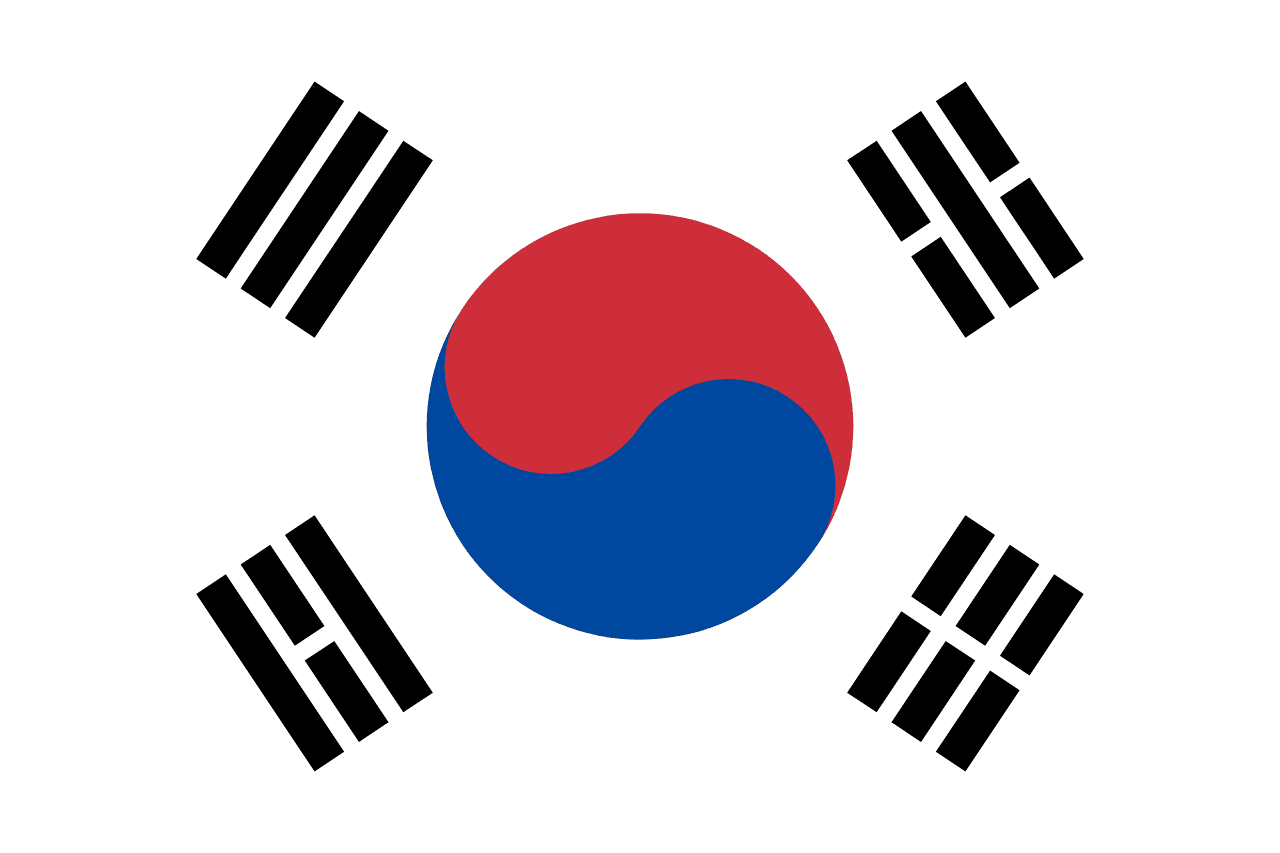
South Korea
A white field with a red and blue taegeuk (yin-yang symbol) in the center surrounded by four black trigrams from the I Ching, representing the harmony of opposites, the balance of natural forces, and the philosophical foundations of Korean civilization dating back thousands of years.
- Adoption
- Adopted: 1949
- Continent
- Continent: Asia
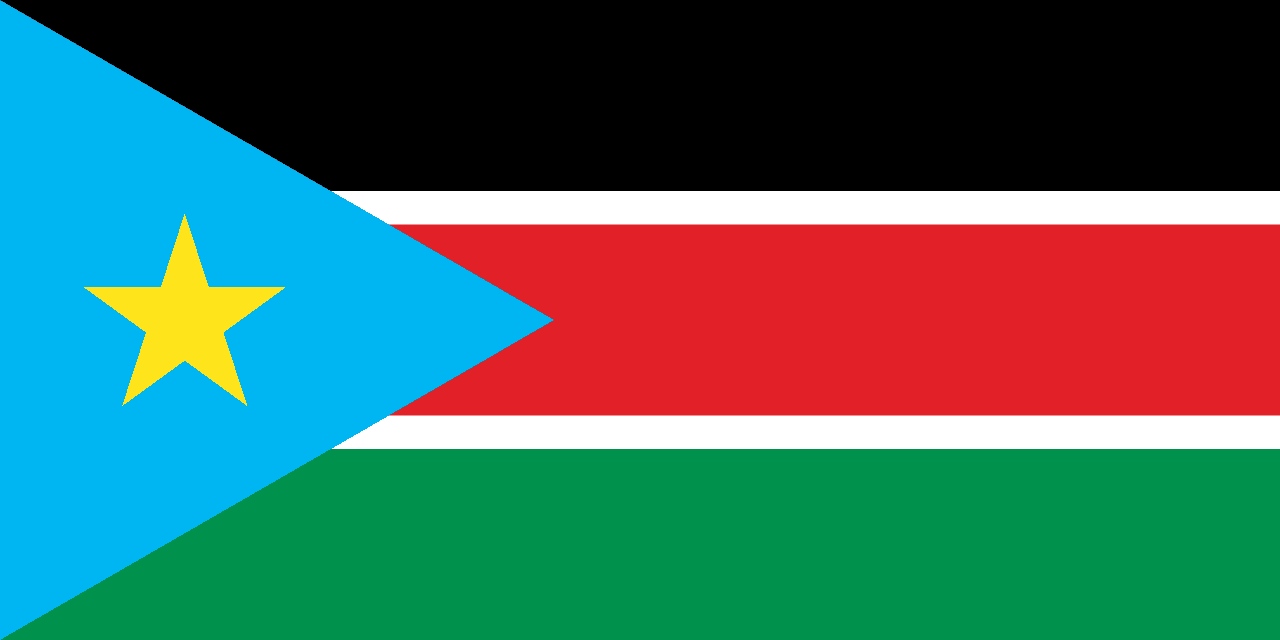
South Sudan
Three horizontal stripes of black, red, and white with a blue triangle at the hoist containing a yellow star, representing the African people, the blood shed for freedom, peace, the Nile River, and the unity of the states, designed for the world's newest country upon independence in 2011.
- Adoption
- Adopted: 2011
- Continent
- Continent: Africa

Spain
Two horizontal red stripes separated by a yellow stripe twice their width, with the national coat of arms on the yellow stripe toward the hoist, representing the historical kingdoms of Castile and Aragon and the traditional colors that have symbolized Spain for centuries.
- Adoption
- Adopted: 1981
- Continent
- Continent: Europe
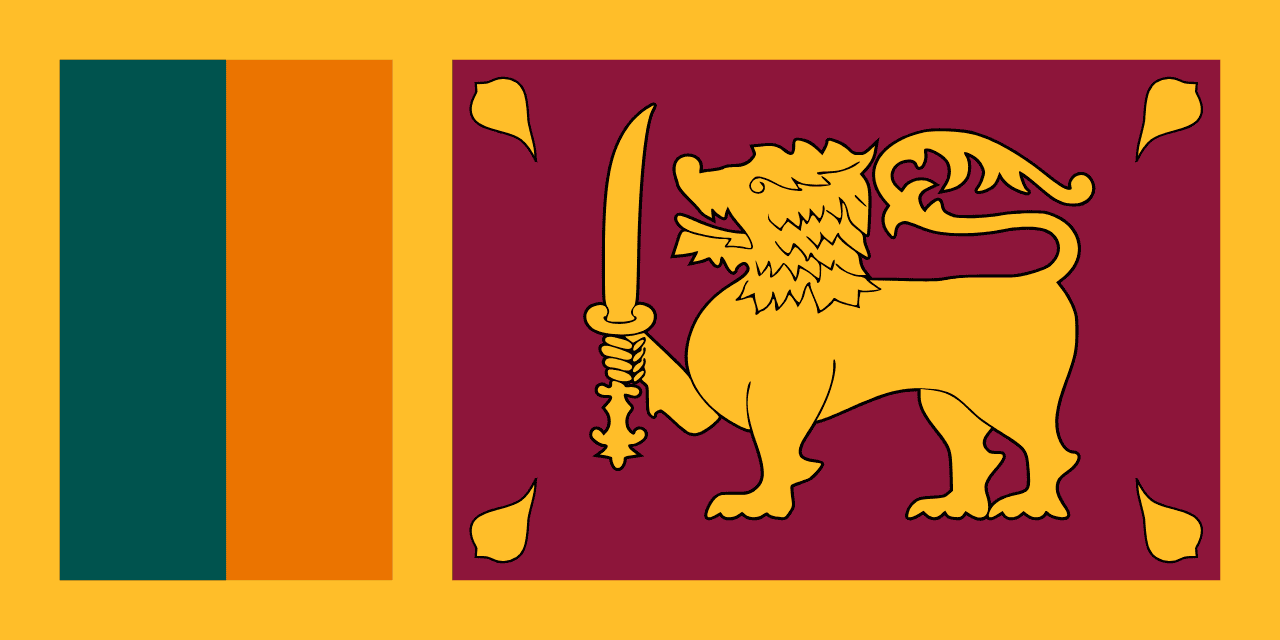
Sri Lanka
A maroon field with a golden lion holding a sword, surrounded by four golden bo leaves, with vertical stripes of orange and green on the hoist side, representing the Sinhalese majority, Tamil and Muslim minorities, Buddhism, and the courage and strength of the Sri Lankan people.
- Adoption
- Adopted: 1972
- Continent
- Continent: Asia
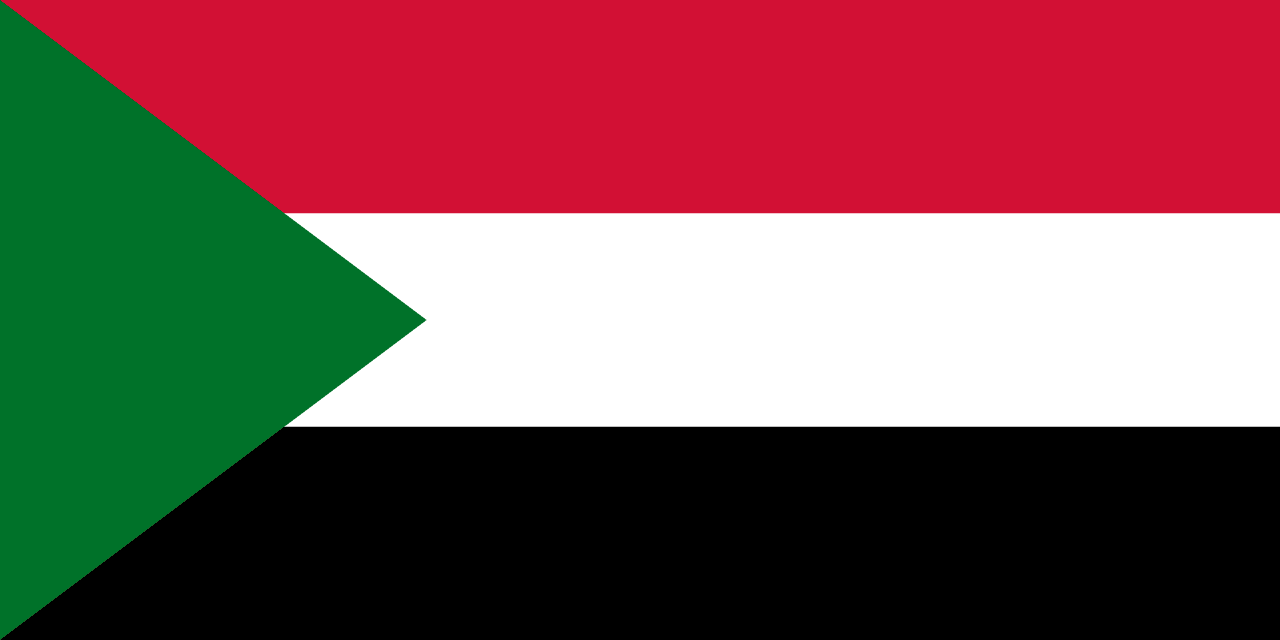
Sudan
Three horizontal stripes of red, white, and black with a green triangle at the hoist, representing the Pan-Arab colors of the struggle for independence, the blood shed for freedom, peace and light, the battles against oppression, and the prosperity and agriculture of Sudan.
- Adoption
- Adopted: 1970
- Continent
- Continent: Africa
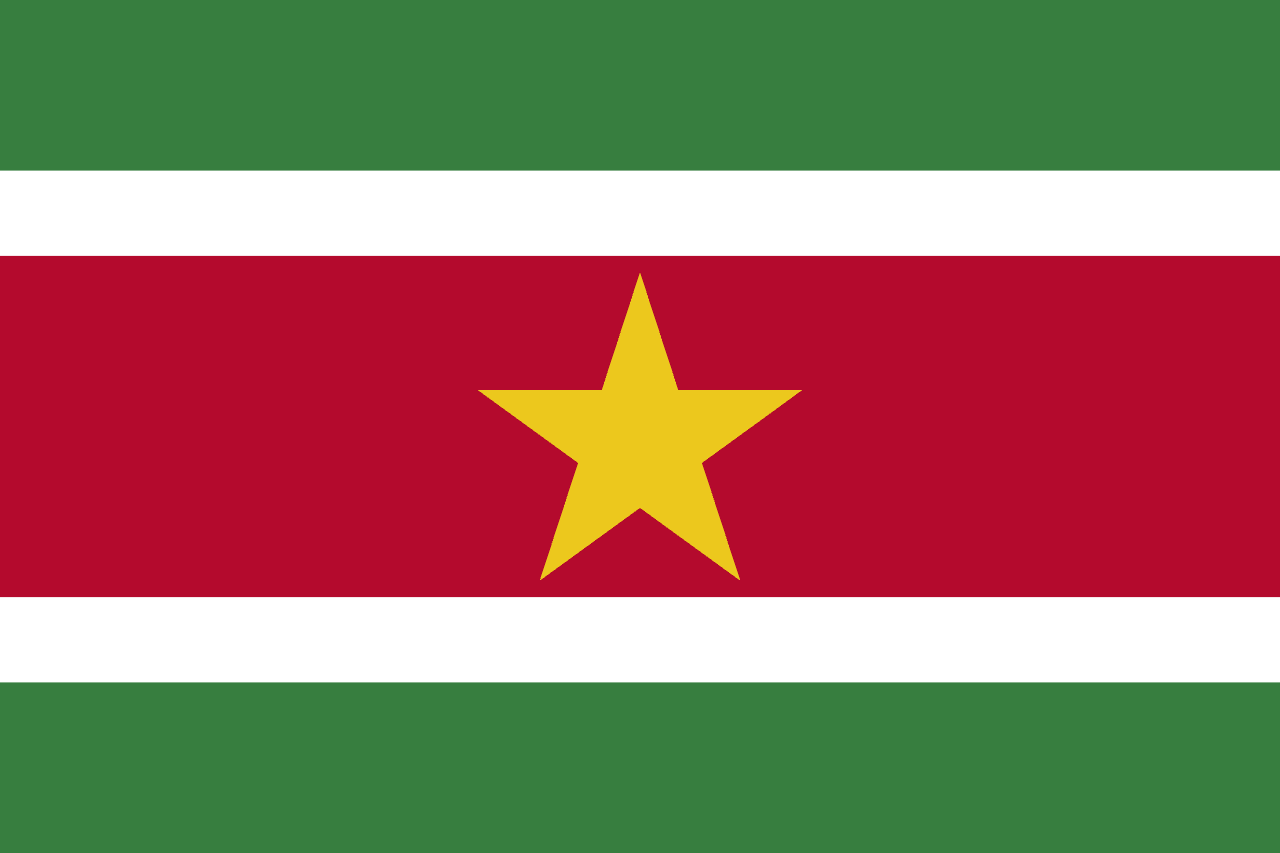
Suriname
Five horizontal stripes of green, white, red, white, and green with a yellow five-pointed star in the center of the red stripe, representing the country's forests and agriculture, peace and justice, unity and progress of the people, hope and golden future, designed for independence in 1975.
- Adoption
- Adopted: 1975
- Continent
- Continent: South America

Sweden
A blue field with a yellow Nordic cross extending to the flag's edges, representing the Christian heritage that shaped Swedish culture and the national colors that have symbolized Sweden since medieval times, part of the Nordic cross tradition shared with other Scandinavian countries.
- Adoption
- Adopted: 1906
- Continent
- Continent: Europe

Switzerland
A red square field with a white Greek cross in the center, representing the Christian faith that united the early Swiss cantons and the blood shed in defense of freedom, with origins dating back to the Holy Roman Empire and medieval Swiss military banners.
- Adoption
- Adopted: 1889
- Continent
- Continent: Europe
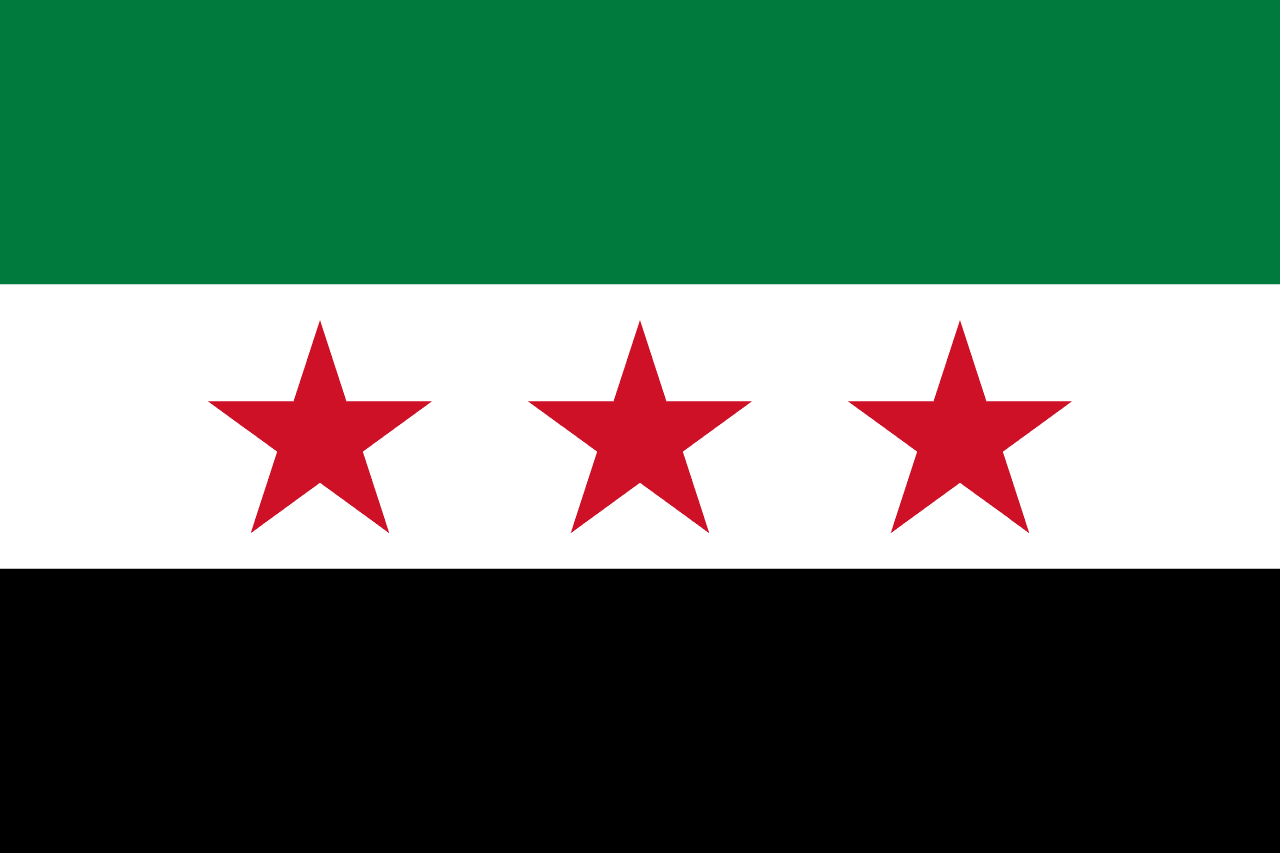
Syria
Three horizontal stripes of red, white, and black with two green five-pointed stars on the white stripe, representing the Pan-Arab colors of liberation struggles, the Hashemite flag heritage, and the Ba'ath Party's Arab socialist ideology that has governed Syria since 1963.
- Adoption
- Adopted: 1980
- Continent
- Continent: Asia

Taiwan
A red field with a blue canton containing a white twelve-pointed sun, representing the Republic of China flag adopted in 1928, symbolizing the Three Principles of the People (nationalism, democracy, livelihood), the twelve traditional Chinese hours, and the aspiration for progress and development.
- Adoption
- Adopted: 1928
- Continent
- Continent: Asia
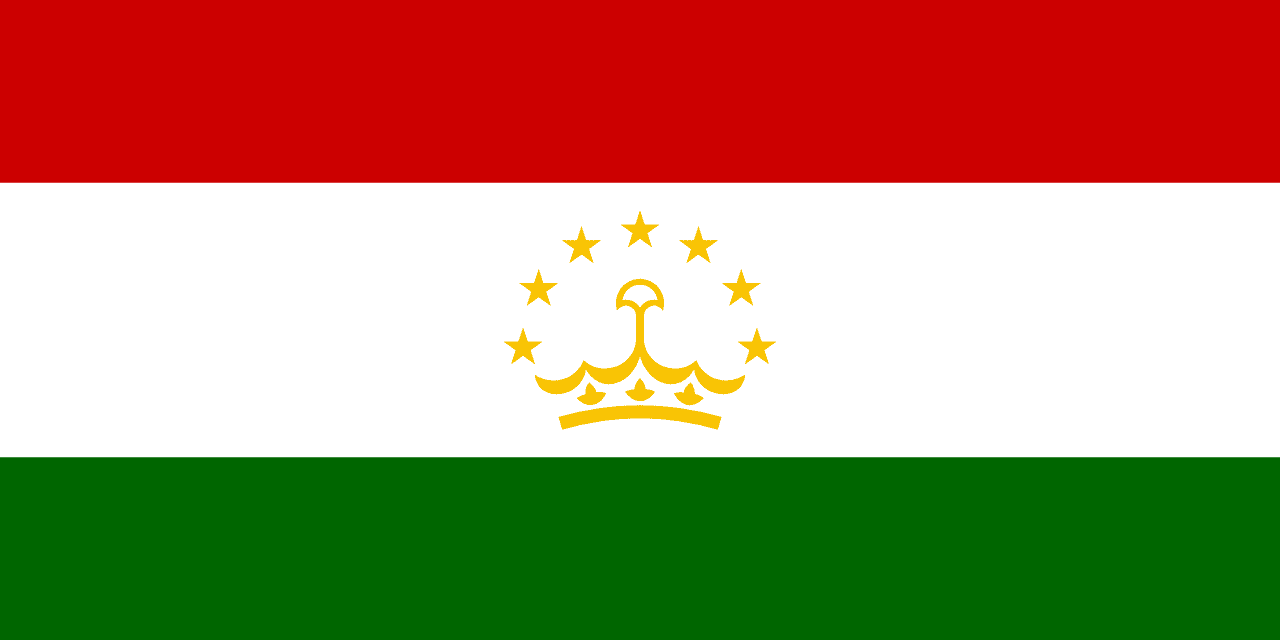
Tajikistan
Three horizontal stripes of red, white, and green with a golden crown topped by seven stars in the center of the white stripe, representing the unity of workers and peasants, cotton and snow-capped mountains, the verdant valleys, and the Somoni crown symbolizing Tajik sovereignty and the seven regions of historical Tajikistan.
- Adoption
- Adopted: 1992
- Continent
- Continent: Asia
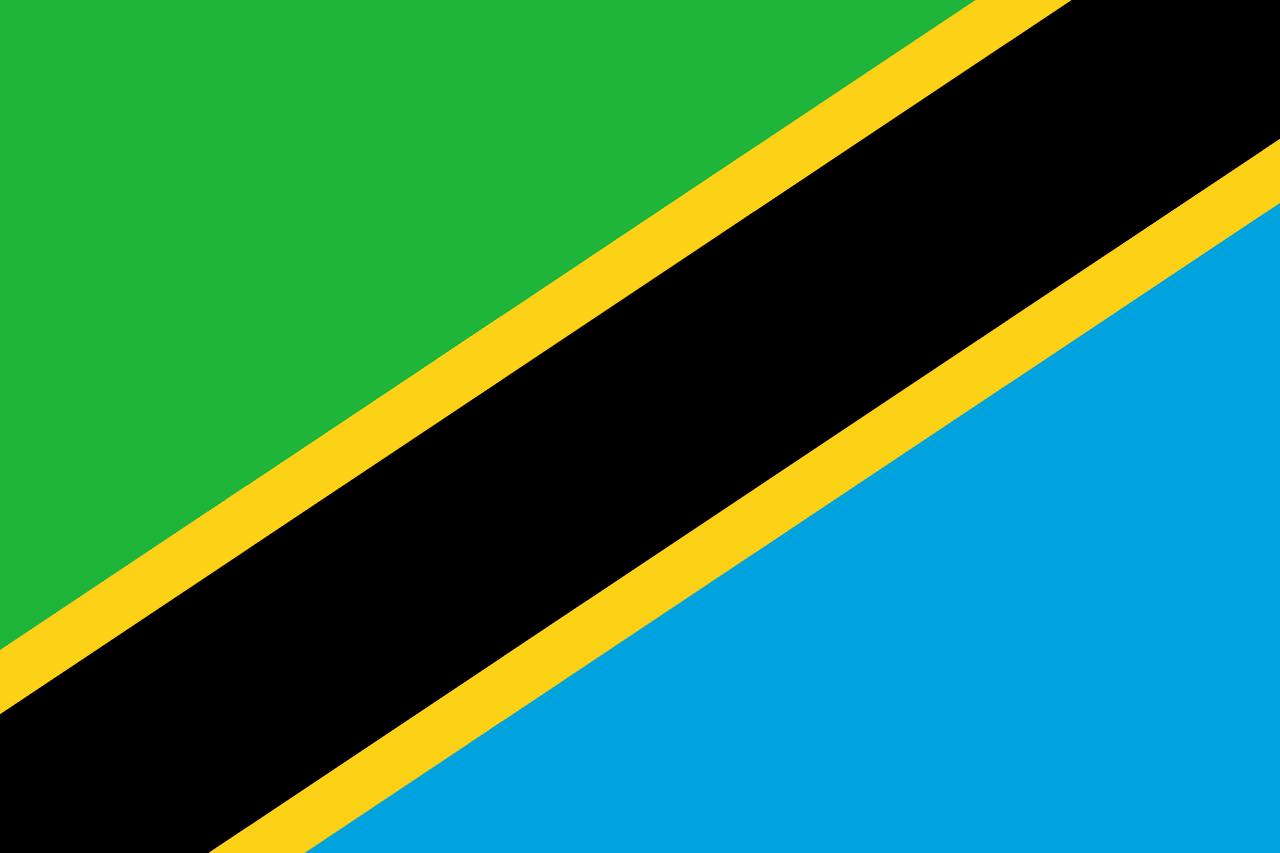
Tanzania
A green triangle in the upper hoist, a blue triangle in the lower fly, separated by a diagonal black stripe bordered by yellow stripes, representing the country's agriculture and forests, mineral wealth, the African people, and the Indian Ocean, symbolizing the union of Tanganyika and Zanzibar.
- Adoption
- Adopted: 1964
- Continent
- Continent: Africa

Thailand
Five horizontal stripes with red at top and bottom, white in the second and fourth positions, and blue in the center, representing the nation and the people, the purity of Buddhism, and the monarchy, designed by King Rama VI during World War I to show solidarity with the Allies.
- Adoption
- Adopted: 1917
- Continent
- Continent: Asia
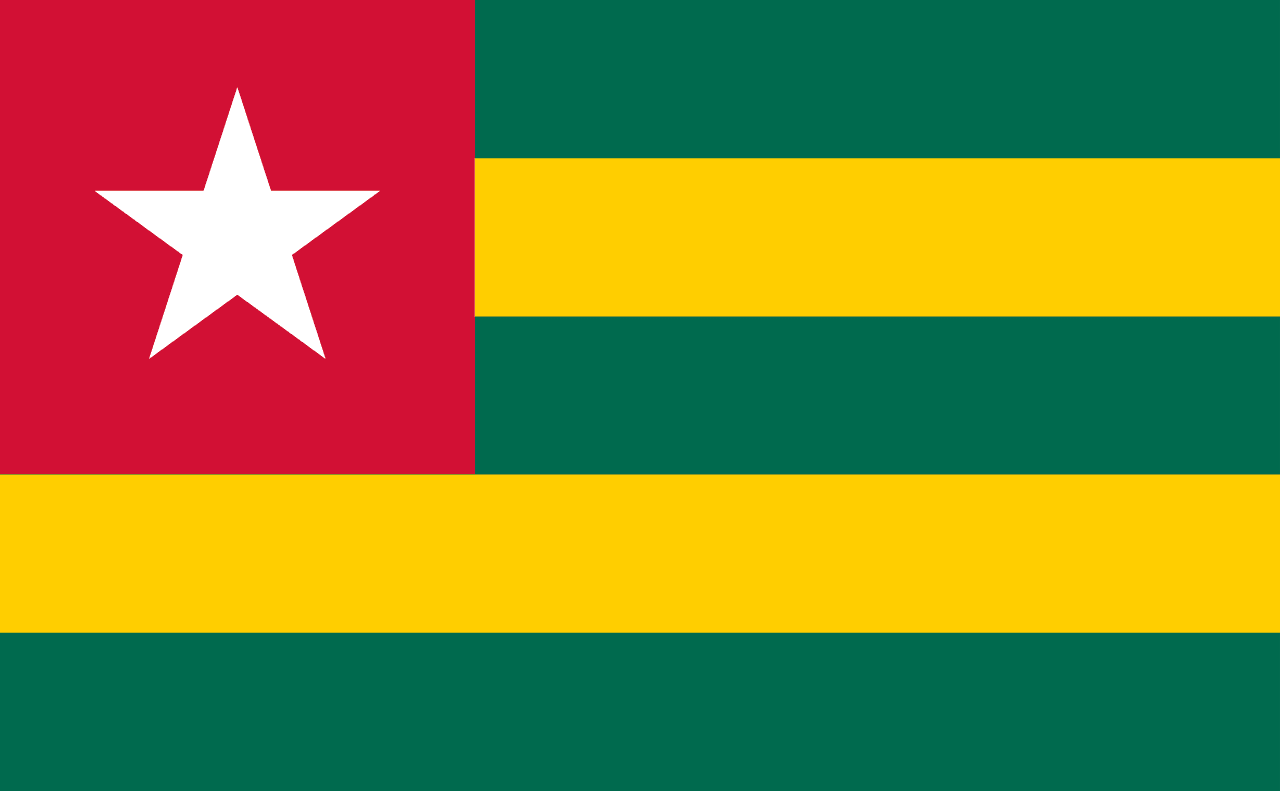
Togo
Five horizontal stripes alternating green and yellow with a blue canton containing a white five-pointed star, representing the country's forests and agriculture, mineral wealth, the blood shed for independence, hope and purity, and the unity of the Togolese people under one star.
- Adoption
- Adopted: 1960
- Continent
- Continent: Africa
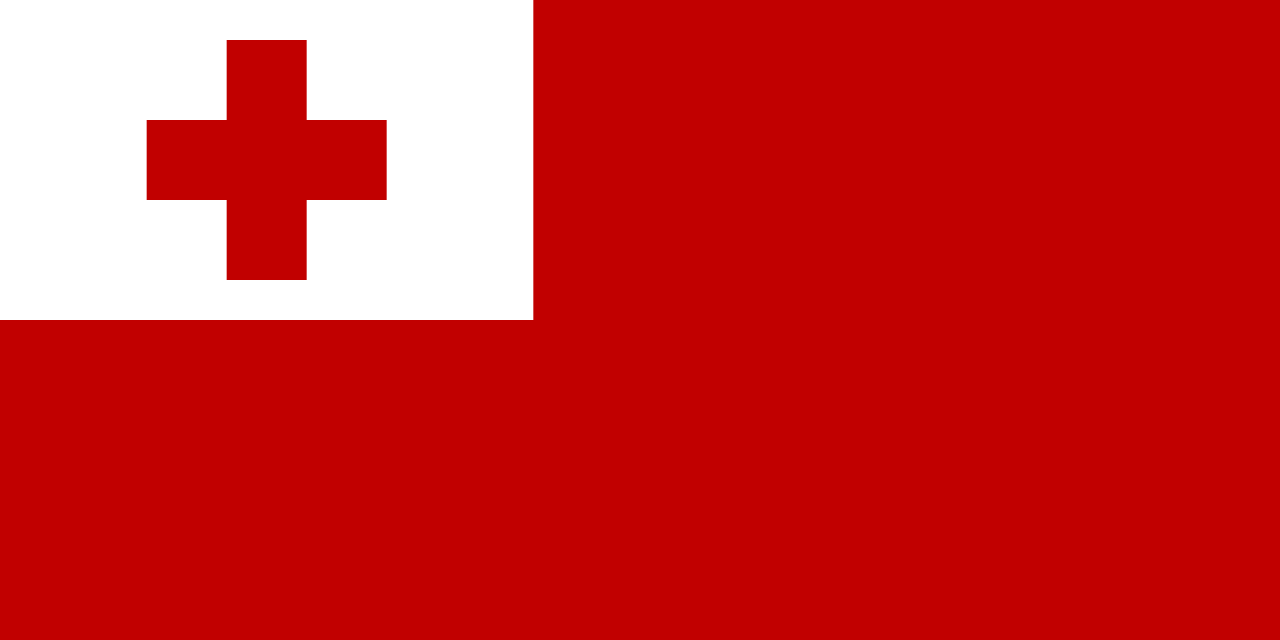
Tonga
A red field with a white canton containing a red cross, representing the blood of Christ and the sacrifice of Jesus for mankind, the purity of Christian faith, and the deeply Christian identity of the Kingdom of Tonga as a Pacific island nation that was never colonized.
- Adoption
- Adopted: 1875
- Continent
- Continent: Oceania
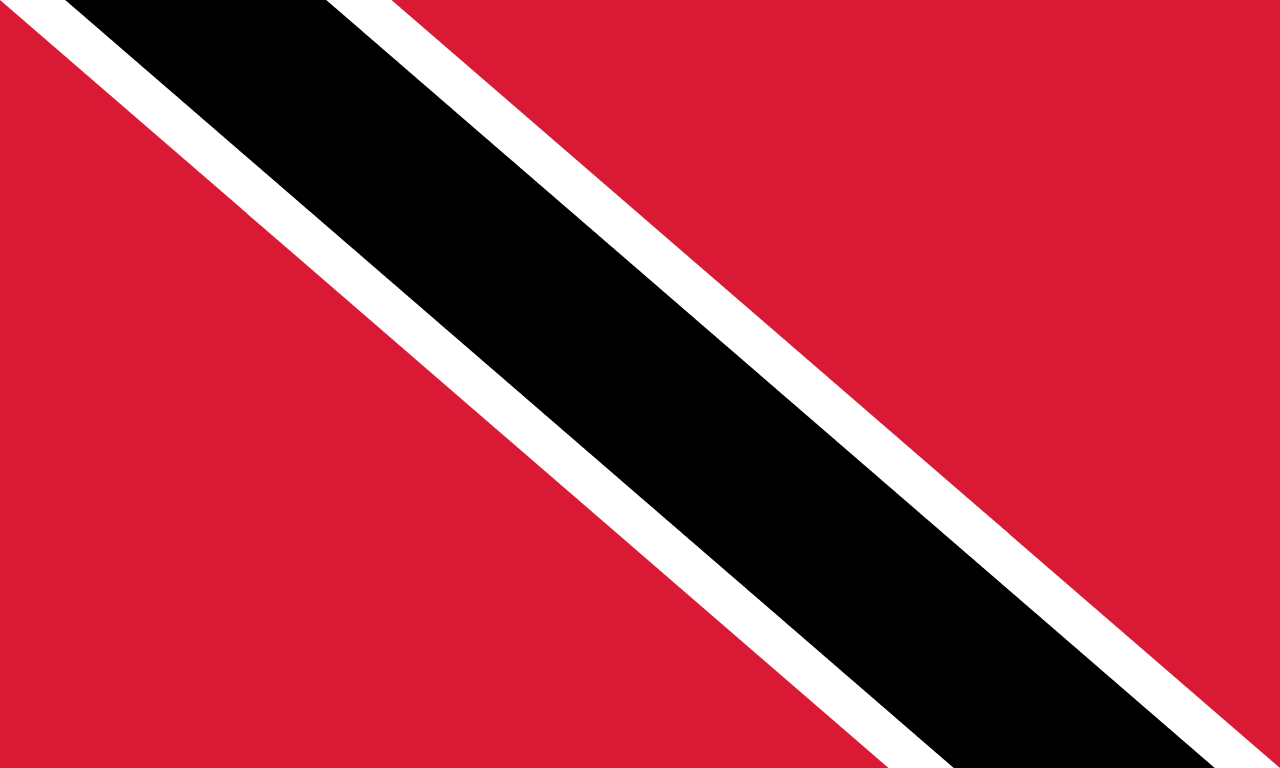
Trinidad and Tobago
A red field with a black diagonal stripe bordered by thin white stripes running from the upper hoist to the lower fly, representing the vitality of the land and people, the sea surrounding the islands, and the wealth and strength of the nation, designed by local artist Carlisle Chang.
- Adoption
- Adopted: 1962
- Continent
- Continent: North America
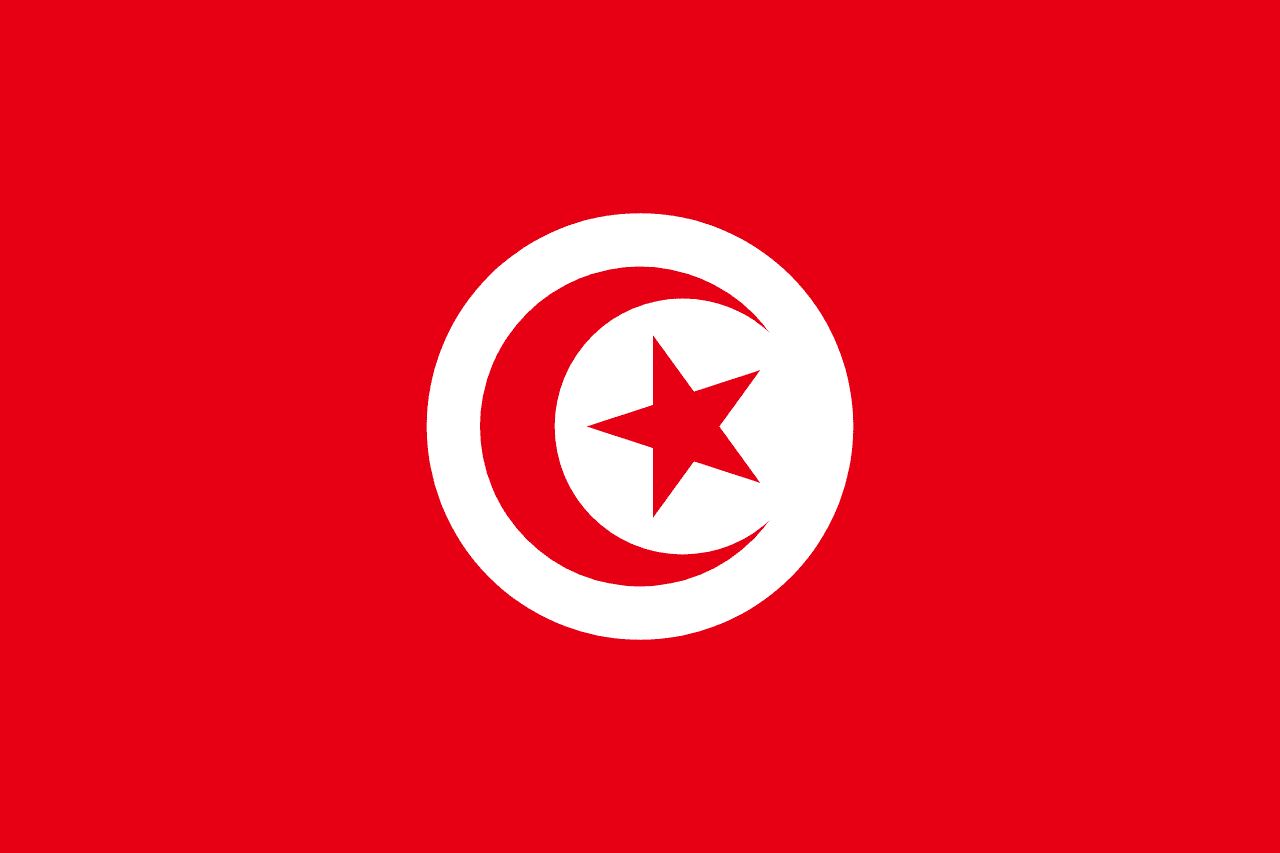
Tunisia
A red field with a white circle in the center containing a red crescent moon and five-pointed star, representing the blood shed for independence, purity and peace, Islam, and the unity of all Muslims, based on the Ottoman flag but with distinct Tunisian characteristics.
- Adoption
- Adopted: 1959
- Continent
- Continent: Africa

Turkey
The flag of Turkey is bold and simple in design with a red field with a white crescent moon and five-pointed star slightly off-center toward the hoist. This represents the blood of martyrs who died for the country, Islam, and the guidance of the state, with symbols that have ancient origins in Turkic and Ottoman traditions.
- Adoption
- Adopted: 1936
- Continent
- Continent: Asia
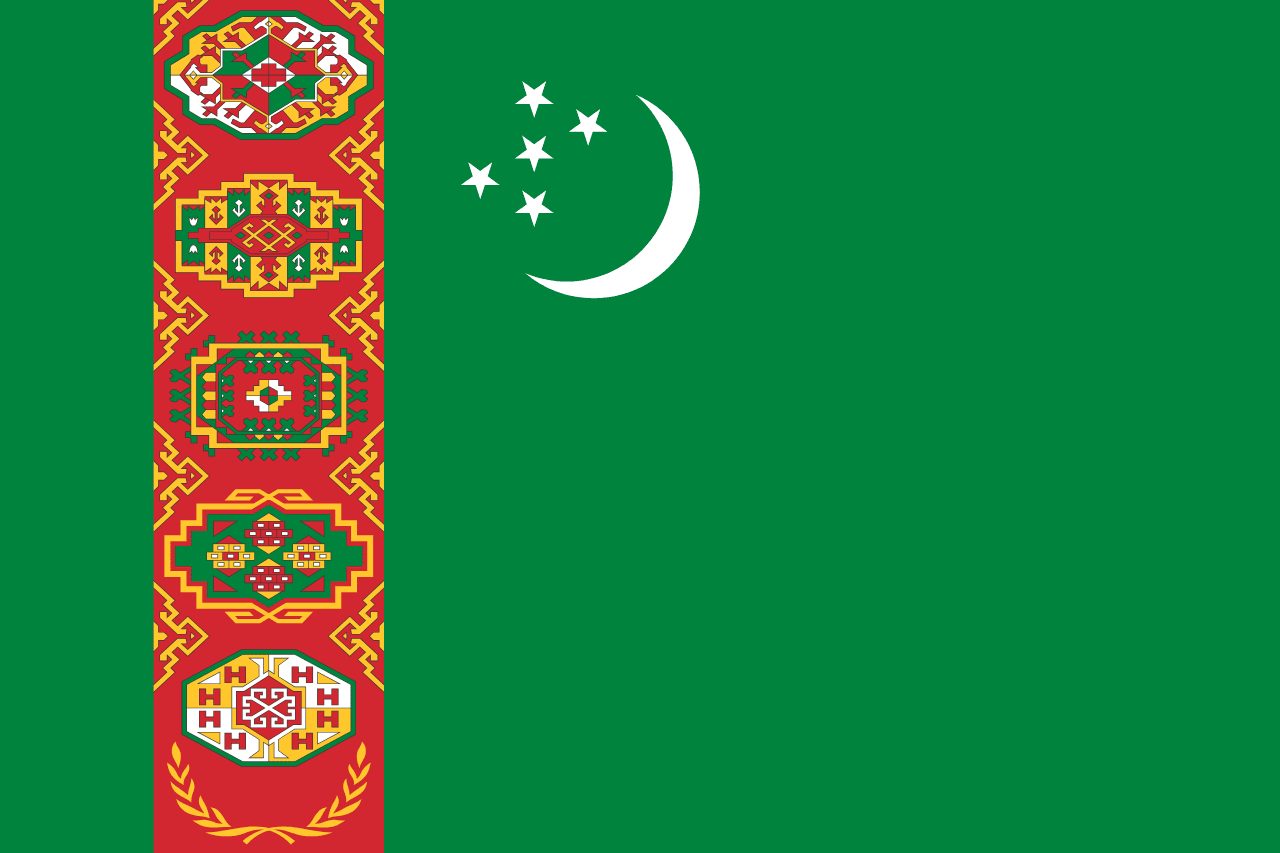
Turkmenistan
A green field with a vertical red stripe containing five traditional carpet guls (patterns) on the hoist side, and a white crescent moon with five stars in the upper left, representing Islam, the traditional carpet weaving culture, neutrality, and the five regions and senses of Turkmenistan.
- Adoption
- Adopted: 1992
- Continent
- Continent: Asia
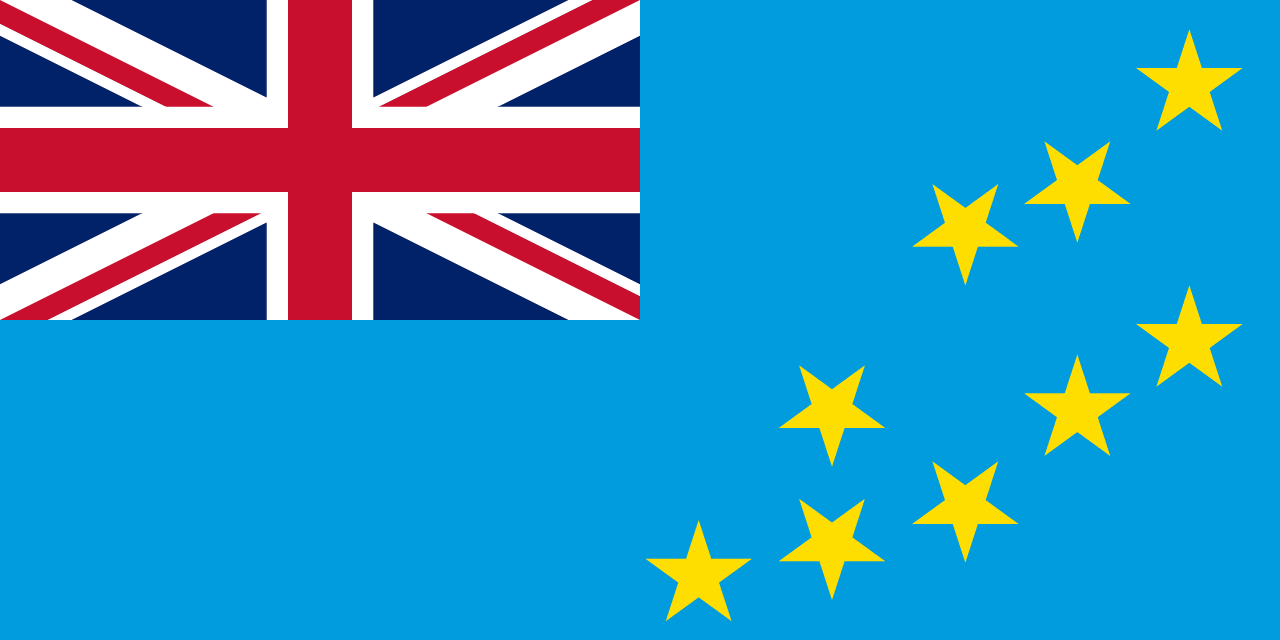
Tuvalu
A light blue field with the Union Jack in the canton and nine yellow stars representing the nine atolls of Tuvalu, symbolizing the Pacific Ocean that surrounds the islands, the historical connection to Britain, and the geographical arrangement of the island nation in the central Pacific.
- Adoption
- Adopted: 1978
- Continent
- Continent: Oceania
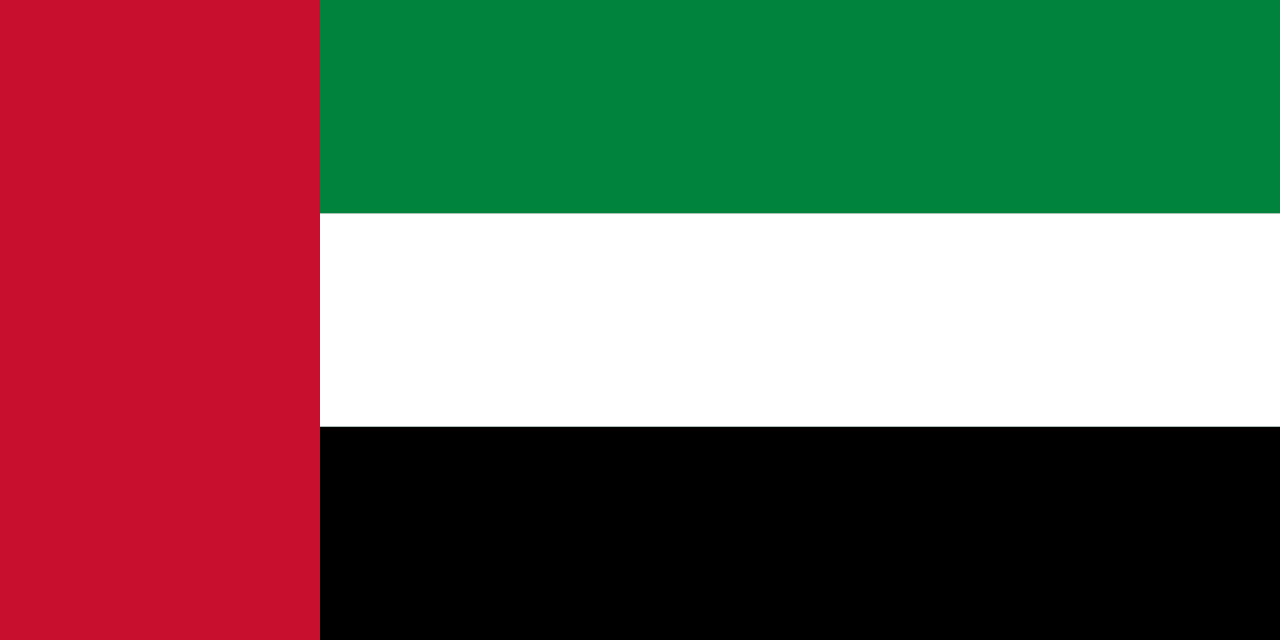
United Arab Emirates
A vertical red stripe at the hoist with three horizontal stripes of green, white, and black on the fly side, representing the Pan-Arab colors that symbolize Arab unity, fertility, peace, and the defeat of enemies, designed by a young Emirati and chosen from over 1,000 submissions.
- Adoption
- Adopted: 1971
- Continent
- Continent: Asia
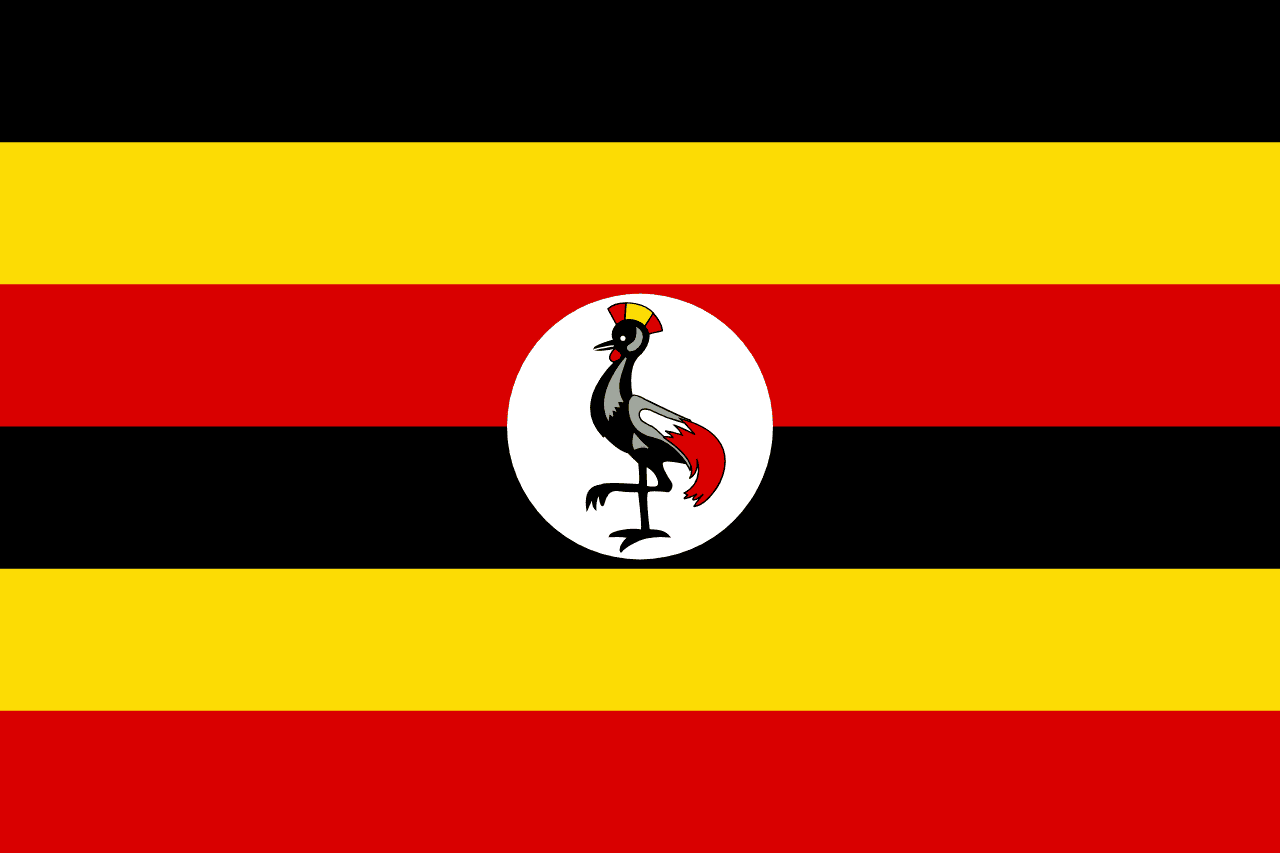
Uganda
Six horizontal stripes alternating black, yellow, and red (repeated twice) with a white circle containing the grey crowned crane in the center, representing the African people, sunshine and prosperity, brotherhood and unity, and the national bird that symbolizes Uganda's forward movement.
- Adoption
- Adopted: 1962
- Continent
- Continent: Africa
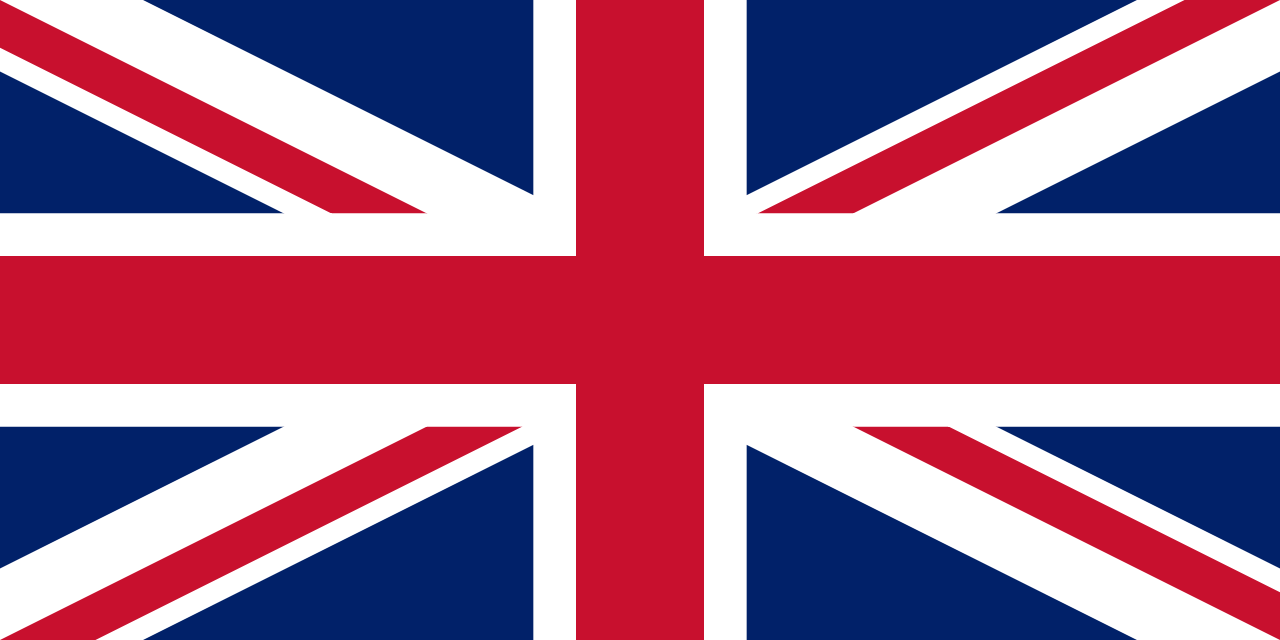
United Kingdom
The Union Jack combines the crosses of Saint George (England), Saint Andrew (Scotland), and Saint Patrick (Ireland) on a blue field, representing the political union of England, Scotland, and Ireland under one crown, though Wales is not directly represented in the flag design.
- Adoption
- Adopted: 1801
- Continent
- Continent: Europe

Ukraine
Two horizontal bands of blue over yellow, representing the blue sky over golden wheat fields that symbolize Ukraine as the 'breadbasket of Europe,' with colors that have represented Ukrainian identity for centuries and were officially adopted after independence from the Soviet Union.
- Adoption
- Adopted: 1992
- Continent
- Continent: Europe
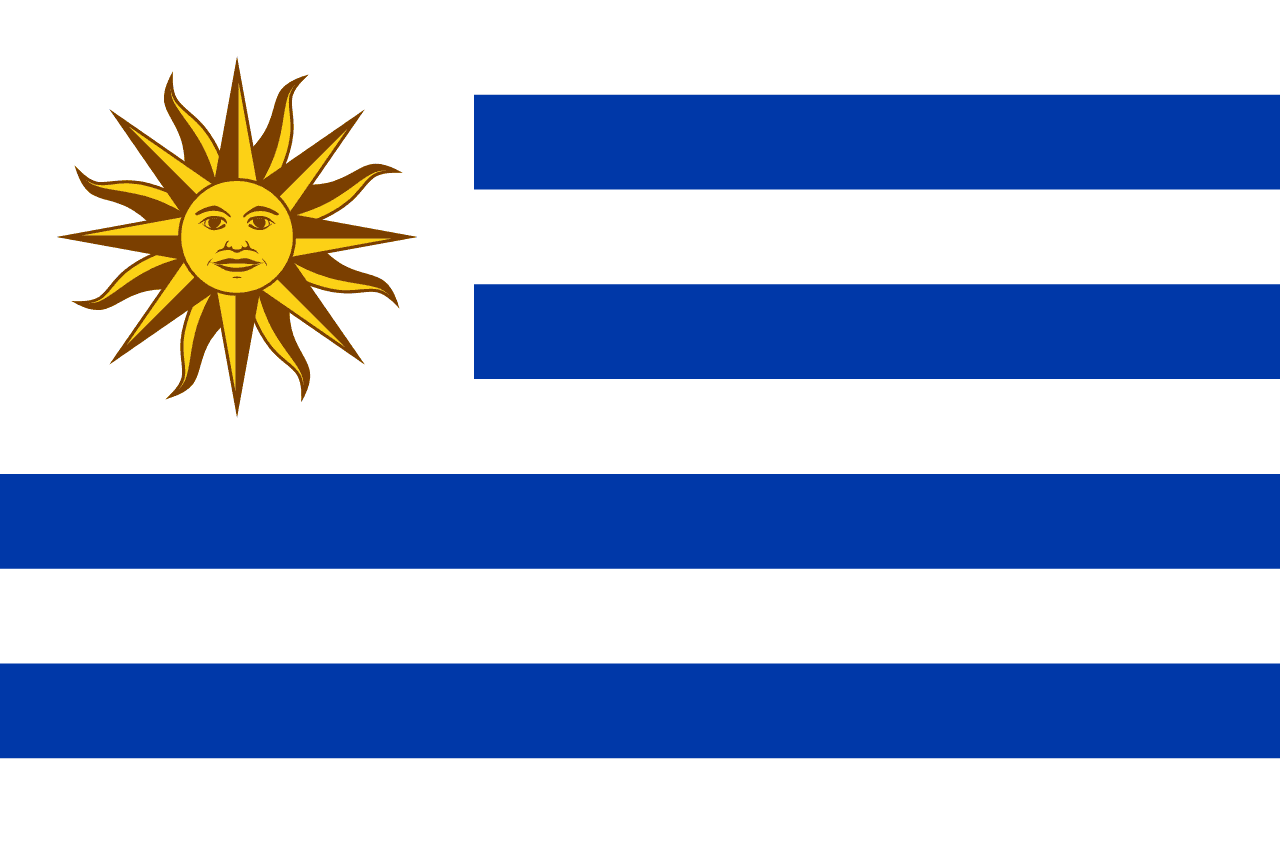
Uruguay
Nine alternating horizontal stripes of blue and white with a golden sun (Sol de Mayo) in the upper left canton, representing the nine original departments of Uruguay, the clear skies and peace, and the May Revolution that inspired South American independence movements.
- Adoption
- Adopted: 1828
- Continent
- Continent: South America
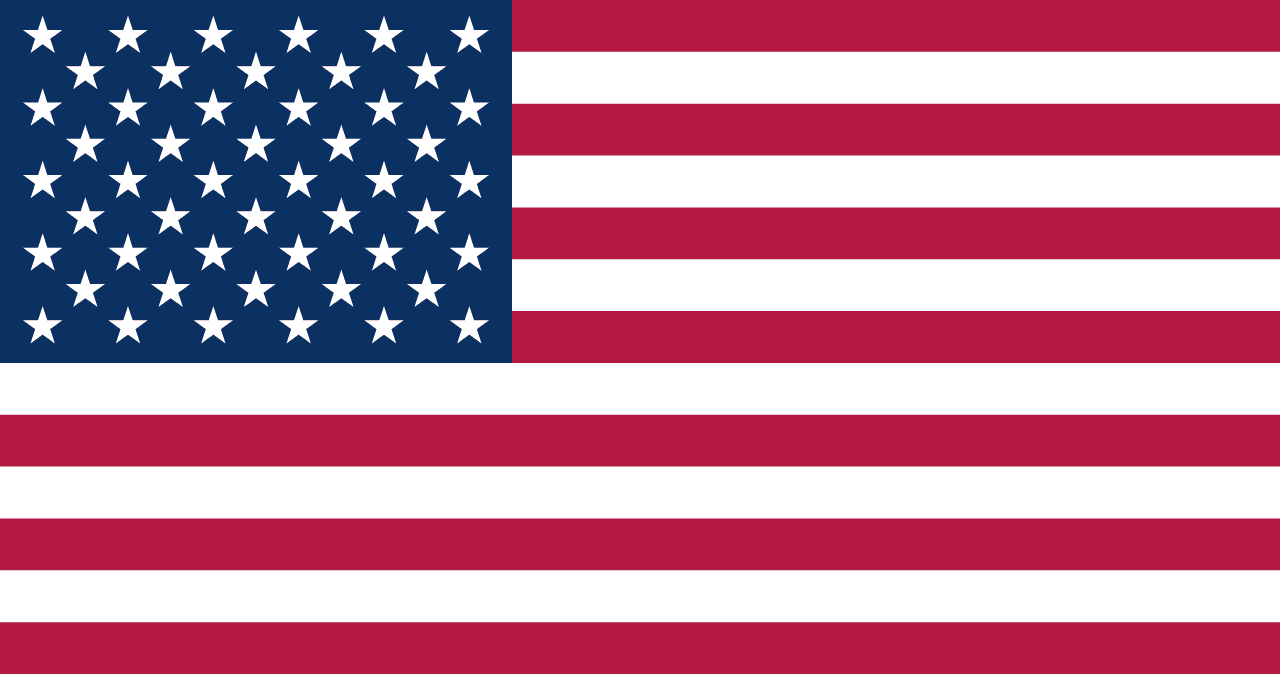
United States
Stars and stripes representing the states and original colonies that founded America.
- Adoption
- Adopted: 1960
- Continent
- Continent: North America
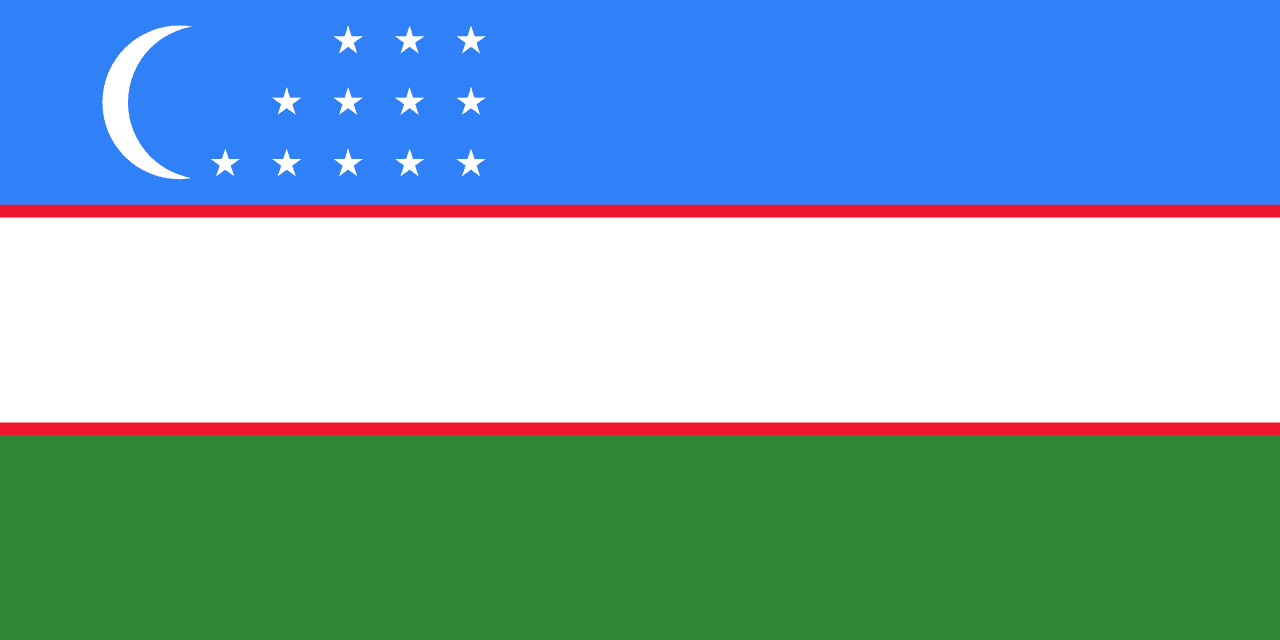
Uzbekistan
Three horizontal stripes of blue, white, and green separated by thin red stripes, with a white crescent moon and twelve white stars on the blue stripe, representing the sky and water, peace and purity, nature and fertility, the life force, the rebirth of Uzbekistan, and the twelve months of the year.
- Adoption
- Adopted: 1991
- Continent
- Continent: Asia
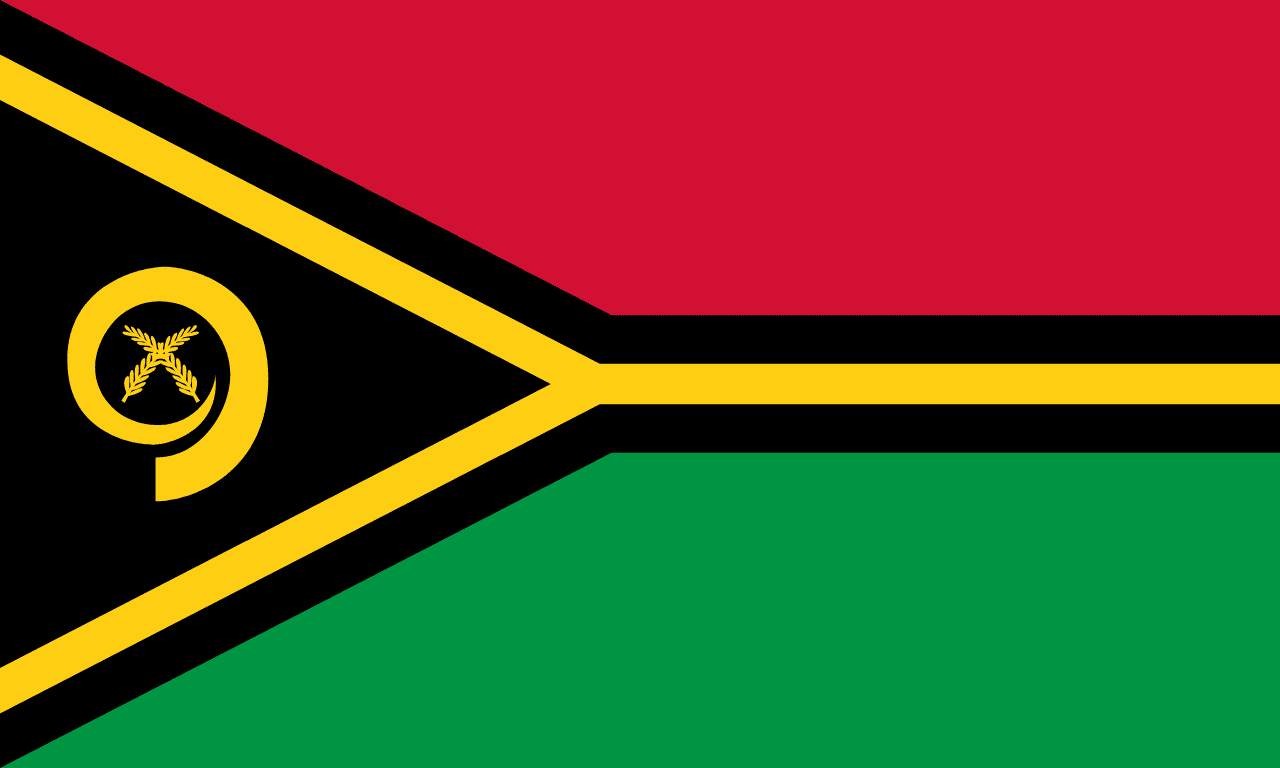
Vanuatu
Red and green horizontal bands separated by a black stripe edged in yellow, with a yellow Y-shape extending from the hoist containing a boar's tusk and two crossed fern leaves, representing the blood of sacrifice, the rich soil, the Melanesian people, enlightenment, and traditional Melanesian values and culture.
- Adoption
- Adopted: 1980
- Continent
- Continent: Oceania
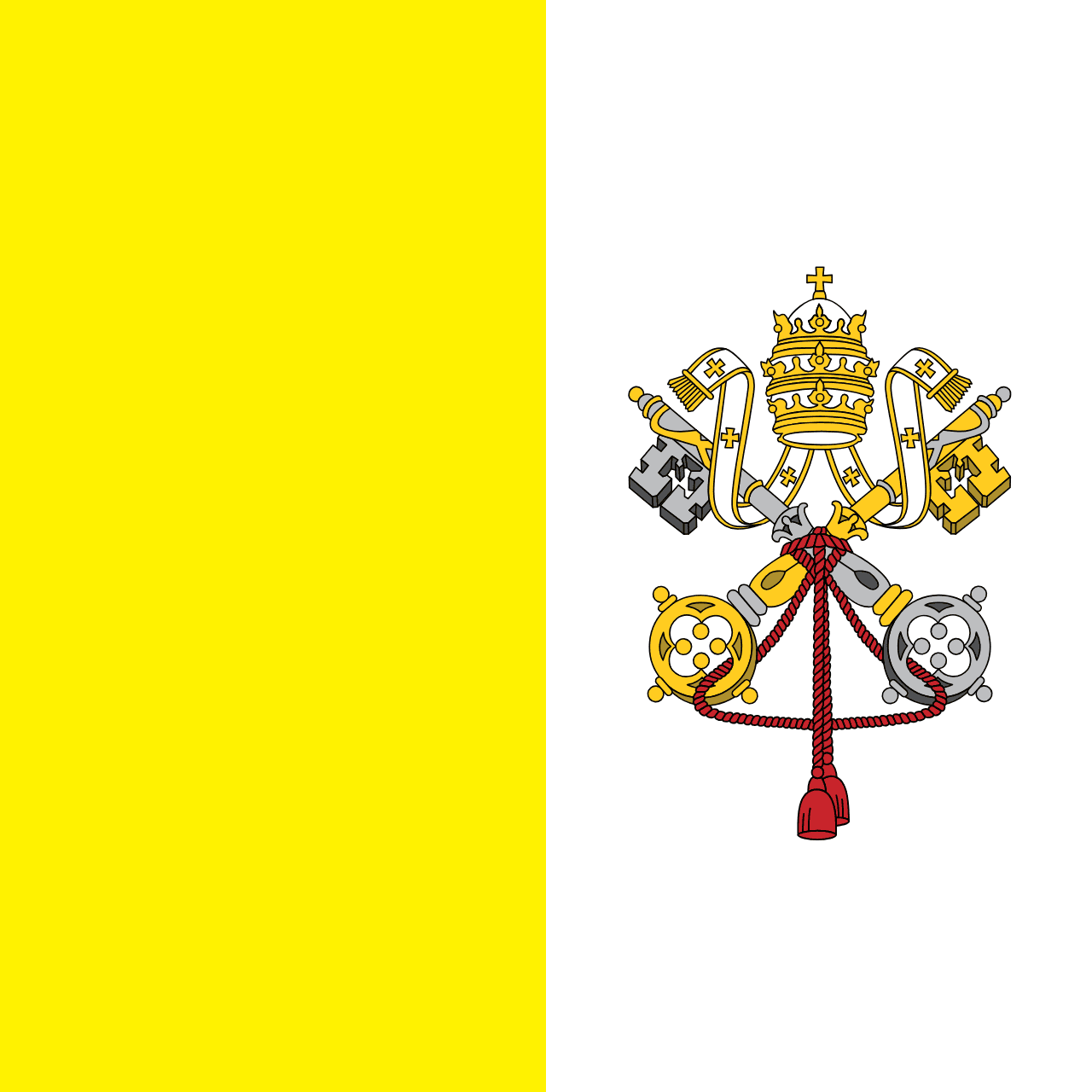
Vatican City
Two vertical bands of yellow and white with the papal coat of arms featuring crossed keys and the papal tiara on the white band, representing the temporal and spiritual power of the Pope as sovereign of the world's smallest state and leader of the global Catholic Church.
- Adoption
- Adopted: 1929
- Continent
- Continent: Europe
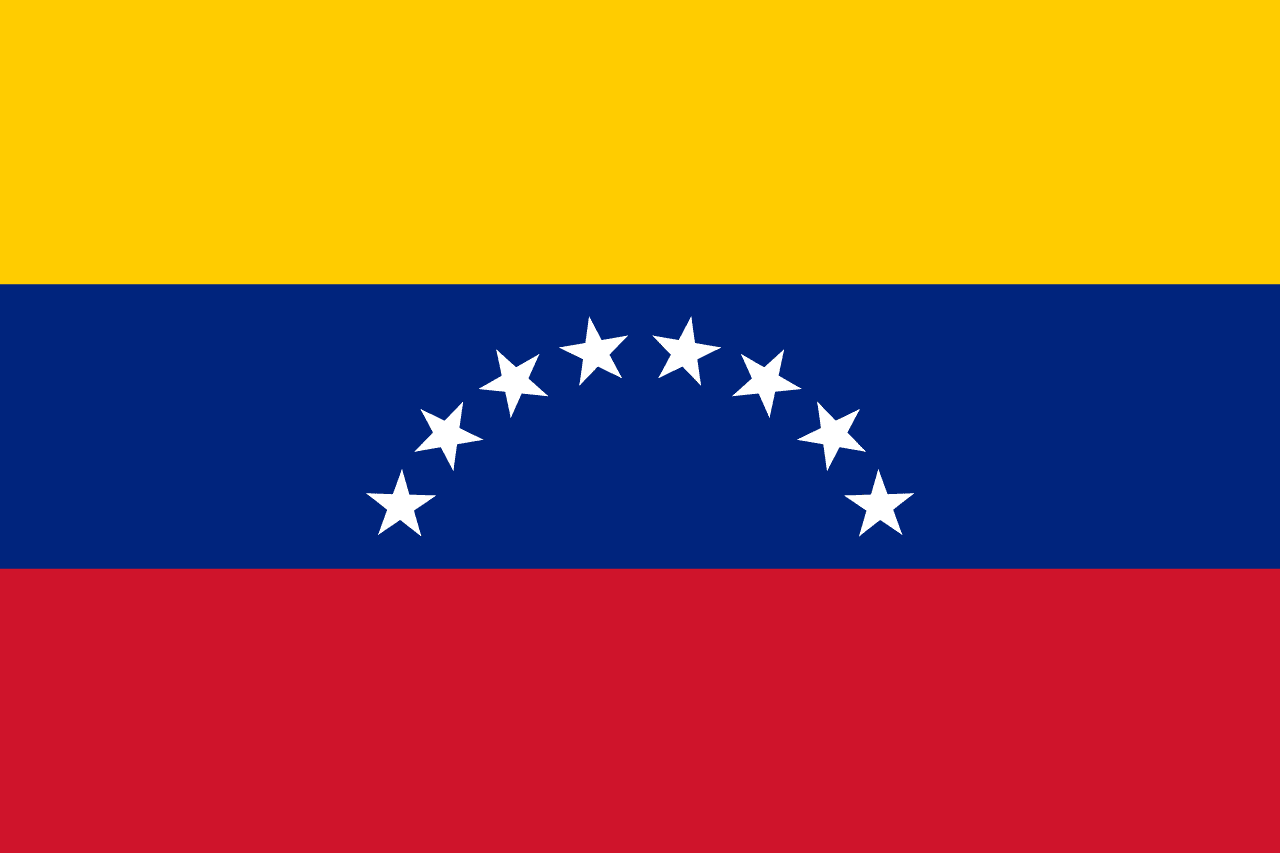
Venezuela
Three horizontal stripes of yellow, blue, and red with eight white stars in an arc on the blue stripe and the coat of arms on the upper hoist corner, representing the wealth of the land, the seas separating Venezuela from Spain, the blood shed for independence, and the eight original provinces that declared independence.
- Adoption
- Adopted: 2006
- Continent
- Continent: South America
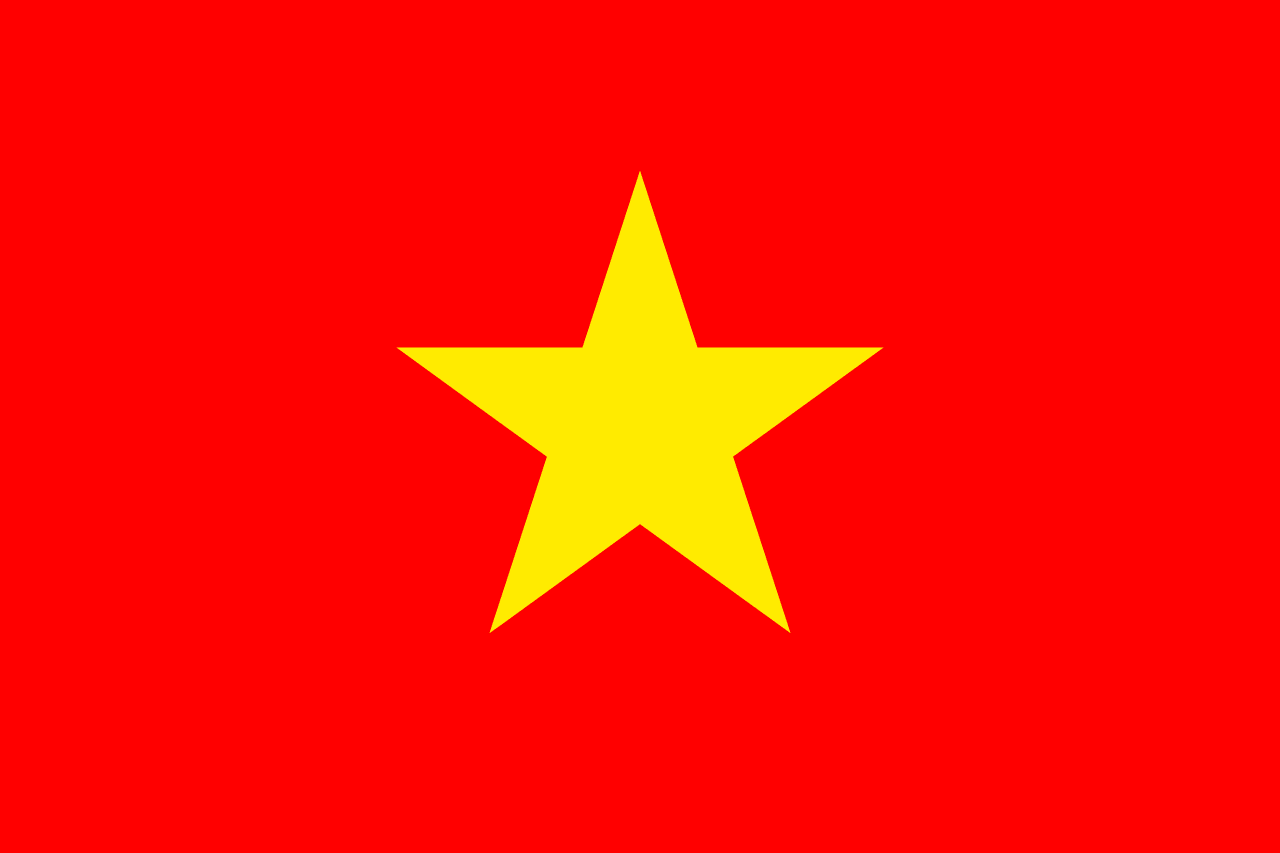
Vietnam
A red field with a large yellow five-pointed star in the center, representing the blood shed for independence and the unity of workers, peasants, intellectuals, youth, and soldiers under Communist Party leadership in the struggle for national liberation and socialist construction.
- Adoption
- Adopted: 1945
- Continent
- Continent: Asia

Wales
Y Ddraig Goch - the red dragon passant on green and white horizontal field, representing Welsh heritage and Celtic identity.
- Adoption
- Adopted: 1959
- Continent
- Continent: Europe
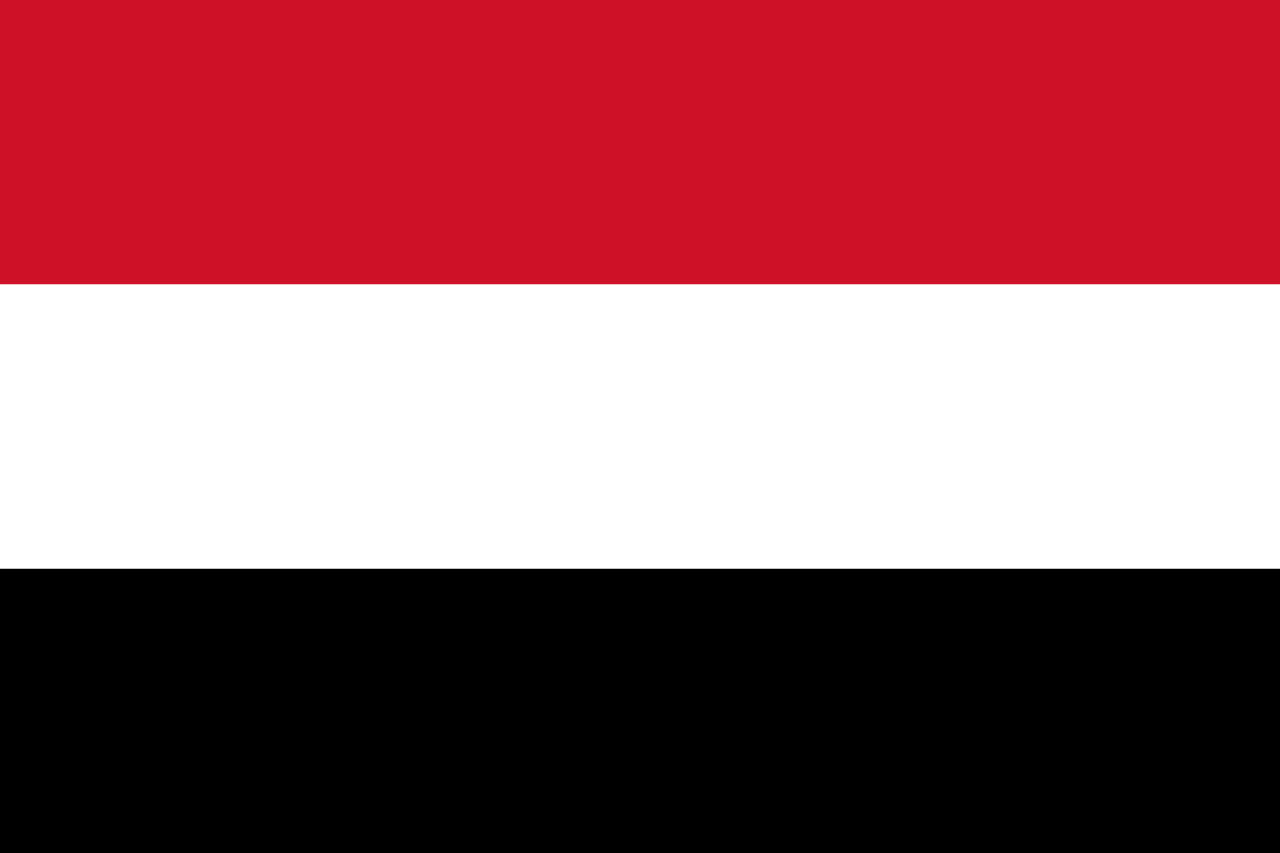
Yemen
Three horizontal stripes of red, white, and black representing the Pan-Arab colors that symbolize the bloodshed for freedom, bright future and peace, and the dark past of oppression, adopted when North and South Yemen unified into the Republic of Yemen.
- Adoption
- Adopted: 1990
- Continent
- Continent: Asia
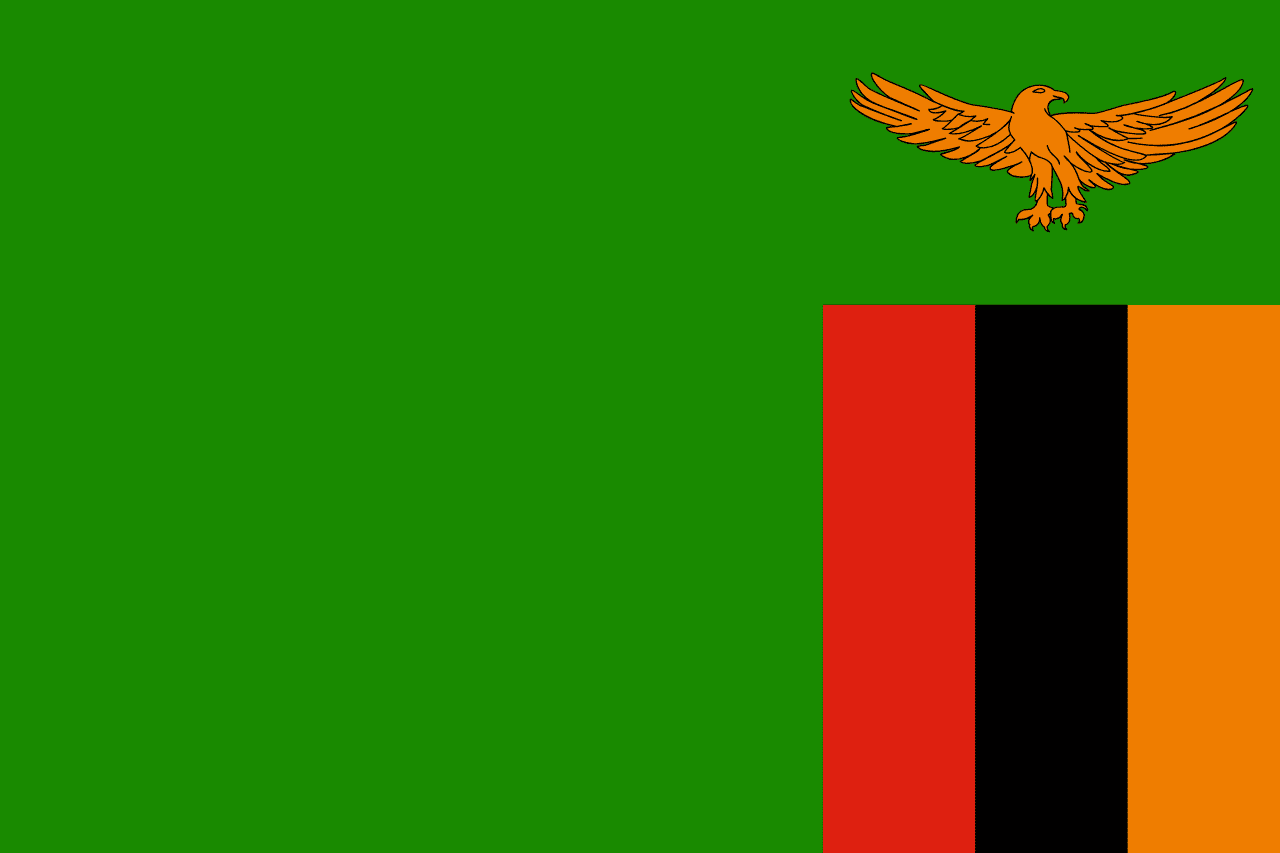
Zambia
A green field with three vertical stripes of red, black, and orange in the lower right corner and an orange eagle above the stripes, representing the country's natural wealth, the struggle for freedom, the African heritage, the mineral wealth (particularly copper), and the ability to rise above problems.
- Adoption
- Adopted: 1964
- Continent
- Continent: Africa
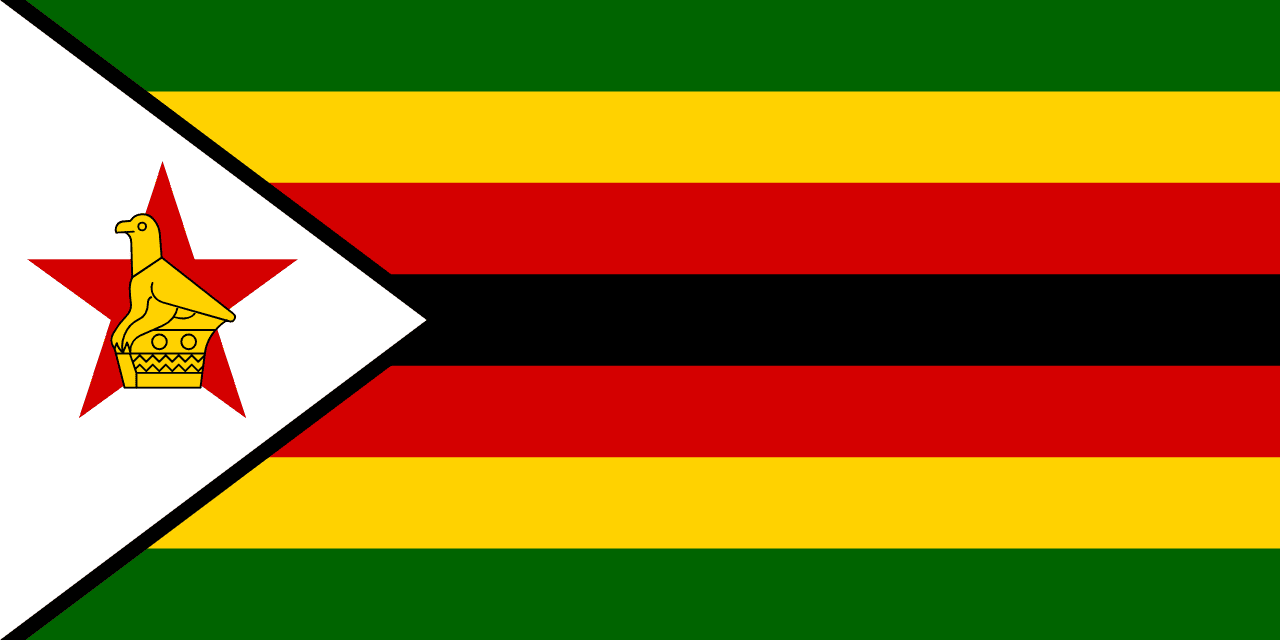
Zimbabwe
Seven horizontal stripes alternating green, yellow, red, black, red, yellow, green with a white triangle at the hoist containing a red five-pointed star and the Zimbabwe Bird, representing the nation's agricultural wealth, mineral resources, blood shed for independence, the African people, peace, and the ancient civilization of Great Zimbabwe.
- Adoption
- Adopted: 1980
- Continent
- Continent: Africa
Explainers
Evergreen articles that clarify colors, symbols, and etiquette.
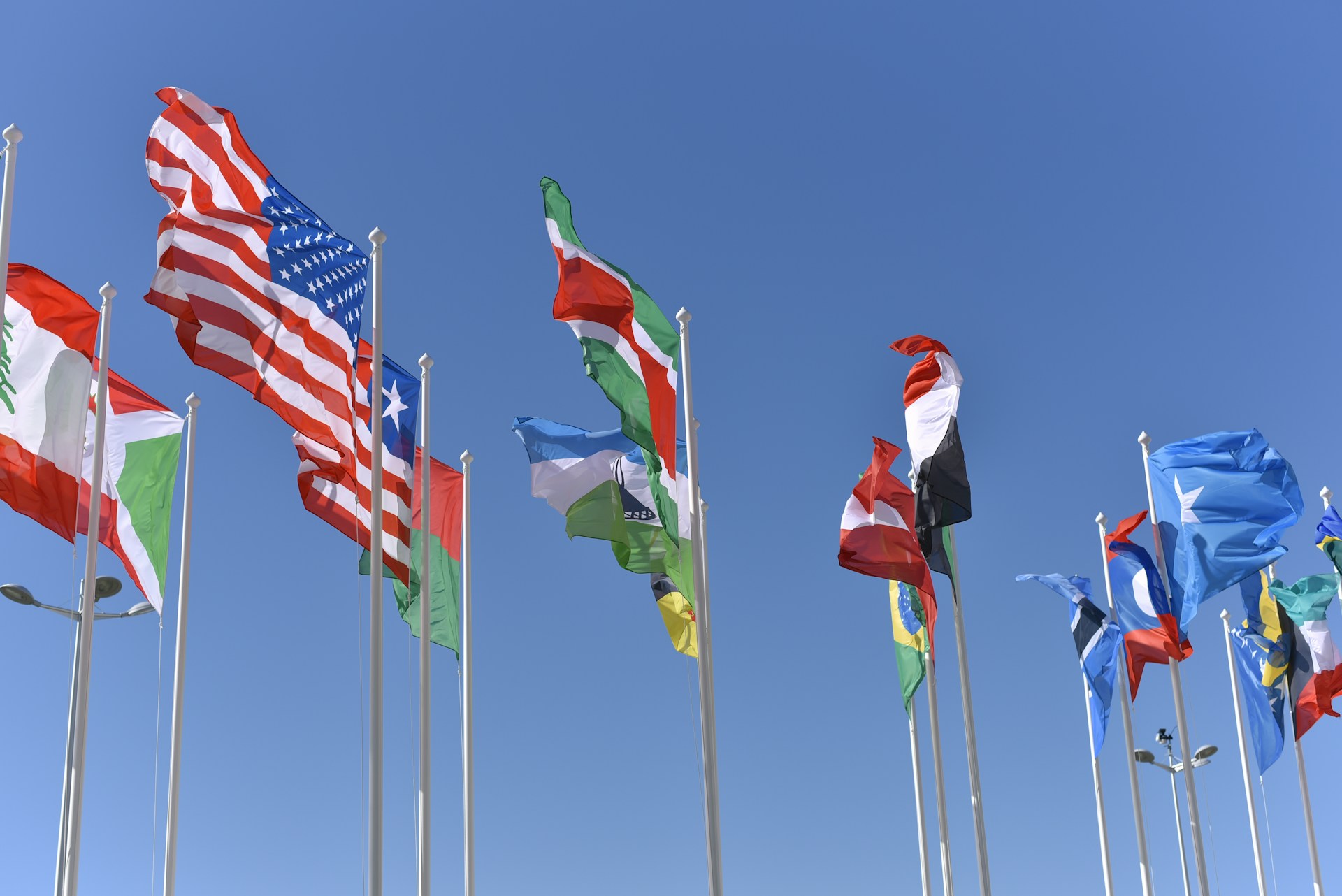
Flag Colors and What They Mean
A quick guide to common color symbolism across nations.
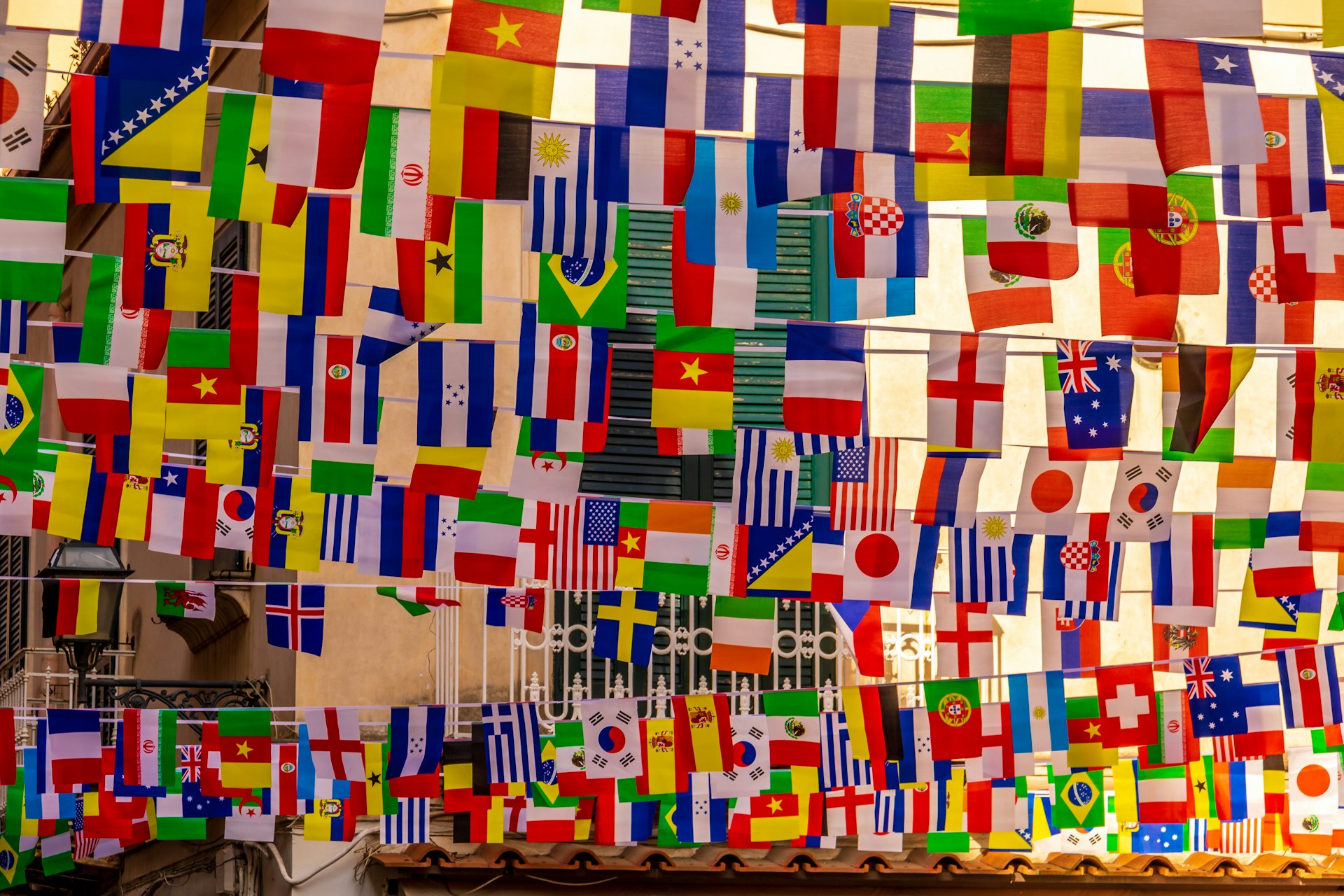
Common Symbols on Flags
Stars, crescents, crosses and their traditional meanings.
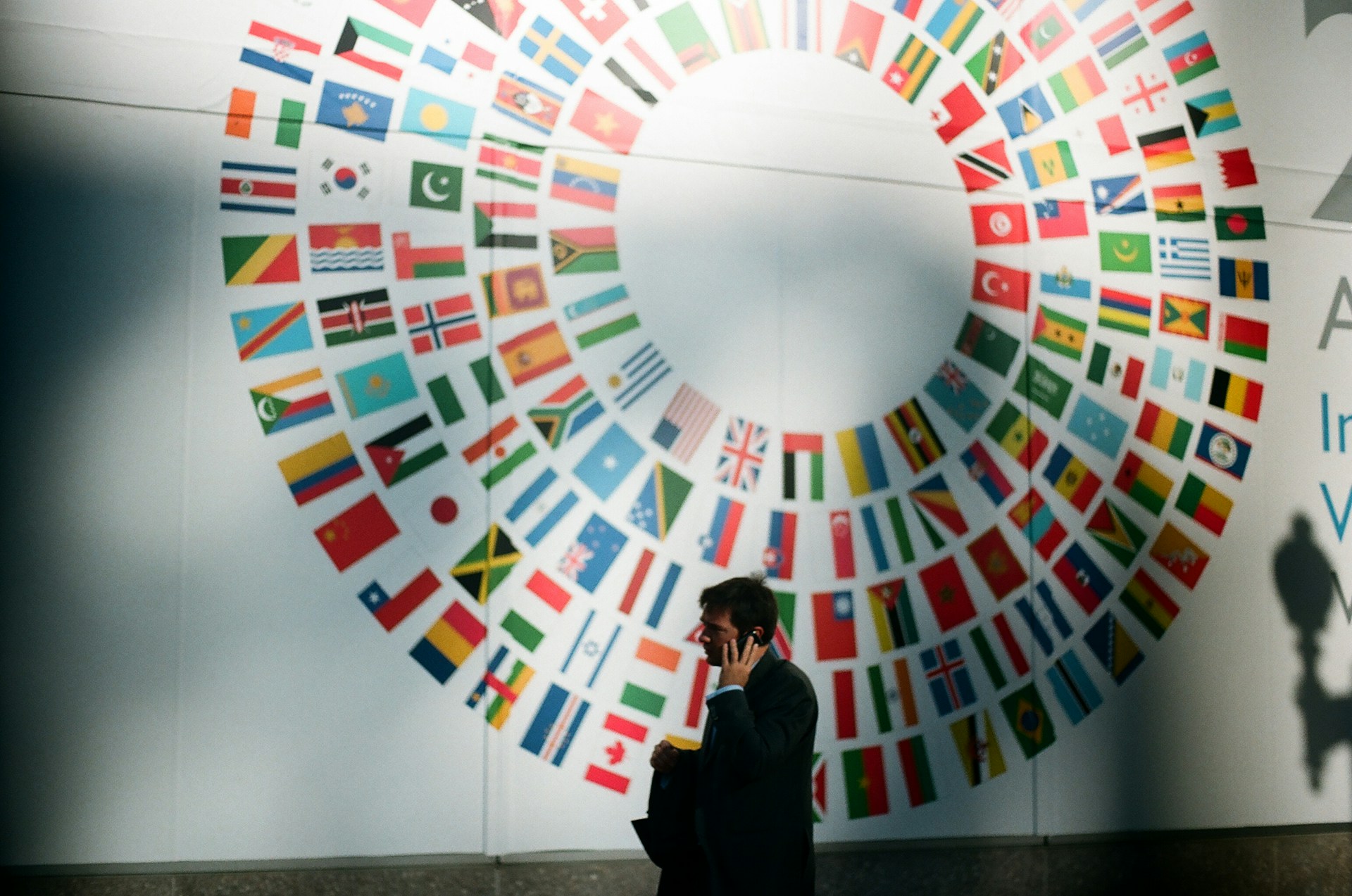
History of National Flags
From heraldry to modern national identity.

Flag Etiquette: How to Display a Flag
Respectful handling and display basics for any flag.
Resources
Trusted shops, books, and printable learning packs.
Where to Buy Quality Flags
Curated list of reputable retailers with country, size, and fabric filters.
Open guideGet new country profiles and teacher resources
Monthly, no spam. We'll send you printable worksheets and updates to new flag explainers.
